Quick filters:
Resist dyeing Stock Photos and Images
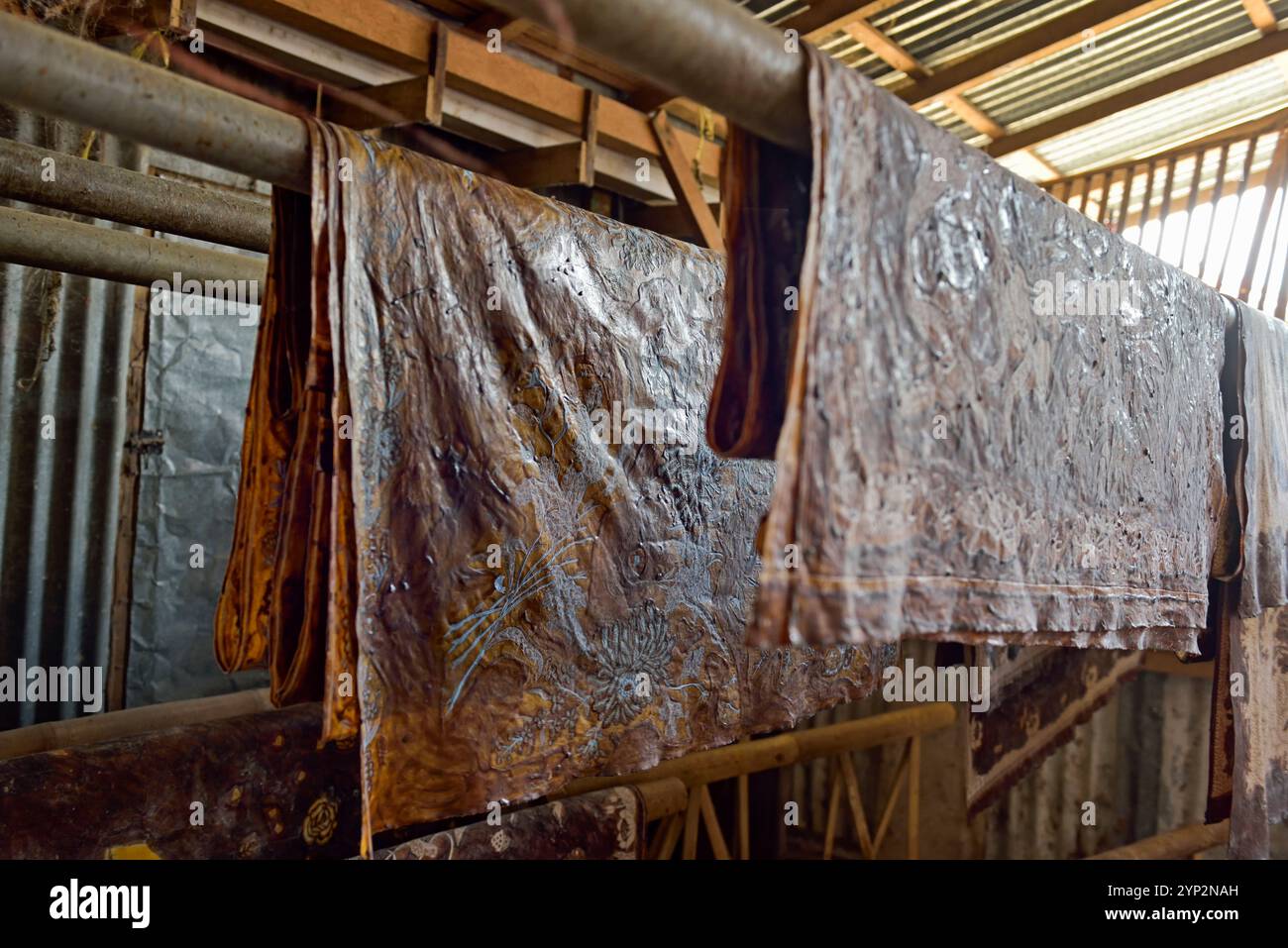 Cloth coated with wax-resist dyeing, Oey Soe Tjoen Batik factory, Pekalongan, Java island, Indonesia, Southeast Asia, Asia Stock Photohttps://www.alamy.com/image-license-details/?v=1https://www.alamy.com/cloth-coated-with-wax-resist-dyeing-oey-soe-tjoen-batik-factory-pekalongan-java-island-indonesia-southeast-asia-asia-image633156345.html
Cloth coated with wax-resist dyeing, Oey Soe Tjoen Batik factory, Pekalongan, Java island, Indonesia, Southeast Asia, Asia Stock Photohttps://www.alamy.com/image-license-details/?v=1https://www.alamy.com/cloth-coated-with-wax-resist-dyeing-oey-soe-tjoen-batik-factory-pekalongan-java-island-indonesia-southeast-asia-asia-image633156345.htmlRF2YP2NAH–Cloth coated with wax-resist dyeing, Oey Soe Tjoen Batik factory, Pekalongan, Java island, Indonesia, Southeast Asia, Asia
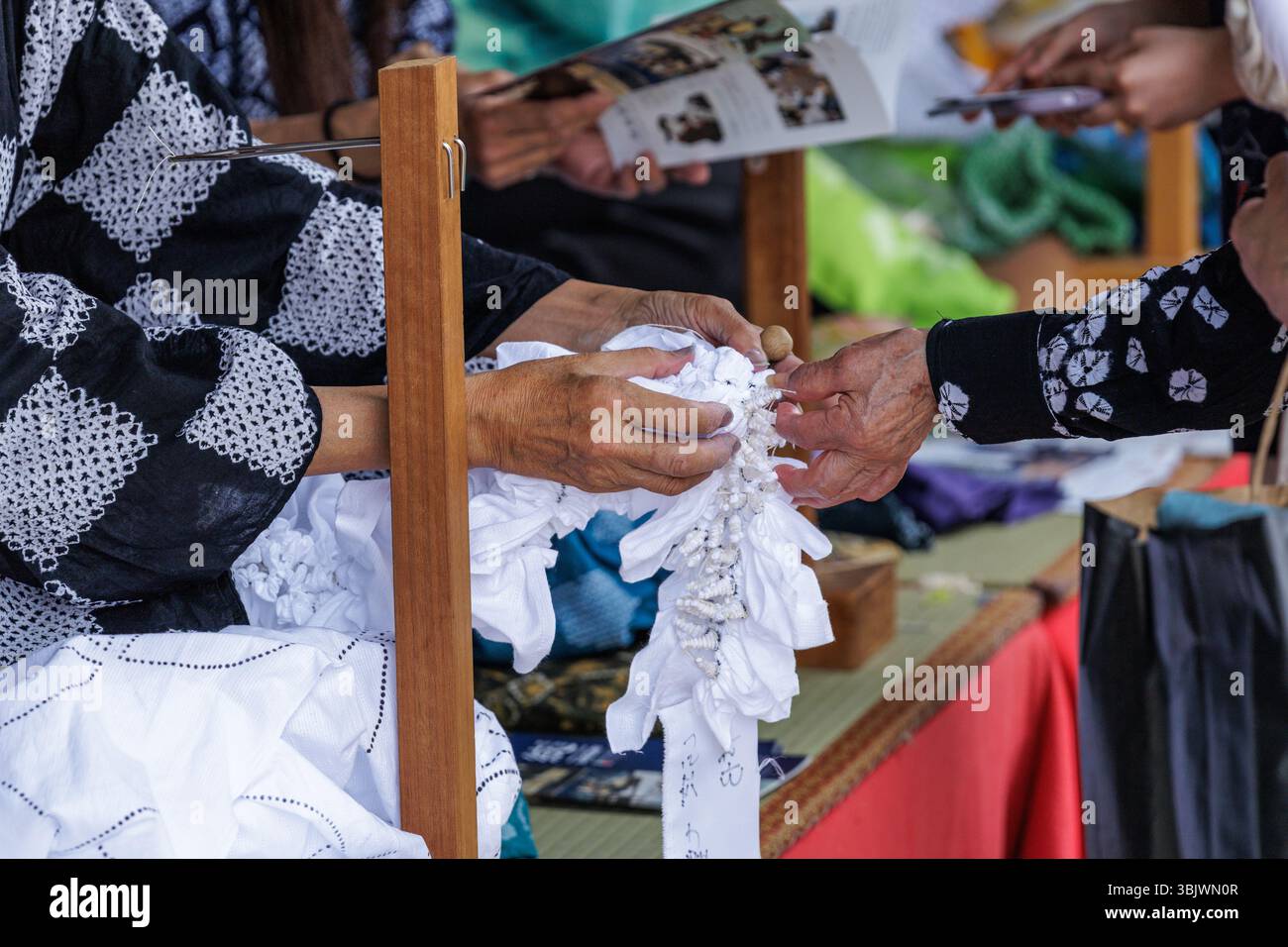 Artisan engages in tying cone shaped knots into fabric used in traditional Japanese Arimatsu-shibori resist-dyeing as part of workshop at festival. Stock Photohttps://www.alamy.com/image-license-details/?v=1https://www.alamy.com/artisan-engages-in-tying-cone-shaped-knots-into-fabric-used-in-traditional-japanese-arimatsu-shibori-resist-dyeing-as-part-of-workshop-at-festival-image682833447.html
Artisan engages in tying cone shaped knots into fabric used in traditional Japanese Arimatsu-shibori resist-dyeing as part of workshop at festival. Stock Photohttps://www.alamy.com/image-license-details/?v=1https://www.alamy.com/artisan-engages-in-tying-cone-shaped-knots-into-fabric-used-in-traditional-japanese-arimatsu-shibori-resist-dyeing-as-part-of-workshop-at-festival-image682833447.htmlRF3BJWN0R–Artisan engages in tying cone shaped knots into fabric used in traditional Japanese Arimatsu-shibori resist-dyeing as part of workshop at festival.
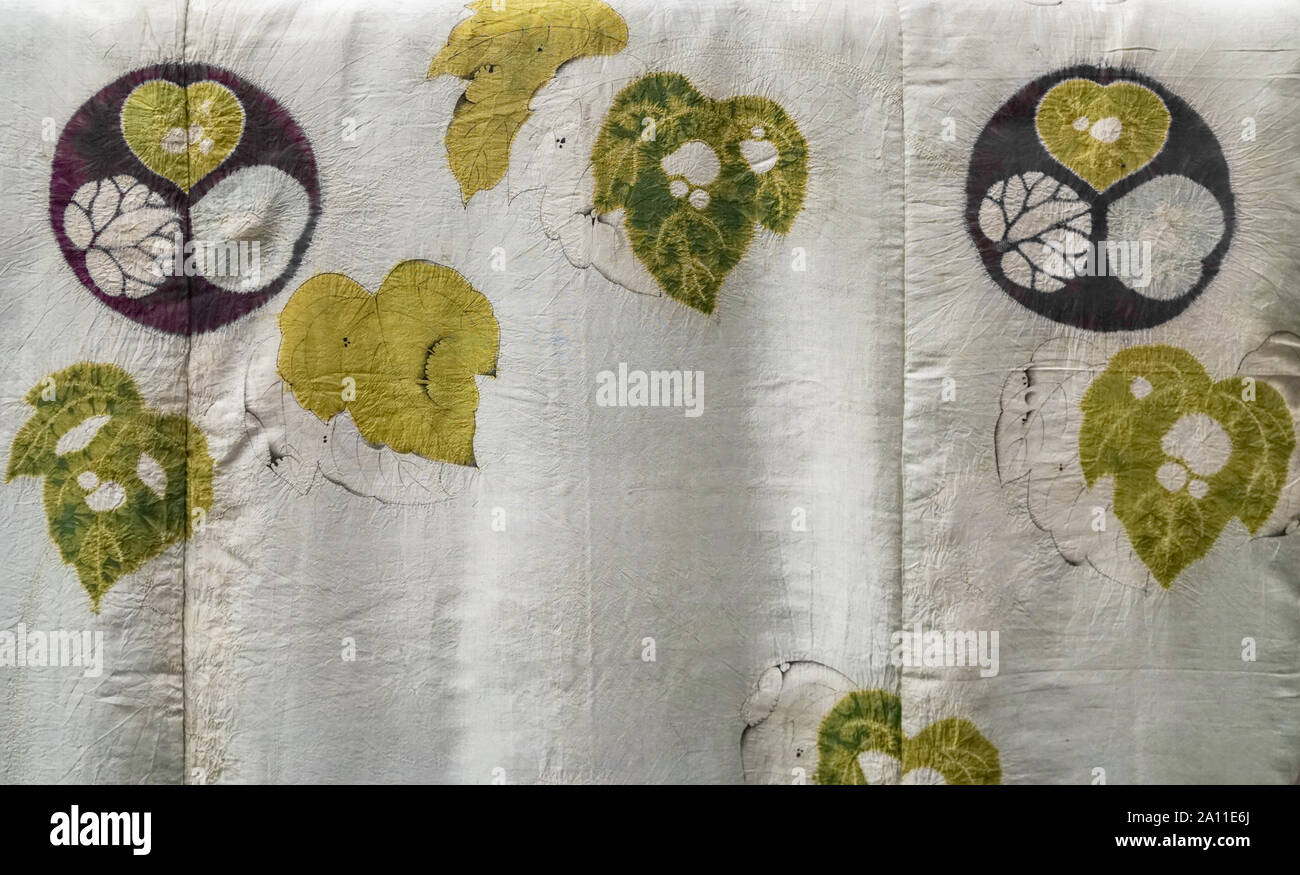 Shibori dyeing: dobuku (robe) with aoi crest and ivy motif, Azuchi Momoyama period (16th to 17th century) Nui shime shibori technique fabric (detail) Stock Photohttps://www.alamy.com/image-license-details/?v=1https://www.alamy.com/shibori-dyeing-dobuku-robe-with-aoi-crest-and-ivy-motif-azuchi-momoyama-period-16th-to-17th-century-nui-shime-shibori-technique-fabric-detail-image327644762.html
Shibori dyeing: dobuku (robe) with aoi crest and ivy motif, Azuchi Momoyama period (16th to 17th century) Nui shime shibori technique fabric (detail) Stock Photohttps://www.alamy.com/image-license-details/?v=1https://www.alamy.com/shibori-dyeing-dobuku-robe-with-aoi-crest-and-ivy-motif-azuchi-momoyama-period-16th-to-17th-century-nui-shime-shibori-technique-fabric-detail-image327644762.htmlRF2A11E6J–Shibori dyeing: dobuku (robe) with aoi crest and ivy motif, Azuchi Momoyama period (16th to 17th century) Nui shime shibori technique fabric (detail)
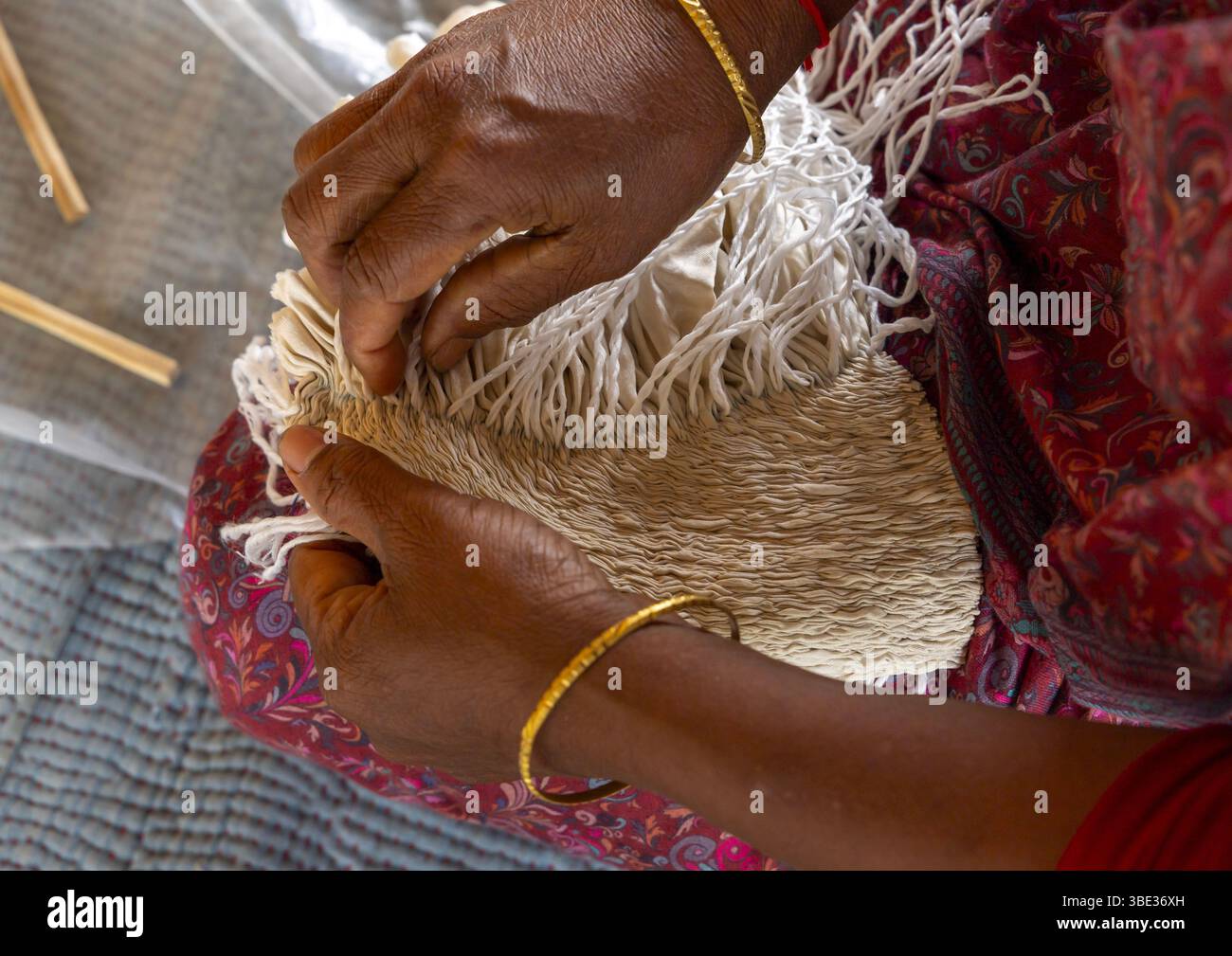 Shawl made with tie-dye resist dyeing technique in Living Blue, Rangpur Division, Goalpara, Bangladesh Stock Photohttps://www.alamy.com/image-license-details/?v=1https://www.alamy.com/shawl-made-with-tie-dye-resist-dyeing-technique-in-living-blue-rangpur-division-goalpara-bangladesh-image679880841.html
Shawl made with tie-dye resist dyeing technique in Living Blue, Rangpur Division, Goalpara, Bangladesh Stock Photohttps://www.alamy.com/image-license-details/?v=1https://www.alamy.com/shawl-made-with-tie-dye-resist-dyeing-technique-in-living-blue-rangpur-division-goalpara-bangladesh-image679880841.htmlRM3BE36XH–Shawl made with tie-dye resist dyeing technique in Living Blue, Rangpur Division, Goalpara, Bangladesh
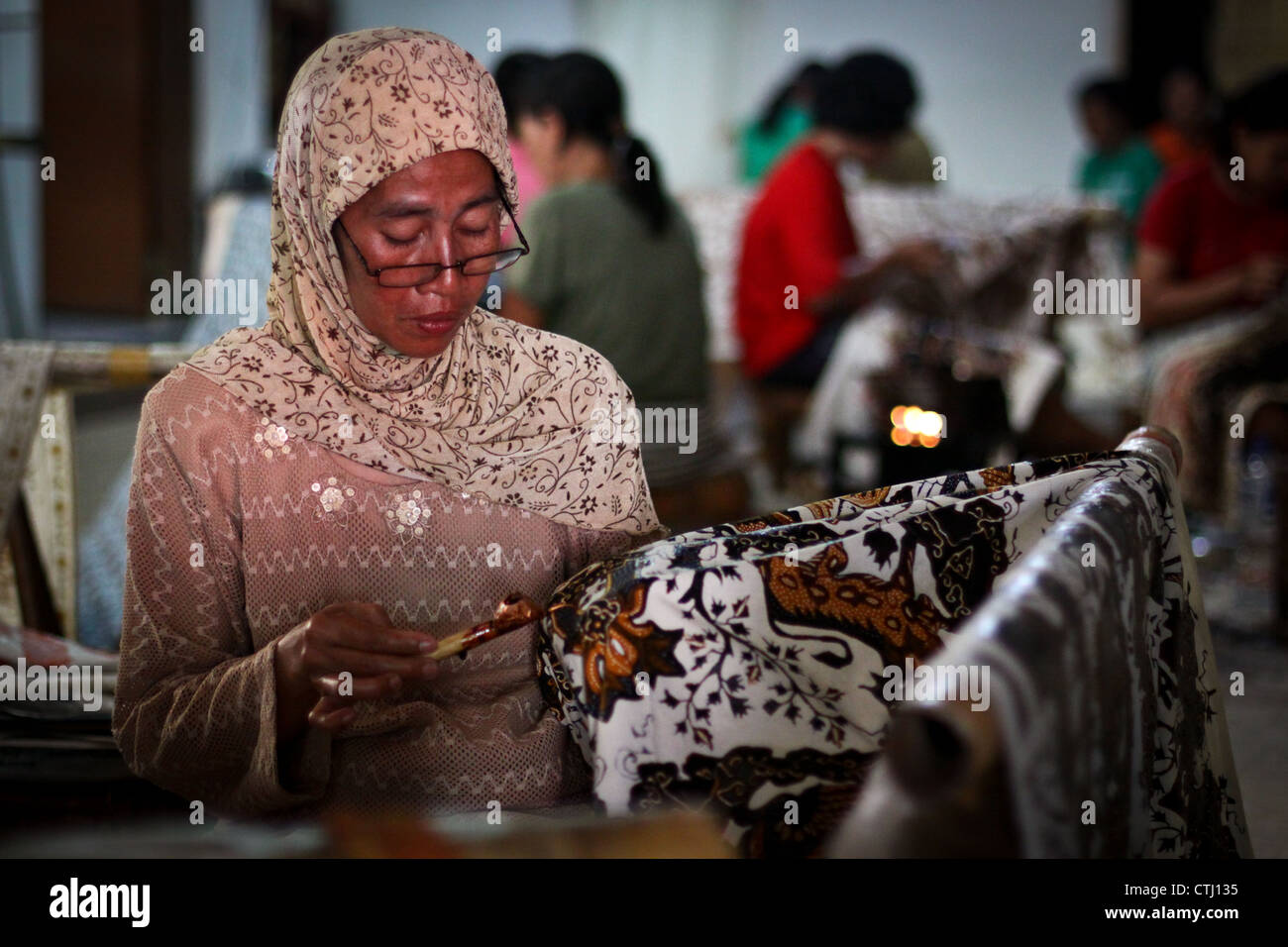 Batik is a cloth that is traditionally made using a manual wax-resist dyeing technique Stock Photohttps://www.alamy.com/image-license-details/?v=1https://www.alamy.com/stock-photo-batik-is-a-cloth-that-is-traditionally-made-using-a-manual-wax-resist-49568489.html
Batik is a cloth that is traditionally made using a manual wax-resist dyeing technique Stock Photohttps://www.alamy.com/image-license-details/?v=1https://www.alamy.com/stock-photo-batik-is-a-cloth-that-is-traditionally-made-using-a-manual-wax-resist-49568489.htmlRMCTJ135–Batik is a cloth that is traditionally made using a manual wax-resist dyeing technique
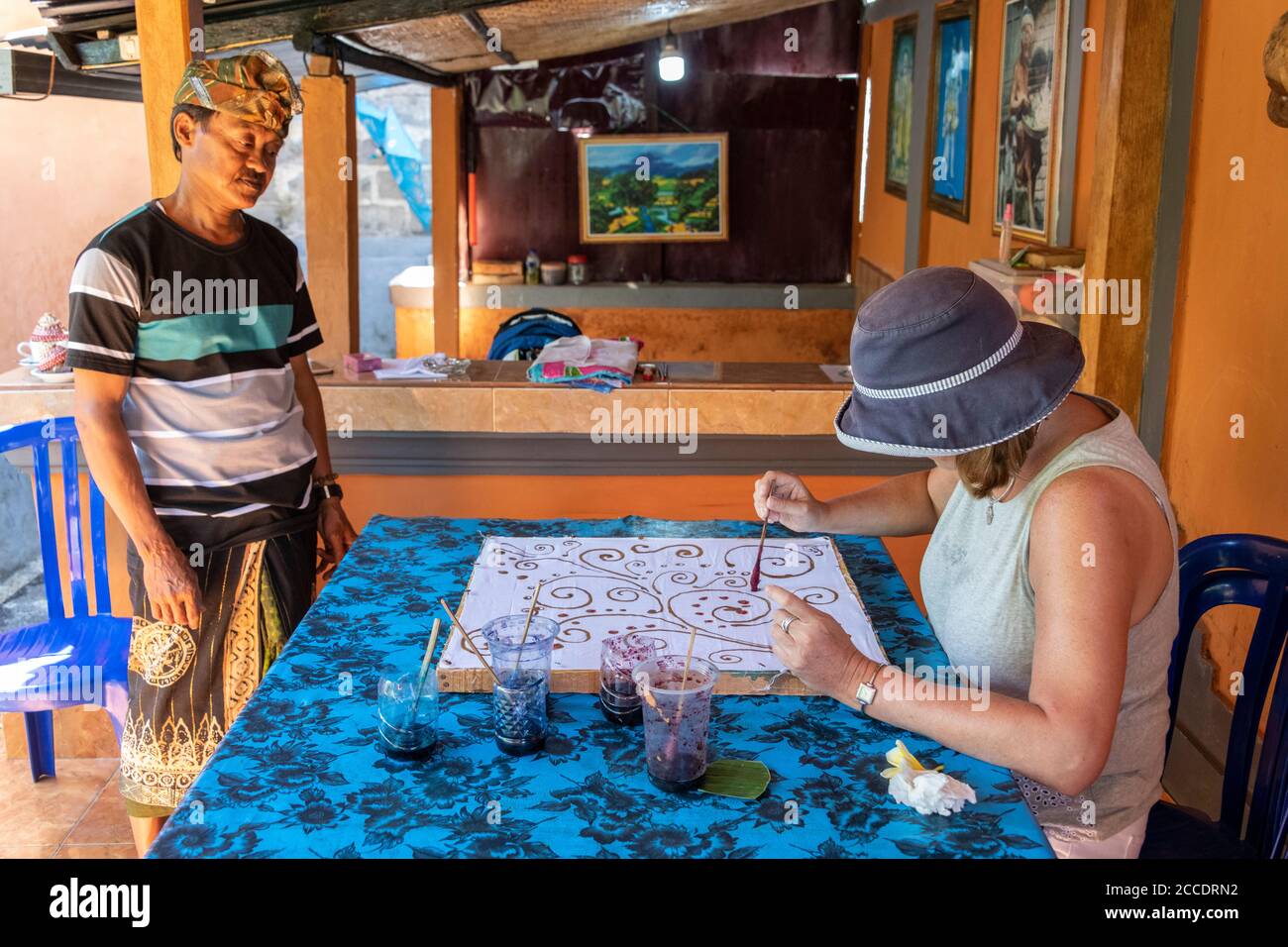 Batik is an traditional Balinese art technique of wax-resist dyeing applied to whole cloth. This technique originated from Java but has become popular Stock Photohttps://www.alamy.com/image-license-details/?v=1https://www.alamy.com/batik-is-an-traditional-balinese-art-technique-of-wax-resist-dyeing-applied-to-whole-cloth-this-technique-originated-from-java-but-has-become-popular-image369097598.html
Batik is an traditional Balinese art technique of wax-resist dyeing applied to whole cloth. This technique originated from Java but has become popular Stock Photohttps://www.alamy.com/image-license-details/?v=1https://www.alamy.com/batik-is-an-traditional-balinese-art-technique-of-wax-resist-dyeing-applied-to-whole-cloth-this-technique-originated-from-java-but-has-become-popular-image369097598.htmlRF2CCDRN2–Batik is an traditional Balinese art technique of wax-resist dyeing applied to whole cloth. This technique originated from Java but has become popular
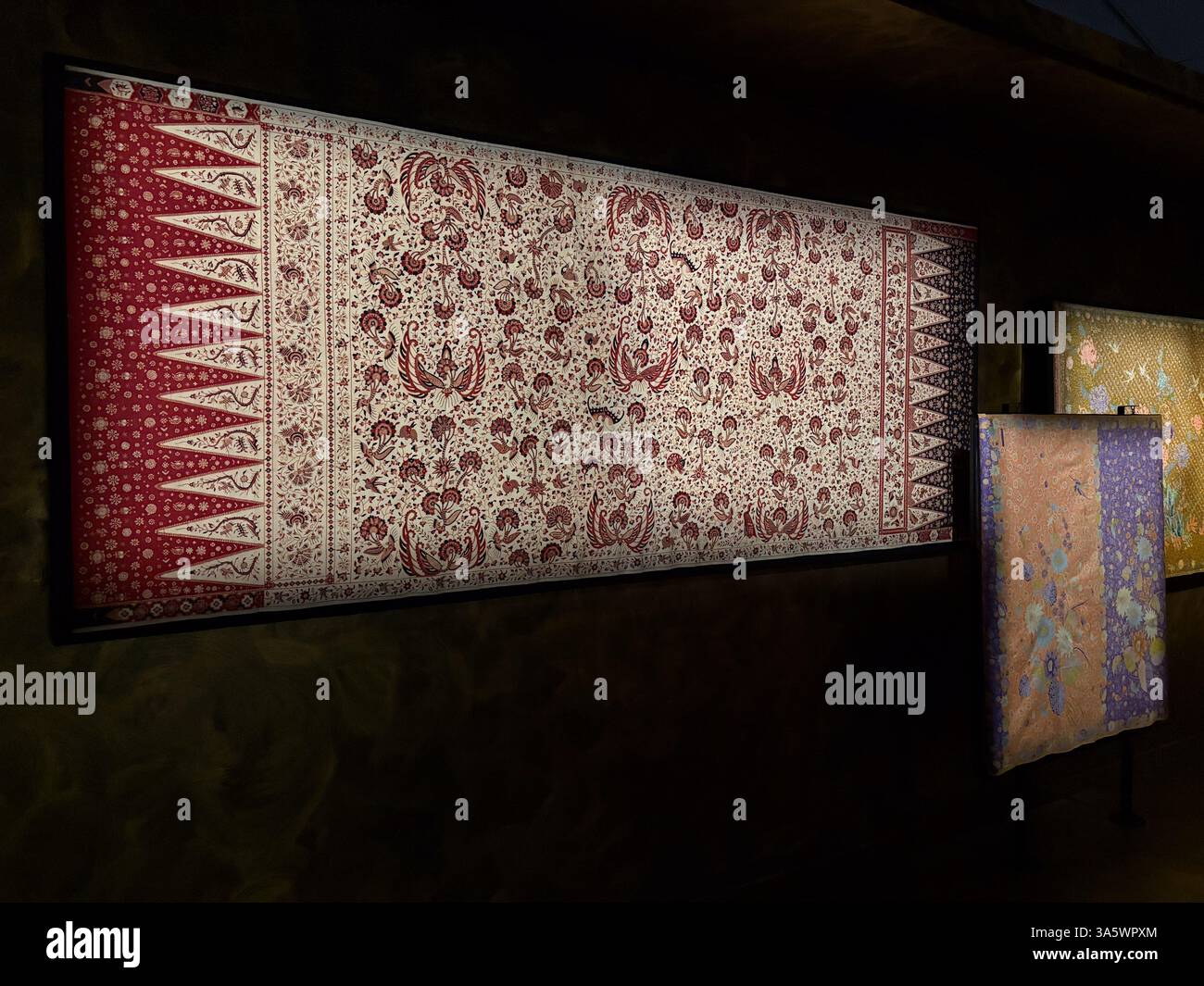 Display of a batik textile design with red and white patterns. Traditional Indonesian wax-resist dyeing technique on display at a museum. Stock Photohttps://www.alamy.com/image-license-details/?v=1https://www.alamy.com/display-of-a-batik-textile-design-with-red-and-white-patterns-traditional-indonesian-wax-resist-dyeing-technique-on-display-at-a-museum-image657634060.html
Display of a batik textile design with red and white patterns. Traditional Indonesian wax-resist dyeing technique on display at a museum. Stock Photohttps://www.alamy.com/image-license-details/?v=1https://www.alamy.com/display-of-a-batik-textile-design-with-red-and-white-patterns-traditional-indonesian-wax-resist-dyeing-technique-on-display-at-a-museum-image657634060.htmlRM3A5WPXM–Display of a batik textile design with red and white patterns. Traditional Indonesian wax-resist dyeing technique on display at a museum.
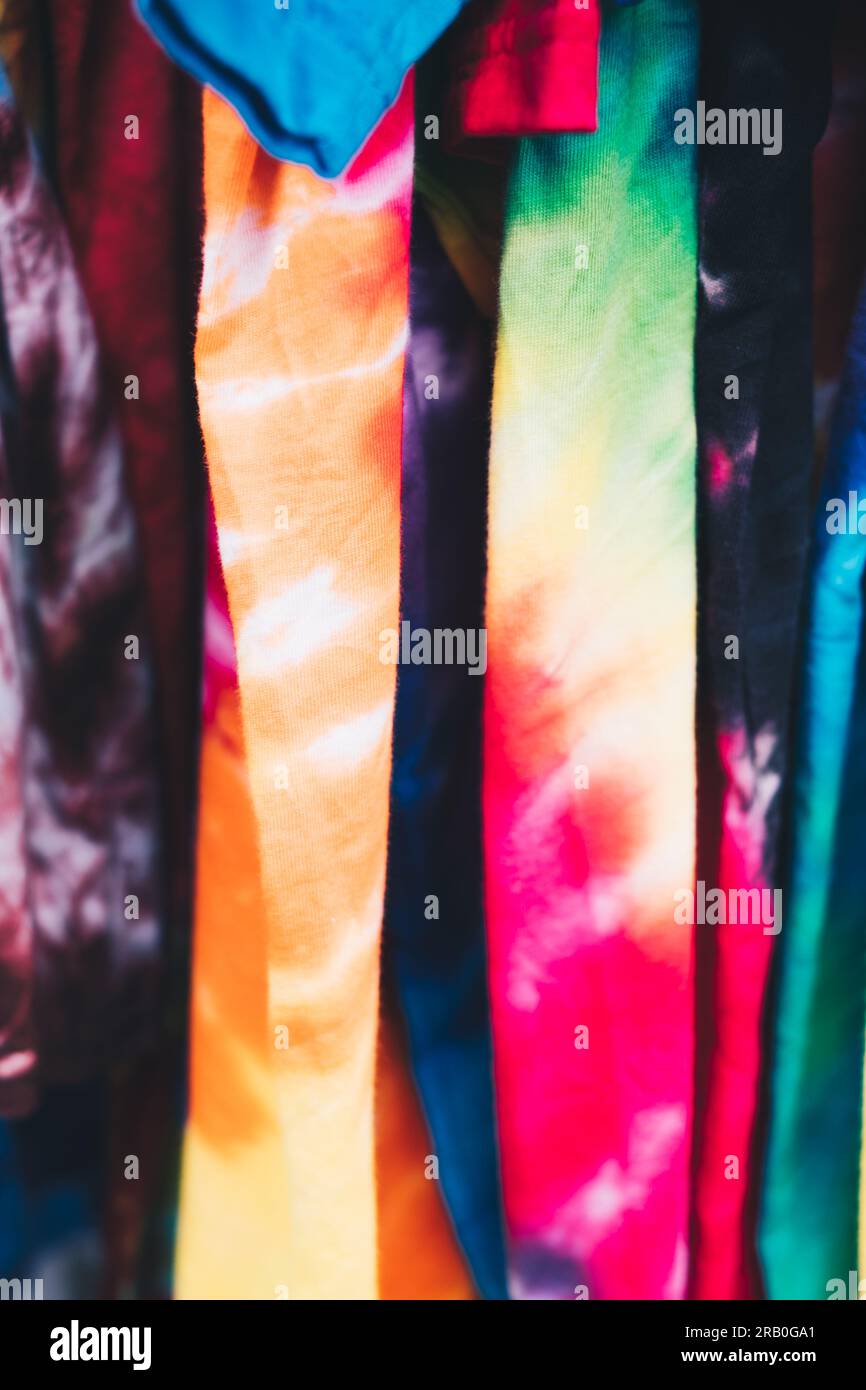 Array of colorful unisex tie-dye shirts. Selective focus. Closeup. Stock Photohttps://www.alamy.com/image-license-details/?v=1https://www.alamy.com/array-of-colorful-unisex-tie-dye-shirts-selective-focus-closeup-image557505817.html
Array of colorful unisex tie-dye shirts. Selective focus. Closeup. Stock Photohttps://www.alamy.com/image-license-details/?v=1https://www.alamy.com/array-of-colorful-unisex-tie-dye-shirts-selective-focus-closeup-image557505817.htmlRF2RB0GA1–Array of colorful unisex tie-dye shirts. Selective focus. Closeup.
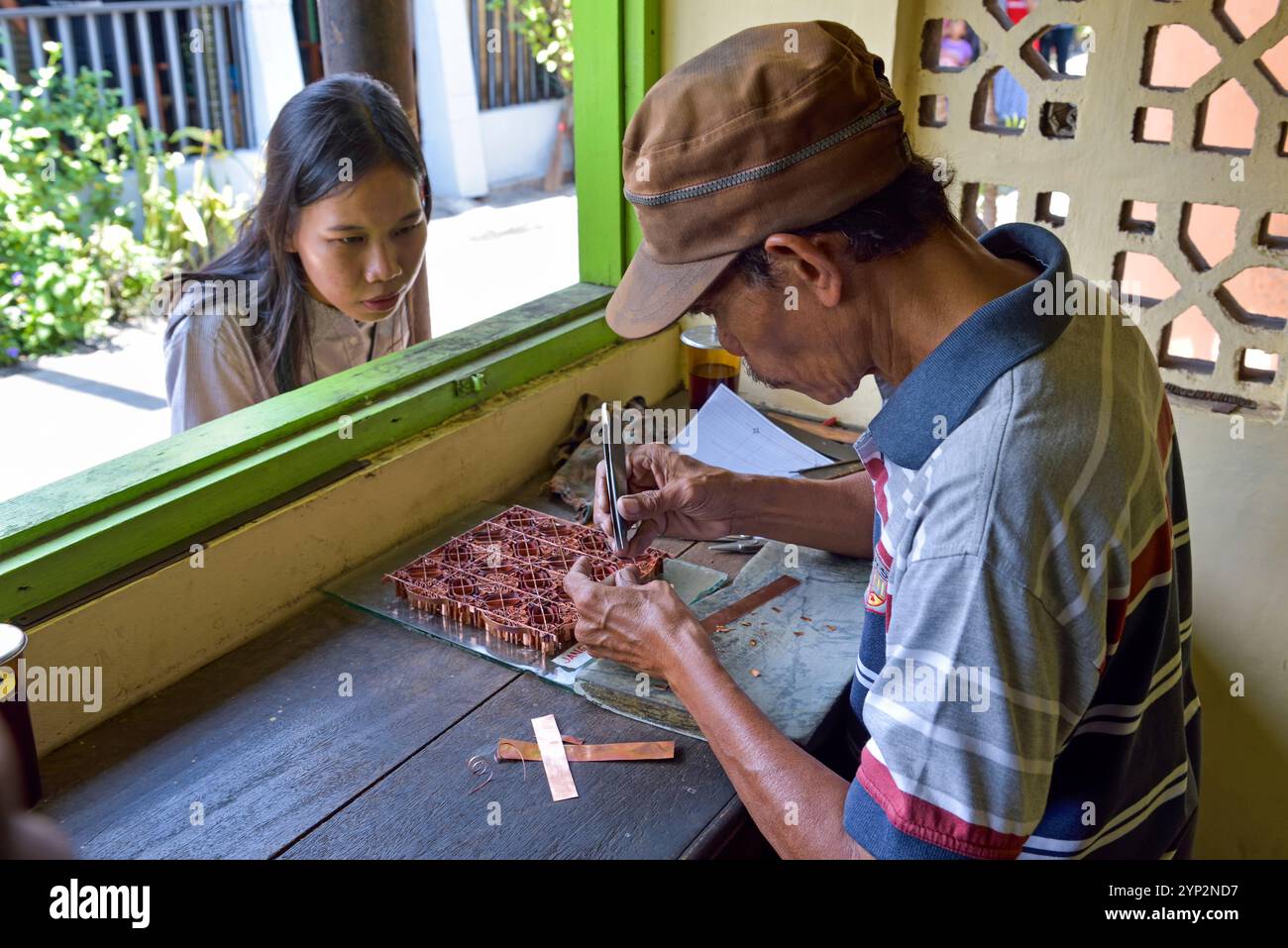 Workshop of copper plate stamps (cap) used to apply wax-resist to make pattern before dyeing in batik process, Sondakan district, Solo (Surakarta) Stock Photohttps://www.alamy.com/image-license-details/?v=1https://www.alamy.com/workshop-of-copper-plate-stamps-cap-used-to-apply-wax-resist-to-make-pattern-before-dyeing-in-batik-process-sondakan-district-solo-surakarta-image633156419.html
Workshop of copper plate stamps (cap) used to apply wax-resist to make pattern before dyeing in batik process, Sondakan district, Solo (Surakarta) Stock Photohttps://www.alamy.com/image-license-details/?v=1https://www.alamy.com/workshop-of-copper-plate-stamps-cap-used-to-apply-wax-resist-to-make-pattern-before-dyeing-in-batik-process-sondakan-district-solo-surakarta-image633156419.htmlRF2YP2ND7–Workshop of copper plate stamps (cap) used to apply wax-resist to make pattern before dyeing in batik process, Sondakan district, Solo (Surakarta)
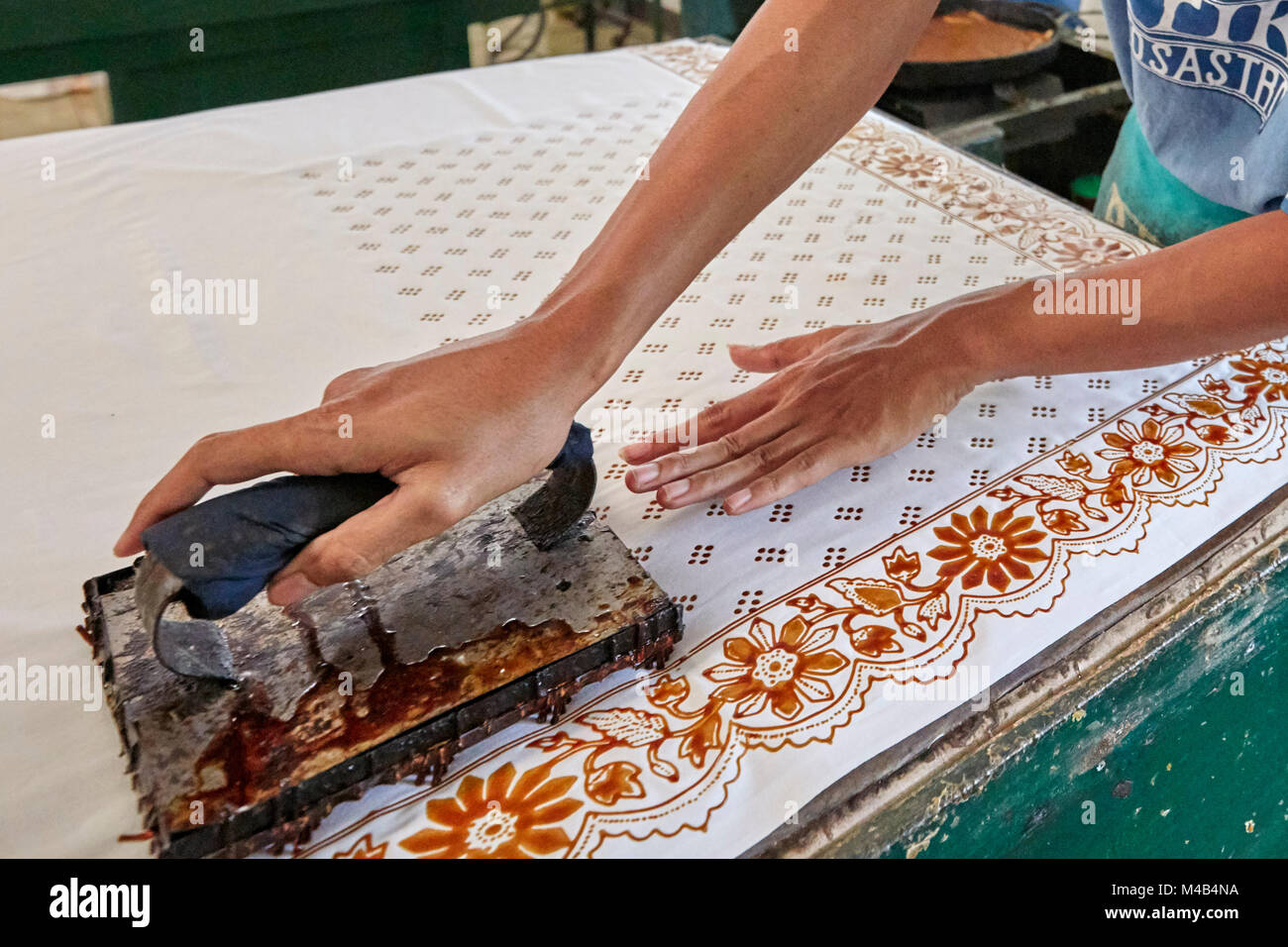 Batik maker block prints on a cloth with a Cap (copper stamp). Batik Winotosastro shop, Yogyakarta, Java, Indonesia. Stock Photohttps://www.alamy.com/image-license-details/?v=1https://www.alamy.com/stock-photo-batik-maker-block-prints-on-a-cloth-with-a-cap-copper-stamp-batik-174807510.html
Batik maker block prints on a cloth with a Cap (copper stamp). Batik Winotosastro shop, Yogyakarta, Java, Indonesia. Stock Photohttps://www.alamy.com/image-license-details/?v=1https://www.alamy.com/stock-photo-batik-maker-block-prints-on-a-cloth-with-a-cap-copper-stamp-batik-174807510.htmlRMM4B4NA–Batik maker block prints on a cloth with a Cap (copper stamp). Batik Winotosastro shop, Yogyakarta, Java, Indonesia.
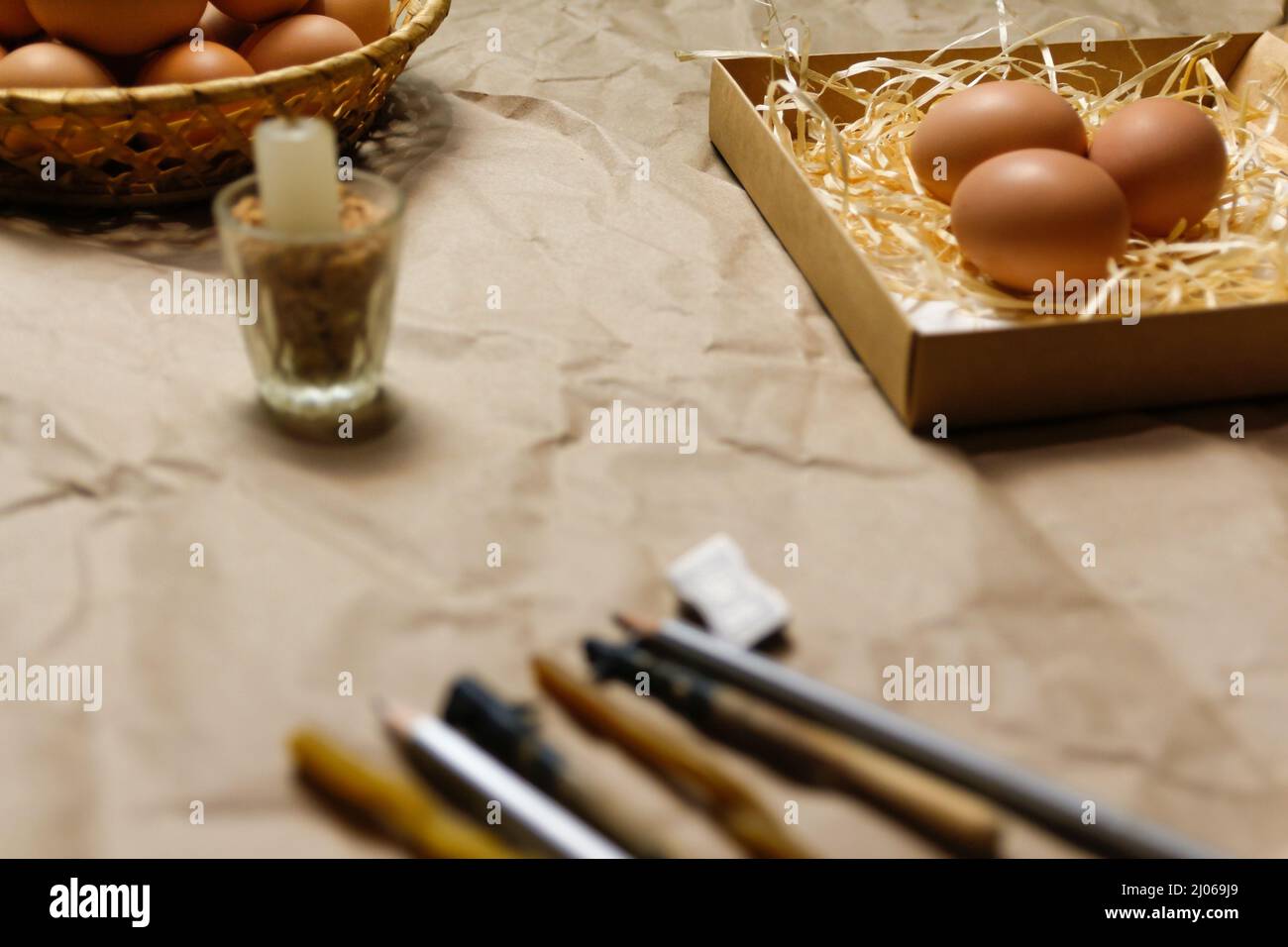 Tools for decorating Paschal eggs, Pysankas, with wax-resist dyeing technique. Collection of eggs. Homemade pen and melted beeswax for drawing of eggs Stock Photohttps://www.alamy.com/image-license-details/?v=1https://www.alamy.com/tools-for-decorating-paschal-eggs-pysankas-with-wax-resist-dyeing-technique-collection-of-eggs-homemade-pen-and-melted-beeswax-for-drawing-of-eggs-image464819217.html
Tools for decorating Paschal eggs, Pysankas, with wax-resist dyeing technique. Collection of eggs. Homemade pen and melted beeswax for drawing of eggs Stock Photohttps://www.alamy.com/image-license-details/?v=1https://www.alamy.com/tools-for-decorating-paschal-eggs-pysankas-with-wax-resist-dyeing-technique-collection-of-eggs-homemade-pen-and-melted-beeswax-for-drawing-of-eggs-image464819217.htmlRF2J069J9–Tools for decorating Paschal eggs, Pysankas, with wax-resist dyeing technique. Collection of eggs. Homemade pen and melted beeswax for drawing of eggs
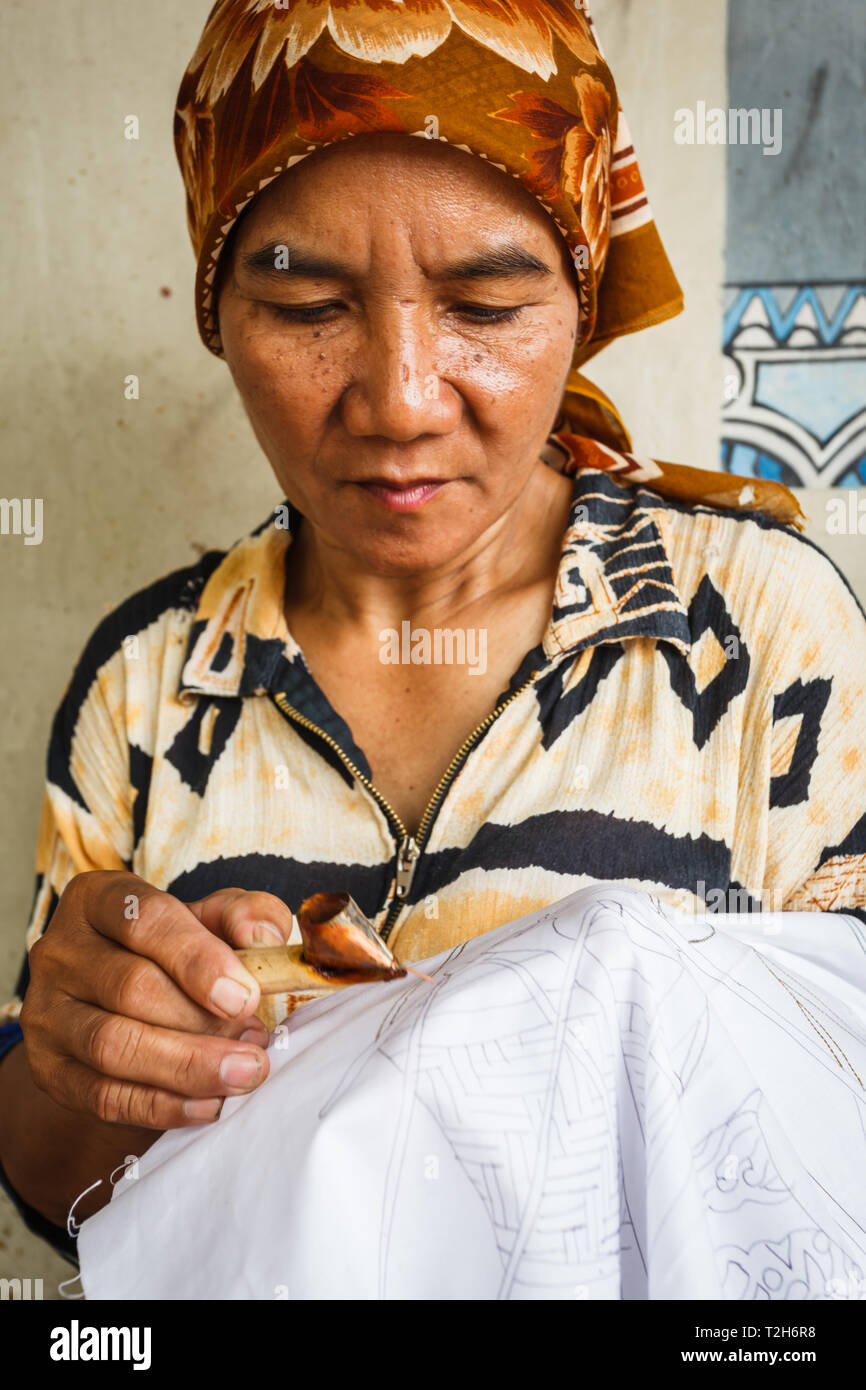 Portrait of a woman working on making a design on a handmade tablecloth Stock Photohttps://www.alamy.com/image-license-details/?v=1https://www.alamy.com/portrait-of-a-woman-working-on-making-a-design-on-a-handmade-tablecloth-image242553004.html
Portrait of a woman working on making a design on a handmade tablecloth Stock Photohttps://www.alamy.com/image-license-details/?v=1https://www.alamy.com/portrait-of-a-woman-working-on-making-a-design-on-a-handmade-tablecloth-image242553004.htmlRMT2H6R8–Portrait of a woman working on making a design on a handmade tablecloth
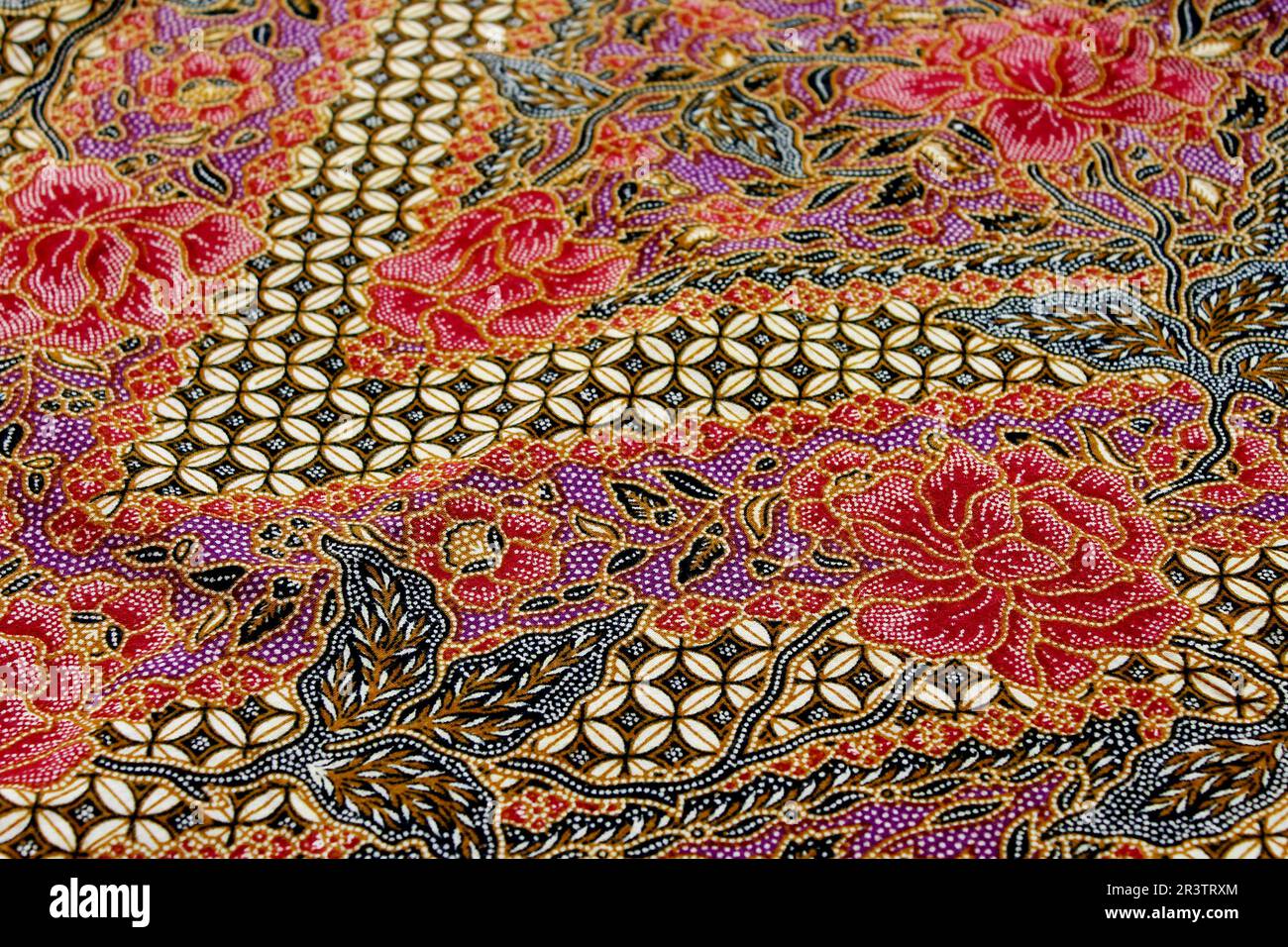 Batik fabrics are Indonesian textiles made using wax-resist dyeing. They feature intricate patterns and vibrant colors, holding cultural significance Stock Photohttps://www.alamy.com/image-license-details/?v=1https://www.alamy.com/batik-fabrics-are-indonesian-textiles-made-using-wax-resist-dyeing-they-feature-intricate-patterns-and-vibrant-colors-holding-cultural-significance-image553121372.html
Batik fabrics are Indonesian textiles made using wax-resist dyeing. They feature intricate patterns and vibrant colors, holding cultural significance Stock Photohttps://www.alamy.com/image-license-details/?v=1https://www.alamy.com/batik-fabrics-are-indonesian-textiles-made-using-wax-resist-dyeing-they-feature-intricate-patterns-and-vibrant-colors-holding-cultural-significance-image553121372.htmlRF2R3TRXM–Batik fabrics are Indonesian textiles made using wax-resist dyeing. They feature intricate patterns and vibrant colors, holding cultural significance
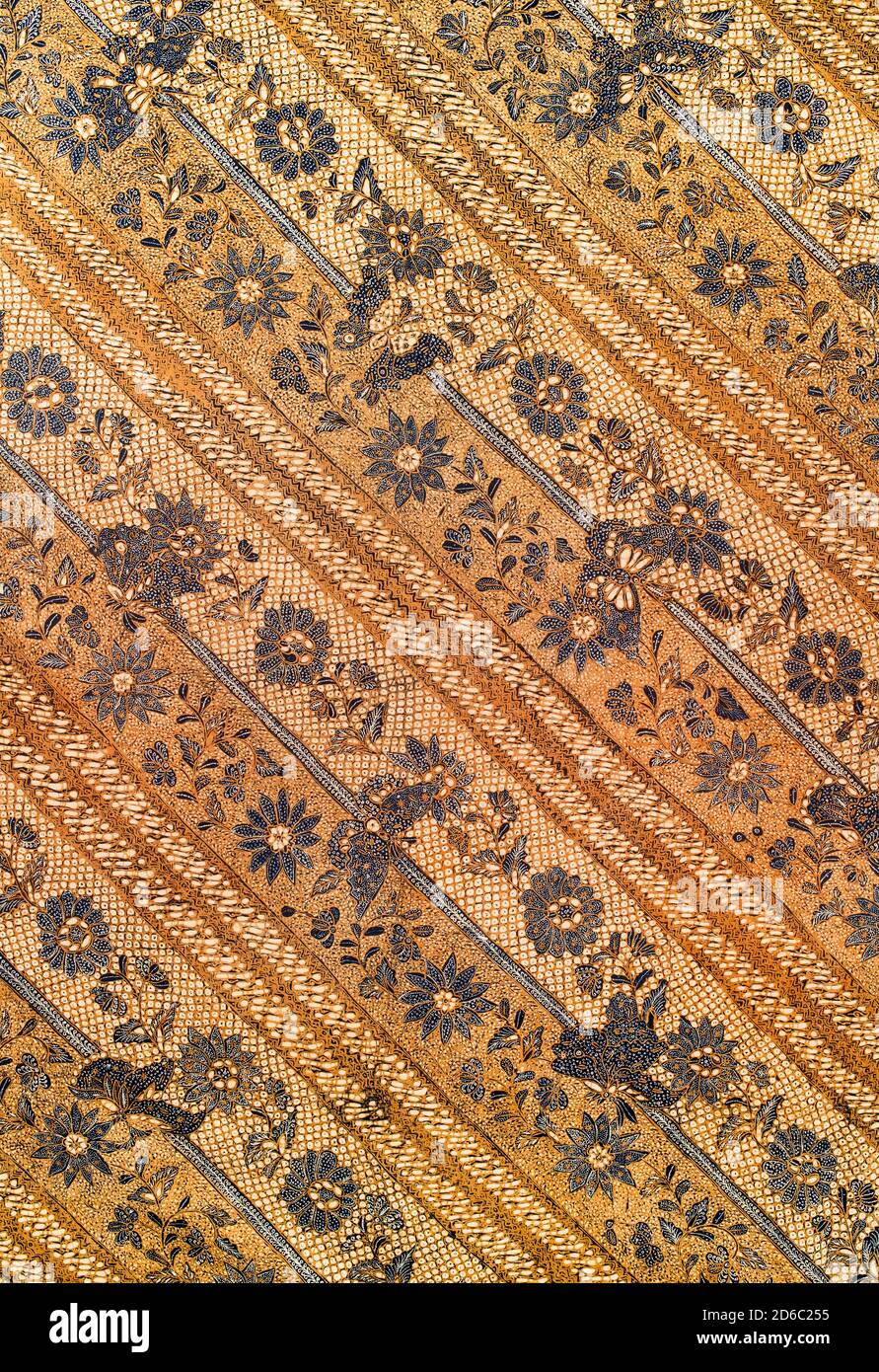 Batik Indonesian: is a technique of wax-resist dyeing applied to whole cloth, or cloth made using this technique originated from Indonesia. Stock Photohttps://www.alamy.com/image-license-details/?v=1https://www.alamy.com/batik-indonesian-is-a-technique-of-wax-resist-dyeing-applied-to-whole-cloth-or-cloth-made-using-this-technique-originated-from-indonesia-image382581169.html
Batik Indonesian: is a technique of wax-resist dyeing applied to whole cloth, or cloth made using this technique originated from Indonesia. Stock Photohttps://www.alamy.com/image-license-details/?v=1https://www.alamy.com/batik-indonesian-is-a-technique-of-wax-resist-dyeing-applied-to-whole-cloth-or-cloth-made-using-this-technique-originated-from-indonesia-image382581169.htmlRF2D6C255–Batik Indonesian: is a technique of wax-resist dyeing applied to whole cloth, or cloth made using this technique originated from Indonesia.
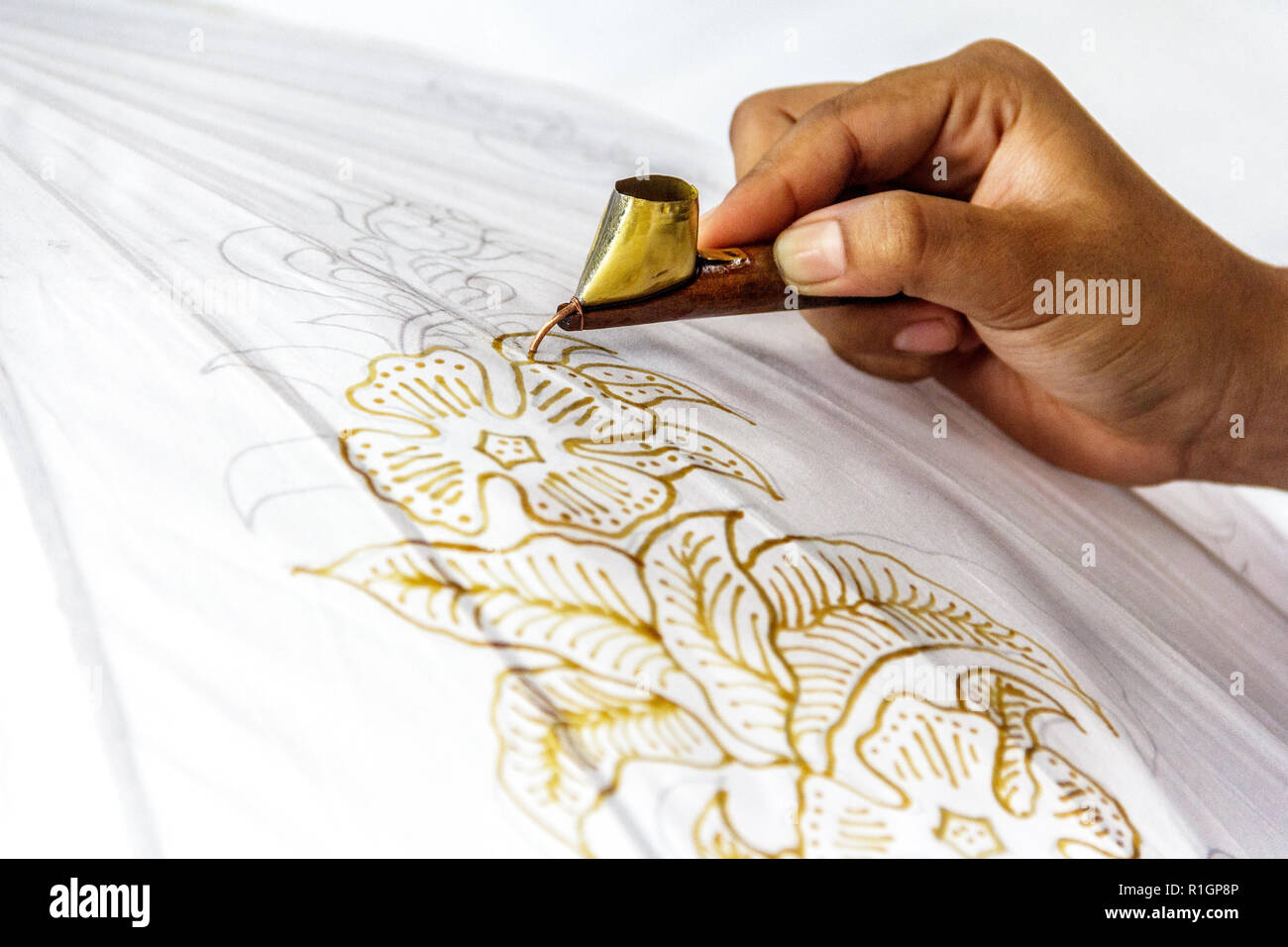 Isolated hand in the process of making batik. Batik is a ancient art from Indonesia. Produced by technique of wax-resist dyeing applied to fabric. Stock Photohttps://www.alamy.com/image-license-details/?v=1https://www.alamy.com/isolated-hand-in-the-process-of-making-batik-batik-is-a-ancient-art-from-indonesia-produced-by-technique-of-wax-resist-dyeing-applied-to-fabric-image224718166.html
Isolated hand in the process of making batik. Batik is a ancient art from Indonesia. Produced by technique of wax-resist dyeing applied to fabric. Stock Photohttps://www.alamy.com/image-license-details/?v=1https://www.alamy.com/isolated-hand-in-the-process-of-making-batik-batik-is-a-ancient-art-from-indonesia-produced-by-technique-of-wax-resist-dyeing-applied-to-fabric-image224718166.htmlRFR1GP8P–Isolated hand in the process of making batik. Batik is a ancient art from Indonesia. Produced by technique of wax-resist dyeing applied to fabric.
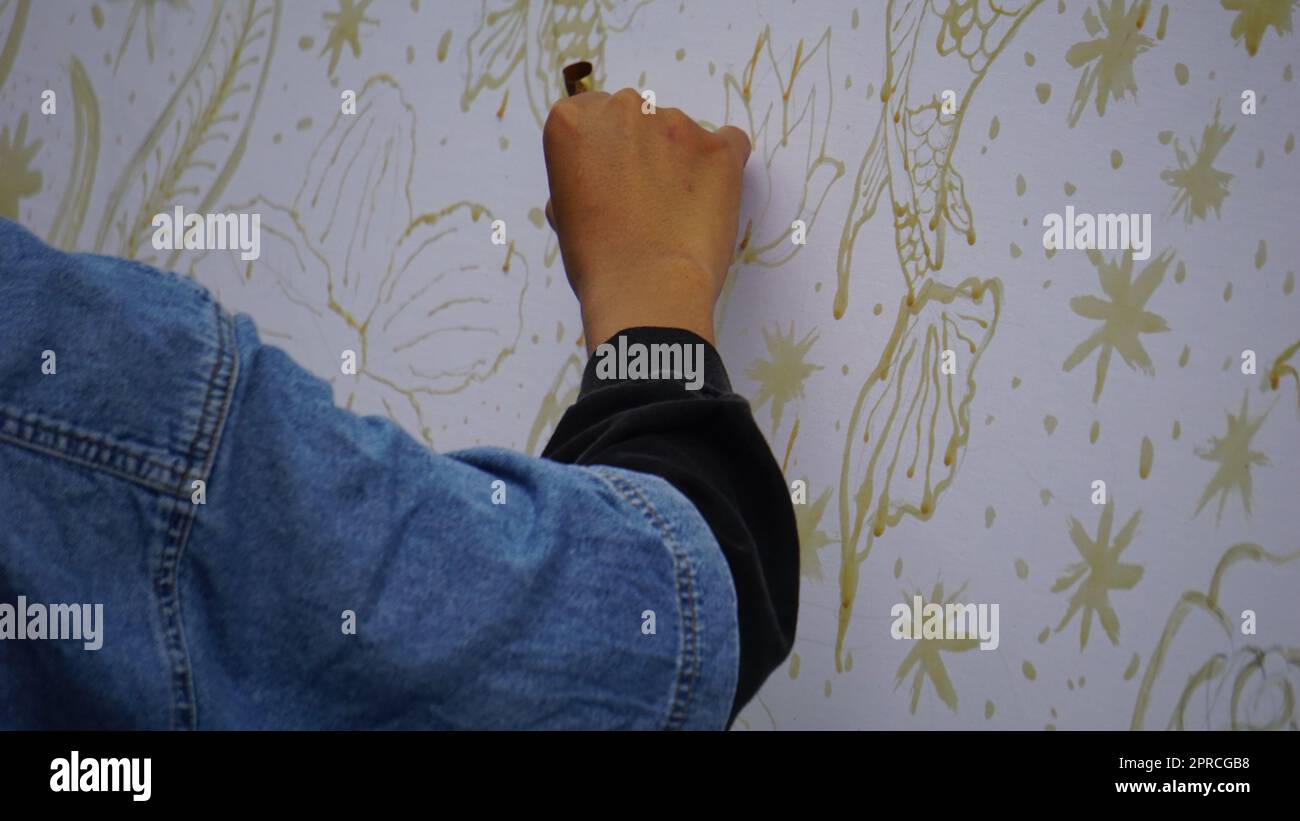 The process of making batik on Festival Batik Keren Blitar. Batik is a handmade ancient art from Indonesia. Produced by technique of wax-resist dyeing Stock Photohttps://www.alamy.com/image-license-details/?v=1https://www.alamy.com/the-process-of-making-batik-on-festival-batik-keren-blitar-batik-is-a-handmade-ancient-art-from-indonesia-produced-by-technique-of-wax-resist-dyeing-image547934780.html
The process of making batik on Festival Batik Keren Blitar. Batik is a handmade ancient art from Indonesia. Produced by technique of wax-resist dyeing Stock Photohttps://www.alamy.com/image-license-details/?v=1https://www.alamy.com/the-process-of-making-batik-on-festival-batik-keren-blitar-batik-is-a-handmade-ancient-art-from-indonesia-produced-by-technique-of-wax-resist-dyeing-image547934780.htmlRF2PRCGB8–The process of making batik on Festival Batik Keren Blitar. Batik is a handmade ancient art from Indonesia. Produced by technique of wax-resist dyeing
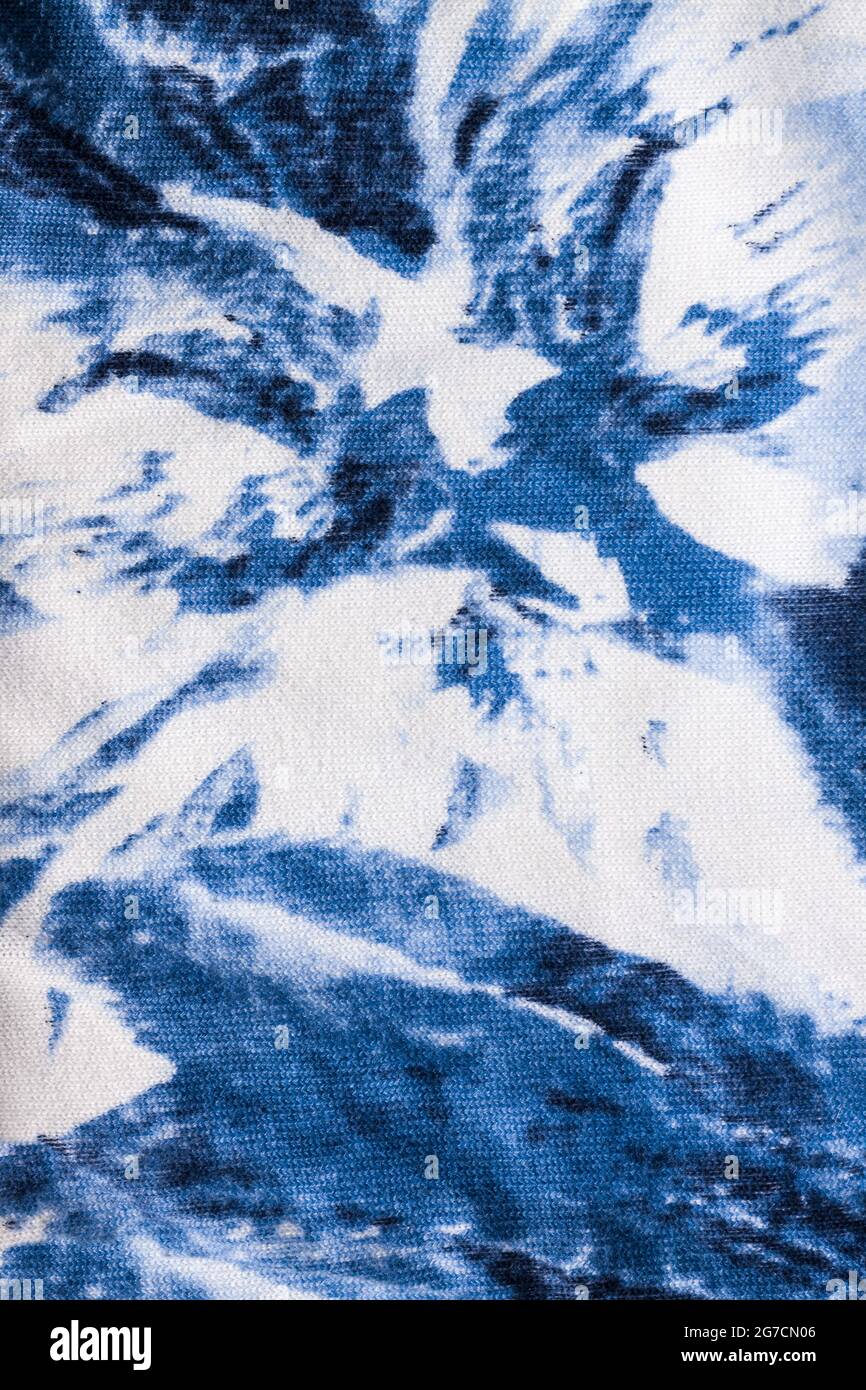 Tie-dye cotton fabric texture blue and white paint colors. Ancient resist-dyeing textile coloring technique, saturated primary colors, bold patterns, Stock Photohttps://www.alamy.com/image-license-details/?v=1https://www.alamy.com/tie-dye-cotton-fabric-texture-blue-and-white-paint-colors-ancient-resist-dyeing-textile-coloring-technique-saturated-primary-colors-bold-patterns-image434841686.html
Tie-dye cotton fabric texture blue and white paint colors. Ancient resist-dyeing textile coloring technique, saturated primary colors, bold patterns, Stock Photohttps://www.alamy.com/image-license-details/?v=1https://www.alamy.com/tie-dye-cotton-fabric-texture-blue-and-white-paint-colors-ancient-resist-dyeing-textile-coloring-technique-saturated-primary-colors-bold-patterns-image434841686.htmlRF2G7CN06–Tie-dye cotton fabric texture blue and white paint colors. Ancient resist-dyeing textile coloring technique, saturated primary colors, bold patterns,
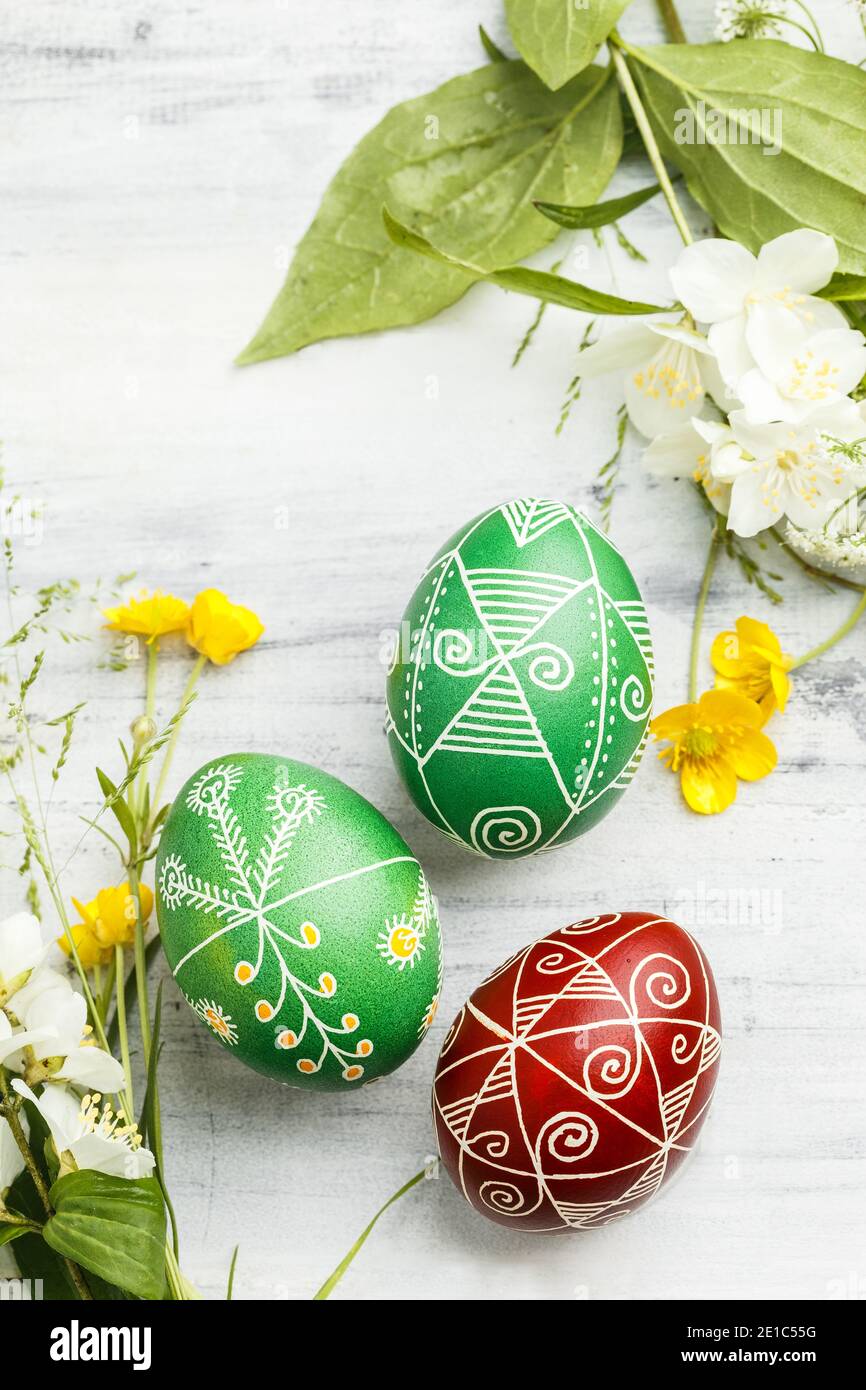 Three pysanky handmade Easter eggs. Ukrainian pysanky decorated with wax-resist dyeing technique. Holiday postcard Stock Photohttps://www.alamy.com/image-license-details/?v=1https://www.alamy.com/three-pysanky-handmade-easter-eggs-ukrainian-pysanky-decorated-with-wax-resist-dyeing-technique-holiday-postcard-image396720620.html
Three pysanky handmade Easter eggs. Ukrainian pysanky decorated with wax-resist dyeing technique. Holiday postcard Stock Photohttps://www.alamy.com/image-license-details/?v=1https://www.alamy.com/three-pysanky-handmade-easter-eggs-ukrainian-pysanky-decorated-with-wax-resist-dyeing-technique-holiday-postcard-image396720620.htmlRF2E1C55G–Three pysanky handmade Easter eggs. Ukrainian pysanky decorated with wax-resist dyeing technique. Holiday postcard
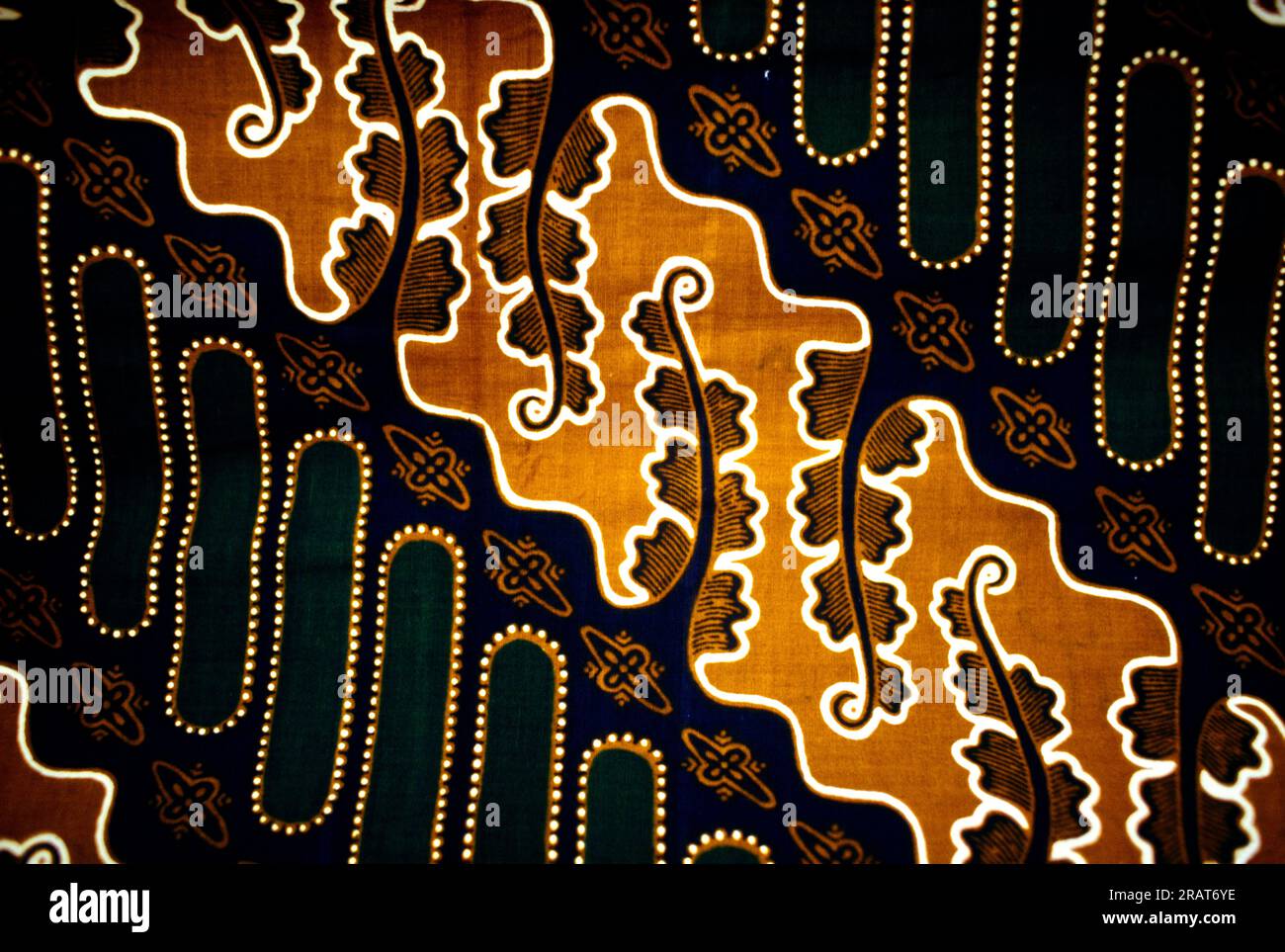 Malaysia Indonesian Batik Cloth Wax-Resist Dyeing Technique Stock Photohttps://www.alamy.com/image-license-details/?v=1https://www.alamy.com/malaysia-indonesian-batik-cloth-wax-resist-dyeing-technique-image557410658.html
Malaysia Indonesian Batik Cloth Wax-Resist Dyeing Technique Stock Photohttps://www.alamy.com/image-license-details/?v=1https://www.alamy.com/malaysia-indonesian-batik-cloth-wax-resist-dyeing-technique-image557410658.htmlRM2RAT6YE–Malaysia Indonesian Batik Cloth Wax-Resist Dyeing Technique
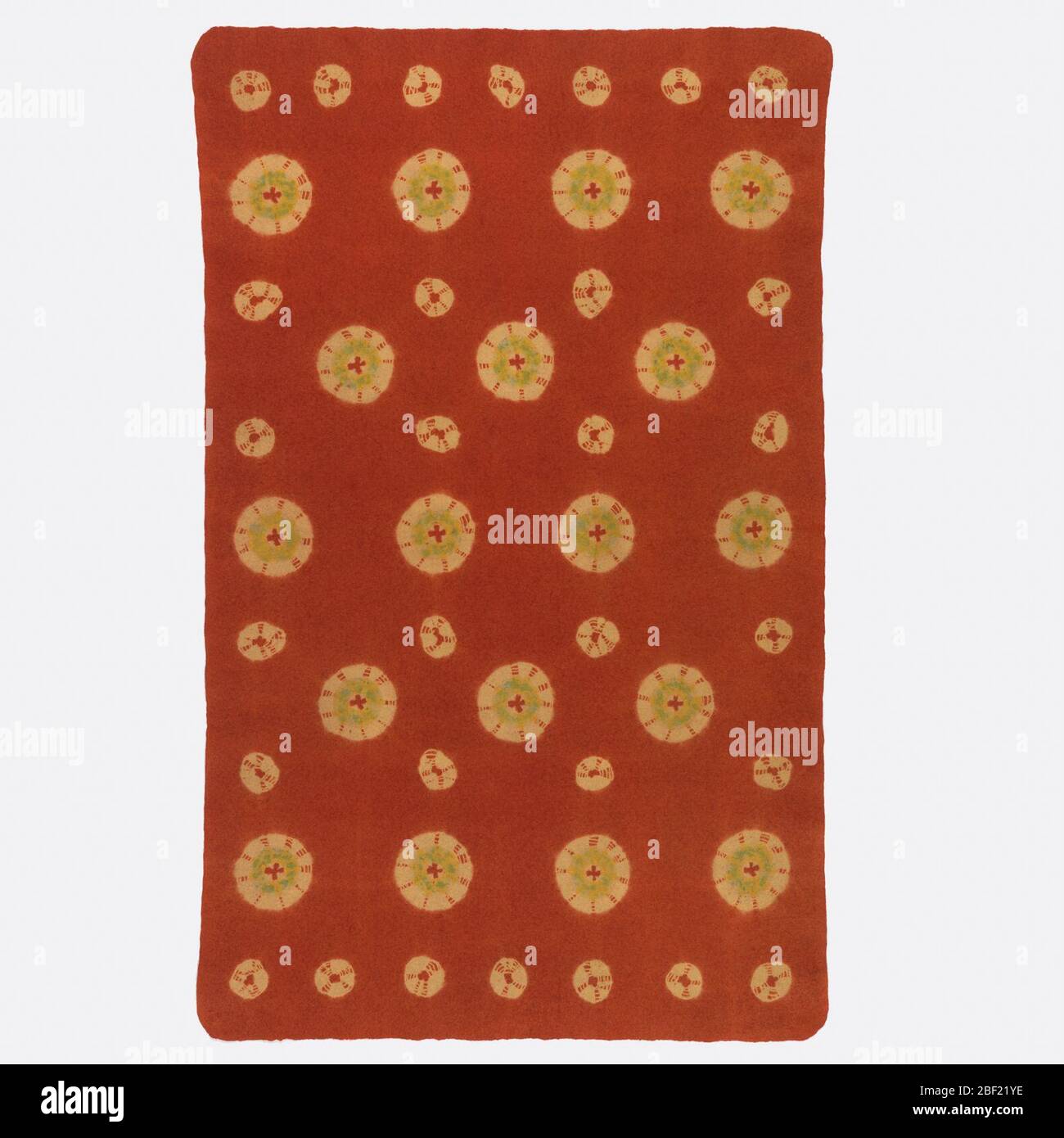 Mosen. Rectangular rug made of wool which is felted, then patterned with tied resist dyeing, leaving large and small dots of yellow in a deep red-orange ground. Touches of green applied by brush. A mosen is a type of rug used in Japanese tea ceremonies. Stock Photohttps://www.alamy.com/image-license-details/?v=1https://www.alamy.com/mosen-rectangular-rug-made-of-wool-which-is-felted-then-patterned-with-tied-resist-dyeing-leaving-large-and-small-dots-of-yellow-in-a-deep-red-orange-ground-touches-of-green-applied-by-brush-a-mosen-is-a-type-of-rug-used-in-japanese-tea-ceremonies-image353472658.html
Mosen. Rectangular rug made of wool which is felted, then patterned with tied resist dyeing, leaving large and small dots of yellow in a deep red-orange ground. Touches of green applied by brush. A mosen is a type of rug used in Japanese tea ceremonies. Stock Photohttps://www.alamy.com/image-license-details/?v=1https://www.alamy.com/mosen-rectangular-rug-made-of-wool-which-is-felted-then-patterned-with-tied-resist-dyeing-leaving-large-and-small-dots-of-yellow-in-a-deep-red-orange-ground-touches-of-green-applied-by-brush-a-mosen-is-a-type-of-rug-used-in-japanese-tea-ceremonies-image353472658.htmlRM2BF21YE–Mosen. Rectangular rug made of wool which is felted, then patterned with tied resist dyeing, leaving large and small dots of yellow in a deep red-orange ground. Touches of green applied by brush. A mosen is a type of rug used in Japanese tea ceremonies.
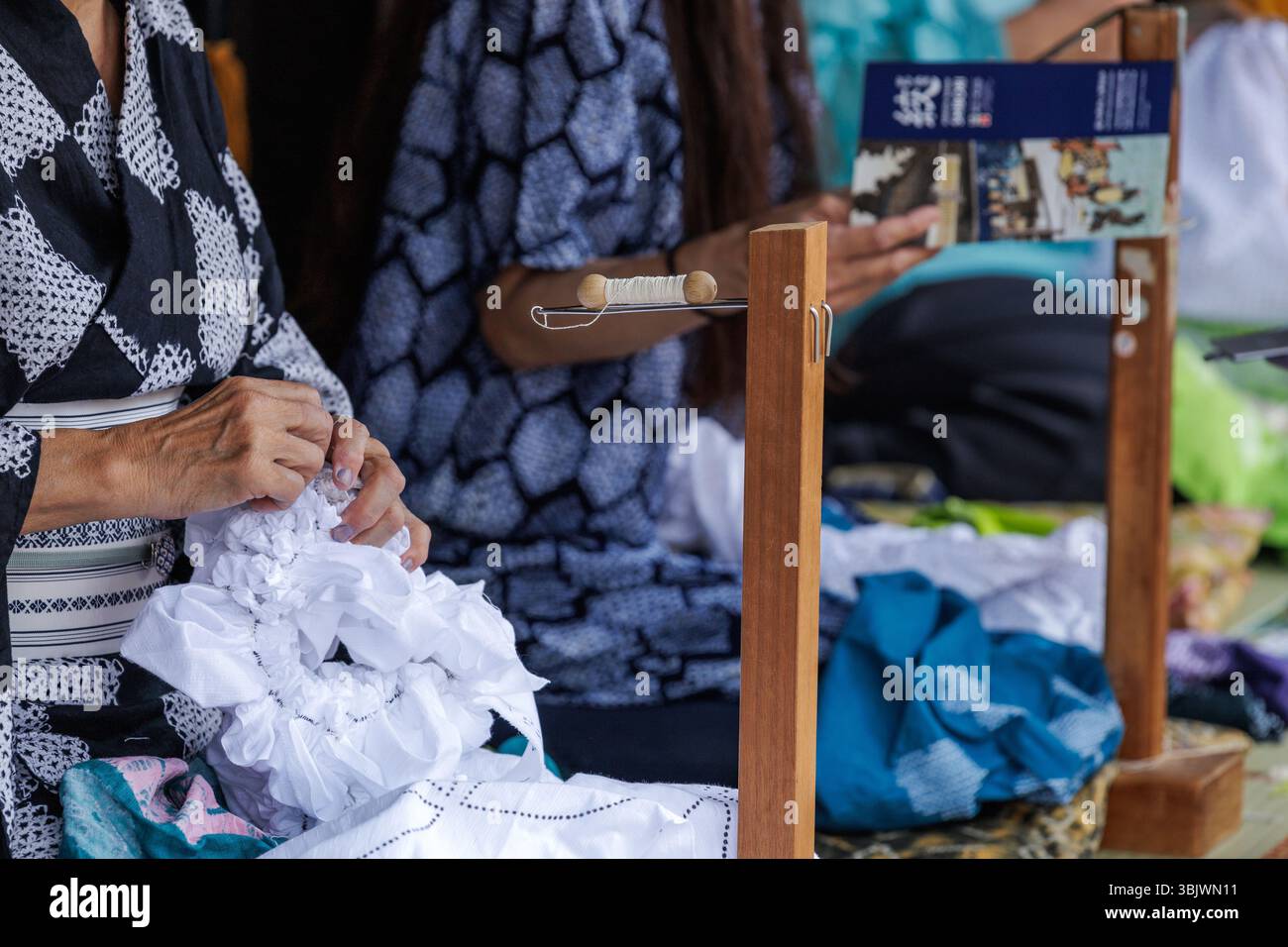 Artisan engages in tying cone shaped knots into fabric used in traditional Japanese Arimatsu-shibori resist-dyeing as part of workshop at festival. Stock Photohttps://www.alamy.com/image-license-details/?v=1https://www.alamy.com/artisan-engages-in-tying-cone-shaped-knots-into-fabric-used-in-traditional-japanese-arimatsu-shibori-resist-dyeing-as-part-of-workshop-at-festival-image682833453.html
Artisan engages in tying cone shaped knots into fabric used in traditional Japanese Arimatsu-shibori resist-dyeing as part of workshop at festival. Stock Photohttps://www.alamy.com/image-license-details/?v=1https://www.alamy.com/artisan-engages-in-tying-cone-shaped-knots-into-fabric-used-in-traditional-japanese-arimatsu-shibori-resist-dyeing-as-part-of-workshop-at-festival-image682833453.htmlRF3BJWN11–Artisan engages in tying cone shaped knots into fabric used in traditional Japanese Arimatsu-shibori resist-dyeing as part of workshop at festival.
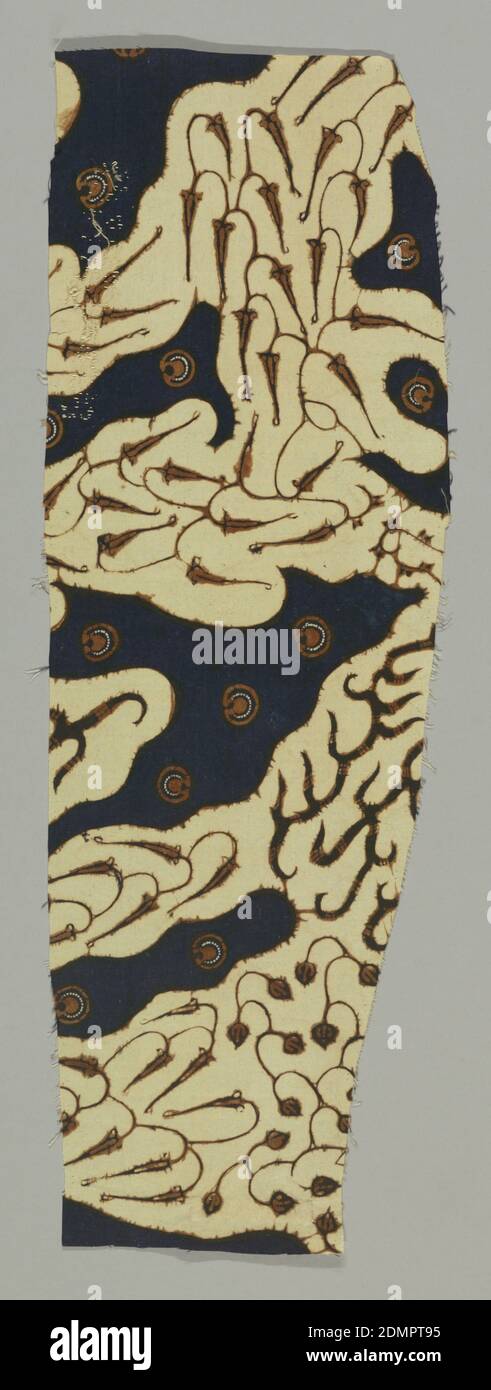 Textile, Medium: cotton Technique: wax resist dyeing (batik) on plain weave, Textile with conventional design in off-white and blue. Design similar to parang baris motif., Indonesia, 19th century, printed, dyed & painted textiles, Textile Stock Photohttps://www.alamy.com/image-license-details/?v=1https://www.alamy.com/textile-medium-cotton-technique-wax-resist-dyeing-batik-on-plain-weave-textile-with-conventional-design-in-off-white-and-blue-design-similar-to-parang-baris-motif-indonesia-19th-century-printed-dyed-painted-textiles-textile-image391423233.html
Textile, Medium: cotton Technique: wax resist dyeing (batik) on plain weave, Textile with conventional design in off-white and blue. Design similar to parang baris motif., Indonesia, 19th century, printed, dyed & painted textiles, Textile Stock Photohttps://www.alamy.com/image-license-details/?v=1https://www.alamy.com/textile-medium-cotton-technique-wax-resist-dyeing-batik-on-plain-weave-textile-with-conventional-design-in-off-white-and-blue-design-similar-to-parang-baris-motif-indonesia-19th-century-printed-dyed-painted-textiles-textile-image391423233.htmlRM2DMPT95–Textile, Medium: cotton Technique: wax resist dyeing (batik) on plain weave, Textile with conventional design in off-white and blue. Design similar to parang baris motif., Indonesia, 19th century, printed, dyed & painted textiles, Textile
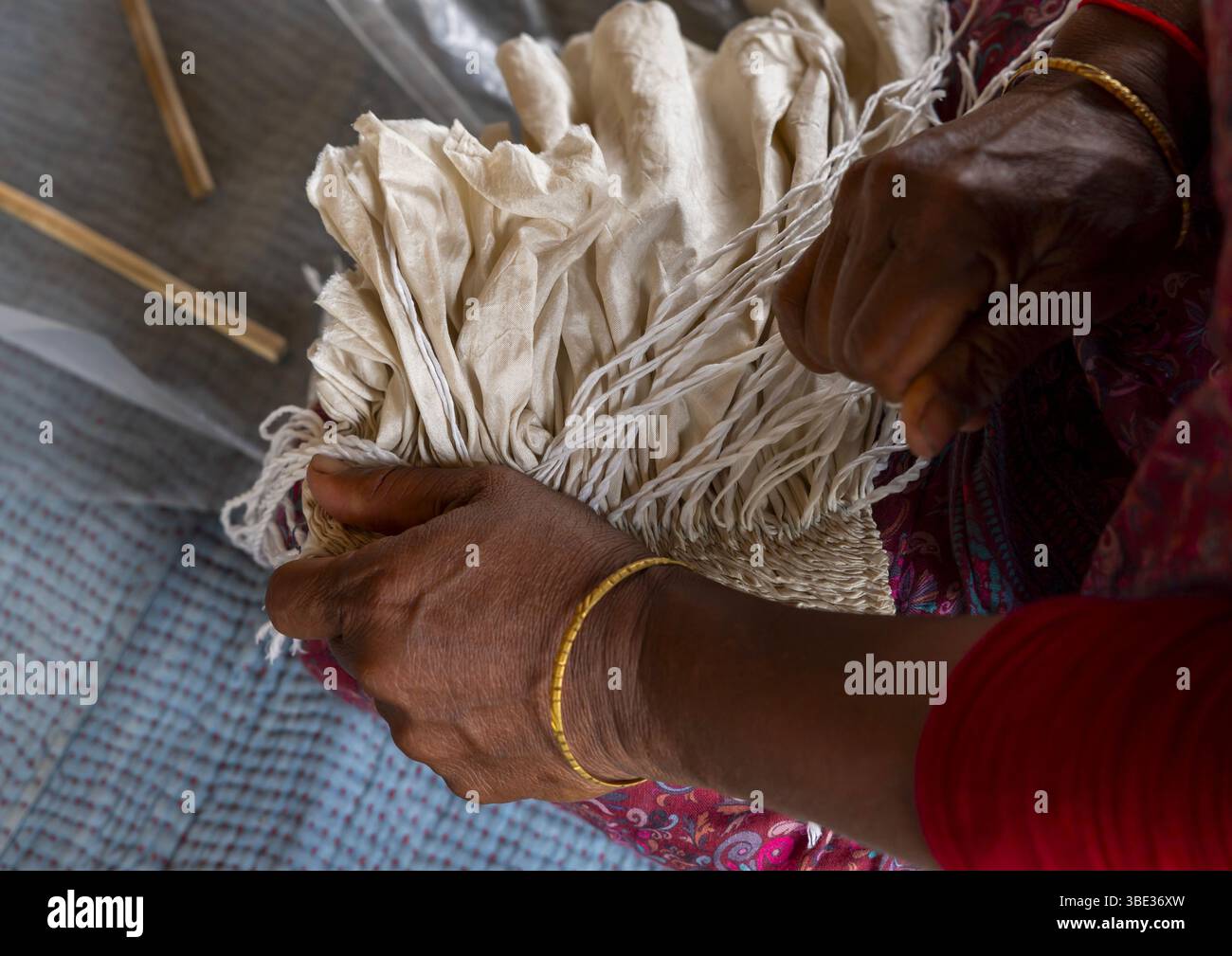 Shawl made with tie-dye resist dyeing technique in Living Blue, Rangpur Division, Goalpara, Bangladesh Stock Photohttps://www.alamy.com/image-license-details/?v=1https://www.alamy.com/shawl-made-with-tie-dye-resist-dyeing-technique-in-living-blue-rangpur-division-goalpara-bangladesh-image679880849.html
Shawl made with tie-dye resist dyeing technique in Living Blue, Rangpur Division, Goalpara, Bangladesh Stock Photohttps://www.alamy.com/image-license-details/?v=1https://www.alamy.com/shawl-made-with-tie-dye-resist-dyeing-technique-in-living-blue-rangpur-division-goalpara-bangladesh-image679880849.htmlRM3BE36XW–Shawl made with tie-dye resist dyeing technique in Living Blue, Rangpur Division, Goalpara, Bangladesh
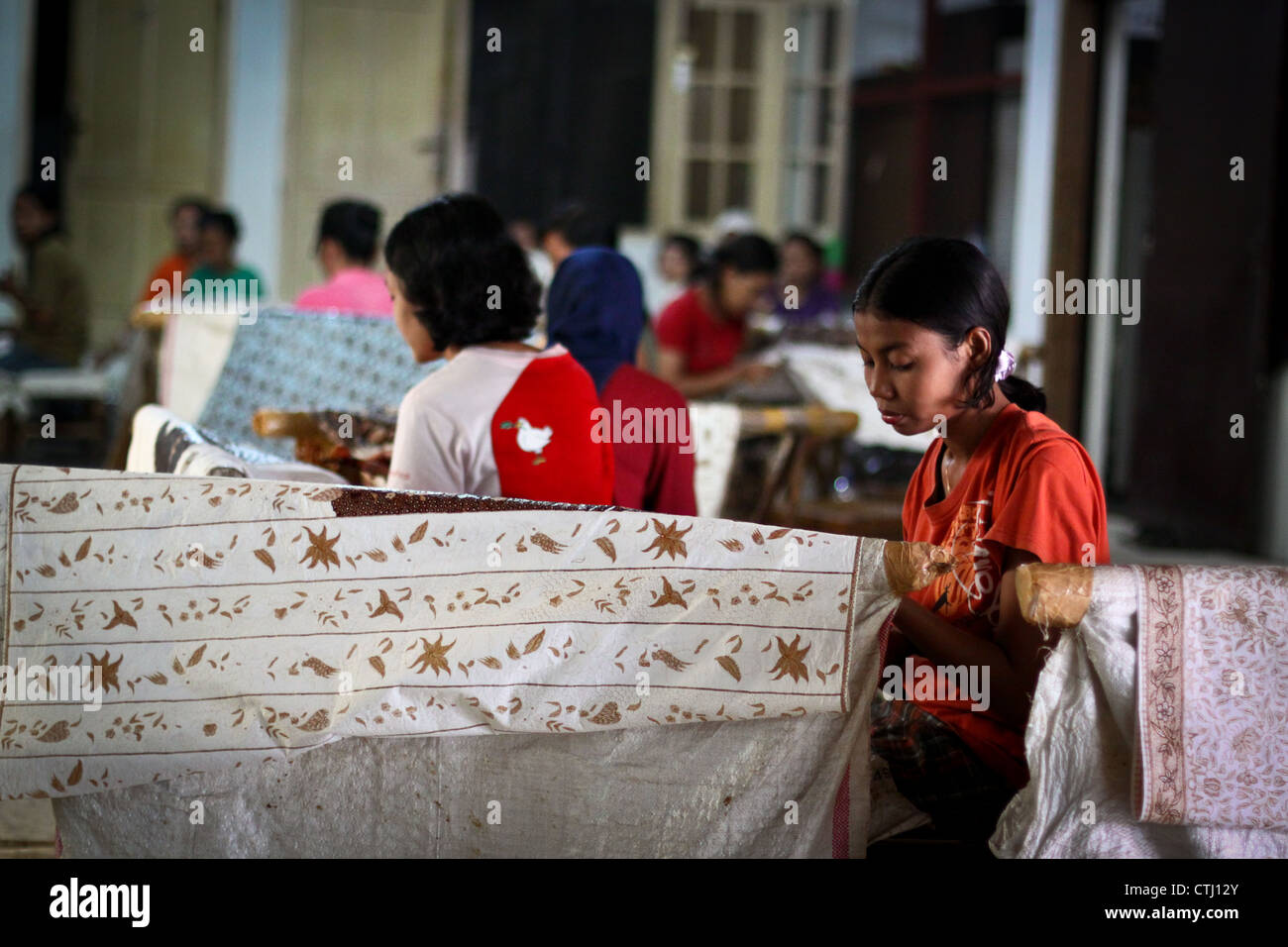 Batik is a cloth that is traditionally made using a manual wax-resist dyeing technique Stock Photohttps://www.alamy.com/image-license-details/?v=1https://www.alamy.com/stock-photo-batik-is-a-cloth-that-is-traditionally-made-using-a-manual-wax-resist-49568483.html
Batik is a cloth that is traditionally made using a manual wax-resist dyeing technique Stock Photohttps://www.alamy.com/image-license-details/?v=1https://www.alamy.com/stock-photo-batik-is-a-cloth-that-is-traditionally-made-using-a-manual-wax-resist-49568483.htmlRMCTJ12Y–Batik is a cloth that is traditionally made using a manual wax-resist dyeing technique
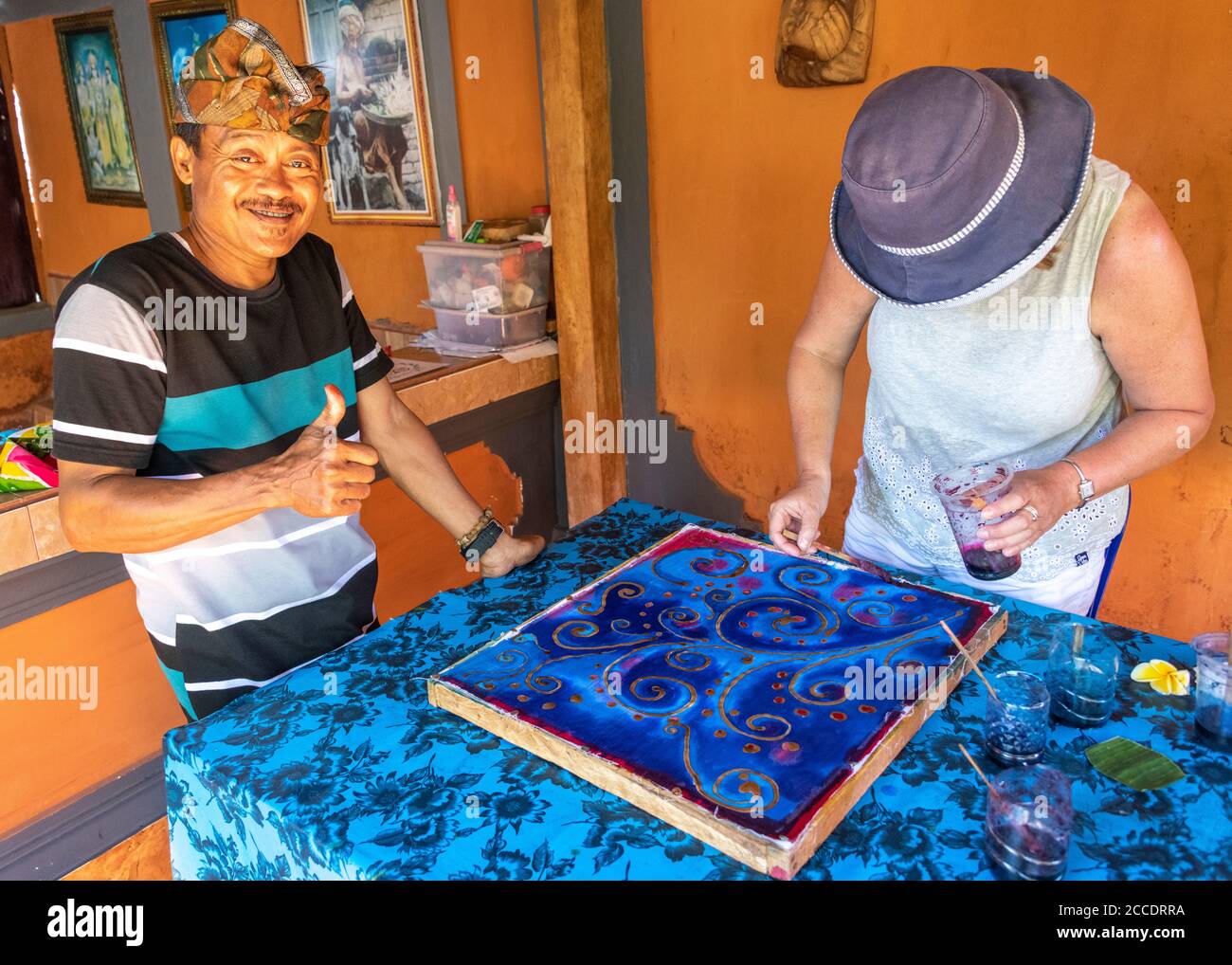 Batik is an traditional Balinese art technique of wax-resist dyeing applied to whole cloth. This technique originated from Java but has become popular Stock Photohttps://www.alamy.com/image-license-details/?v=1https://www.alamy.com/batik-is-an-traditional-balinese-art-technique-of-wax-resist-dyeing-applied-to-whole-cloth-this-technique-originated-from-java-but-has-become-popular-image369097662.html
Batik is an traditional Balinese art technique of wax-resist dyeing applied to whole cloth. This technique originated from Java but has become popular Stock Photohttps://www.alamy.com/image-license-details/?v=1https://www.alamy.com/batik-is-an-traditional-balinese-art-technique-of-wax-resist-dyeing-applied-to-whole-cloth-this-technique-originated-from-java-but-has-become-popular-image369097662.htmlRF2CCDRRA–Batik is an traditional Balinese art technique of wax-resist dyeing applied to whole cloth. This technique originated from Java but has become popular
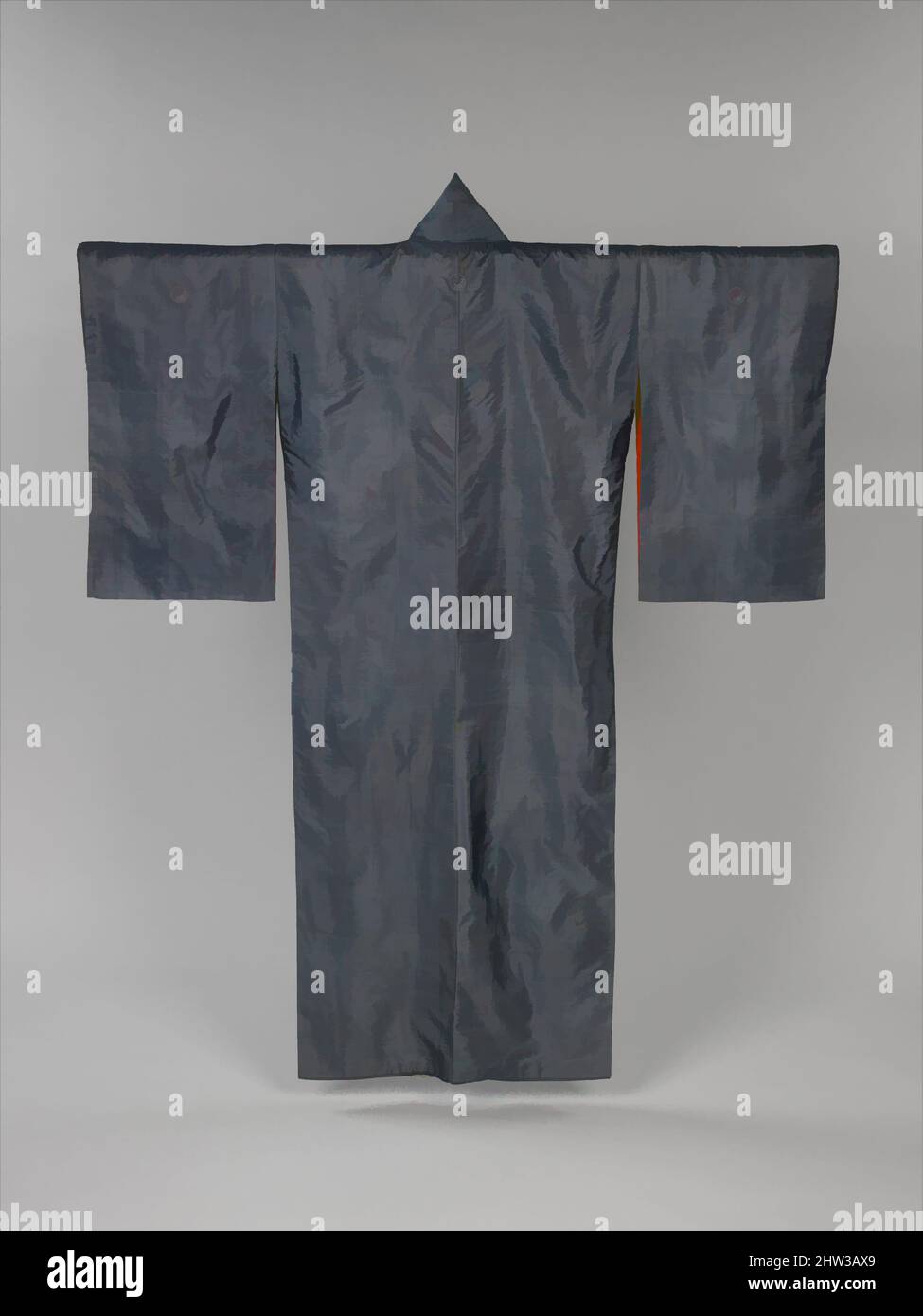 Art inspired by 鼠平絹地梅樹模様着物, Kimono with Blossoming Plum Tree, Meiji period (1868–1912), second half of the 19th century, Japan, Plain-weave silk with resist dyeing, ink, pigments, silk and metallic-thread embroidery, Overall: 62 × 49 in. (157.5 × 124.5 cm), Costumes, Paste-resist, Classic works modernized by Artotop with a splash of modernity. Shapes, color and value, eye-catching visual impact on art. Emotions through freedom of artworks in a contemporary way. A timeless message pursuing a wildly creative new direction. Artists turning to the digital medium and creating the Artotop NFT Stock Photohttps://www.alamy.com/image-license-details/?v=1https://www.alamy.com/art-inspired-by-kimono-with-blossoming-plum-tree-meiji-period-18681912-second-half-of-the-19th-century-japan-plain-weave-silk-with-resist-dyeing-ink-pigments-silk-and-metallic-thread-embroidery-overall-62-49-in-1575-1245-cm-costumes-paste-resist-classic-works-modernized-by-artotop-with-a-splash-of-modernity-shapes-color-and-value-eye-catching-visual-impact-on-art-emotions-through-freedom-of-artworks-in-a-contemporary-way-a-timeless-message-pursuing-a-wildly-creative-new-direction-artists-turning-to-the-digital-medium-and-creating-the-artotop-nft-image462910401.html
Art inspired by 鼠平絹地梅樹模様着物, Kimono with Blossoming Plum Tree, Meiji period (1868–1912), second half of the 19th century, Japan, Plain-weave silk with resist dyeing, ink, pigments, silk and metallic-thread embroidery, Overall: 62 × 49 in. (157.5 × 124.5 cm), Costumes, Paste-resist, Classic works modernized by Artotop with a splash of modernity. Shapes, color and value, eye-catching visual impact on art. Emotions through freedom of artworks in a contemporary way. A timeless message pursuing a wildly creative new direction. Artists turning to the digital medium and creating the Artotop NFT Stock Photohttps://www.alamy.com/image-license-details/?v=1https://www.alamy.com/art-inspired-by-kimono-with-blossoming-plum-tree-meiji-period-18681912-second-half-of-the-19th-century-japan-plain-weave-silk-with-resist-dyeing-ink-pigments-silk-and-metallic-thread-embroidery-overall-62-49-in-1575-1245-cm-costumes-paste-resist-classic-works-modernized-by-artotop-with-a-splash-of-modernity-shapes-color-and-value-eye-catching-visual-impact-on-art-emotions-through-freedom-of-artworks-in-a-contemporary-way-a-timeless-message-pursuing-a-wildly-creative-new-direction-artists-turning-to-the-digital-medium-and-creating-the-artotop-nft-image462910401.htmlRF2HW3AX9–Art inspired by 鼠平絹地梅樹模様着物, Kimono with Blossoming Plum Tree, Meiji period (1868–1912), second half of the 19th century, Japan, Plain-weave silk with resist dyeing, ink, pigments, silk and metallic-thread embroidery, Overall: 62 × 49 in. (157.5 × 124.5 cm), Costumes, Paste-resist, Classic works modernized by Artotop with a splash of modernity. Shapes, color and value, eye-catching visual impact on art. Emotions through freedom of artworks in a contemporary way. A timeless message pursuing a wildly creative new direction. Artists turning to the digital medium and creating the Artotop NFT
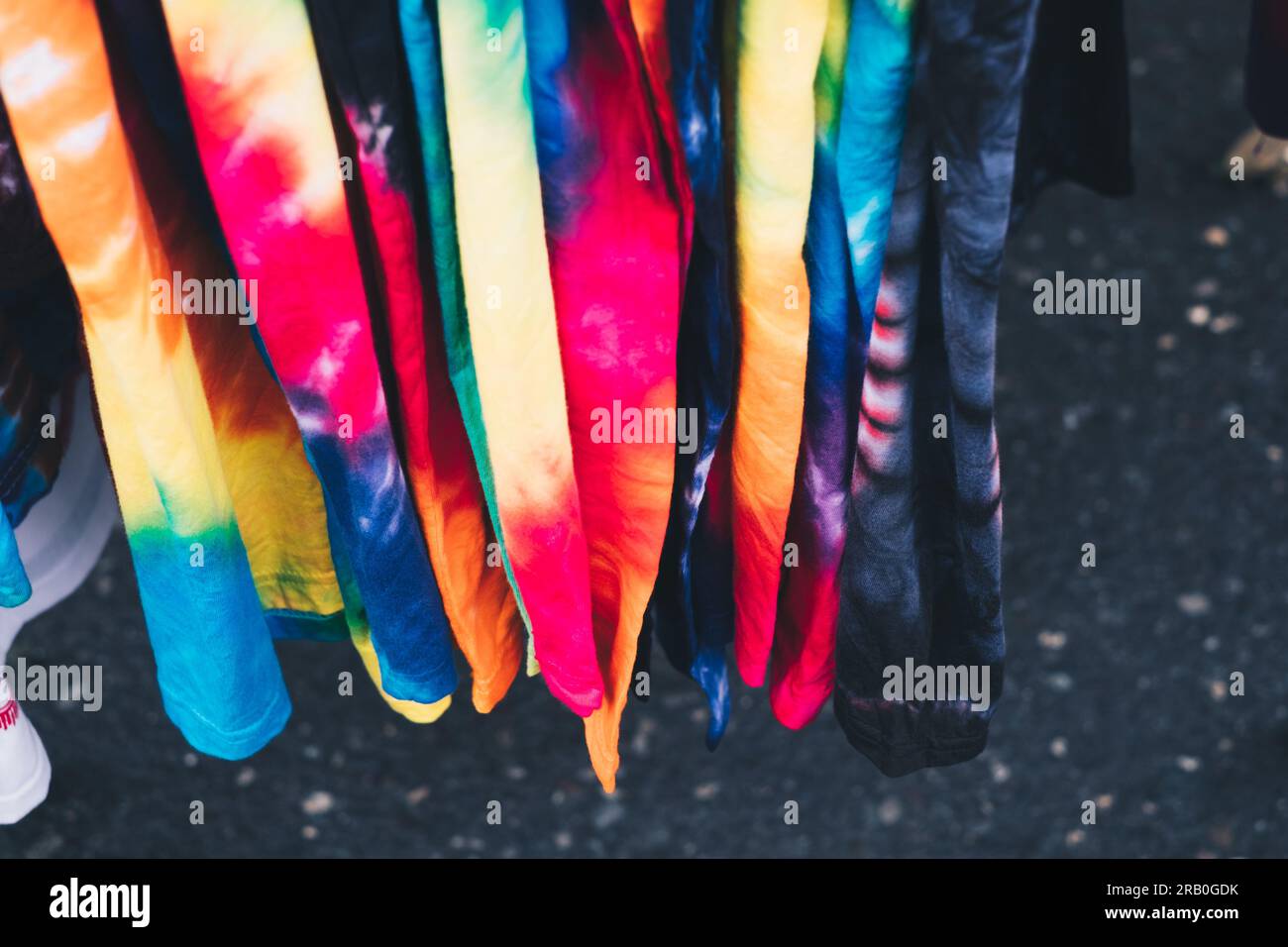 Array of colorful unisex tie-dye shirts. Selective focus. Closeup. Stock Photohttps://www.alamy.com/image-license-details/?v=1https://www.alamy.com/array-of-colorful-unisex-tie-dye-shirts-selective-focus-closeup-image557505919.html
Array of colorful unisex tie-dye shirts. Selective focus. Closeup. Stock Photohttps://www.alamy.com/image-license-details/?v=1https://www.alamy.com/array-of-colorful-unisex-tie-dye-shirts-selective-focus-closeup-image557505919.htmlRF2RB0GDK–Array of colorful unisex tie-dye shirts. Selective focus. Closeup.
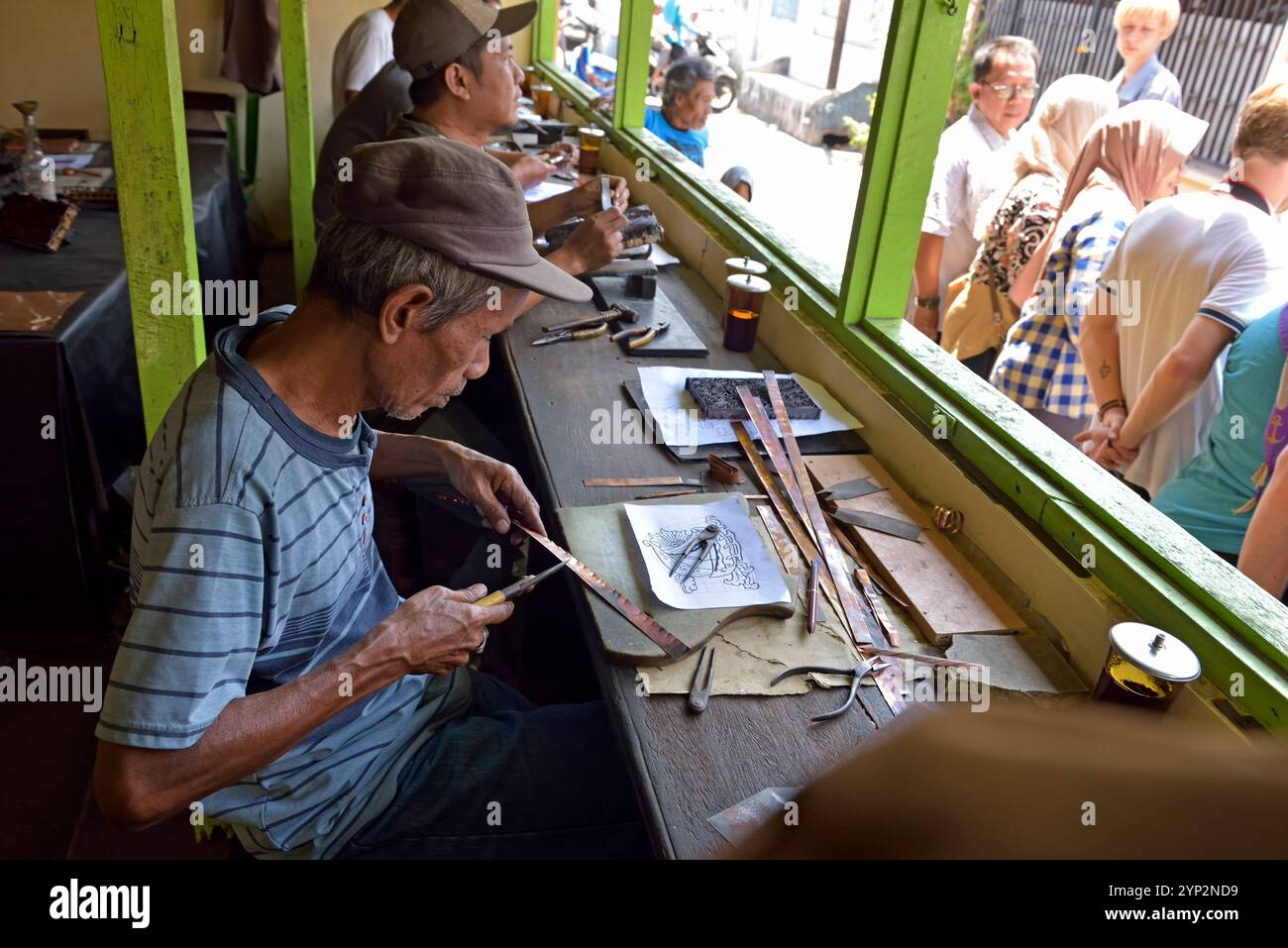 Workshop of copper plate stamps (cap) used to apply wax-resist to make pattern before dyeing in batik process, Sondakan district, Solo (Surakarta) Stock Photohttps://www.alamy.com/image-license-details/?v=1https://www.alamy.com/workshop-of-copper-plate-stamps-cap-used-to-apply-wax-resist-to-make-pattern-before-dyeing-in-batik-process-sondakan-district-solo-surakarta-image633156421.html
Workshop of copper plate stamps (cap) used to apply wax-resist to make pattern before dyeing in batik process, Sondakan district, Solo (Surakarta) Stock Photohttps://www.alamy.com/image-license-details/?v=1https://www.alamy.com/workshop-of-copper-plate-stamps-cap-used-to-apply-wax-resist-to-make-pattern-before-dyeing-in-batik-process-sondakan-district-solo-surakarta-image633156421.htmlRF2YP2ND9–Workshop of copper plate stamps (cap) used to apply wax-resist to make pattern before dyeing in batik process, Sondakan district, Solo (Surakarta)
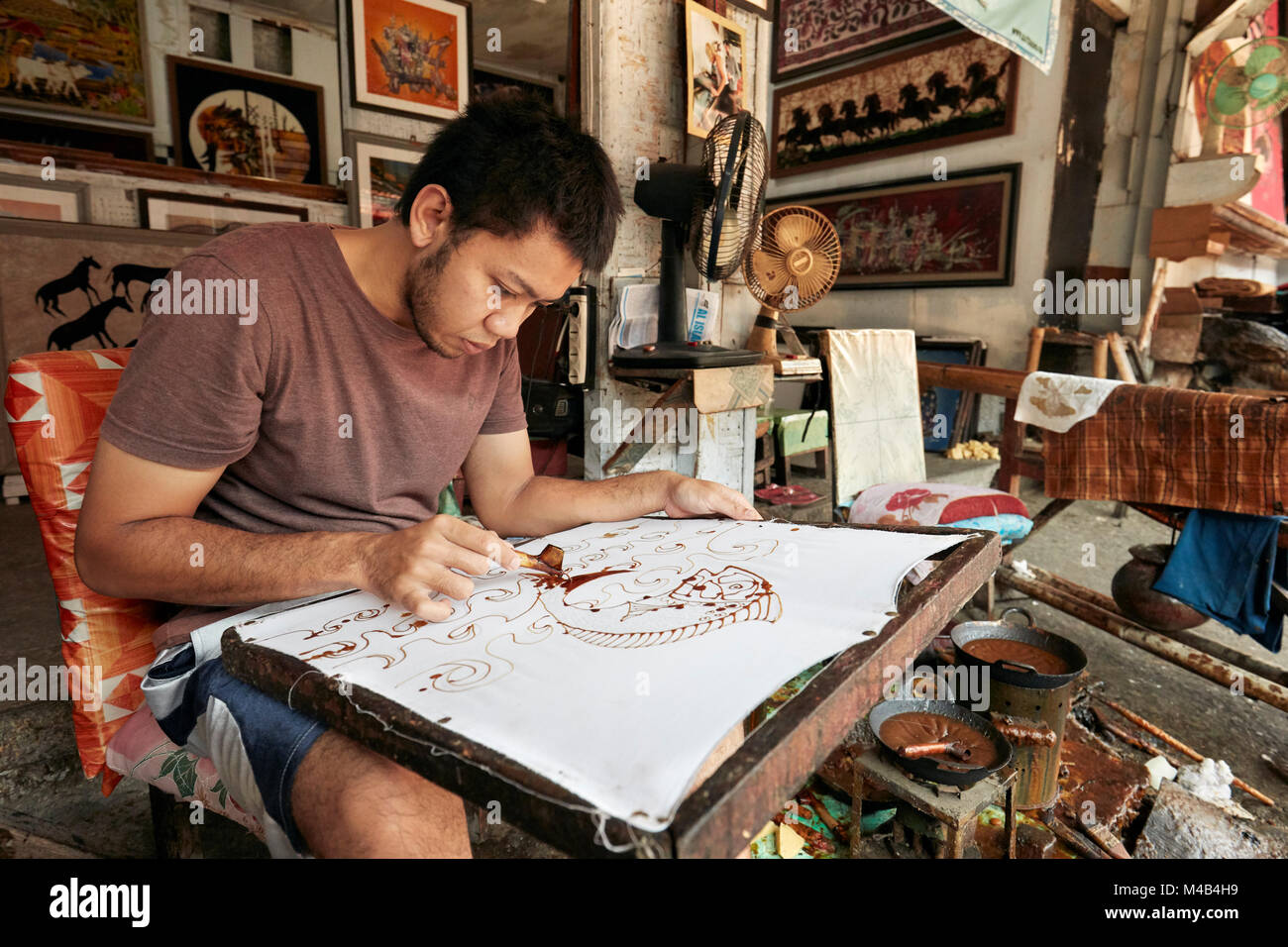 A batik maker works in his workshop at Batik Seno, a gallery in Yogyakarta, Java, Indonesia. Stock Photohttps://www.alamy.com/image-license-details/?v=1https://www.alamy.com/stock-photo-a-batik-maker-works-in-his-workshop-at-batik-seno-a-gallery-in-yogyakarta-174807397.html
A batik maker works in his workshop at Batik Seno, a gallery in Yogyakarta, Java, Indonesia. Stock Photohttps://www.alamy.com/image-license-details/?v=1https://www.alamy.com/stock-photo-a-batik-maker-works-in-his-workshop-at-batik-seno-a-gallery-in-yogyakarta-174807397.htmlRMM4B4H9–A batik maker works in his workshop at Batik Seno, a gallery in Yogyakarta, Java, Indonesia.
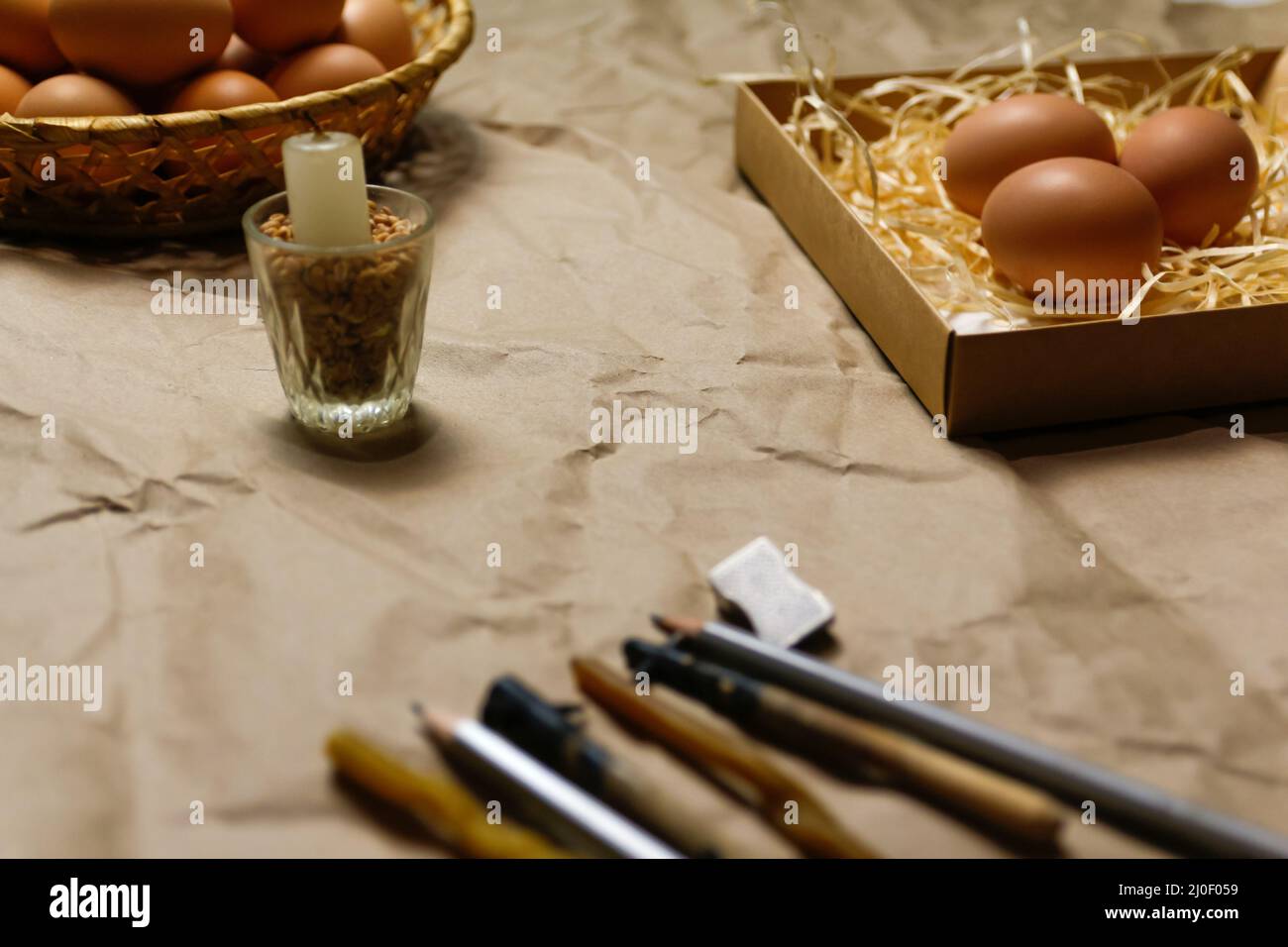 Rustic background. Tools for decorating Paschal eggs, Pysankas, with wax-resist dyeing technique. Collection of eggs. Homemade pen and melted beeswax Stock Photohttps://www.alamy.com/image-license-details/?v=1https://www.alamy.com/rustic-background-tools-for-decorating-paschal-eggs-pysankas-with-wax-resist-dyeing-technique-collection-of-eggs-homemade-pen-and-melted-beeswax-image465009365.html
Rustic background. Tools for decorating Paschal eggs, Pysankas, with wax-resist dyeing technique. Collection of eggs. Homemade pen and melted beeswax Stock Photohttps://www.alamy.com/image-license-details/?v=1https://www.alamy.com/rustic-background-tools-for-decorating-paschal-eggs-pysankas-with-wax-resist-dyeing-technique-collection-of-eggs-homemade-pen-and-melted-beeswax-image465009365.htmlRF2J0F059–Rustic background. Tools for decorating Paschal eggs, Pysankas, with wax-resist dyeing technique. Collection of eggs. Homemade pen and melted beeswax
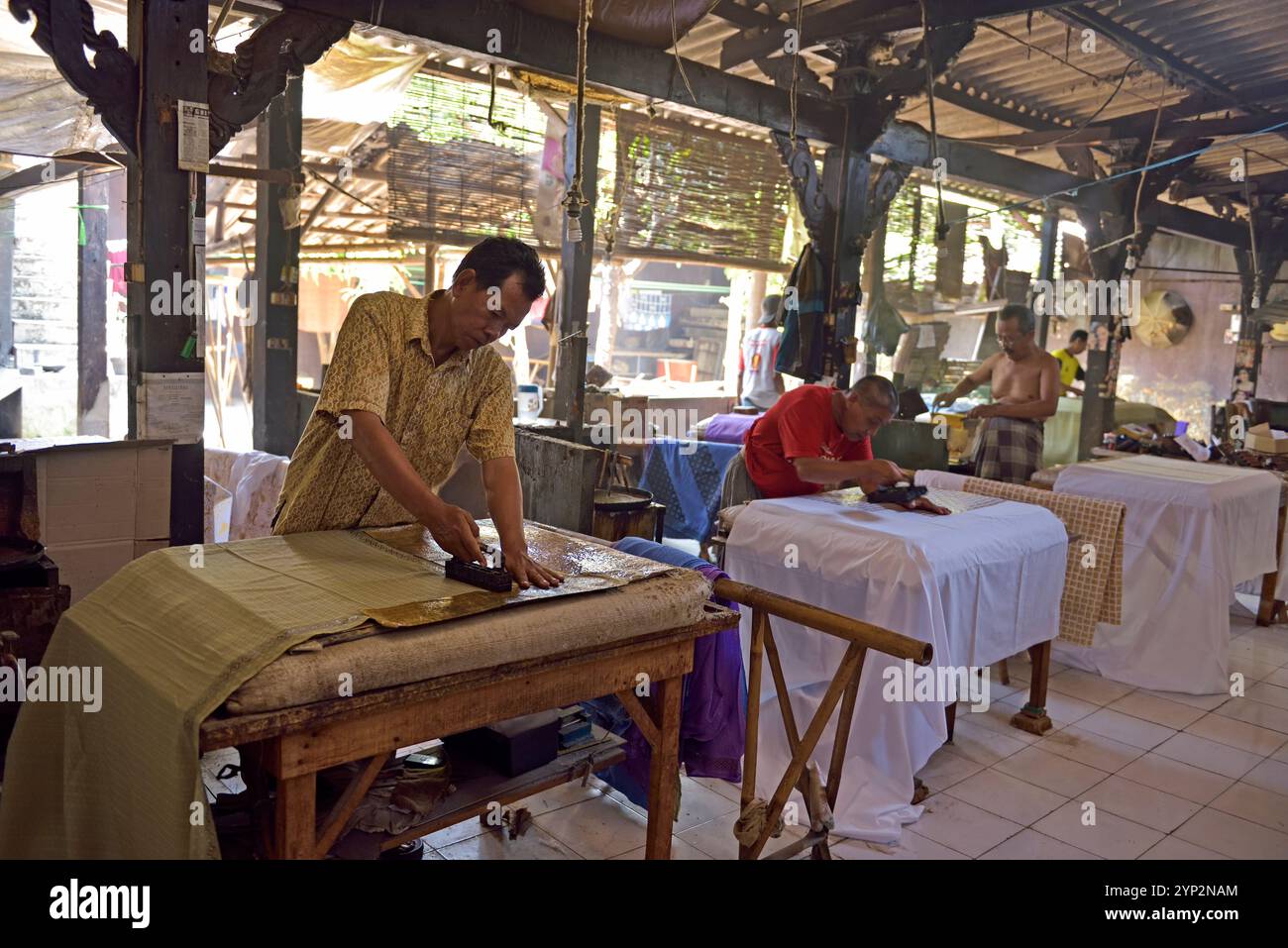 Workers applying wax-resist using a copper plate stamp (cap), Wirakuto batik workshop, Pekalongan, Java island, Indonesia, Southeast Asia, Asia Stock Photohttps://www.alamy.com/image-license-details/?v=1https://www.alamy.com/workers-applying-wax-resist-using-a-copper-plate-stamp-cap-wirakuto-batik-workshop-pekalongan-java-island-indonesia-southeast-asia-asia-image633156348.html
Workers applying wax-resist using a copper plate stamp (cap), Wirakuto batik workshop, Pekalongan, Java island, Indonesia, Southeast Asia, Asia Stock Photohttps://www.alamy.com/image-license-details/?v=1https://www.alamy.com/workers-applying-wax-resist-using-a-copper-plate-stamp-cap-wirakuto-batik-workshop-pekalongan-java-island-indonesia-southeast-asia-asia-image633156348.htmlRF2YP2NAM–Workers applying wax-resist using a copper plate stamp (cap), Wirakuto batik workshop, Pekalongan, Java island, Indonesia, Southeast Asia, Asia
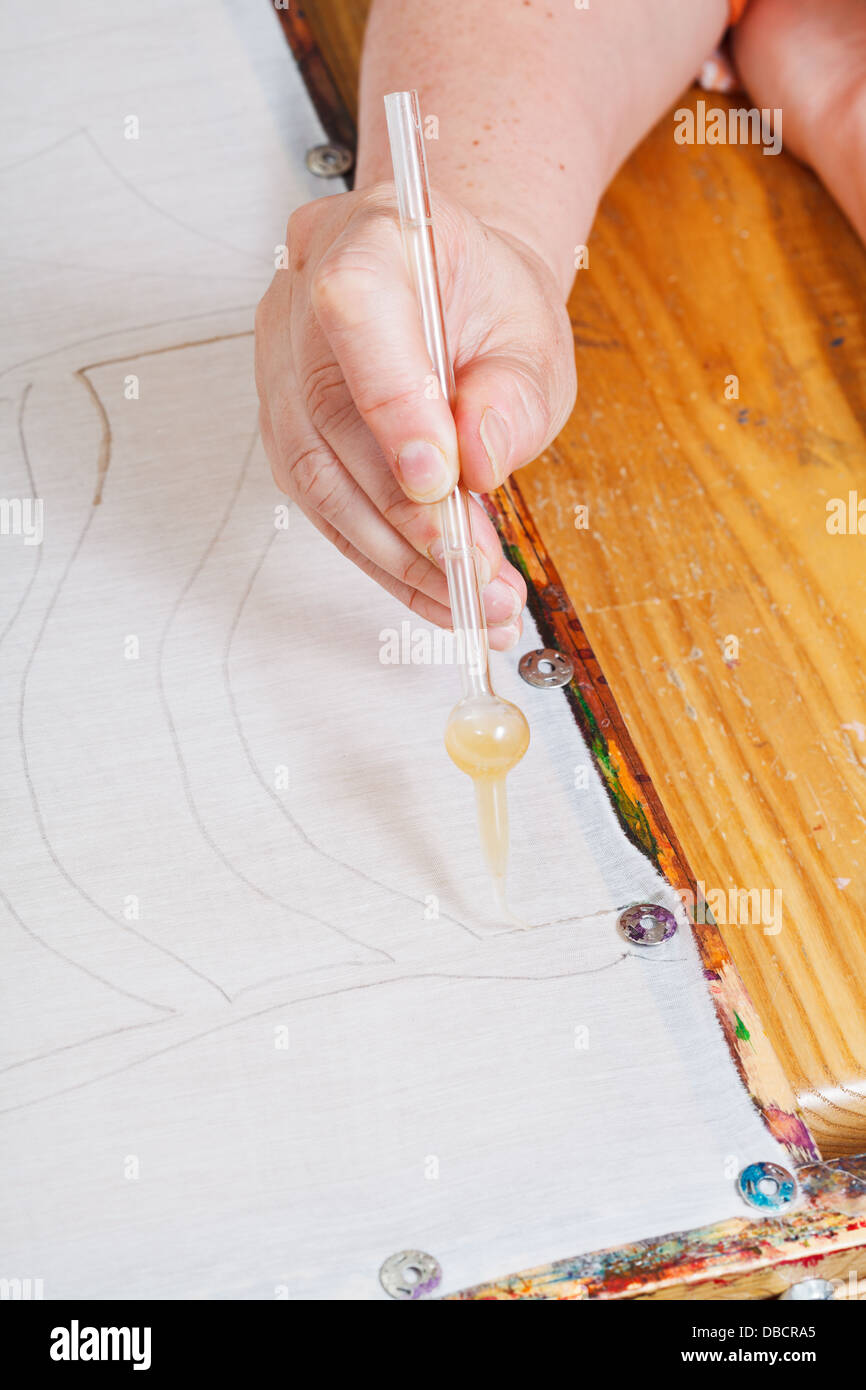 drawing of resist contour on silk for cold batik painting Stock Photohttps://www.alamy.com/image-license-details/?v=1https://www.alamy.com/stock-photo-drawing-of-resist-contour-on-silk-for-cold-batik-painting-58674061.html
drawing of resist contour on silk for cold batik painting Stock Photohttps://www.alamy.com/image-license-details/?v=1https://www.alamy.com/stock-photo-drawing-of-resist-contour-on-silk-for-cold-batik-painting-58674061.htmlRFDBCRA5–drawing of resist contour on silk for cold batik painting
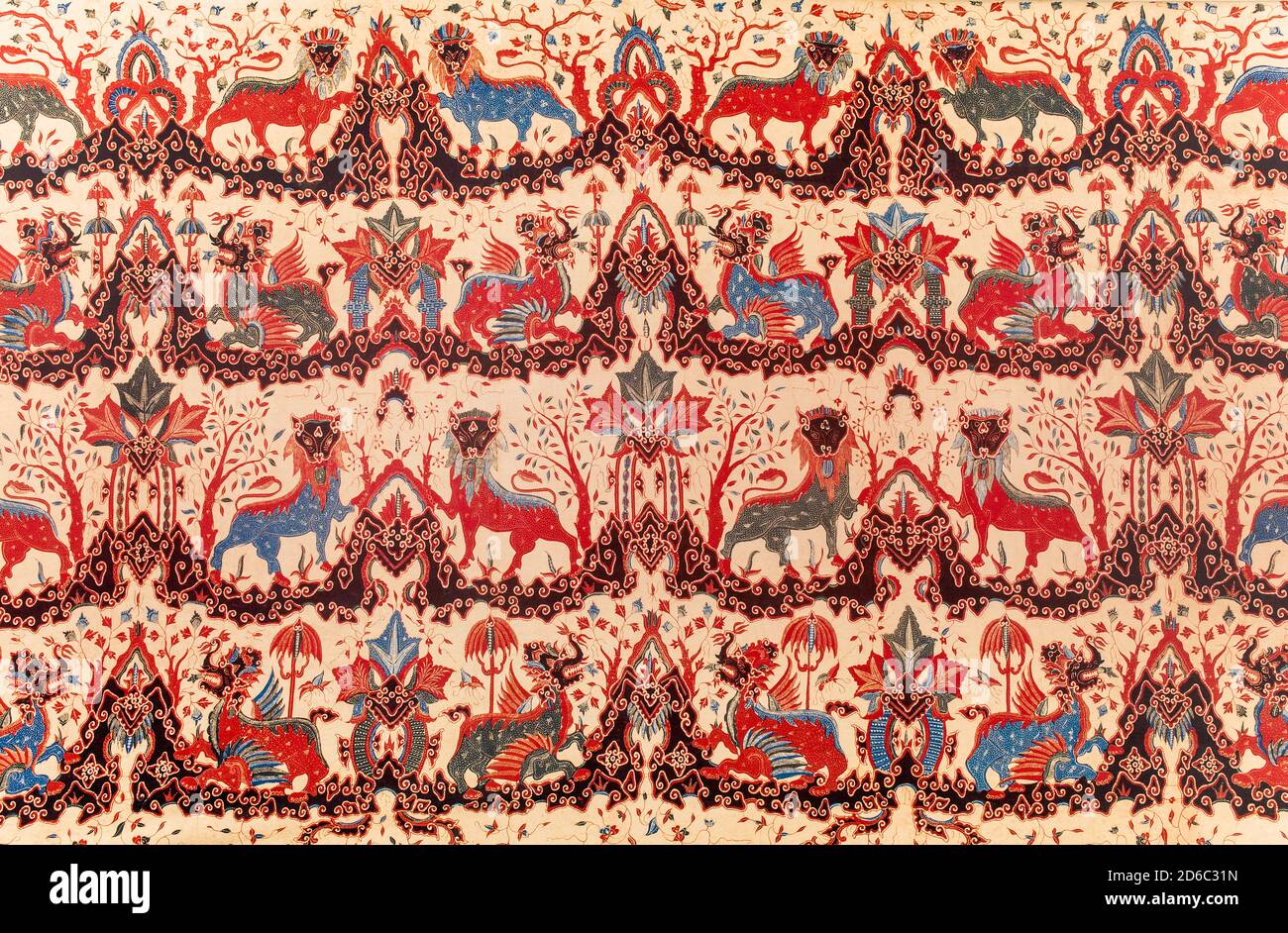 Batik Indonesian: is a technique of wax-resist dyeing applied to whole cloth, or cloth made using this technique originated from Indonesia. Stock Photohttps://www.alamy.com/image-license-details/?v=1https://www.alamy.com/batik-indonesian-is-a-technique-of-wax-resist-dyeing-applied-to-whole-cloth-or-cloth-made-using-this-technique-originated-from-indonesia-image382581857.html
Batik Indonesian: is a technique of wax-resist dyeing applied to whole cloth, or cloth made using this technique originated from Indonesia. Stock Photohttps://www.alamy.com/image-license-details/?v=1https://www.alamy.com/batik-indonesian-is-a-technique-of-wax-resist-dyeing-applied-to-whole-cloth-or-cloth-made-using-this-technique-originated-from-indonesia-image382581857.htmlRF2D6C31N–Batik Indonesian: is a technique of wax-resist dyeing applied to whole cloth, or cloth made using this technique originated from Indonesia.
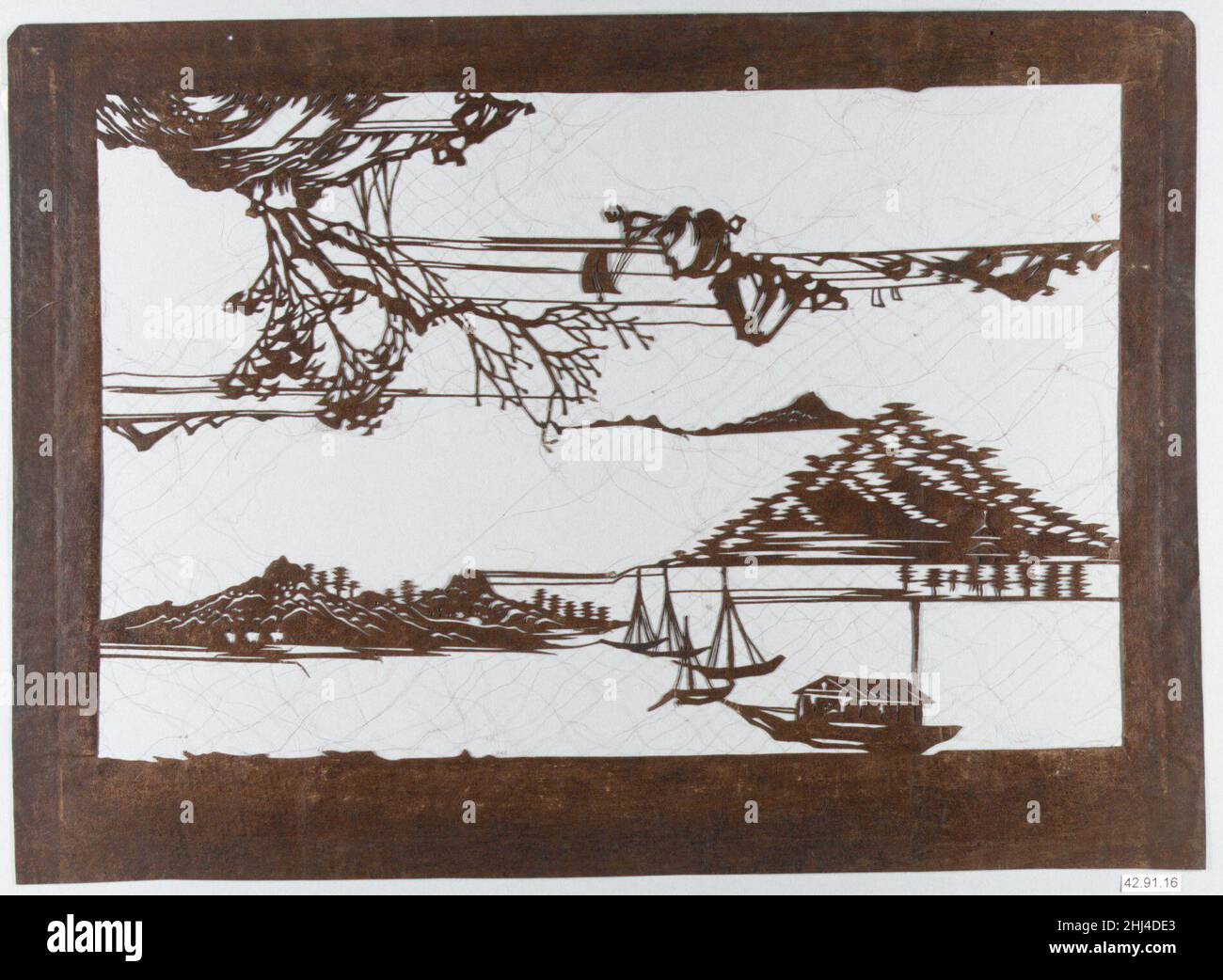 Stencil with Pattern of Seascape on White Ground 19th century Japan Stencils like these were traditionally used in Japan in a resist-dyeing process to produce lengths of patterned cloth. A length of white cloth was stretched out and paste was applied through the stencil, which was then removed to the next area and the next until the entire length was covered. The cloth was then dyed, usually with indigo, and the areas covered with the paste resisted the dye. In both of these stencils, note that half of the pattern is upside down, resulting in a finished product in which either end can serve as Stock Photohttps://www.alamy.com/image-license-details/?v=1https://www.alamy.com/stencil-with-pattern-of-seascape-on-white-ground-19th-century-japan-stencils-like-these-were-traditionally-used-in-japan-in-a-resist-dyeing-process-to-produce-lengths-of-patterned-cloth-a-length-of-white-cloth-was-stretched-out-and-paste-was-applied-through-the-stencil-which-was-then-removed-to-the-next-area-and-the-next-until-the-entire-length-was-covered-the-cloth-was-then-dyed-usually-with-indigo-and-the-areas-covered-with-the-paste-resisted-the-dye-in-both-of-these-stencils-note-that-half-of-the-pattern-is-upside-down-resulting-in-a-finished-product-in-which-either-end-can-serve-as-image458631771.html
Stencil with Pattern of Seascape on White Ground 19th century Japan Stencils like these were traditionally used in Japan in a resist-dyeing process to produce lengths of patterned cloth. A length of white cloth was stretched out and paste was applied through the stencil, which was then removed to the next area and the next until the entire length was covered. The cloth was then dyed, usually with indigo, and the areas covered with the paste resisted the dye. In both of these stencils, note that half of the pattern is upside down, resulting in a finished product in which either end can serve as Stock Photohttps://www.alamy.com/image-license-details/?v=1https://www.alamy.com/stencil-with-pattern-of-seascape-on-white-ground-19th-century-japan-stencils-like-these-were-traditionally-used-in-japan-in-a-resist-dyeing-process-to-produce-lengths-of-patterned-cloth-a-length-of-white-cloth-was-stretched-out-and-paste-was-applied-through-the-stencil-which-was-then-removed-to-the-next-area-and-the-next-until-the-entire-length-was-covered-the-cloth-was-then-dyed-usually-with-indigo-and-the-areas-covered-with-the-paste-resisted-the-dye-in-both-of-these-stencils-note-that-half-of-the-pattern-is-upside-down-resulting-in-a-finished-product-in-which-either-end-can-serve-as-image458631771.htmlRM2HJ4DE3–Stencil with Pattern of Seascape on White Ground 19th century Japan Stencils like these were traditionally used in Japan in a resist-dyeing process to produce lengths of patterned cloth. A length of white cloth was stretched out and paste was applied through the stencil, which was then removed to the next area and the next until the entire length was covered. The cloth was then dyed, usually with indigo, and the areas covered with the paste resisted the dye. In both of these stencils, note that half of the pattern is upside down, resulting in a finished product in which either end can serve as
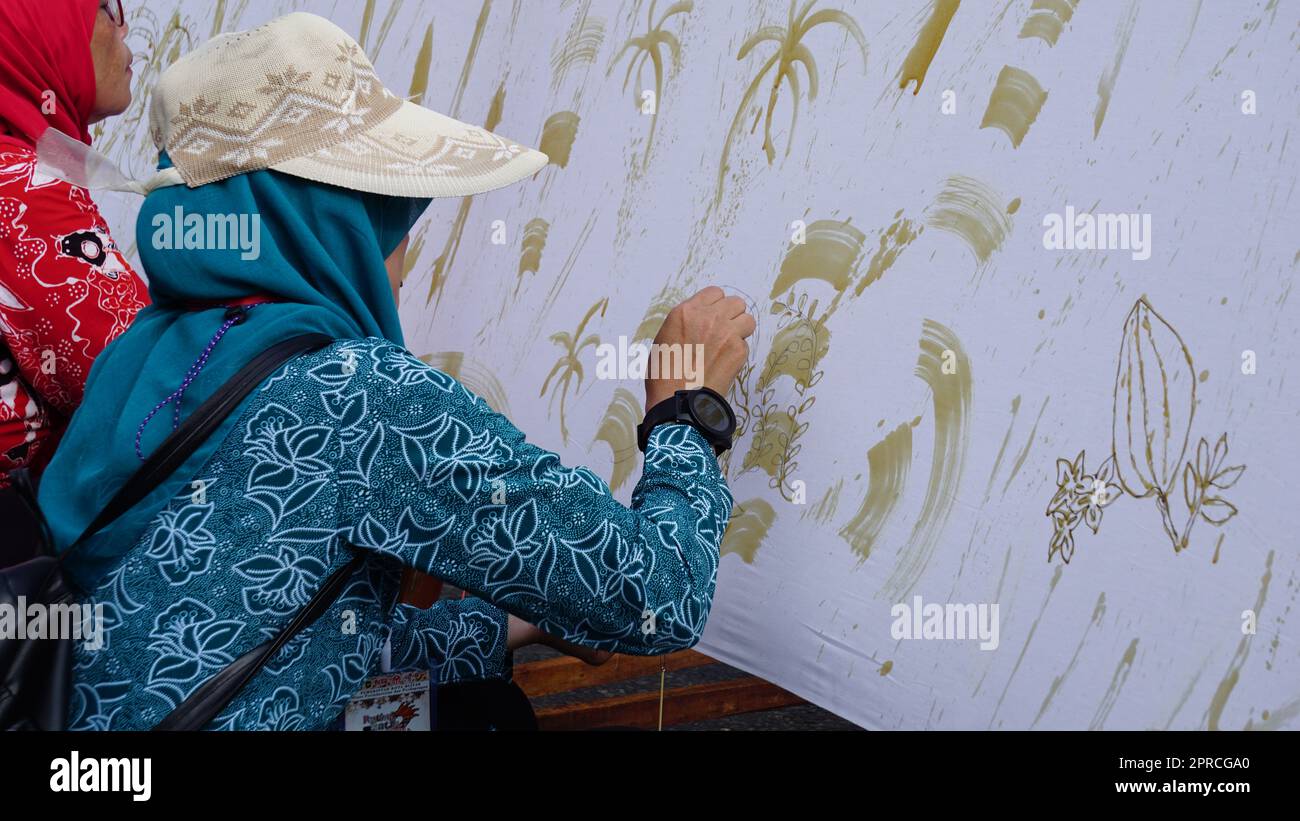 The process of making batik on Festival Batik Keren Blitar. Batik is a handmade ancient art from Indonesia. Produced by technique of wax-resist dyeing Stock Photohttps://www.alamy.com/image-license-details/?v=1https://www.alamy.com/the-process-of-making-batik-on-festival-batik-keren-blitar-batik-is-a-handmade-ancient-art-from-indonesia-produced-by-technique-of-wax-resist-dyeing-image547934744.html
The process of making batik on Festival Batik Keren Blitar. Batik is a handmade ancient art from Indonesia. Produced by technique of wax-resist dyeing Stock Photohttps://www.alamy.com/image-license-details/?v=1https://www.alamy.com/the-process-of-making-batik-on-festival-batik-keren-blitar-batik-is-a-handmade-ancient-art-from-indonesia-produced-by-technique-of-wax-resist-dyeing-image547934744.htmlRF2PRCGA0–The process of making batik on Festival Batik Keren Blitar. Batik is a handmade ancient art from Indonesia. Produced by technique of wax-resist dyeing
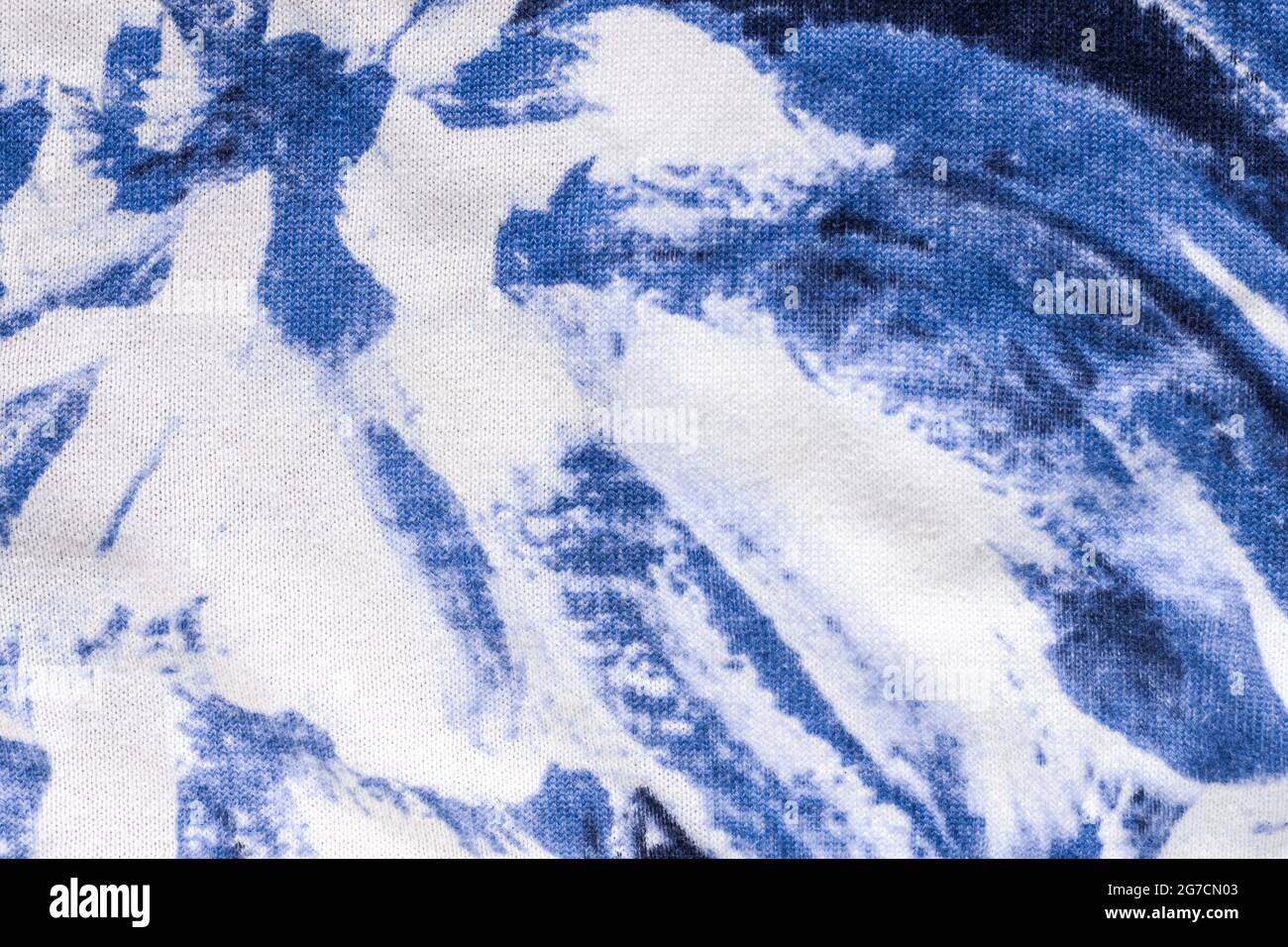 Tie-dye cotton fabric texture blue and white paint colors. Ancient resist-dyeing textile coloring technique, saturated primary colors, bold patterns, Stock Photohttps://www.alamy.com/image-license-details/?v=1https://www.alamy.com/tie-dye-cotton-fabric-texture-blue-and-white-paint-colors-ancient-resist-dyeing-textile-coloring-technique-saturated-primary-colors-bold-patterns-image434841683.html
Tie-dye cotton fabric texture blue and white paint colors. Ancient resist-dyeing textile coloring technique, saturated primary colors, bold patterns, Stock Photohttps://www.alamy.com/image-license-details/?v=1https://www.alamy.com/tie-dye-cotton-fabric-texture-blue-and-white-paint-colors-ancient-resist-dyeing-textile-coloring-technique-saturated-primary-colors-bold-patterns-image434841683.htmlRF2G7CN03–Tie-dye cotton fabric texture blue and white paint colors. Ancient resist-dyeing textile coloring technique, saturated primary colors, bold patterns,
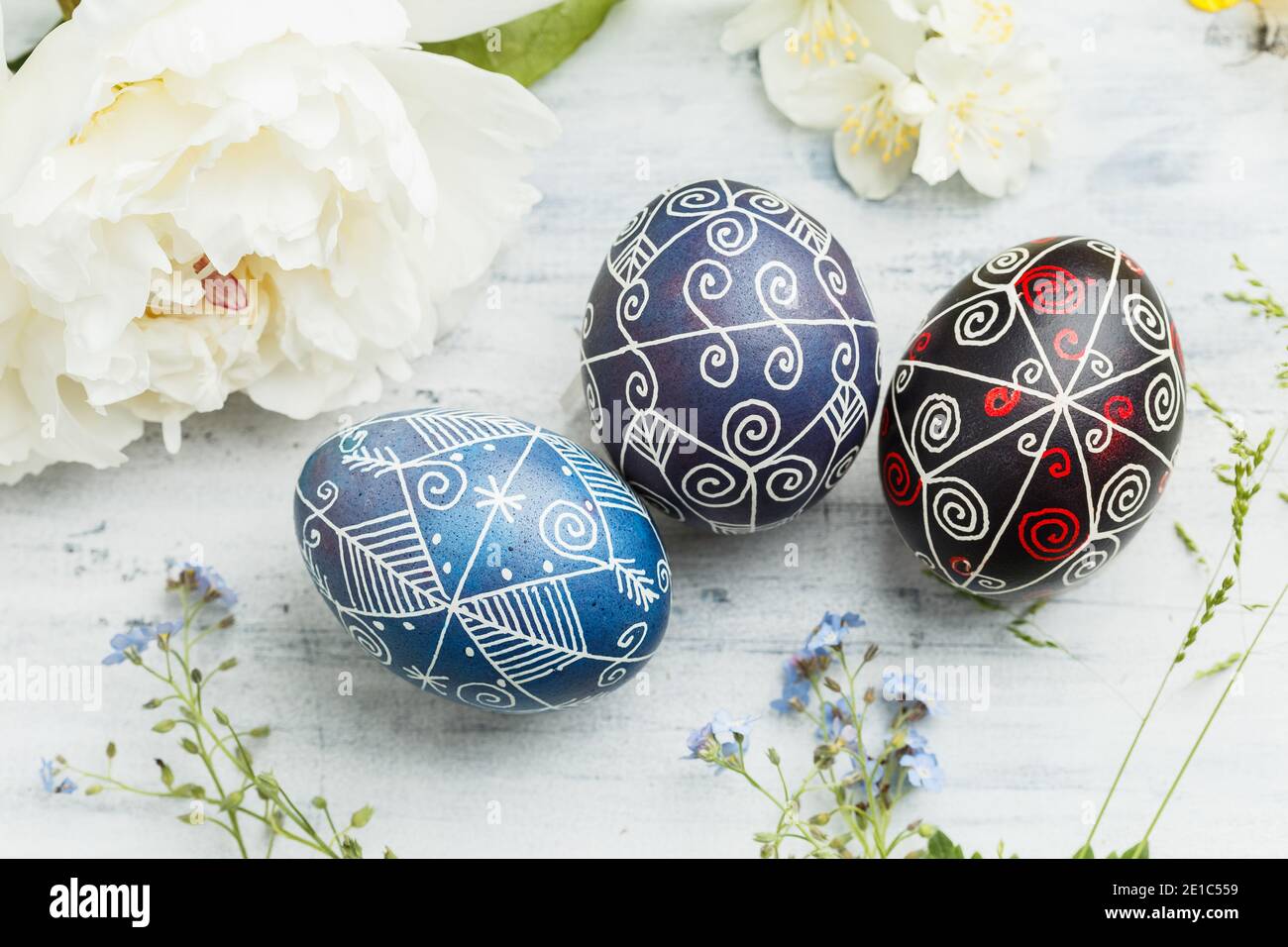 Three pysanky handmade Easter eggs. Ukrainian pysanky decorated with wax-resist dyeing technique. Holiday postcard Stock Photohttps://www.alamy.com/image-license-details/?v=1https://www.alamy.com/three-pysanky-handmade-easter-eggs-ukrainian-pysanky-decorated-with-wax-resist-dyeing-technique-holiday-postcard-image396720613.html
Three pysanky handmade Easter eggs. Ukrainian pysanky decorated with wax-resist dyeing technique. Holiday postcard Stock Photohttps://www.alamy.com/image-license-details/?v=1https://www.alamy.com/three-pysanky-handmade-easter-eggs-ukrainian-pysanky-decorated-with-wax-resist-dyeing-technique-holiday-postcard-image396720613.htmlRF2E1C559–Three pysanky handmade Easter eggs. Ukrainian pysanky decorated with wax-resist dyeing technique. Holiday postcard
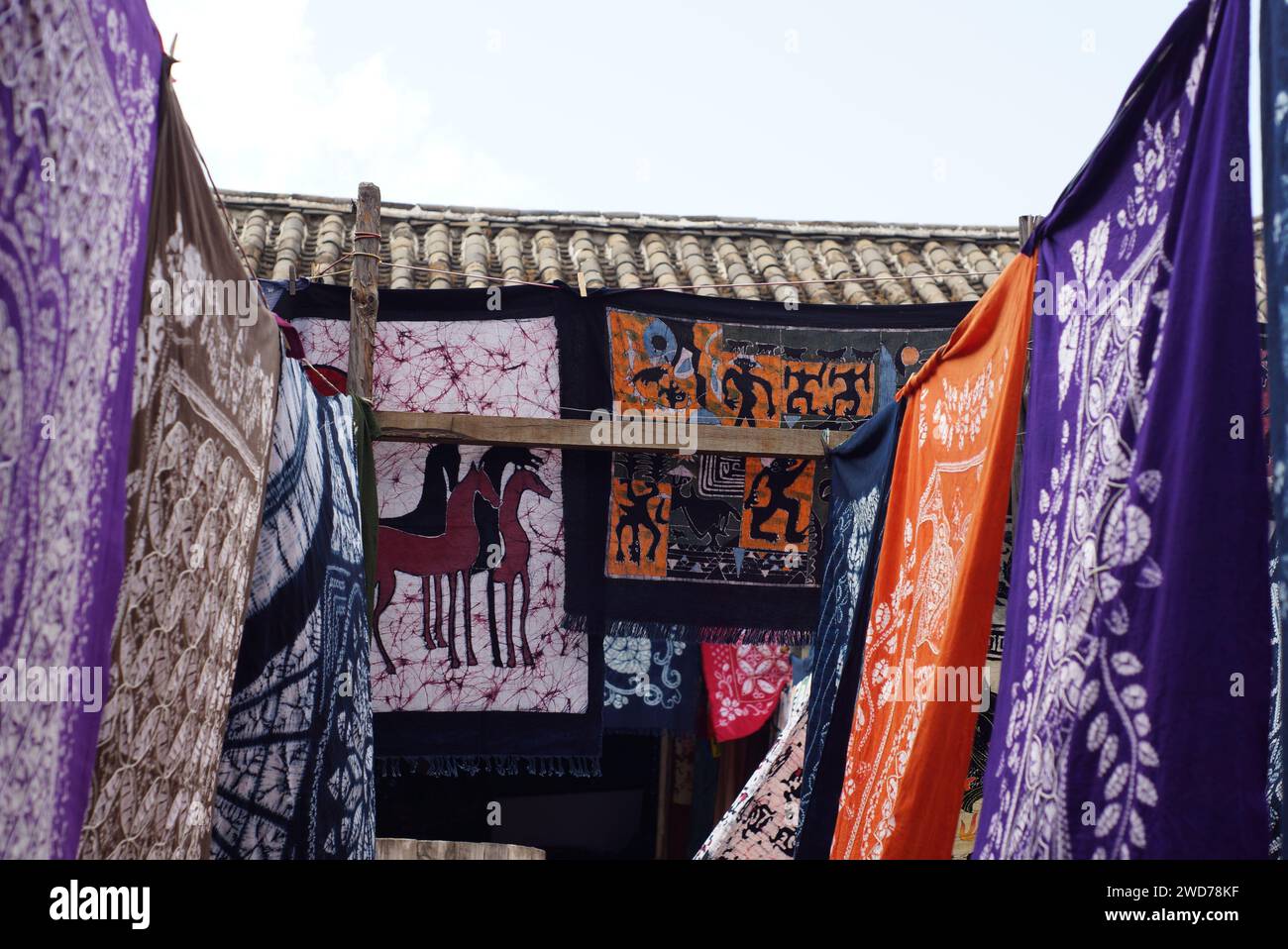 dyeing factory in the Shuhe area. one of traditional culture in yunnan Stock Photohttps://www.alamy.com/image-license-details/?v=1https://www.alamy.com/dyeing-factory-in-the-shuhe-area-one-of-traditional-culture-in-yunnan-image593303523.html
dyeing factory in the Shuhe area. one of traditional culture in yunnan Stock Photohttps://www.alamy.com/image-license-details/?v=1https://www.alamy.com/dyeing-factory-in-the-shuhe-area-one-of-traditional-culture-in-yunnan-image593303523.htmlRF2WD78KF–dyeing factory in the Shuhe area. one of traditional culture in yunnan
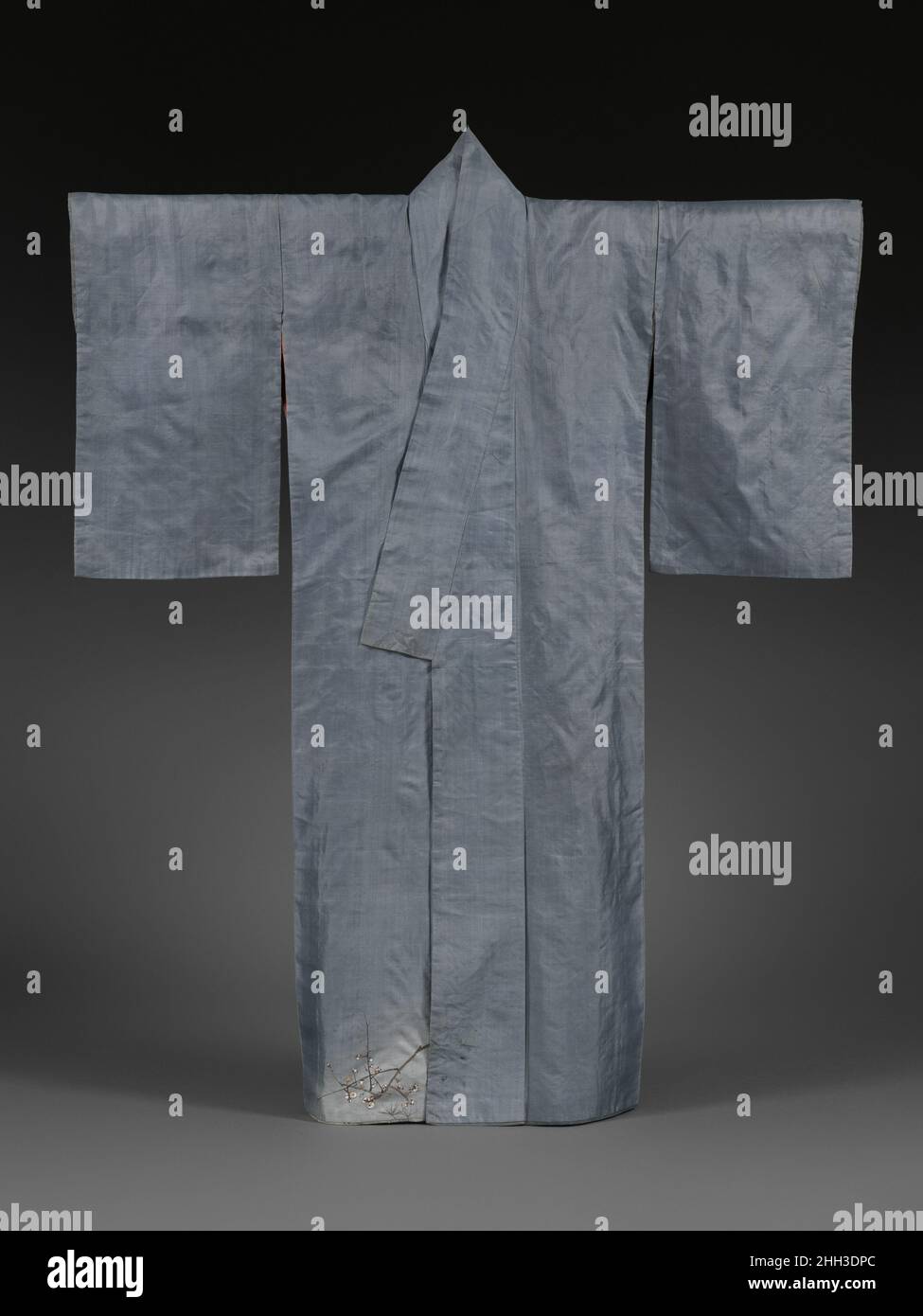 Kimono with Blossoming Plum Tree second half of the 19th century Japan Paste-resist dyeing, along with skillful use of a shading technique, finely renders the gradual progression from white to dark gray on this garment. Early Meiji period kimonos often have gray or black grounds and decoration concentrated along the hemline. Here, the plum tree, painted in ink and pigments and embroidered with silk and occasional glints of gold, seems to glow in soft moonlight, while the rest of the robe is in shadow. The design scheme is based on the kosode style that became popular among ch?nin women at the Stock Photohttps://www.alamy.com/image-license-details/?v=1https://www.alamy.com/kimono-with-blossoming-plum-tree-second-half-of-the-19th-century-japan-paste-resist-dyeing-along-with-skillful-use-of-a-shading-technique-finely-renders-the-gradual-progression-from-white-to-dark-gray-on-this-garment-early-meiji-period-kimonos-often-have-gray-or-black-grounds-and-decoration-concentrated-along-the-hemline-here-the-plum-tree-painted-in-ink-and-pigments-and-embroidered-with-silk-and-occasional-glints-of-gold-seems-to-glow-in-soft-moonlight-while-the-rest-of-the-robe-is-in-shadow-the-design-scheme-is-based-on-the-kosode-style-that-became-popular-among-chnin-women-at-the-image457995396.html
Kimono with Blossoming Plum Tree second half of the 19th century Japan Paste-resist dyeing, along with skillful use of a shading technique, finely renders the gradual progression from white to dark gray on this garment. Early Meiji period kimonos often have gray or black grounds and decoration concentrated along the hemline. Here, the plum tree, painted in ink and pigments and embroidered with silk and occasional glints of gold, seems to glow in soft moonlight, while the rest of the robe is in shadow. The design scheme is based on the kosode style that became popular among ch?nin women at the Stock Photohttps://www.alamy.com/image-license-details/?v=1https://www.alamy.com/kimono-with-blossoming-plum-tree-second-half-of-the-19th-century-japan-paste-resist-dyeing-along-with-skillful-use-of-a-shading-technique-finely-renders-the-gradual-progression-from-white-to-dark-gray-on-this-garment-early-meiji-period-kimonos-often-have-gray-or-black-grounds-and-decoration-concentrated-along-the-hemline-here-the-plum-tree-painted-in-ink-and-pigments-and-embroidered-with-silk-and-occasional-glints-of-gold-seems-to-glow-in-soft-moonlight-while-the-rest-of-the-robe-is-in-shadow-the-design-scheme-is-based-on-the-kosode-style-that-became-popular-among-chnin-women-at-the-image457995396.htmlRM2HH3DPC–Kimono with Blossoming Plum Tree second half of the 19th century Japan Paste-resist dyeing, along with skillful use of a shading technique, finely renders the gradual progression from white to dark gray on this garment. Early Meiji period kimonos often have gray or black grounds and decoration concentrated along the hemline. Here, the plum tree, painted in ink and pigments and embroidered with silk and occasional glints of gold, seems to glow in soft moonlight, while the rest of the robe is in shadow. The design scheme is based on the kosode style that became popular among ch?nin women at the
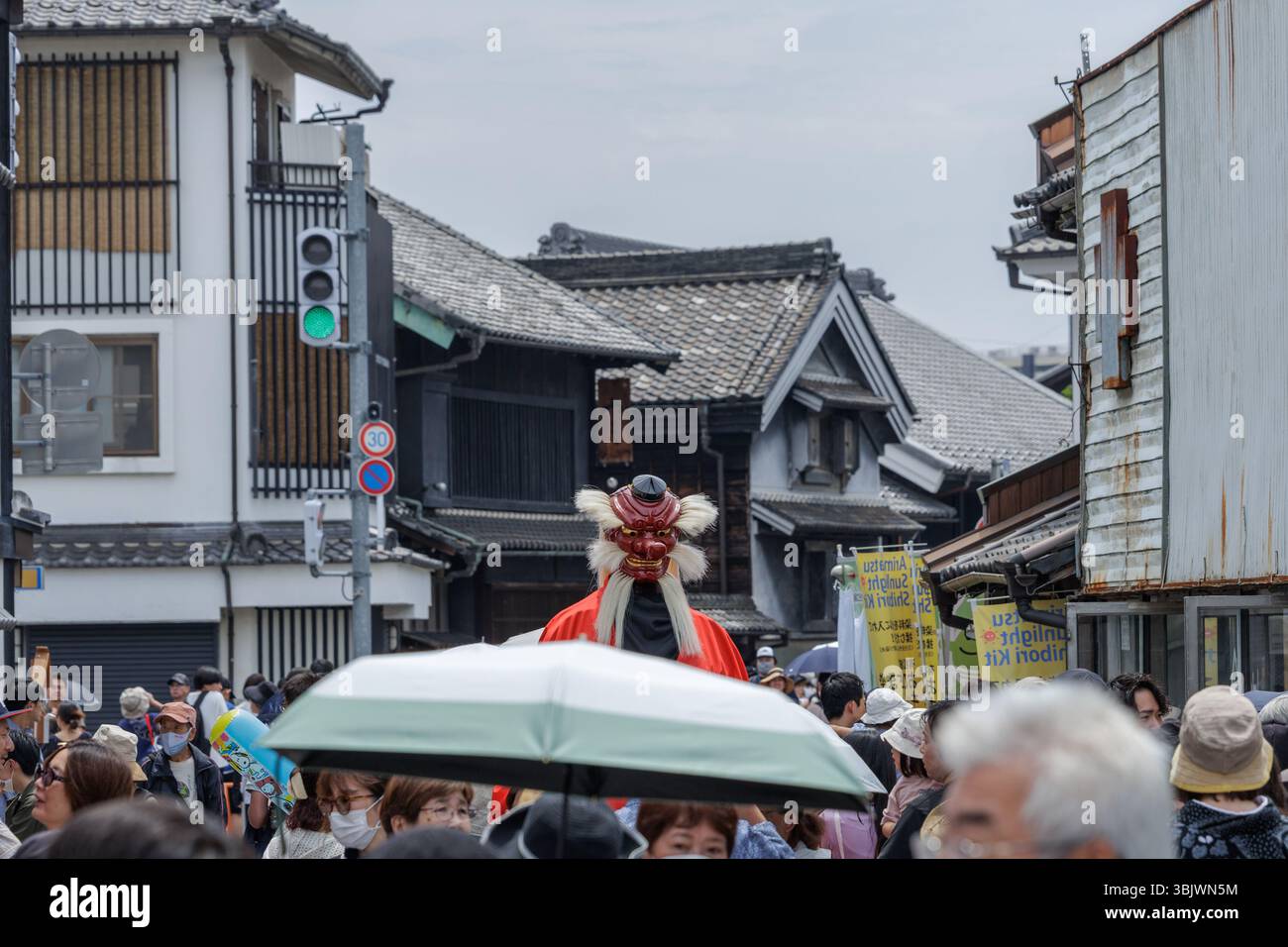 Performer wearing traditional Japanese Oni mask is focus on crowded street during annual Japanese festival for Arimatsu-shibori, or resist-dyeing. Stock Photohttps://www.alamy.com/image-license-details/?v=1https://www.alamy.com/performer-wearing-traditional-japanese-oni-mask-is-focus-on-crowded-street-during-annual-japanese-festival-for-arimatsu-shibori-or-resist-dyeing-image682833584.html
Performer wearing traditional Japanese Oni mask is focus on crowded street during annual Japanese festival for Arimatsu-shibori, or resist-dyeing. Stock Photohttps://www.alamy.com/image-license-details/?v=1https://www.alamy.com/performer-wearing-traditional-japanese-oni-mask-is-focus-on-crowded-street-during-annual-japanese-festival-for-arimatsu-shibori-or-resist-dyeing-image682833584.htmlRF3BJWN5M–Performer wearing traditional Japanese Oni mask is focus on crowded street during annual Japanese festival for Arimatsu-shibori, or resist-dyeing.
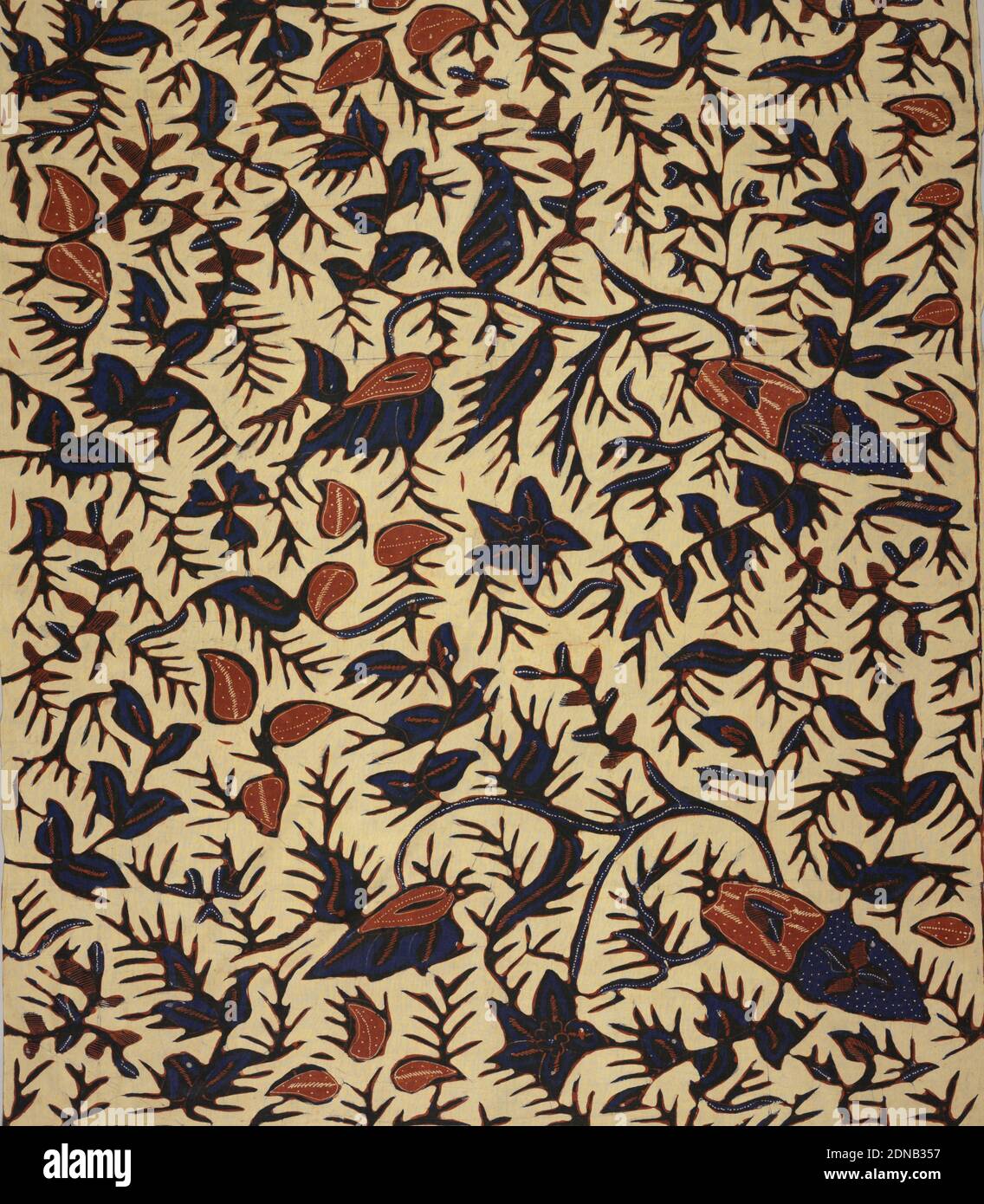 Sarong, Medium: cotton Technique: wax resist dyeing (batik) on plain weave, A sarong with cream ground and highly conventionalized large-scale floral and foliate design in blue, white, and brown., Indonesia, 19th century, printed, dyed & painted textiles, Sarong Stock Photohttps://www.alamy.com/image-license-details/?v=1https://www.alamy.com/sarong-medium-cotton-technique-wax-resist-dyeing-batik-on-plain-weave-a-sarong-with-cream-ground-and-highly-conventionalized-large-scale-floral-and-foliate-design-in-blue-white-and-brown-indonesia-19th-century-printed-dyed-painted-textiles-sarong-image391779843.html
Sarong, Medium: cotton Technique: wax resist dyeing (batik) on plain weave, A sarong with cream ground and highly conventionalized large-scale floral and foliate design in blue, white, and brown., Indonesia, 19th century, printed, dyed & painted textiles, Sarong Stock Photohttps://www.alamy.com/image-license-details/?v=1https://www.alamy.com/sarong-medium-cotton-technique-wax-resist-dyeing-batik-on-plain-weave-a-sarong-with-cream-ground-and-highly-conventionalized-large-scale-floral-and-foliate-design-in-blue-white-and-brown-indonesia-19th-century-printed-dyed-painted-textiles-sarong-image391779843.htmlRM2DNB357–Sarong, Medium: cotton Technique: wax resist dyeing (batik) on plain weave, A sarong with cream ground and highly conventionalized large-scale floral and foliate design in blue, white, and brown., Indonesia, 19th century, printed, dyed & painted textiles, Sarong
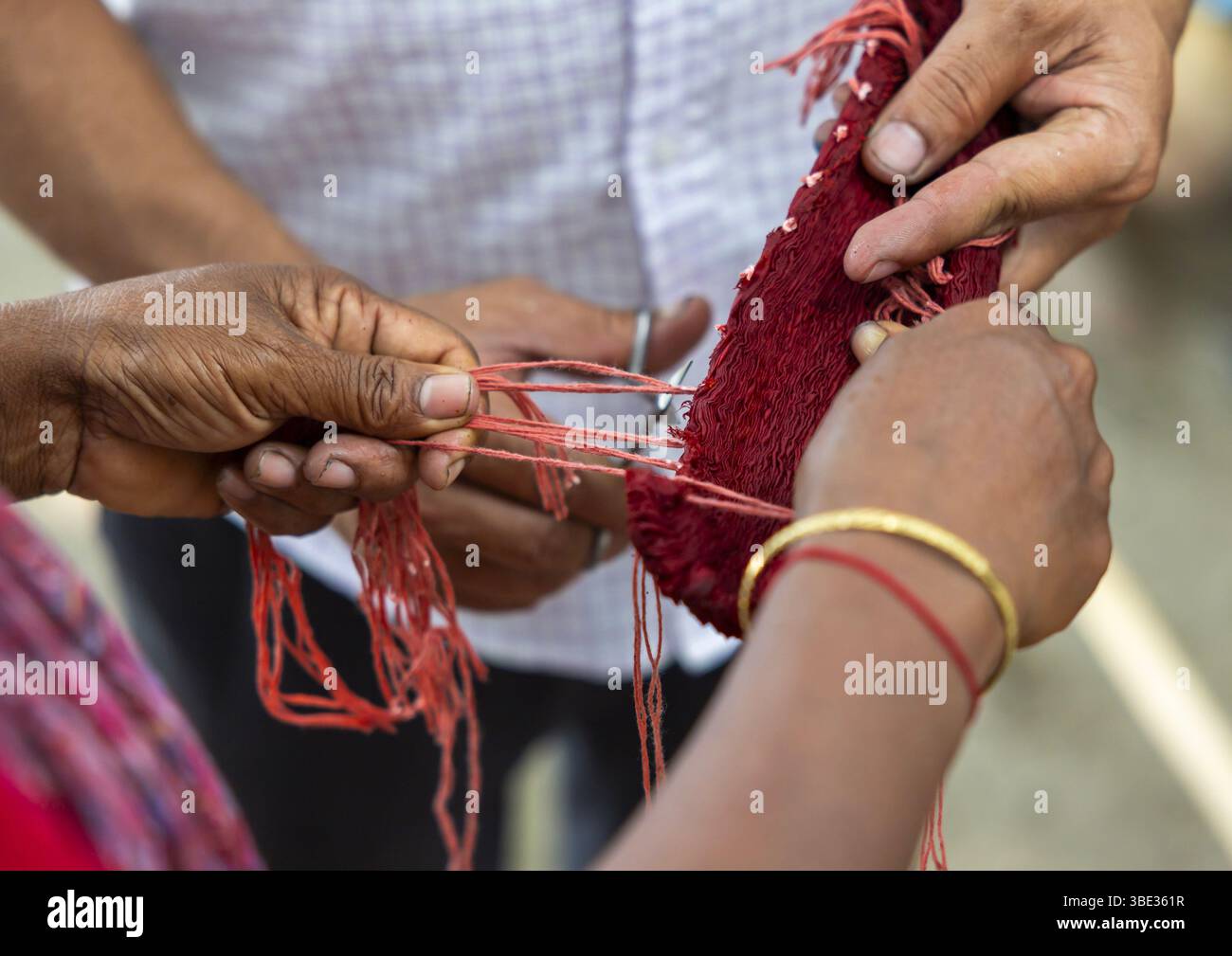 Shawl made with red tie-dye resist dyeing technique in Living Blue, Rangpur Division, Goalpara, Bangladesh Stock Photohttps://www.alamy.com/image-license-details/?v=1https://www.alamy.com/shawl-made-with-red-tie-dye-resist-dyeing-technique-in-living-blue-rangpur-division-goalpara-bangladesh-image679880147.html
Shawl made with red tie-dye resist dyeing technique in Living Blue, Rangpur Division, Goalpara, Bangladesh Stock Photohttps://www.alamy.com/image-license-details/?v=1https://www.alamy.com/shawl-made-with-red-tie-dye-resist-dyeing-technique-in-living-blue-rangpur-division-goalpara-bangladesh-image679880147.htmlRM3BE361R–Shawl made with red tie-dye resist dyeing technique in Living Blue, Rangpur Division, Goalpara, Bangladesh
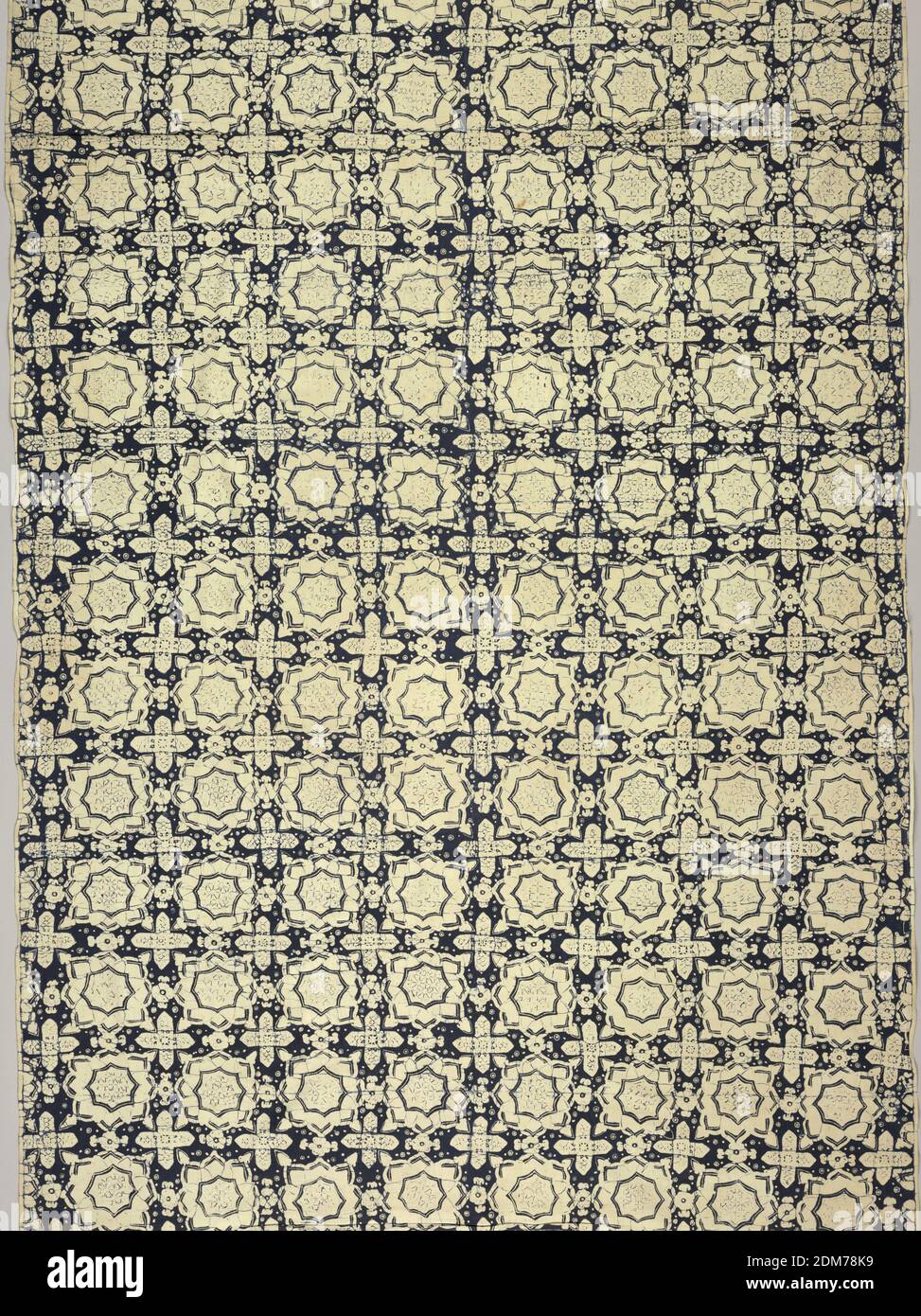 Kain panjang (long sarong), Medium: cotton Technique: wax resist dyeing (batik) on plain weave, Long sarong (kain panjang) in blue and white batik, showing a stylized all-over floral pattern., Indonesia, 19th century, printed, dyed & painted textiles, Kain panjang (long sarong Stock Photohttps://www.alamy.com/image-license-details/?v=1https://www.alamy.com/kain-panjang-long-sarong-medium-cotton-technique-wax-resist-dyeing-batik-on-plain-weave-long-sarong-kain-panjang-in-blue-and-white-batik-showing-a-stylized-all-over-floral-pattern-indonesia-19th-century-printed-dyed-painted-textiles-kain-panjang-long-sarong-image391081693.html
Kain panjang (long sarong), Medium: cotton Technique: wax resist dyeing (batik) on plain weave, Long sarong (kain panjang) in blue and white batik, showing a stylized all-over floral pattern., Indonesia, 19th century, printed, dyed & painted textiles, Kain panjang (long sarong Stock Photohttps://www.alamy.com/image-license-details/?v=1https://www.alamy.com/kain-panjang-long-sarong-medium-cotton-technique-wax-resist-dyeing-batik-on-plain-weave-long-sarong-kain-panjang-in-blue-and-white-batik-showing-a-stylized-all-over-floral-pattern-indonesia-19th-century-printed-dyed-painted-textiles-kain-panjang-long-sarong-image391081693.htmlRM2DM78K9–Kain panjang (long sarong), Medium: cotton Technique: wax resist dyeing (batik) on plain weave, Long sarong (kain panjang) in blue and white batik, showing a stylized all-over floral pattern., Indonesia, 19th century, printed, dyed & painted textiles, Kain panjang (long sarong
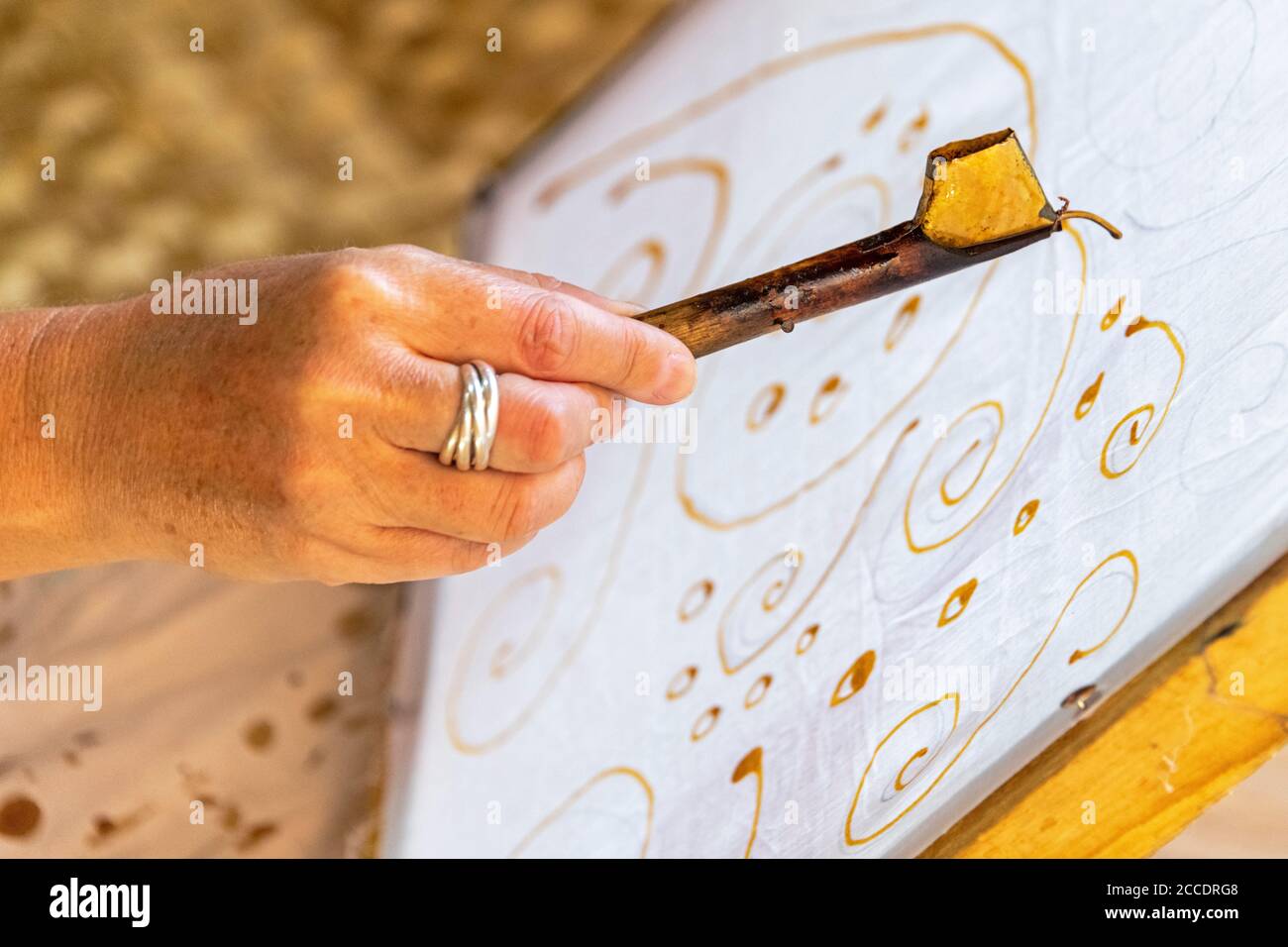 Batik is an traditional Balinese art technique of wax-resist dyeing applied to whole cloth. This technique originated from Java but has become popular Stock Photohttps://www.alamy.com/image-license-details/?v=1https://www.alamy.com/batik-is-an-traditional-balinese-art-technique-of-wax-resist-dyeing-applied-to-whole-cloth-this-technique-originated-from-java-but-has-become-popular-image369097464.html
Batik is an traditional Balinese art technique of wax-resist dyeing applied to whole cloth. This technique originated from Java but has become popular Stock Photohttps://www.alamy.com/image-license-details/?v=1https://www.alamy.com/batik-is-an-traditional-balinese-art-technique-of-wax-resist-dyeing-applied-to-whole-cloth-this-technique-originated-from-java-but-has-become-popular-image369097464.htmlRF2CCDRG8–Batik is an traditional Balinese art technique of wax-resist dyeing applied to whole cloth. This technique originated from Java but has become popular
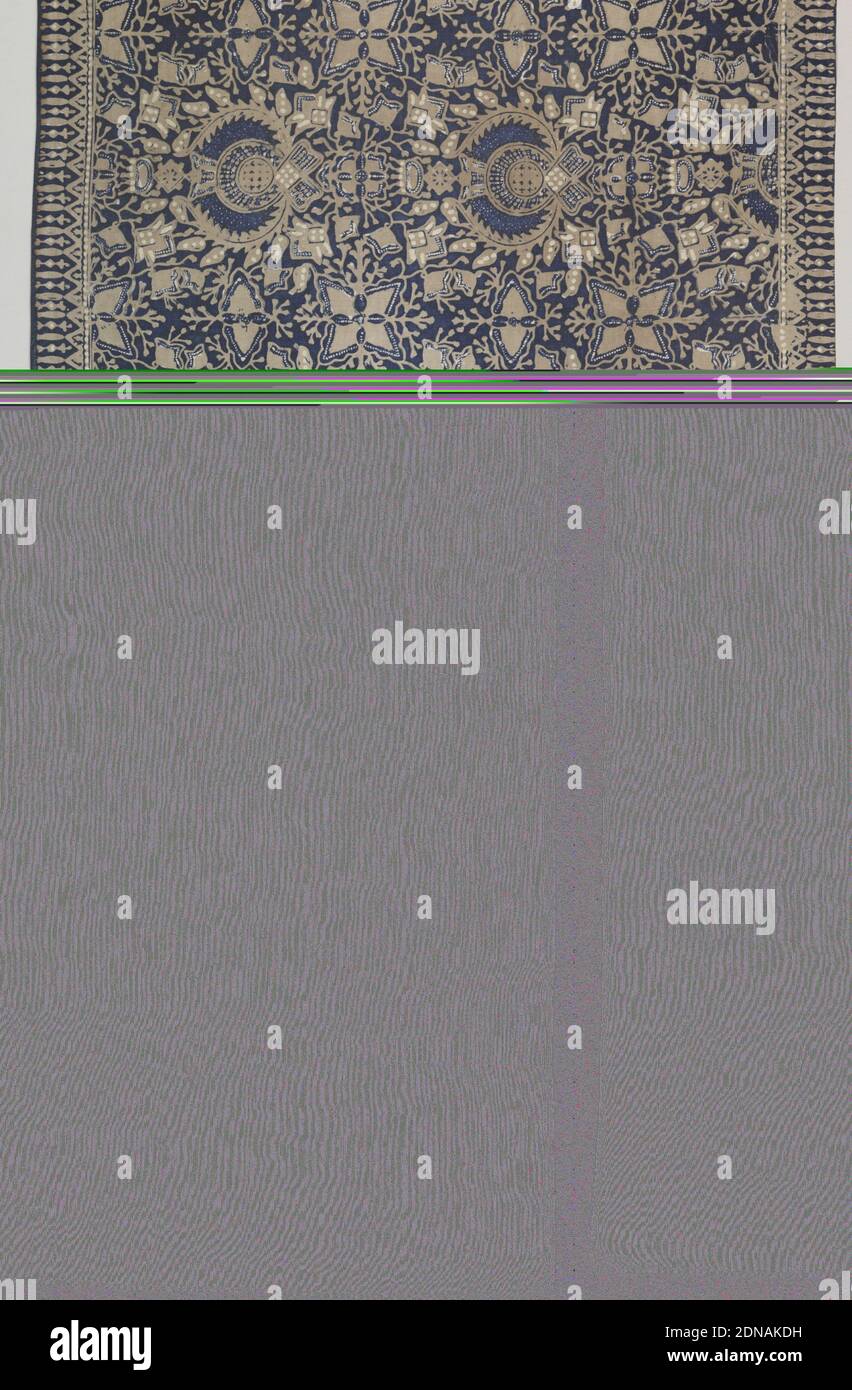 Sarong, Material: cotton Technique: wax resist dyeing (batik) on plain weave, A sarong with a dark blue ground. Features design of conventionalized floral motifs as well as the 'mirong' motif (two wings of Garuda, mount of Vishnu) in grey and white., Indonesia, 1850–1900, printed, dyed & painted textiles, Sarong Stock Photohttps://www.alamy.com/image-license-details/?v=1https://www.alamy.com/sarong-material-cotton-technique-wax-resist-dyeing-batik-on-plain-weave-a-sarong-with-a-dark-blue-ground-features-design-of-conventionalized-floral-motifs-as-well-as-the-mirong-motif-two-wings-of-garuda-mount-of-vishnu-in-grey-and-white-indonesia-18501900-printed-dyed-painted-textiles-sarong-image391770669.html
Sarong, Material: cotton Technique: wax resist dyeing (batik) on plain weave, A sarong with a dark blue ground. Features design of conventionalized floral motifs as well as the 'mirong' motif (two wings of Garuda, mount of Vishnu) in grey and white., Indonesia, 1850–1900, printed, dyed & painted textiles, Sarong Stock Photohttps://www.alamy.com/image-license-details/?v=1https://www.alamy.com/sarong-material-cotton-technique-wax-resist-dyeing-batik-on-plain-weave-a-sarong-with-a-dark-blue-ground-features-design-of-conventionalized-floral-motifs-as-well-as-the-mirong-motif-two-wings-of-garuda-mount-of-vishnu-in-grey-and-white-indonesia-18501900-printed-dyed-painted-textiles-sarong-image391770669.htmlRM2DNAKDH–Sarong, Material: cotton Technique: wax resist dyeing (batik) on plain weave, A sarong with a dark blue ground. Features design of conventionalized floral motifs as well as the 'mirong' motif (two wings of Garuda, mount of Vishnu) in grey and white., Indonesia, 1850–1900, printed, dyed & painted textiles, Sarong
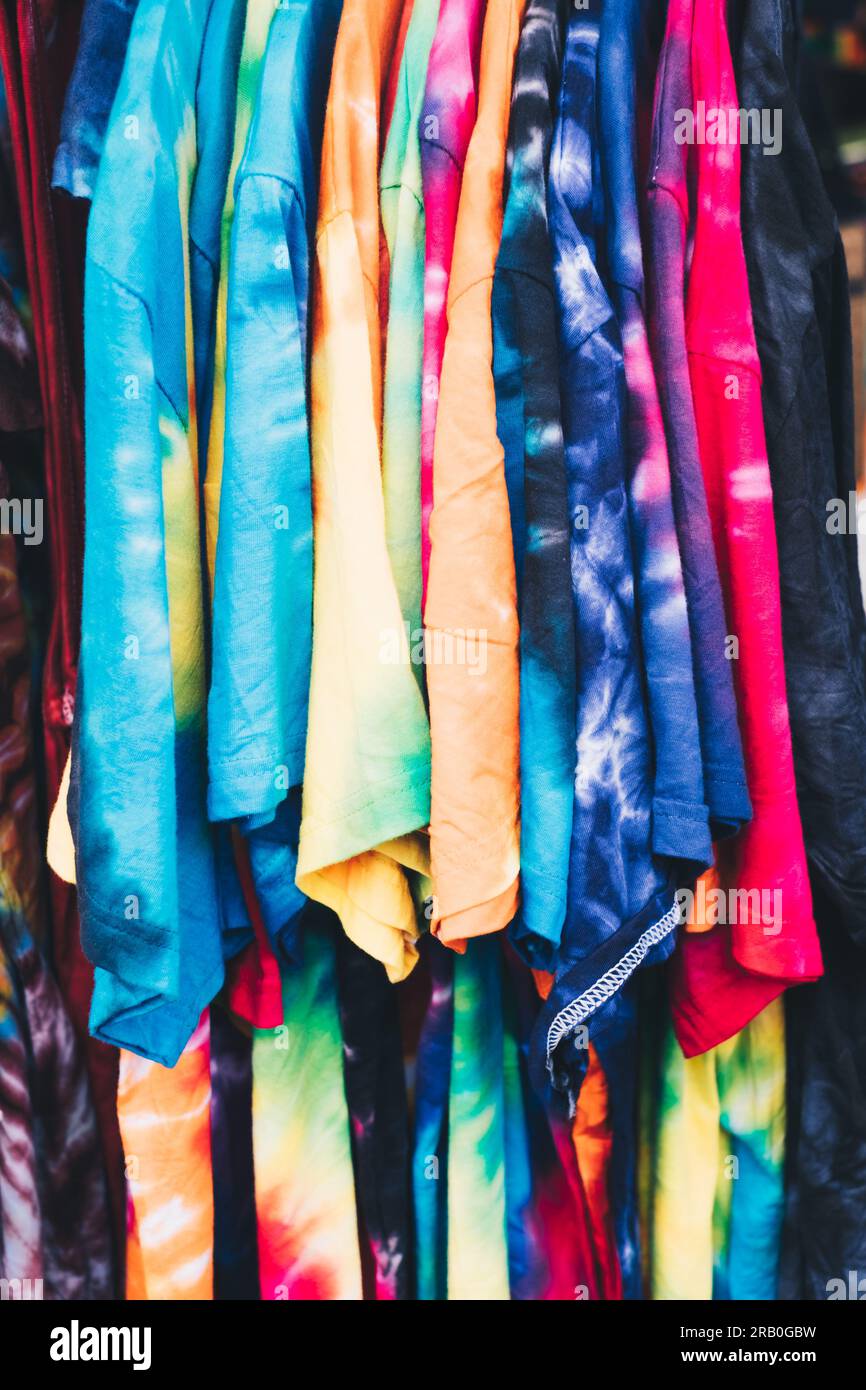 Array of colorful unisex tie-dye shirts. Selective focus. Closeup. Stock Photohttps://www.alamy.com/image-license-details/?v=1https://www.alamy.com/array-of-colorful-unisex-tie-dye-shirts-selective-focus-closeup-image557505869.html
Array of colorful unisex tie-dye shirts. Selective focus. Closeup. Stock Photohttps://www.alamy.com/image-license-details/?v=1https://www.alamy.com/array-of-colorful-unisex-tie-dye-shirts-selective-focus-closeup-image557505869.htmlRF2RB0GBW–Array of colorful unisex tie-dye shirts. Selective focus. Closeup.
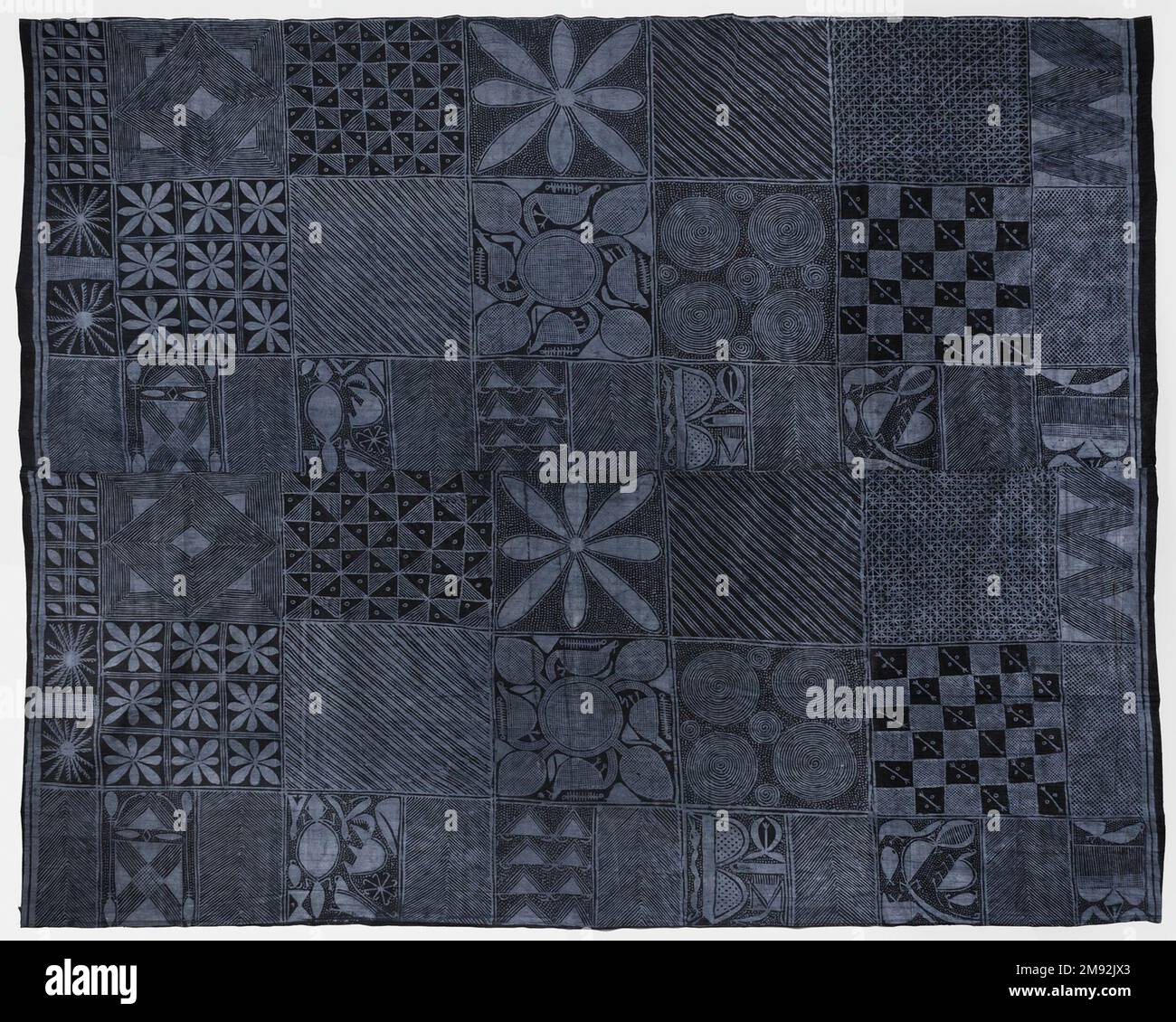 Woman's wrapper (àdìrẹ ẹlé̩kọ) Yorùbá , unknown maker's mark. Woman's wrapper (àdìrẹ ẹlé̩kọ), 20th century. Commercial cotton cloth, synthetic indigo dye, 68 5/8 × 78 × 1/16 in. (174.3 × 198.1 × 0.1 cm). Àdìrẹ is a Yorùbá textile whose patterns are made through resist dyeing. The àdìrẹ technique used to make this wrapper is àdìrẹ ẹlé̩kọ, wherein female artists paint cassava flour paste on fabric, preventing certain areas from soaking in blue indigo dye. This cloth’s name is Olókun, identifiable in part by the motif of a circular “stool” surrounded by “leaves.” As goddess of the sea, Olókun’s Stock Photohttps://www.alamy.com/image-license-details/?v=1https://www.alamy.com/womans-wrapper-dr-lk-yorb-unknown-makers-mark-womans-wrapper-dr-lk-20th-century-commercial-cotton-cloth-synthetic-indigo-dye-68-58-78-116-in-1743-1981-01-cm-dr-is-a-yorb-textile-whose-patterns-are-made-through-resist-dyeing-the-dr-technique-used-to-make-this-wrapper-is-dr-lk-wherein-female-artists-paint-cassava-flour-paste-on-fabric-preventing-certain-areas-from-soaking-in-blue-indigo-dye-this-cloths-name-is-olkun-identifiable-in-part-by-the-motif-of-a-circular-stool-surrounded-by-leaves-as-goddess-of-the-sea-olkuns-image504691323.html
Woman's wrapper (àdìrẹ ẹlé̩kọ) Yorùbá , unknown maker's mark. Woman's wrapper (àdìrẹ ẹlé̩kọ), 20th century. Commercial cotton cloth, synthetic indigo dye, 68 5/8 × 78 × 1/16 in. (174.3 × 198.1 × 0.1 cm). Àdìrẹ is a Yorùbá textile whose patterns are made through resist dyeing. The àdìrẹ technique used to make this wrapper is àdìrẹ ẹlé̩kọ, wherein female artists paint cassava flour paste on fabric, preventing certain areas from soaking in blue indigo dye. This cloth’s name is Olókun, identifiable in part by the motif of a circular “stool” surrounded by “leaves.” As goddess of the sea, Olókun’s Stock Photohttps://www.alamy.com/image-license-details/?v=1https://www.alamy.com/womans-wrapper-dr-lk-yorb-unknown-makers-mark-womans-wrapper-dr-lk-20th-century-commercial-cotton-cloth-synthetic-indigo-dye-68-58-78-116-in-1743-1981-01-cm-dr-is-a-yorb-textile-whose-patterns-are-made-through-resist-dyeing-the-dr-technique-used-to-make-this-wrapper-is-dr-lk-wherein-female-artists-paint-cassava-flour-paste-on-fabric-preventing-certain-areas-from-soaking-in-blue-indigo-dye-this-cloths-name-is-olkun-identifiable-in-part-by-the-motif-of-a-circular-stool-surrounded-by-leaves-as-goddess-of-the-sea-olkuns-image504691323.htmlRM2M92JX3–Woman's wrapper (àdìrẹ ẹlé̩kọ) Yorùbá , unknown maker's mark. Woman's wrapper (àdìrẹ ẹlé̩kọ), 20th century. Commercial cotton cloth, synthetic indigo dye, 68 5/8 × 78 × 1/16 in. (174.3 × 198.1 × 0.1 cm). Àdìrẹ is a Yorùbá textile whose patterns are made through resist dyeing. The àdìrẹ technique used to make this wrapper is àdìrẹ ẹlé̩kọ, wherein female artists paint cassava flour paste on fabric, preventing certain areas from soaking in blue indigo dye. This cloth’s name is Olókun, identifiable in part by the motif of a circular “stool” surrounded by “leaves.” As goddess of the sea, Olókun’s
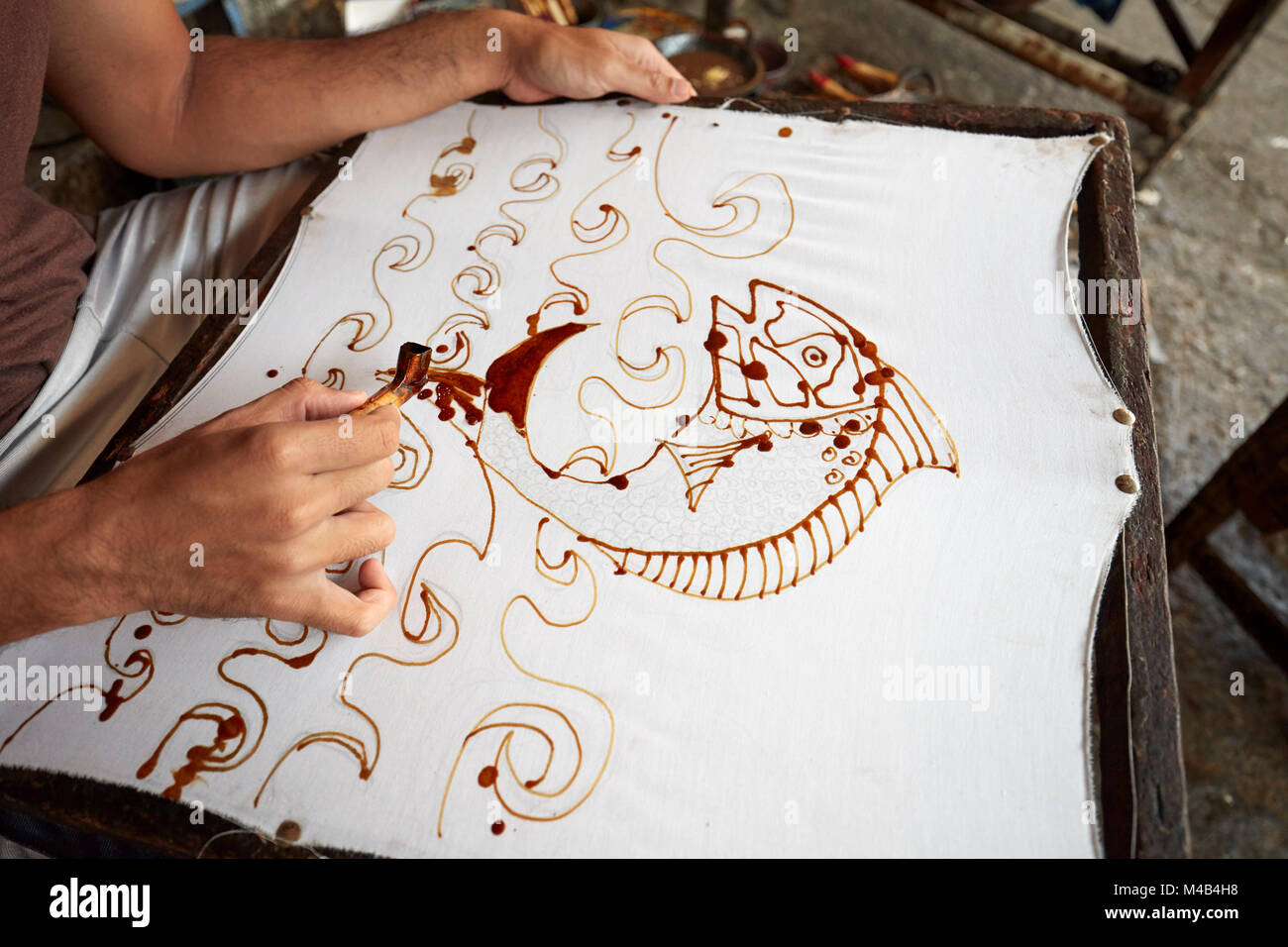 A batik maker applies melted wax on cloth with a canting (spouted tool). Yogyakarta, Java, Indonesia. Stock Photohttps://www.alamy.com/image-license-details/?v=1https://www.alamy.com/stock-photo-a-batik-maker-applies-melted-wax-on-cloth-with-a-canting-spouted-tool-174807396.html
A batik maker applies melted wax on cloth with a canting (spouted tool). Yogyakarta, Java, Indonesia. Stock Photohttps://www.alamy.com/image-license-details/?v=1https://www.alamy.com/stock-photo-a-batik-maker-applies-melted-wax-on-cloth-with-a-canting-spouted-tool-174807396.htmlRMM4B4H8–A batik maker applies melted wax on cloth with a canting (spouted tool). Yogyakarta, Java, Indonesia.
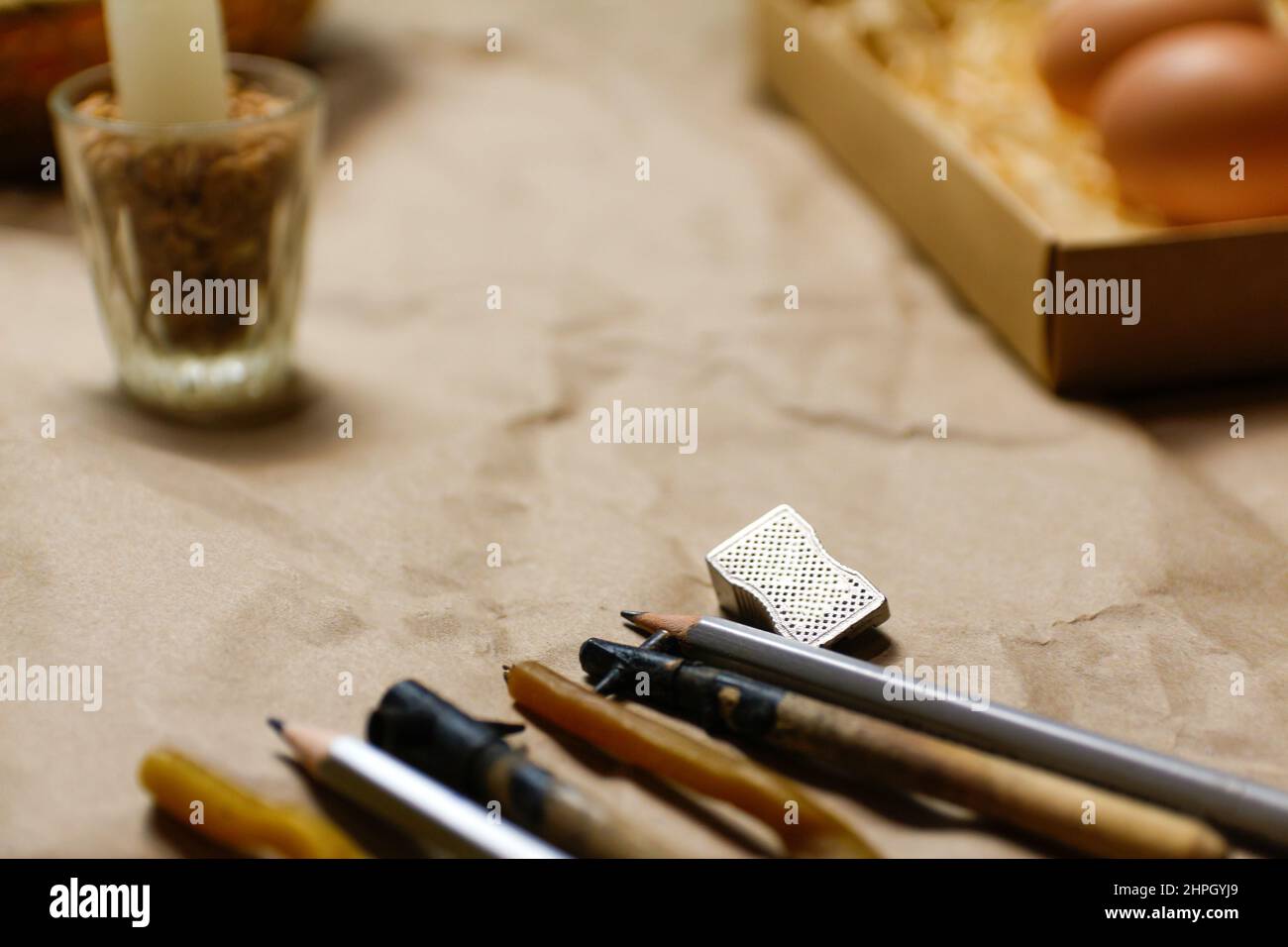 Tools for decorating Paschal eggs, Pysankas, with wax-resist dyeing technique. Homemade pen and melted beeswax for drawing of eggs. Ukraine. Preparati Stock Photohttps://www.alamy.com/image-license-details/?v=1https://www.alamy.com/tools-for-decorating-paschal-eggs-pysankas-with-wax-resist-dyeing-technique-homemade-pen-and-melted-beeswax-for-drawing-of-eggs-ukraine-preparati-image461364913.html
Tools for decorating Paschal eggs, Pysankas, with wax-resist dyeing technique. Homemade pen and melted beeswax for drawing of eggs. Ukraine. Preparati Stock Photohttps://www.alamy.com/image-license-details/?v=1https://www.alamy.com/tools-for-decorating-paschal-eggs-pysankas-with-wax-resist-dyeing-technique-homemade-pen-and-melted-beeswax-for-drawing-of-eggs-ukraine-preparati-image461364913.htmlRF2HPGYJ9–Tools for decorating Paschal eggs, Pysankas, with wax-resist dyeing technique. Homemade pen and melted beeswax for drawing of eggs. Ukraine. Preparati
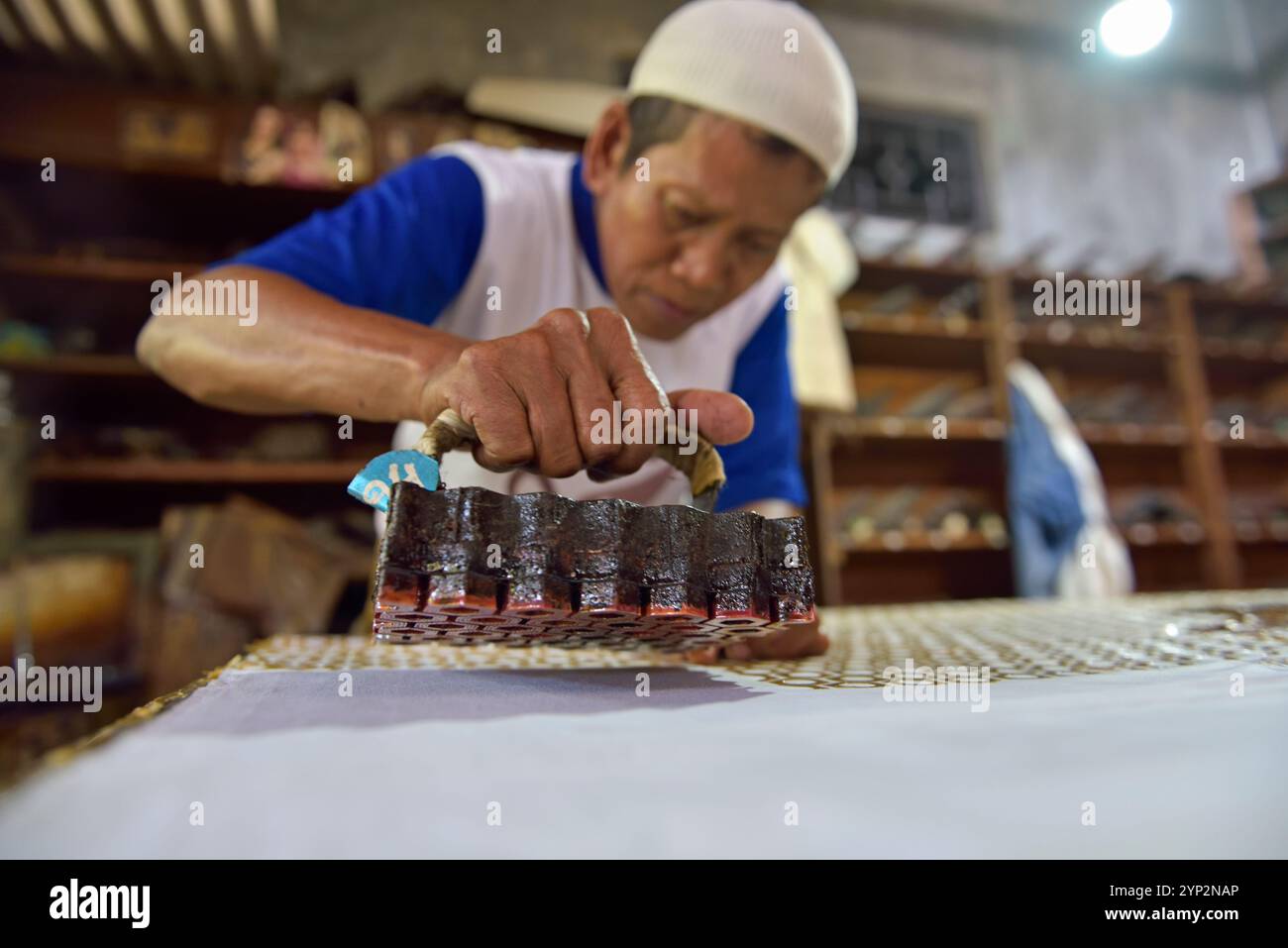 Workers applying wax-resist using a copper plate stamp (cap), Wirakuto batik workshop, Pekalongan, Java island, Indonesia, Southeast Asia, Asia Stock Photohttps://www.alamy.com/image-license-details/?v=1https://www.alamy.com/workers-applying-wax-resist-using-a-copper-plate-stamp-cap-wirakuto-batik-workshop-pekalongan-java-island-indonesia-southeast-asia-asia-image633156350.html
Workers applying wax-resist using a copper plate stamp (cap), Wirakuto batik workshop, Pekalongan, Java island, Indonesia, Southeast Asia, Asia Stock Photohttps://www.alamy.com/image-license-details/?v=1https://www.alamy.com/workers-applying-wax-resist-using-a-copper-plate-stamp-cap-wirakuto-batik-workshop-pekalongan-java-island-indonesia-southeast-asia-asia-image633156350.htmlRF2YP2NAP–Workers applying wax-resist using a copper plate stamp (cap), Wirakuto batik workshop, Pekalongan, Java island, Indonesia, Southeast Asia, Asia
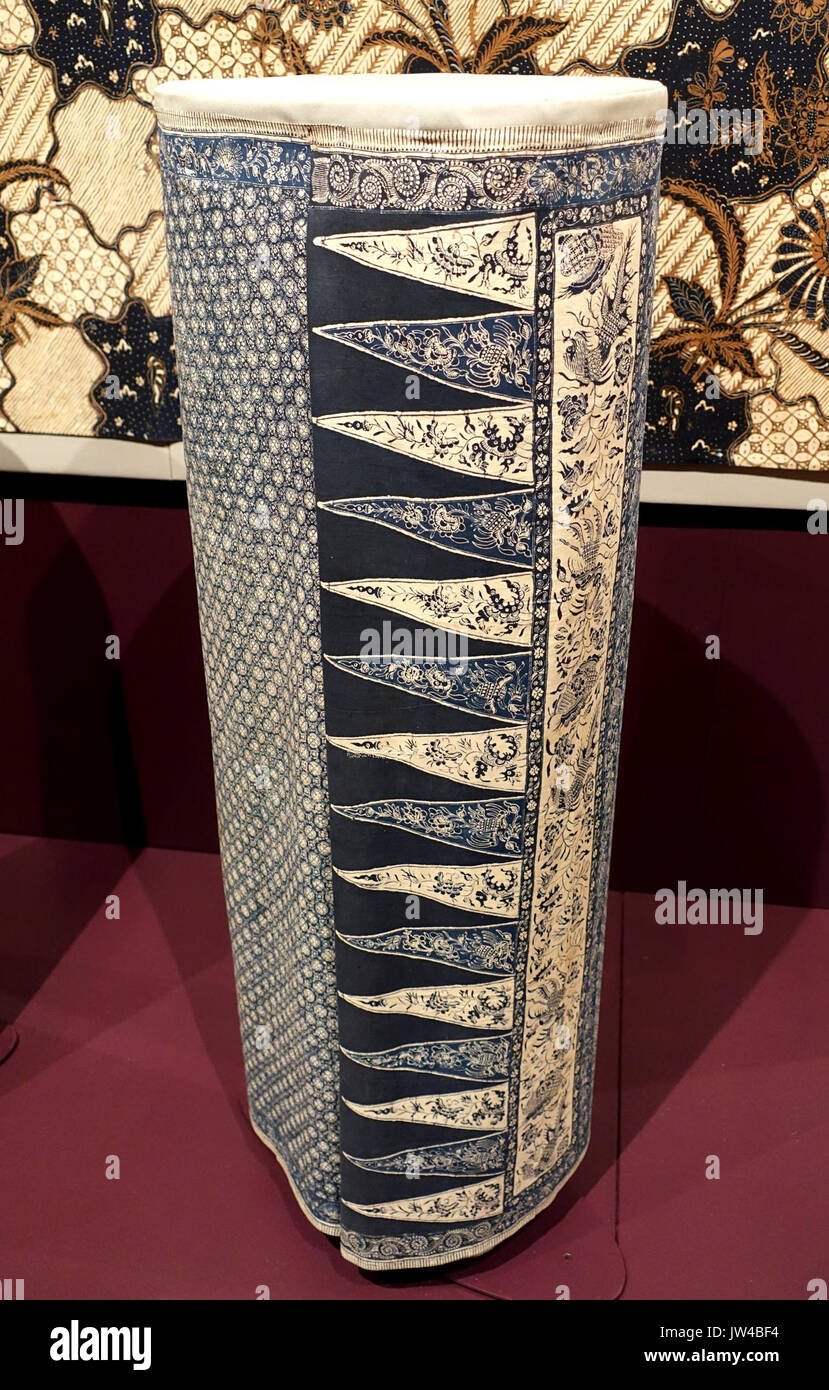 Sarung (hip wrapper) for woman of Peranakan birth, Indonesia, Java, Pekalongan, 19th century, cotton, resist dyed Textile Museum, George Washington University DSC09536 Stock Photohttps://www.alamy.com/image-license-details/?v=1https://www.alamy.com/sarung-hip-wrapper-for-woman-of-peranakan-birth-indonesia-java-pekalongan-image153146200.html
Sarung (hip wrapper) for woman of Peranakan birth, Indonesia, Java, Pekalongan, 19th century, cotton, resist dyed Textile Museum, George Washington University DSC09536 Stock Photohttps://www.alamy.com/image-license-details/?v=1https://www.alamy.com/sarung-hip-wrapper-for-woman-of-peranakan-birth-indonesia-java-pekalongan-image153146200.htmlRMJW4BF4–Sarung (hip wrapper) for woman of Peranakan birth, Indonesia, Java, Pekalongan, 19th century, cotton, resist dyed Textile Museum, George Washington University DSC09536
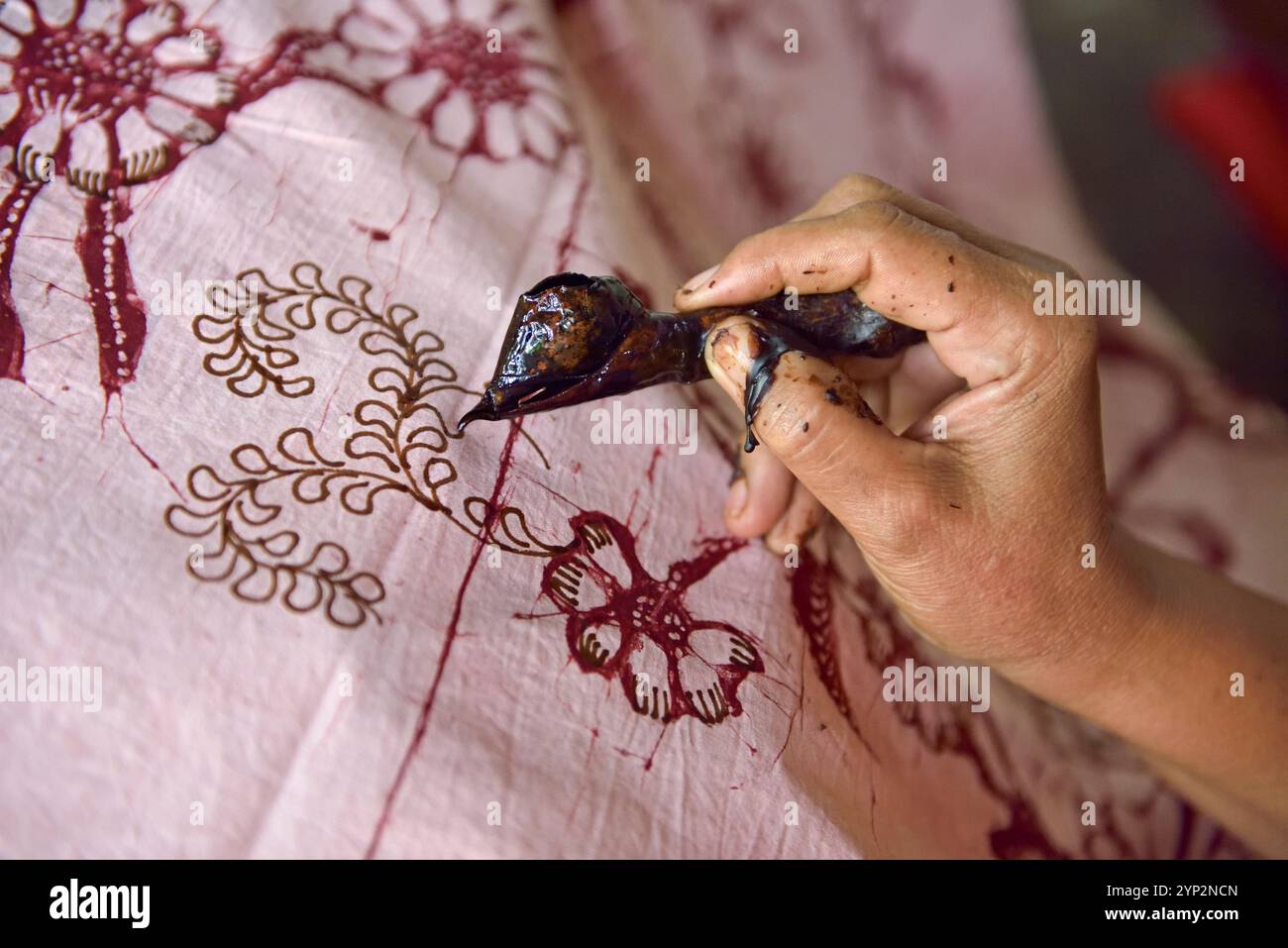 Woman using a pen-like tool (canting) to apply liquid hot wax to create pattern on the fabric before dyeing, workshop of Kidang Mas Batik House, Lasem Stock Photohttps://www.alamy.com/image-license-details/?v=1https://www.alamy.com/woman-using-a-pen-like-tool-canting-to-apply-liquid-hot-wax-to-create-pattern-on-the-fabric-before-dyeing-workshop-of-kidang-mas-batik-house-lasem-image633156405.html
Woman using a pen-like tool (canting) to apply liquid hot wax to create pattern on the fabric before dyeing, workshop of Kidang Mas Batik House, Lasem Stock Photohttps://www.alamy.com/image-license-details/?v=1https://www.alamy.com/woman-using-a-pen-like-tool-canting-to-apply-liquid-hot-wax-to-create-pattern-on-the-fabric-before-dyeing-workshop-of-kidang-mas-batik-house-lasem-image633156405.htmlRF2YP2NCN–Woman using a pen-like tool (canting) to apply liquid hot wax to create pattern on the fabric before dyeing, workshop of Kidang Mas Batik House, Lasem
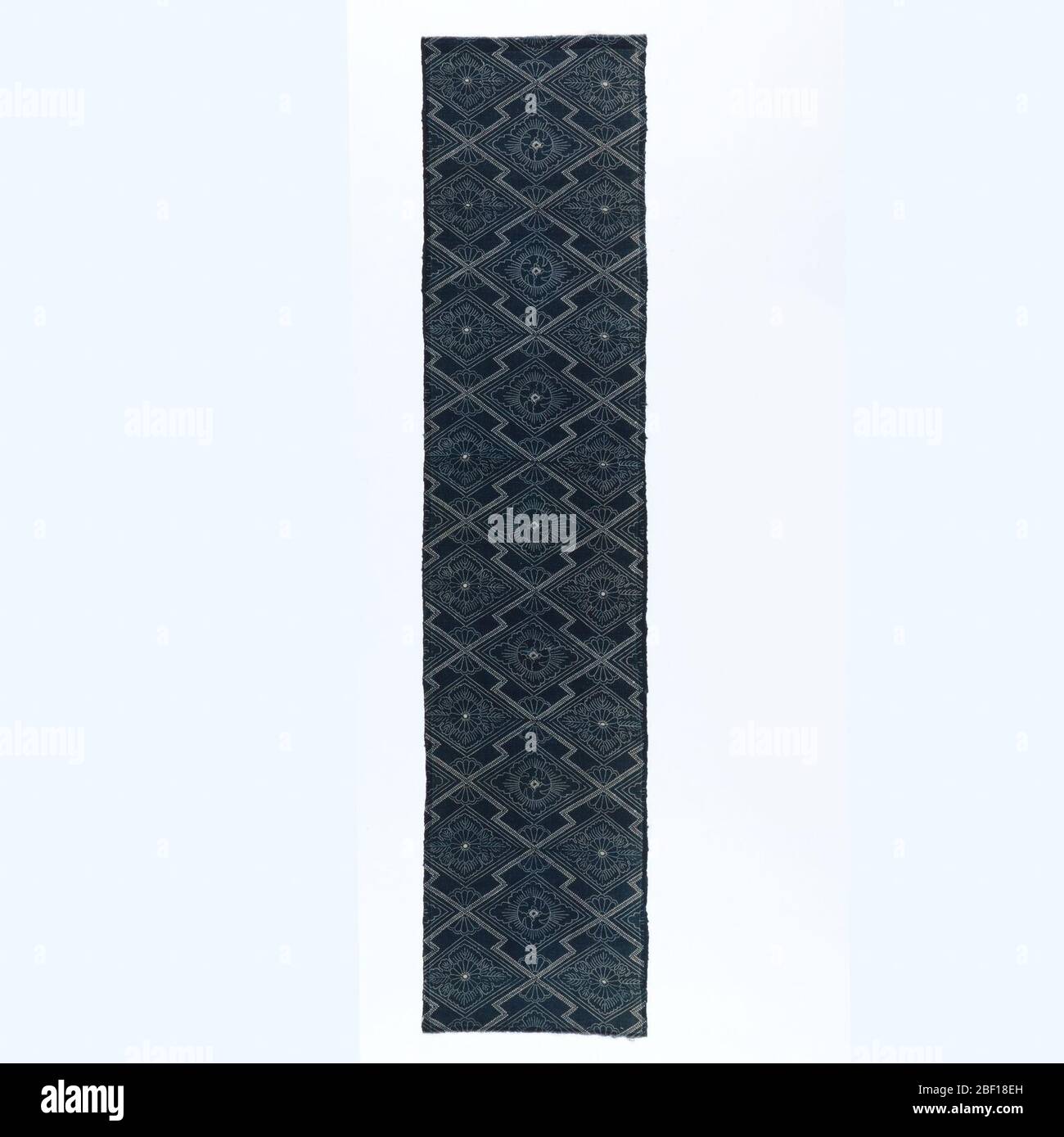 Textile. Length of stencil resist (katazome) with ivory pattern on blue ground. Zigzag lattice enclosing floral forms. Stock Photohttps://www.alamy.com/image-license-details/?v=1https://www.alamy.com/textile-length-of-stencil-resist-katazome-with-ivory-pattern-on-blue-ground-zigzag-lattice-enclosing-floral-forms-image353455833.html
Textile. Length of stencil resist (katazome) with ivory pattern on blue ground. Zigzag lattice enclosing floral forms. Stock Photohttps://www.alamy.com/image-license-details/?v=1https://www.alamy.com/textile-length-of-stencil-resist-katazome-with-ivory-pattern-on-blue-ground-zigzag-lattice-enclosing-floral-forms-image353455833.htmlRM2BF18EH–Textile. Length of stencil resist (katazome) with ivory pattern on blue ground. Zigzag lattice enclosing floral forms.
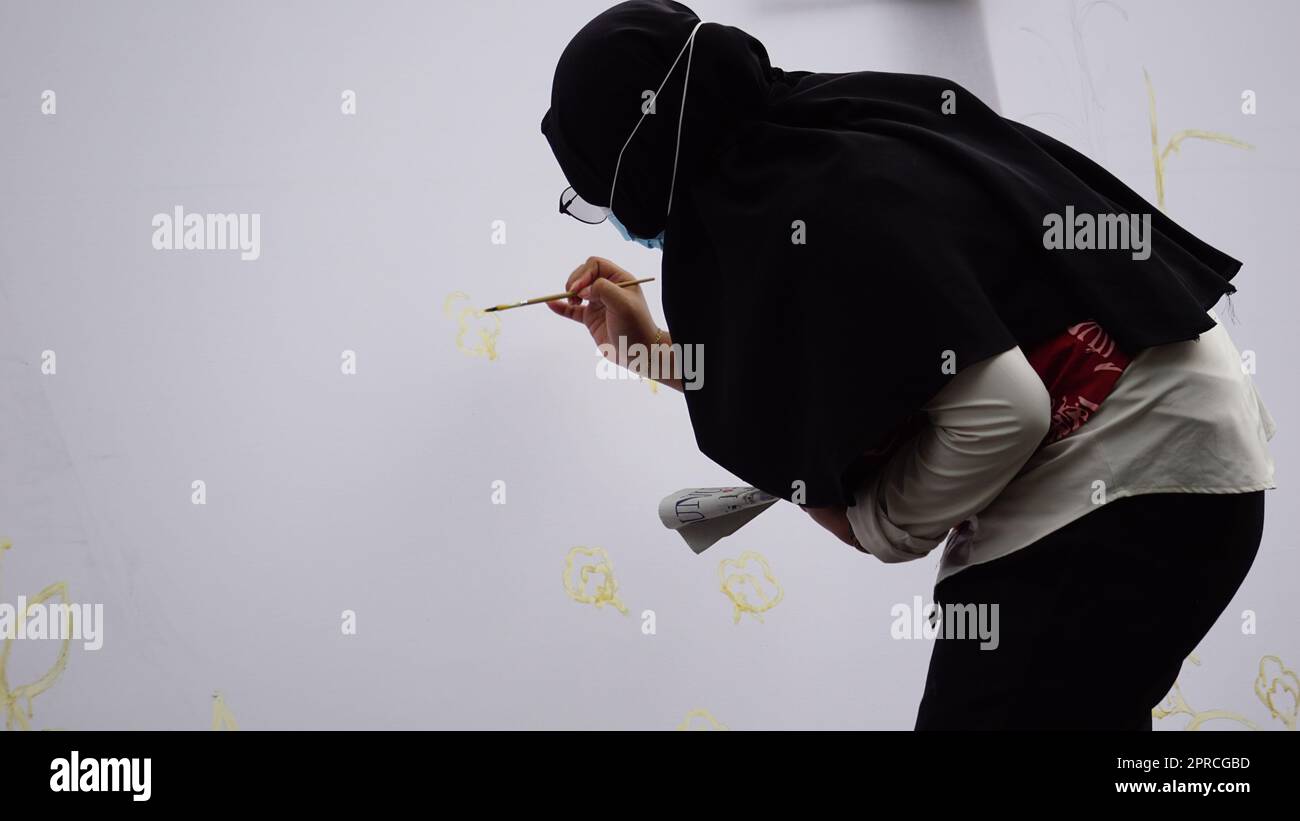 The process of making batik on Festival Batik Keren Blitar. Batik is a handmade ancient art from Indonesia. Produced by technique of wax-resist dyeing Stock Photohttps://www.alamy.com/image-license-details/?v=1https://www.alamy.com/the-process-of-making-batik-on-festival-batik-keren-blitar-batik-is-a-handmade-ancient-art-from-indonesia-produced-by-technique-of-wax-resist-dyeing-image547934785.html
The process of making batik on Festival Batik Keren Blitar. Batik is a handmade ancient art from Indonesia. Produced by technique of wax-resist dyeing Stock Photohttps://www.alamy.com/image-license-details/?v=1https://www.alamy.com/the-process-of-making-batik-on-festival-batik-keren-blitar-batik-is-a-handmade-ancient-art-from-indonesia-produced-by-technique-of-wax-resist-dyeing-image547934785.htmlRF2PRCGBD–The process of making batik on Festival Batik Keren Blitar. Batik is a handmade ancient art from Indonesia. Produced by technique of wax-resist dyeing
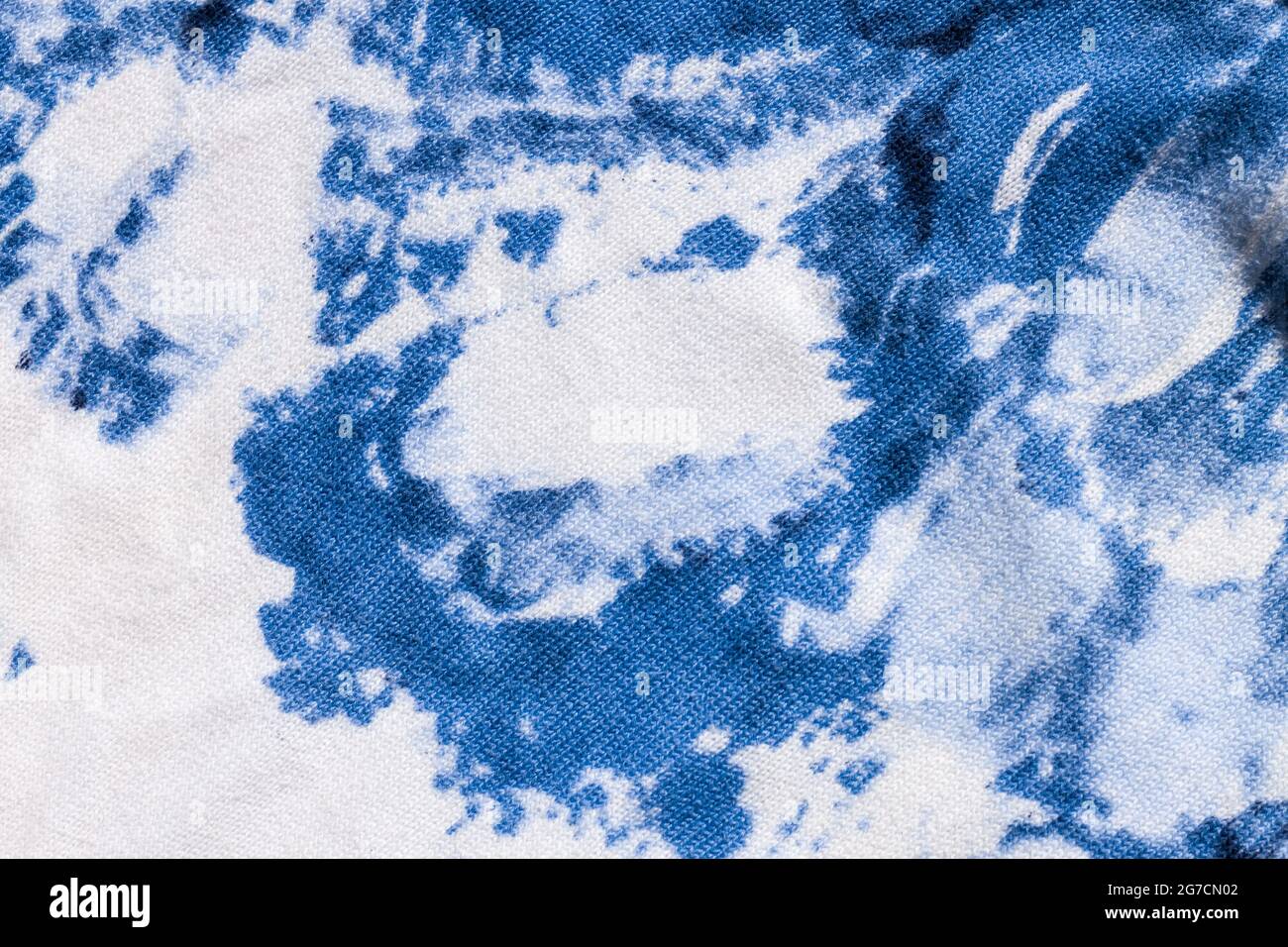 Tie-dye cotton fabric texture blue and white paint colors. Ancient resist-dyeing textile coloring technique, saturated primary colors, bold patterns, Stock Photohttps://www.alamy.com/image-license-details/?v=1https://www.alamy.com/tie-dye-cotton-fabric-texture-blue-and-white-paint-colors-ancient-resist-dyeing-textile-coloring-technique-saturated-primary-colors-bold-patterns-image434841682.html
Tie-dye cotton fabric texture blue and white paint colors. Ancient resist-dyeing textile coloring technique, saturated primary colors, bold patterns, Stock Photohttps://www.alamy.com/image-license-details/?v=1https://www.alamy.com/tie-dye-cotton-fabric-texture-blue-and-white-paint-colors-ancient-resist-dyeing-textile-coloring-technique-saturated-primary-colors-bold-patterns-image434841682.htmlRF2G7CN02–Tie-dye cotton fabric texture blue and white paint colors. Ancient resist-dyeing textile coloring technique, saturated primary colors, bold patterns,
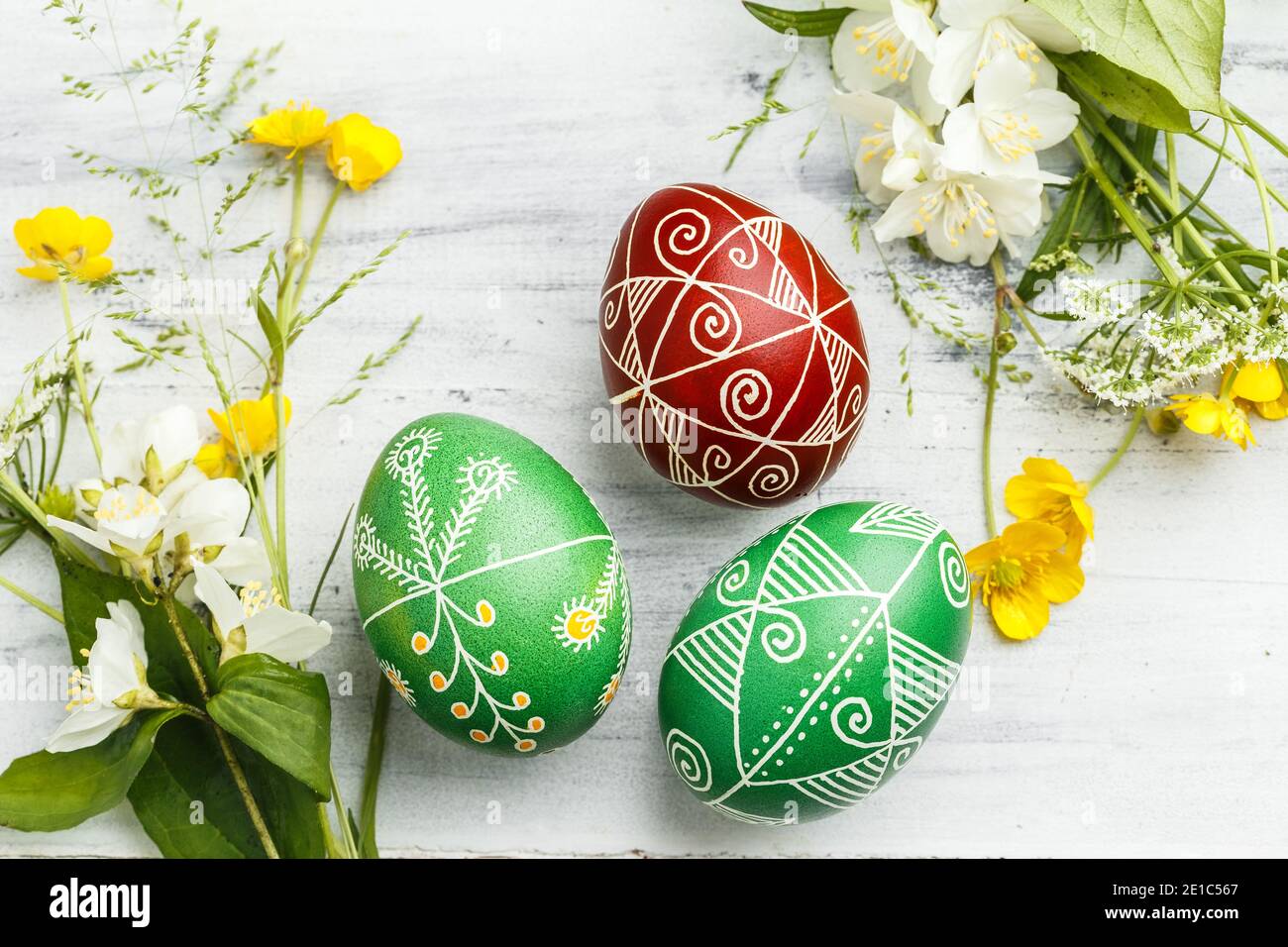 Three pysanky handmade Easter eggs. Ukrainian pysanky decorated with wax-resist dyeing technique. Holiday postcard Stock Photohttps://www.alamy.com/image-license-details/?v=1https://www.alamy.com/three-pysanky-handmade-easter-eggs-ukrainian-pysanky-decorated-with-wax-resist-dyeing-technique-holiday-postcard-image396720639.html
Three pysanky handmade Easter eggs. Ukrainian pysanky decorated with wax-resist dyeing technique. Holiday postcard Stock Photohttps://www.alamy.com/image-license-details/?v=1https://www.alamy.com/three-pysanky-handmade-easter-eggs-ukrainian-pysanky-decorated-with-wax-resist-dyeing-technique-holiday-postcard-image396720639.htmlRF2E1C567–Three pysanky handmade Easter eggs. Ukrainian pysanky decorated with wax-resist dyeing technique. Holiday postcard
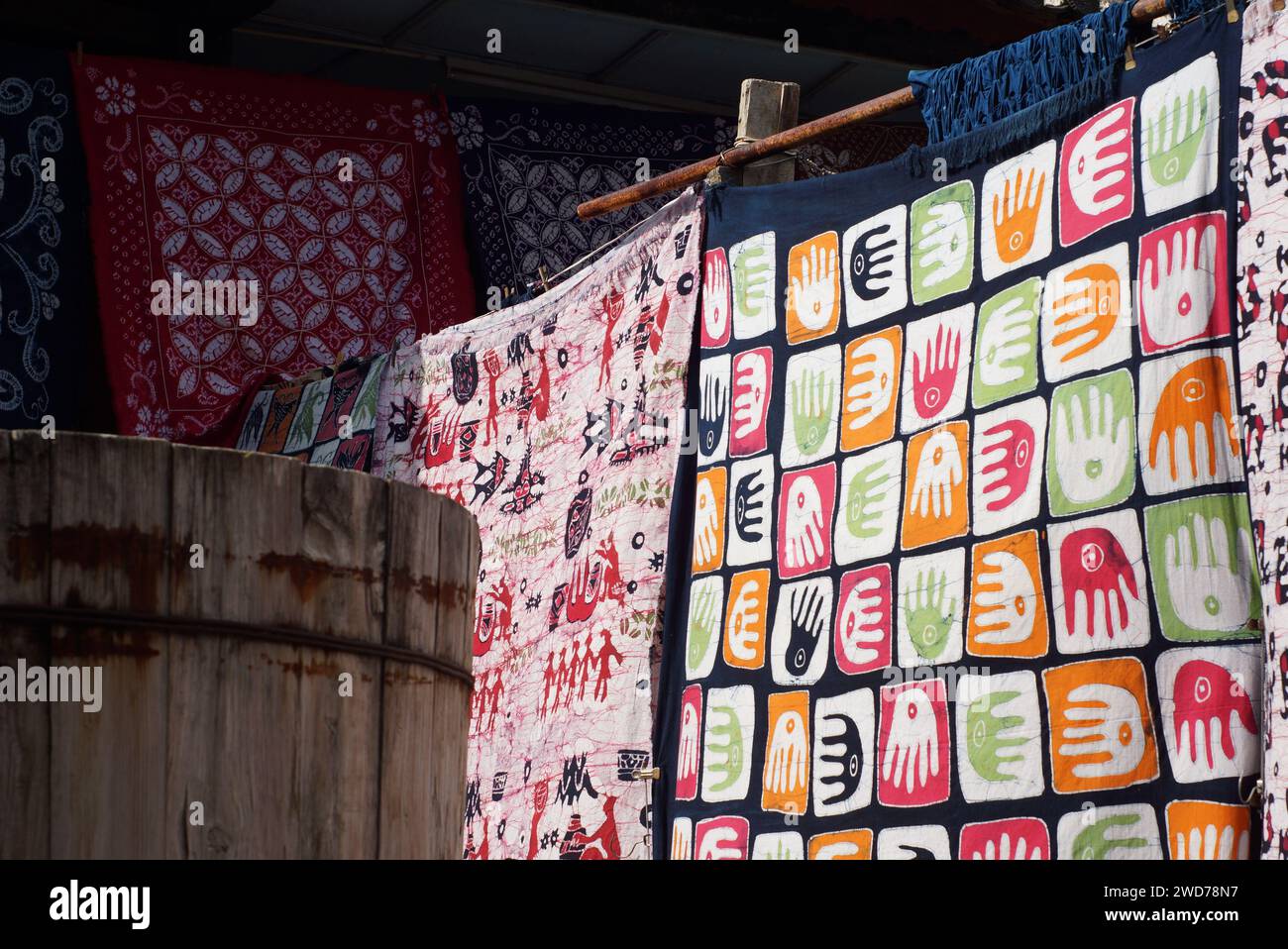 dyeing factory in the Shuhe area. one of traditional culture in yunnan Stock Photohttps://www.alamy.com/image-license-details/?v=1https://www.alamy.com/dyeing-factory-in-the-shuhe-area-one-of-traditional-culture-in-yunnan-image593303571.html
dyeing factory in the Shuhe area. one of traditional culture in yunnan Stock Photohttps://www.alamy.com/image-license-details/?v=1https://www.alamy.com/dyeing-factory-in-the-shuhe-area-one-of-traditional-culture-in-yunnan-image593303571.htmlRF2WD78N7–dyeing factory in the Shuhe area. one of traditional culture in yunnan
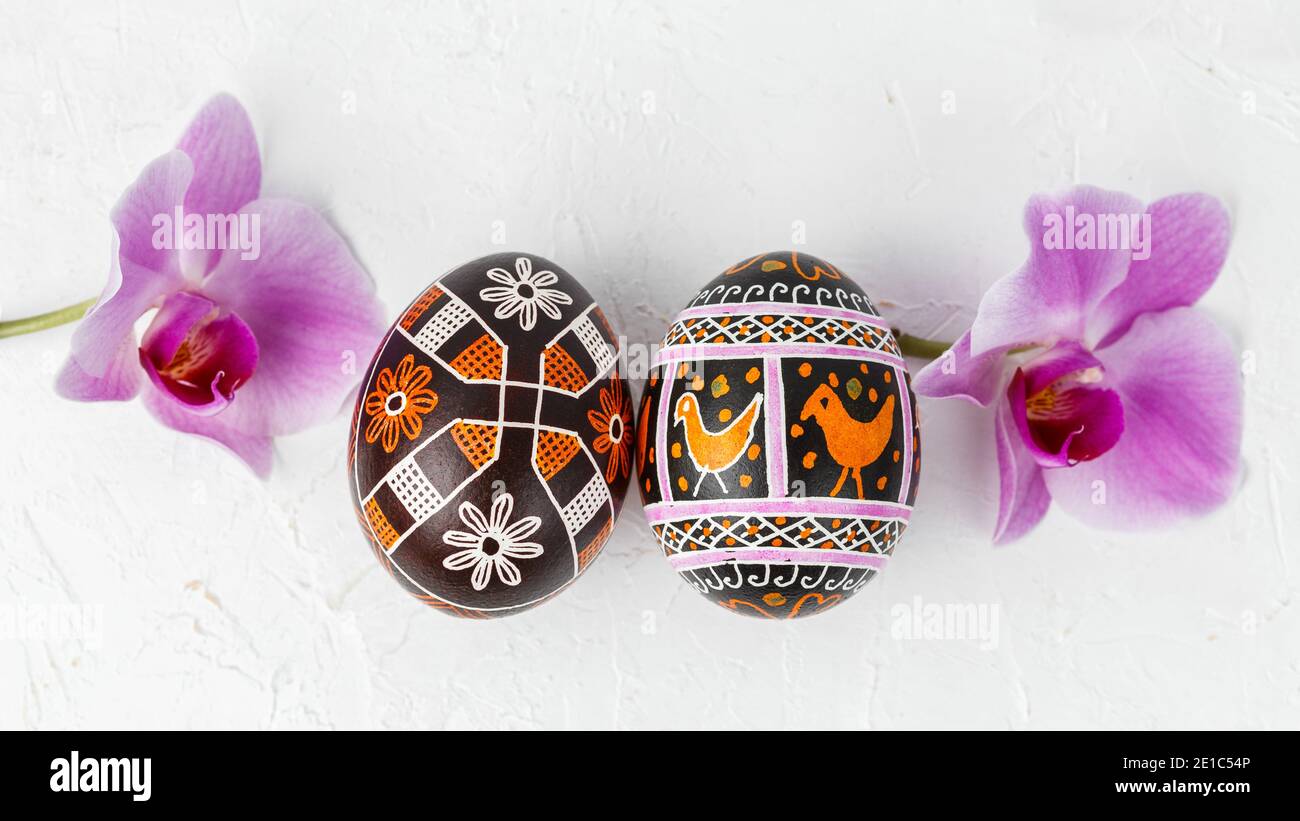 Handmade Easter eggs. Ukrainian pysanka decorated with wax-resist dyeing technique with flowers on white background Stock Photohttps://www.alamy.com/image-license-details/?v=1https://www.alamy.com/handmade-easter-eggs-ukrainian-pysanka-decorated-with-wax-resist-dyeing-technique-with-flowers-on-white-background-image396720598.html
Handmade Easter eggs. Ukrainian pysanka decorated with wax-resist dyeing technique with flowers on white background Stock Photohttps://www.alamy.com/image-license-details/?v=1https://www.alamy.com/handmade-easter-eggs-ukrainian-pysanka-decorated-with-wax-resist-dyeing-technique-with-flowers-on-white-background-image396720598.htmlRF2E1C54P–Handmade Easter eggs. Ukrainian pysanka decorated with wax-resist dyeing technique with flowers on white background
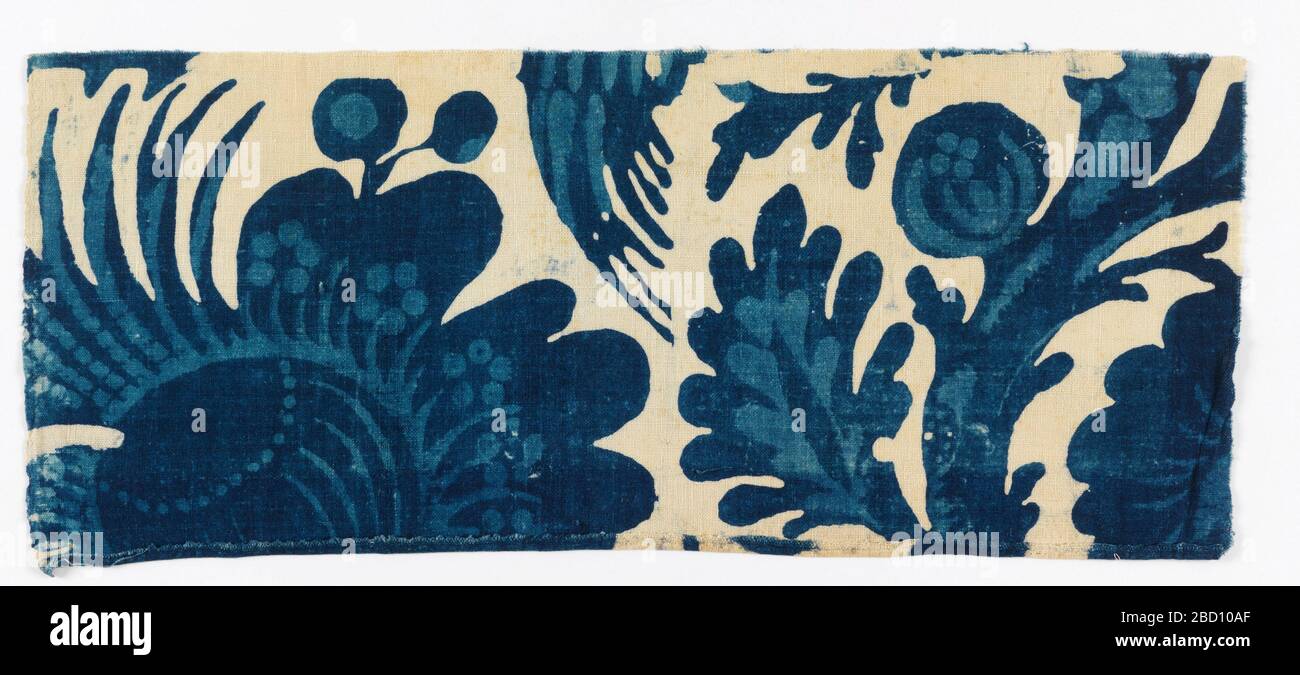 Fragments. Research in ProgressCotton textile fragments with resist dye showing florals in two shades of blue on white background. Design, incomplete, shows bird in foliage, and large leaf and flower. Fragments Stock Photohttps://www.alamy.com/image-license-details/?v=1https://www.alamy.com/fragments-research-in-progresscotton-textile-fragments-with-resist-dye-showing-florals-in-two-shades-of-blue-on-white-background-design-incomplete-shows-bird-in-foliage-and-large-leaf-and-flower-fragments-image352220135.html
Fragments. Research in ProgressCotton textile fragments with resist dye showing florals in two shades of blue on white background. Design, incomplete, shows bird in foliage, and large leaf and flower. Fragments Stock Photohttps://www.alamy.com/image-license-details/?v=1https://www.alamy.com/fragments-research-in-progresscotton-textile-fragments-with-resist-dye-showing-florals-in-two-shades-of-blue-on-white-background-design-incomplete-shows-bird-in-foliage-and-large-leaf-and-flower-fragments-image352220135.htmlRM2BD10AF–Fragments. Research in ProgressCotton textile fragments with resist dye showing florals in two shades of blue on white background. Design, incomplete, shows bird in foliage, and large leaf and flower. Fragments
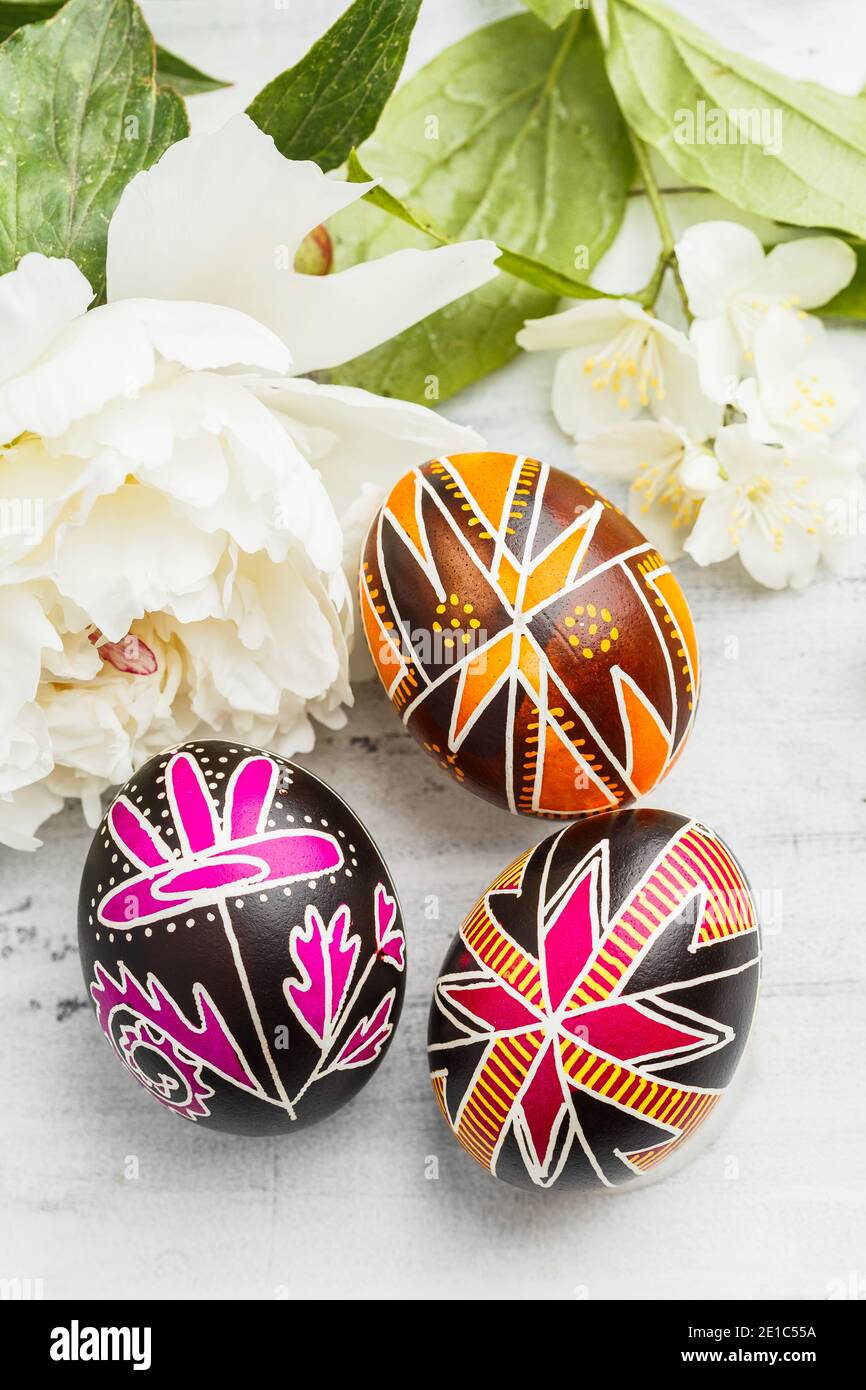 Three handmade Easter eggs decorated with wax-resist dyeing technique. Ukrainian pysanky on the table. Vertical composition Stock Photohttps://www.alamy.com/image-license-details/?v=1https://www.alamy.com/three-handmade-easter-eggs-decorated-with-wax-resist-dyeing-technique-ukrainian-pysanky-on-the-table-vertical-composition-image396720614.html
Three handmade Easter eggs decorated with wax-resist dyeing technique. Ukrainian pysanky on the table. Vertical composition Stock Photohttps://www.alamy.com/image-license-details/?v=1https://www.alamy.com/three-handmade-easter-eggs-decorated-with-wax-resist-dyeing-technique-ukrainian-pysanky-on-the-table-vertical-composition-image396720614.htmlRF2E1C55A–Three handmade Easter eggs decorated with wax-resist dyeing technique. Ukrainian pysanky on the table. Vertical composition
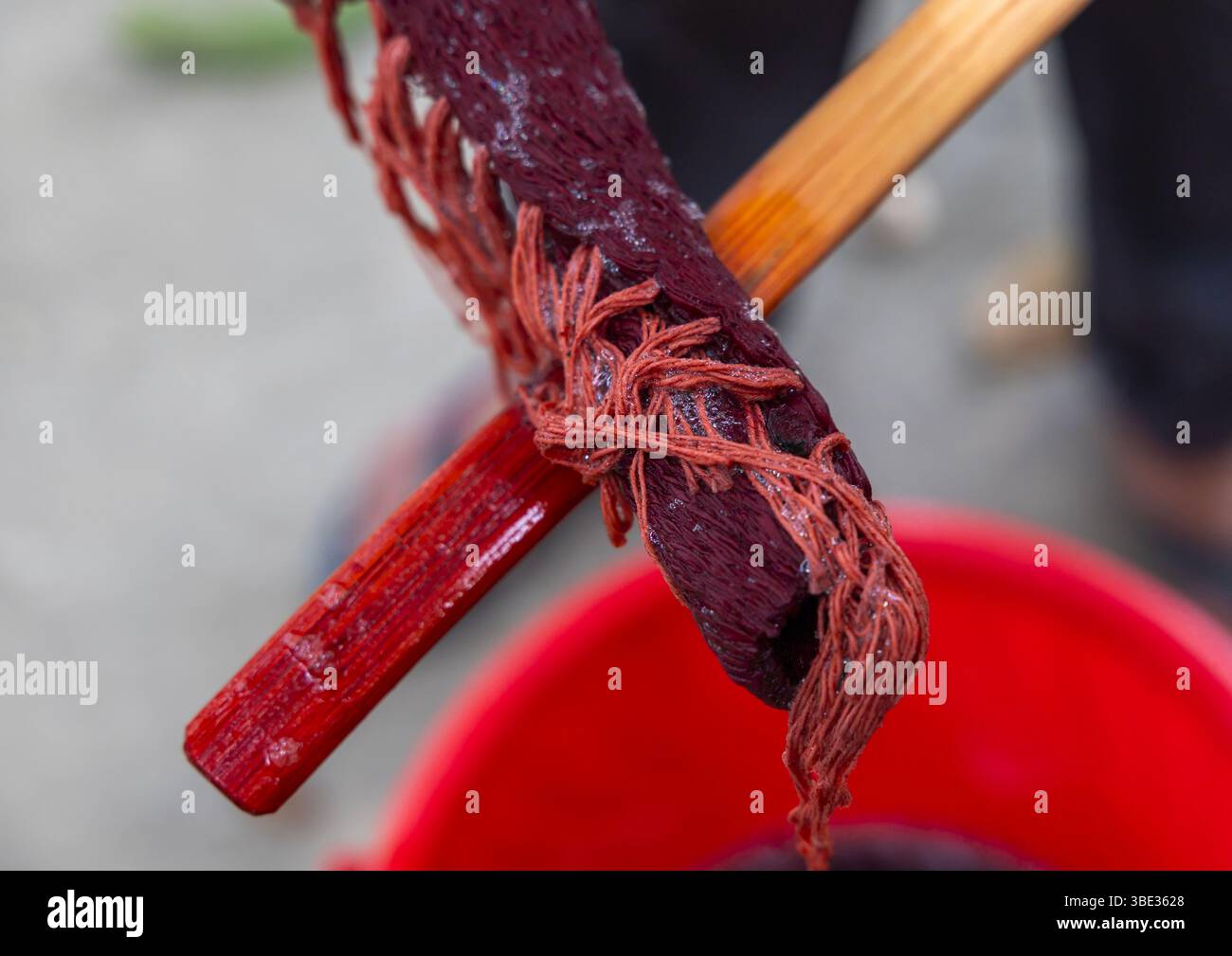 Shawl made with red tie-dye resist dyeing technique in Living Blue, Rangpur Division, Goalpara, Bangladesh Stock Photohttps://www.alamy.com/image-license-details/?v=1https://www.alamy.com/shawl-made-with-red-tie-dye-resist-dyeing-technique-in-living-blue-rangpur-division-goalpara-bangladesh-image679880160.html
Shawl made with red tie-dye resist dyeing technique in Living Blue, Rangpur Division, Goalpara, Bangladesh Stock Photohttps://www.alamy.com/image-license-details/?v=1https://www.alamy.com/shawl-made-with-red-tie-dye-resist-dyeing-technique-in-living-blue-rangpur-division-goalpara-bangladesh-image679880160.htmlRM3BE3628–Shawl made with red tie-dye resist dyeing technique in Living Blue, Rangpur Division, Goalpara, Bangladesh
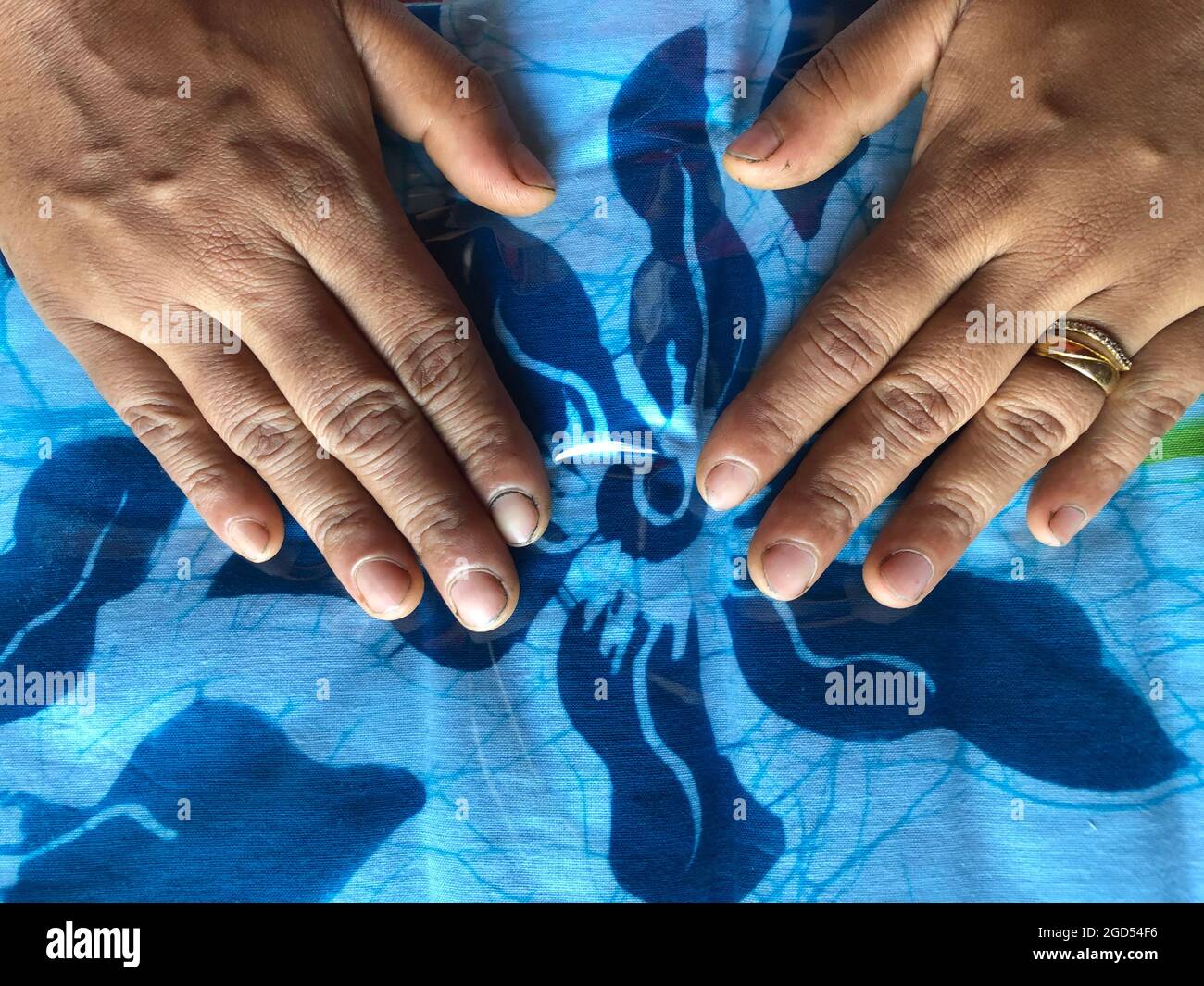 how batik applied fabric, closeup view of fabric painting art with batik technique Stock Photohttps://www.alamy.com/image-license-details/?v=1https://www.alamy.com/how-batik-applied-fabric-closeup-view-of-fabric-painting-art-with-batik-technique-image438363050.html
how batik applied fabric, closeup view of fabric painting art with batik technique Stock Photohttps://www.alamy.com/image-license-details/?v=1https://www.alamy.com/how-batik-applied-fabric-closeup-view-of-fabric-painting-art-with-batik-technique-image438363050.htmlRF2GD54F6–how batik applied fabric, closeup view of fabric painting art with batik technique
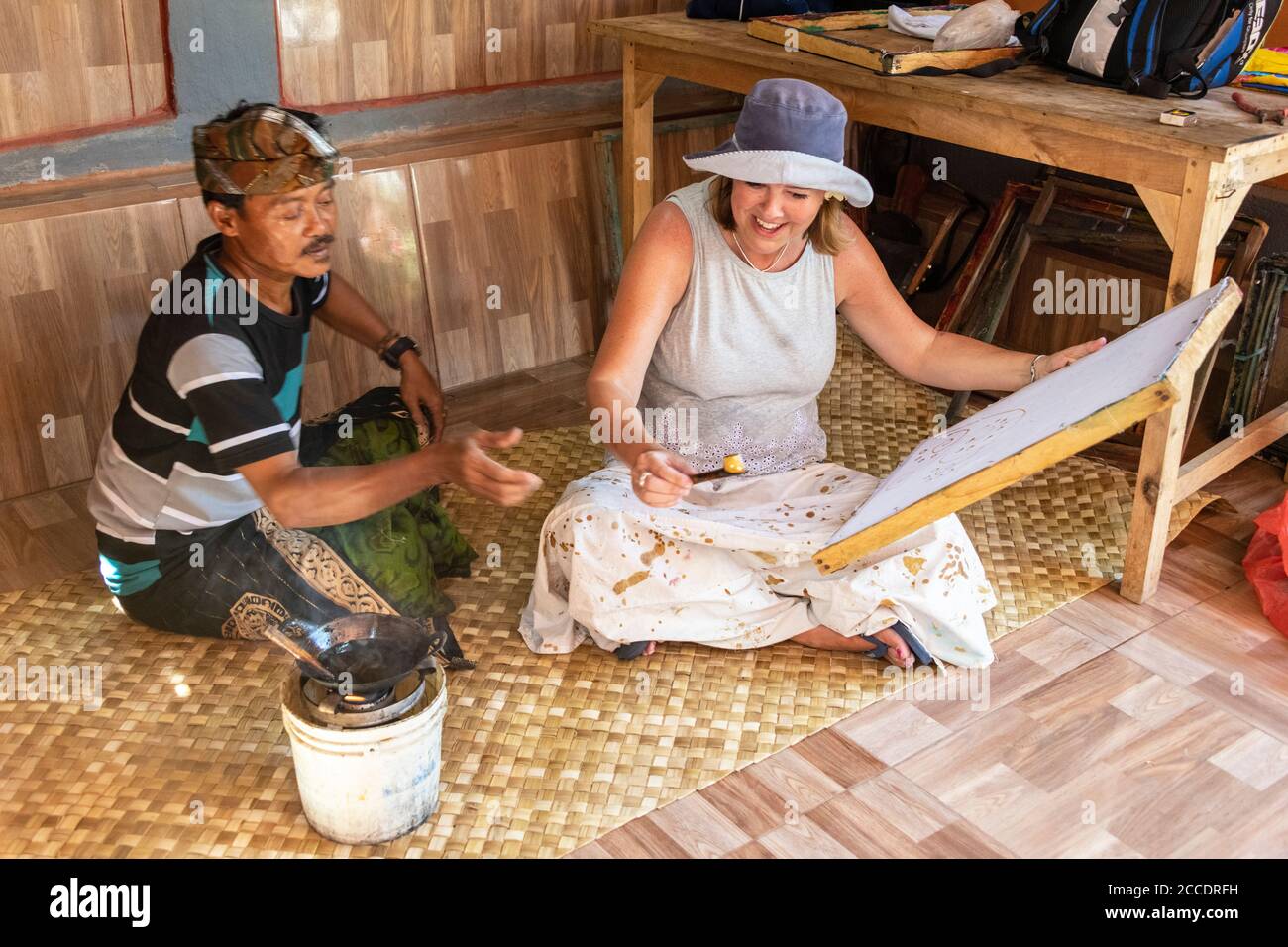 Batik is an traditional Balinese art technique of wax-resist dyeing applied to whole cloth. This technique originated from Java but has become popular Stock Photohttps://www.alamy.com/image-license-details/?v=1https://www.alamy.com/batik-is-an-traditional-balinese-art-technique-of-wax-resist-dyeing-applied-to-whole-cloth-this-technique-originated-from-java-but-has-become-popular-image369097445.html
Batik is an traditional Balinese art technique of wax-resist dyeing applied to whole cloth. This technique originated from Java but has become popular Stock Photohttps://www.alamy.com/image-license-details/?v=1https://www.alamy.com/batik-is-an-traditional-balinese-art-technique-of-wax-resist-dyeing-applied-to-whole-cloth-this-technique-originated-from-java-but-has-become-popular-image369097445.htmlRF2CCDRFH–Batik is an traditional Balinese art technique of wax-resist dyeing applied to whole cloth. This technique originated from Java but has become popular
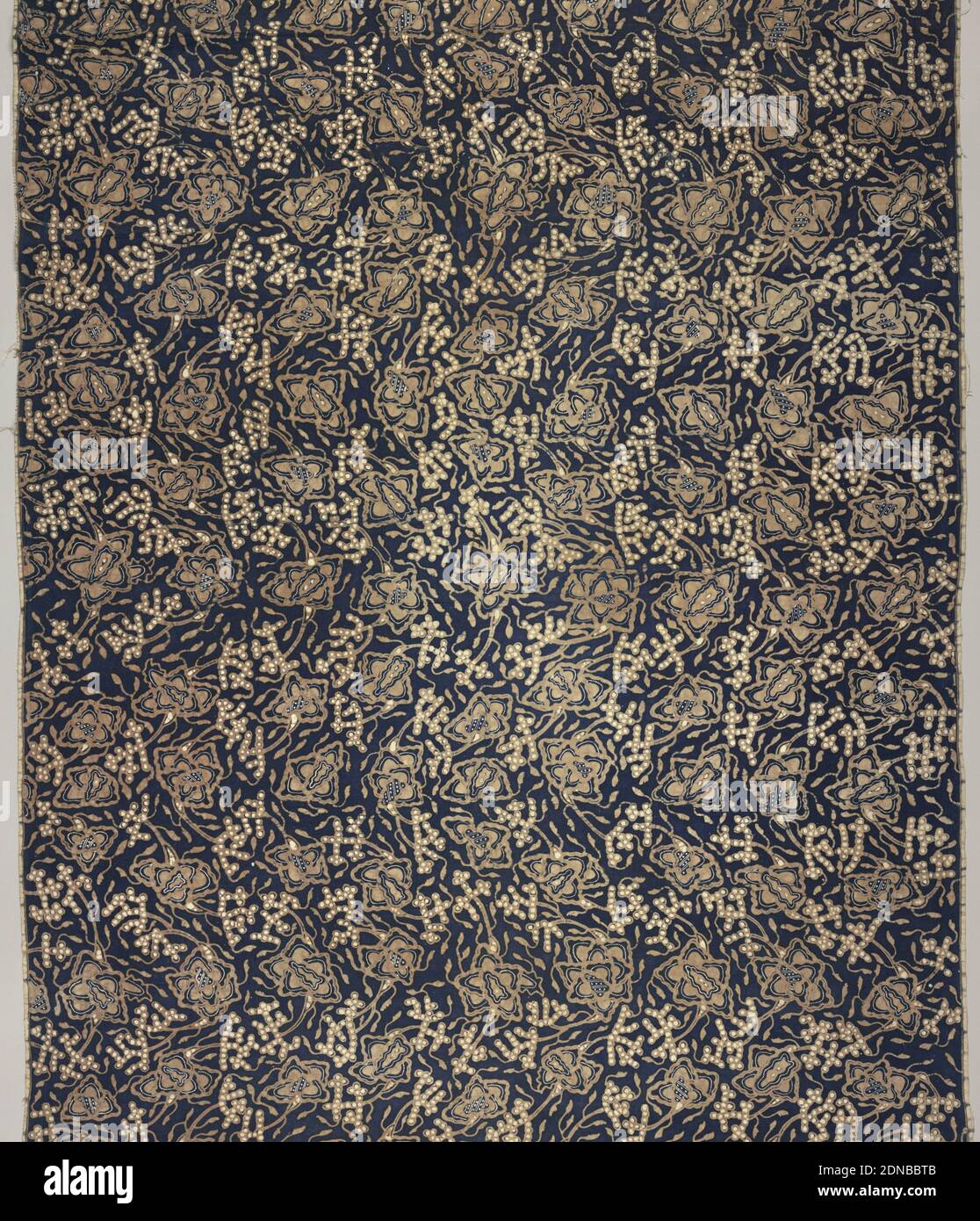 Kain panjang (long sarong), Medium: cotton Technique: wax resist dyeing (batik) on plain weave, A long sarong (kain panjang) with a blue ground and design in brown and white. All-over floral motifs with vine or tendril design., Indonesia, 1850–99, printed, dyed & painted textiles, Kain panjang (long sarong Stock Photohttps://www.alamy.com/image-license-details/?v=1https://www.alamy.com/kain-panjang-long-sarong-medium-cotton-technique-wax-resist-dyeing-batik-on-plain-weave-a-long-sarong-kain-panjang-with-a-blue-ground-and-design-in-brown-and-white-all-over-floral-motifs-with-vine-or-tendril-design-indonesia-185099-printed-dyed-painted-textiles-kain-panjang-long-sarong-image391786651.html
Kain panjang (long sarong), Medium: cotton Technique: wax resist dyeing (batik) on plain weave, A long sarong (kain panjang) with a blue ground and design in brown and white. All-over floral motifs with vine or tendril design., Indonesia, 1850–99, printed, dyed & painted textiles, Kain panjang (long sarong Stock Photohttps://www.alamy.com/image-license-details/?v=1https://www.alamy.com/kain-panjang-long-sarong-medium-cotton-technique-wax-resist-dyeing-batik-on-plain-weave-a-long-sarong-kain-panjang-with-a-blue-ground-and-design-in-brown-and-white-all-over-floral-motifs-with-vine-or-tendril-design-indonesia-185099-printed-dyed-painted-textiles-kain-panjang-long-sarong-image391786651.htmlRM2DNBBTB–Kain panjang (long sarong), Medium: cotton Technique: wax resist dyeing (batik) on plain weave, A long sarong (kain panjang) with a blue ground and design in brown and white. All-over floral motifs with vine or tendril design., Indonesia, 1850–99, printed, dyed & painted textiles, Kain panjang (long sarong
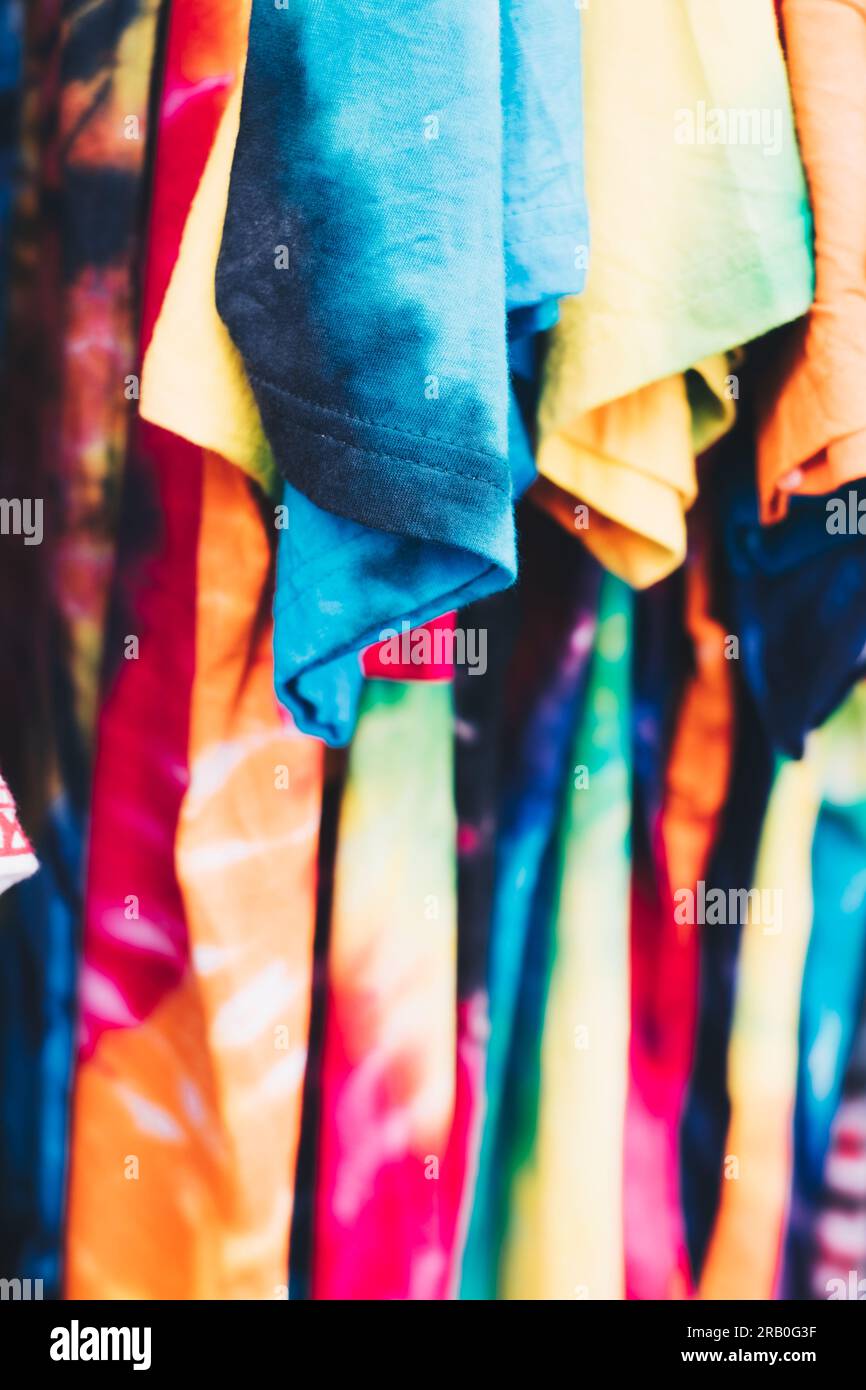 Array of colorful unisex tie-dye shirts. Selective focus. Closeup. Stock Photohttps://www.alamy.com/image-license-details/?v=1https://www.alamy.com/array-of-colorful-unisex-tie-dye-shirts-selective-focus-closeup-image557505635.html
Array of colorful unisex tie-dye shirts. Selective focus. Closeup. Stock Photohttps://www.alamy.com/image-license-details/?v=1https://www.alamy.com/array-of-colorful-unisex-tie-dye-shirts-selective-focus-closeup-image557505635.htmlRF2RB0G3F–Array of colorful unisex tie-dye shirts. Selective focus. Closeup.
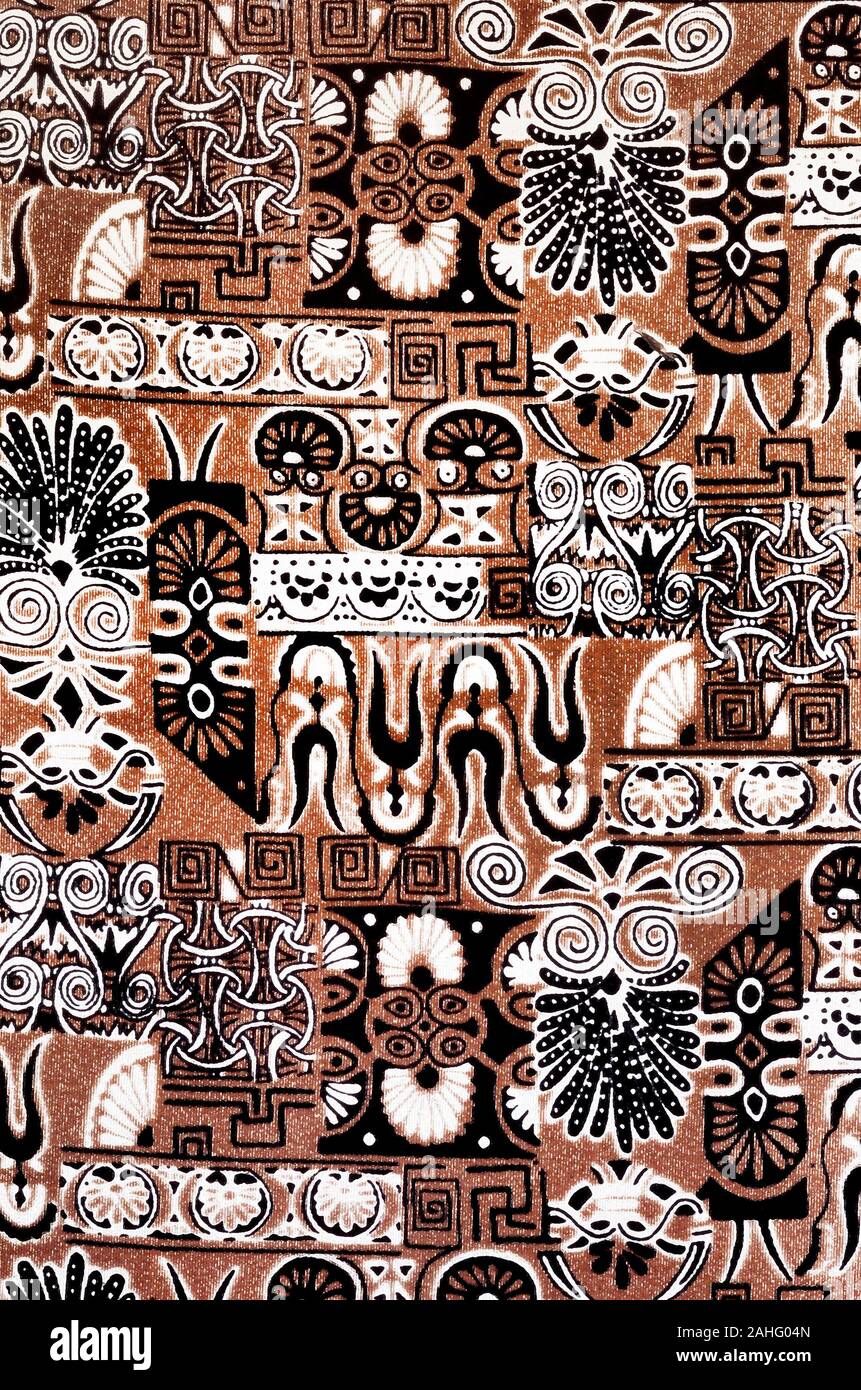 Batik graphic design, watercolor filter effect, Asian fabric art Stock Photohttps://www.alamy.com/image-license-details/?v=1https://www.alamy.com/batik-graphic-design-watercolor-filter-effect-asian-fabric-art-image337797509.html
Batik graphic design, watercolor filter effect, Asian fabric art Stock Photohttps://www.alamy.com/image-license-details/?v=1https://www.alamy.com/batik-graphic-design-watercolor-filter-effect-asian-fabric-art-image337797509.htmlRM2AHG04N–Batik graphic design, watercolor filter effect, Asian fabric art
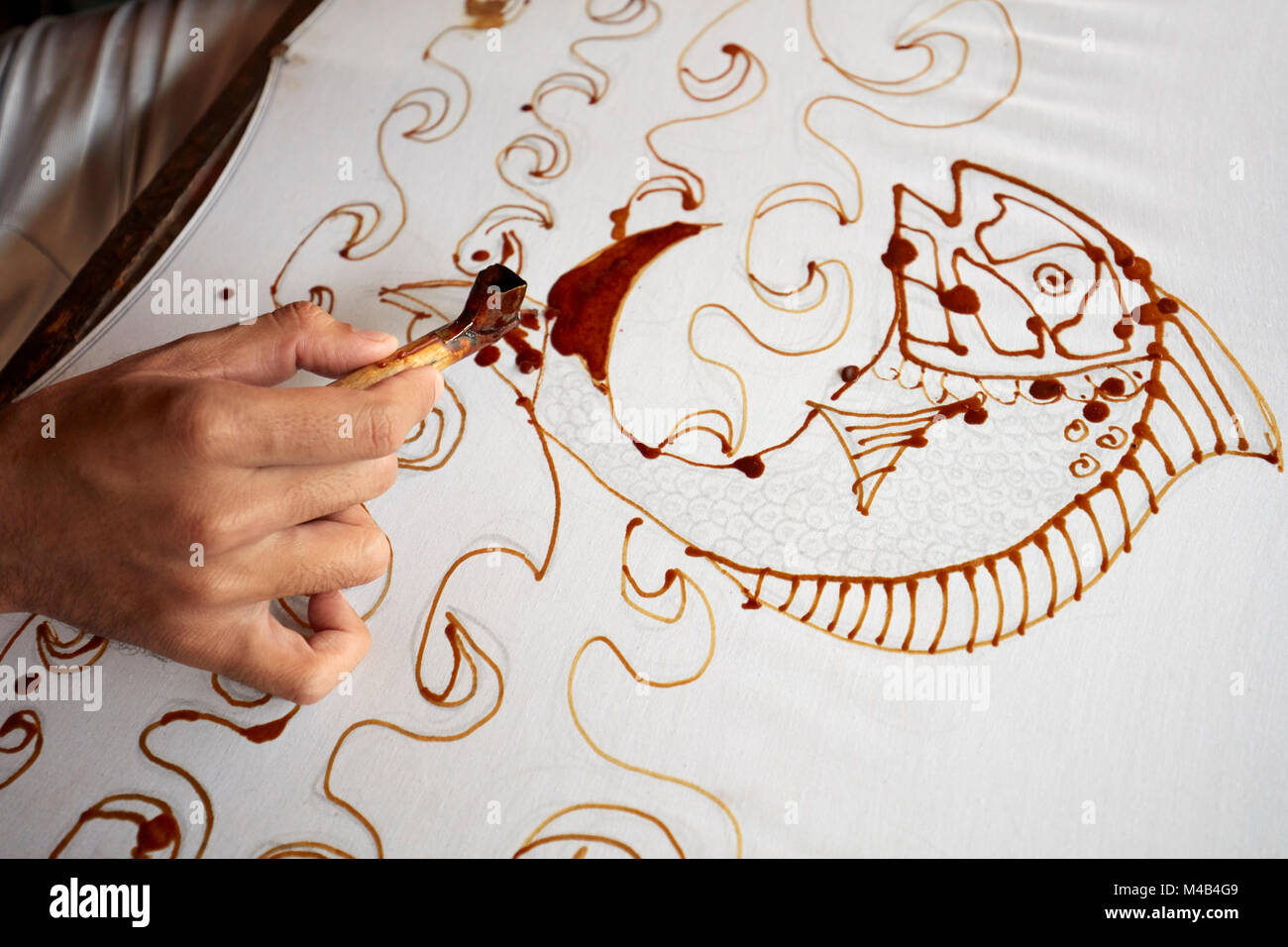 A batik maker applies melted wax on cloth with a canting (spouted tool). Yogyakarta, Java, Indonesia. Stock Photohttps://www.alamy.com/image-license-details/?v=1https://www.alamy.com/stock-photo-a-batik-maker-applies-melted-wax-on-cloth-with-a-canting-spouted-tool-174807369.html
A batik maker applies melted wax on cloth with a canting (spouted tool). Yogyakarta, Java, Indonesia. Stock Photohttps://www.alamy.com/image-license-details/?v=1https://www.alamy.com/stock-photo-a-batik-maker-applies-melted-wax-on-cloth-with-a-canting-spouted-tool-174807369.htmlRMM4B4G9–A batik maker applies melted wax on cloth with a canting (spouted tool). Yogyakarta, Java, Indonesia.
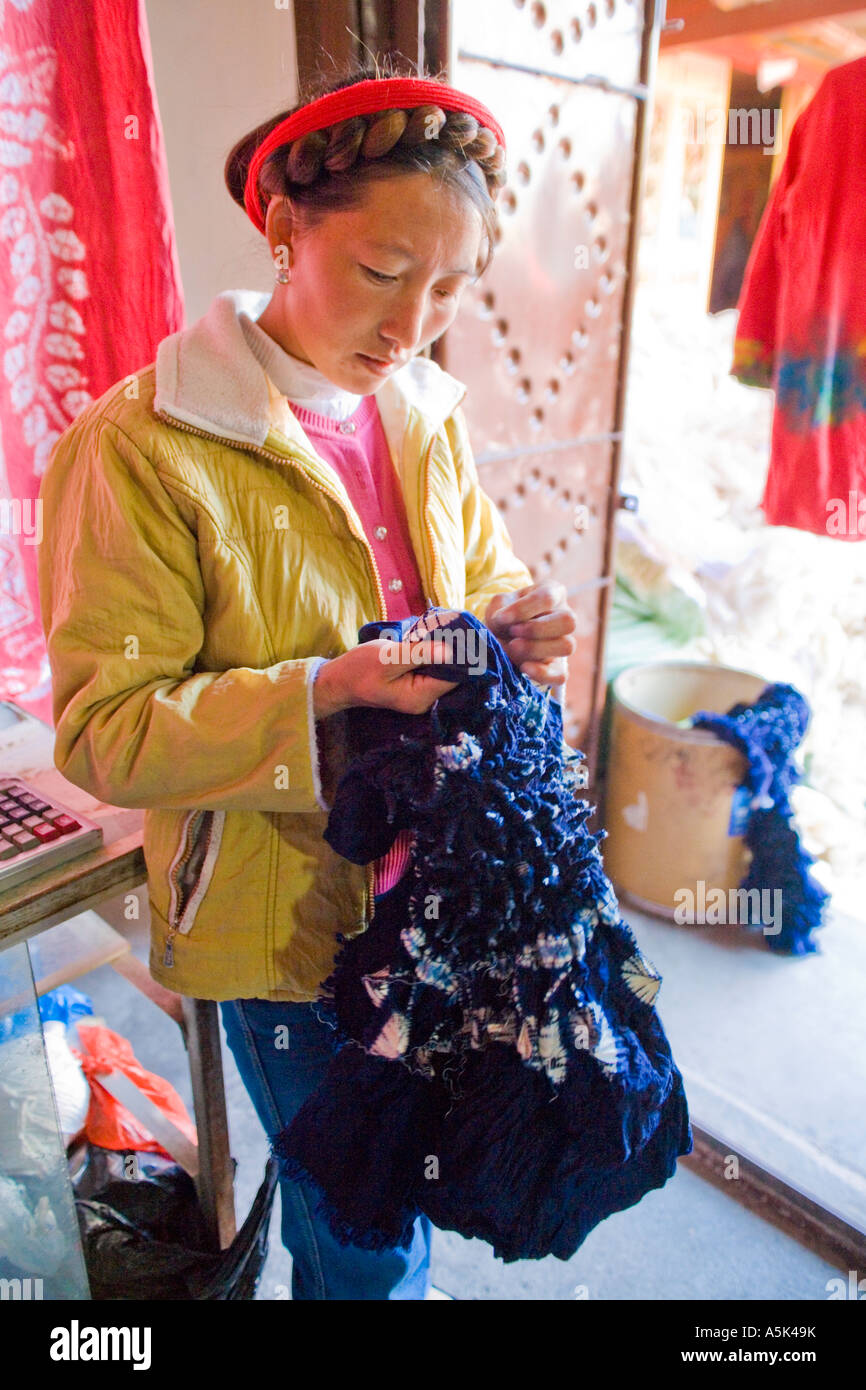 Woman at tie dyeing factory showing indigo dyed item still stitched to resist dyeing JMH2300 Stock Photohttps://www.alamy.com/image-license-details/?v=1https://www.alamy.com/stock-photo-woman-at-tie-dyeing-factory-showing-indigo-dyed-item-still-stitched-11331822.html
Woman at tie dyeing factory showing indigo dyed item still stitched to resist dyeing JMH2300 Stock Photohttps://www.alamy.com/image-license-details/?v=1https://www.alamy.com/stock-photo-woman-at-tie-dyeing-factory-showing-indigo-dyed-item-still-stitched-11331822.htmlRMA5K49K–Woman at tie dyeing factory showing indigo dyed item still stitched to resist dyeing JMH2300
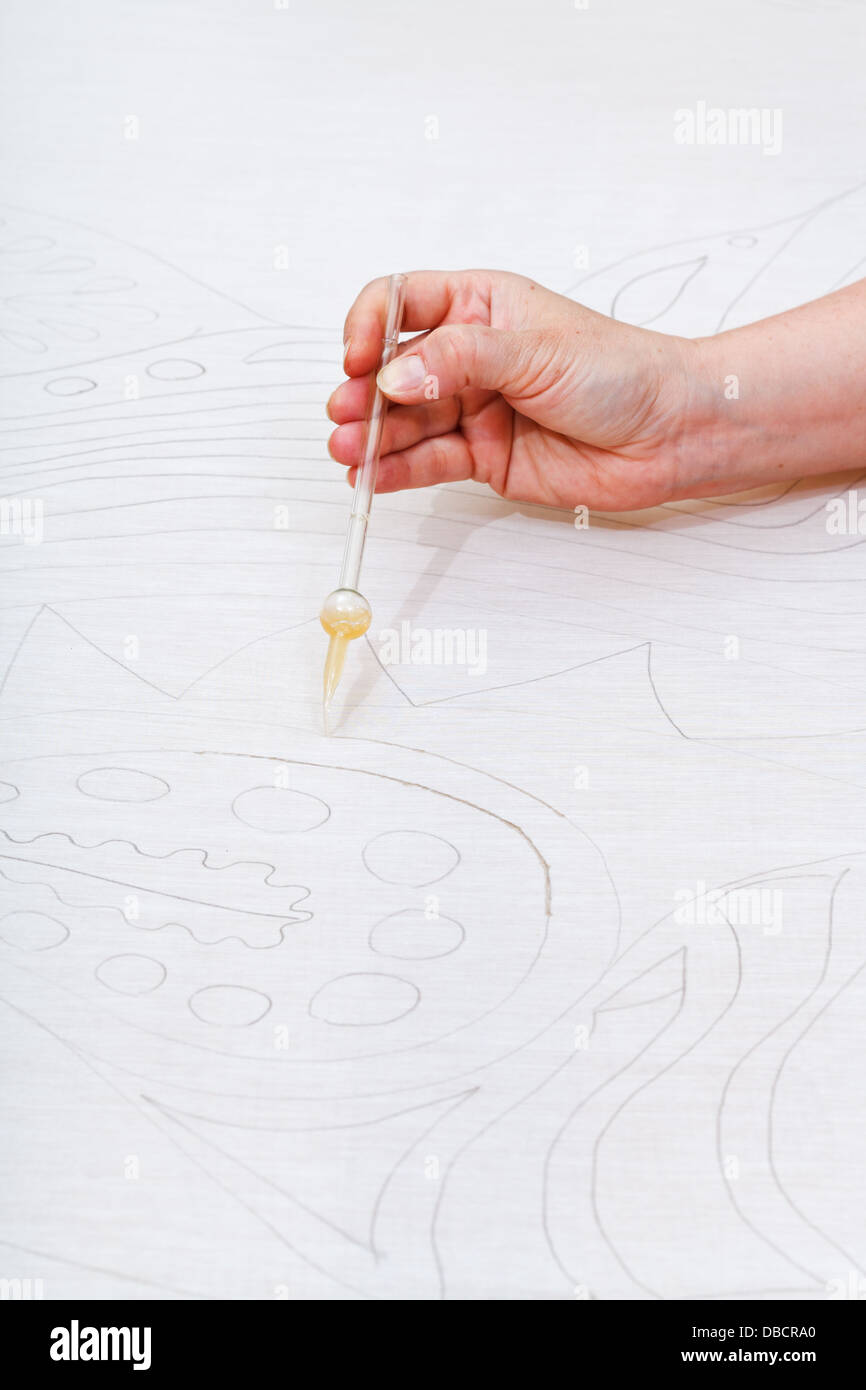 reserve contour drawing on silk for cold batik painting Stock Photohttps://www.alamy.com/image-license-details/?v=1https://www.alamy.com/stock-photo-reserve-contour-drawing-on-silk-for-cold-batik-painting-58674056.html
reserve contour drawing on silk for cold batik painting Stock Photohttps://www.alamy.com/image-license-details/?v=1https://www.alamy.com/stock-photo-reserve-contour-drawing-on-silk-for-cold-batik-painting-58674056.htmlRFDBCRA0–reserve contour drawing on silk for cold batik painting
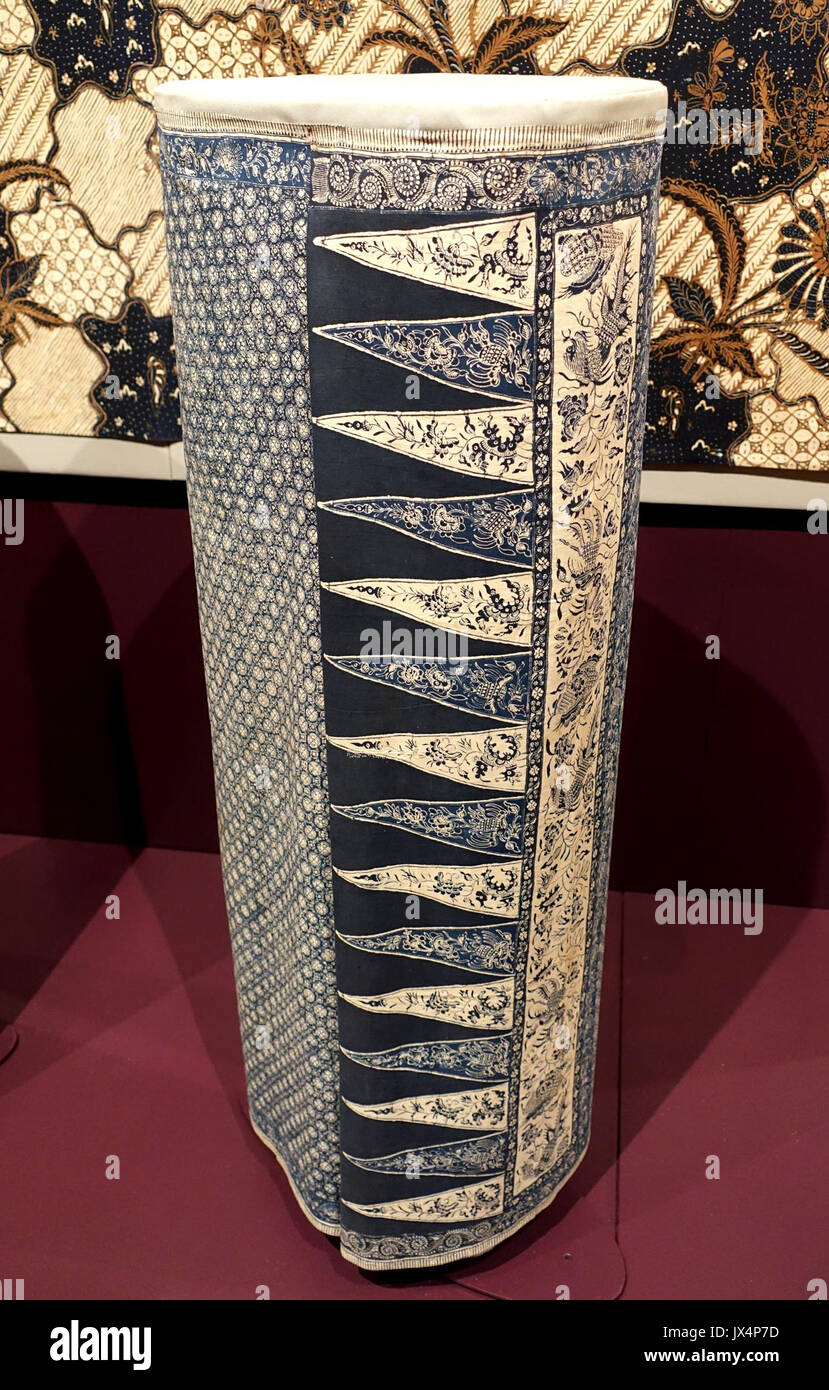 Sarung (hip wrapper) for woman of Peranakan birth, Indonesia, Java, Pekalongan, 19th century, cotton, resist dyed Textile Museum, George Washington University DSC09536 Stock Photohttps://www.alamy.com/image-license-details/?v=1https://www.alamy.com/sarung-hip-wrapper-for-woman-of-peranakan-birth-indonesia-java-pekalongan-image153769265.html
Sarung (hip wrapper) for woman of Peranakan birth, Indonesia, Java, Pekalongan, 19th century, cotton, resist dyed Textile Museum, George Washington University DSC09536 Stock Photohttps://www.alamy.com/image-license-details/?v=1https://www.alamy.com/sarung-hip-wrapper-for-woman-of-peranakan-birth-indonesia-java-pekalongan-image153769265.htmlRMJX4P7D–Sarung (hip wrapper) for woman of Peranakan birth, Indonesia, Java, Pekalongan, 19th century, cotton, resist dyed Textile Museum, George Washington University DSC09536
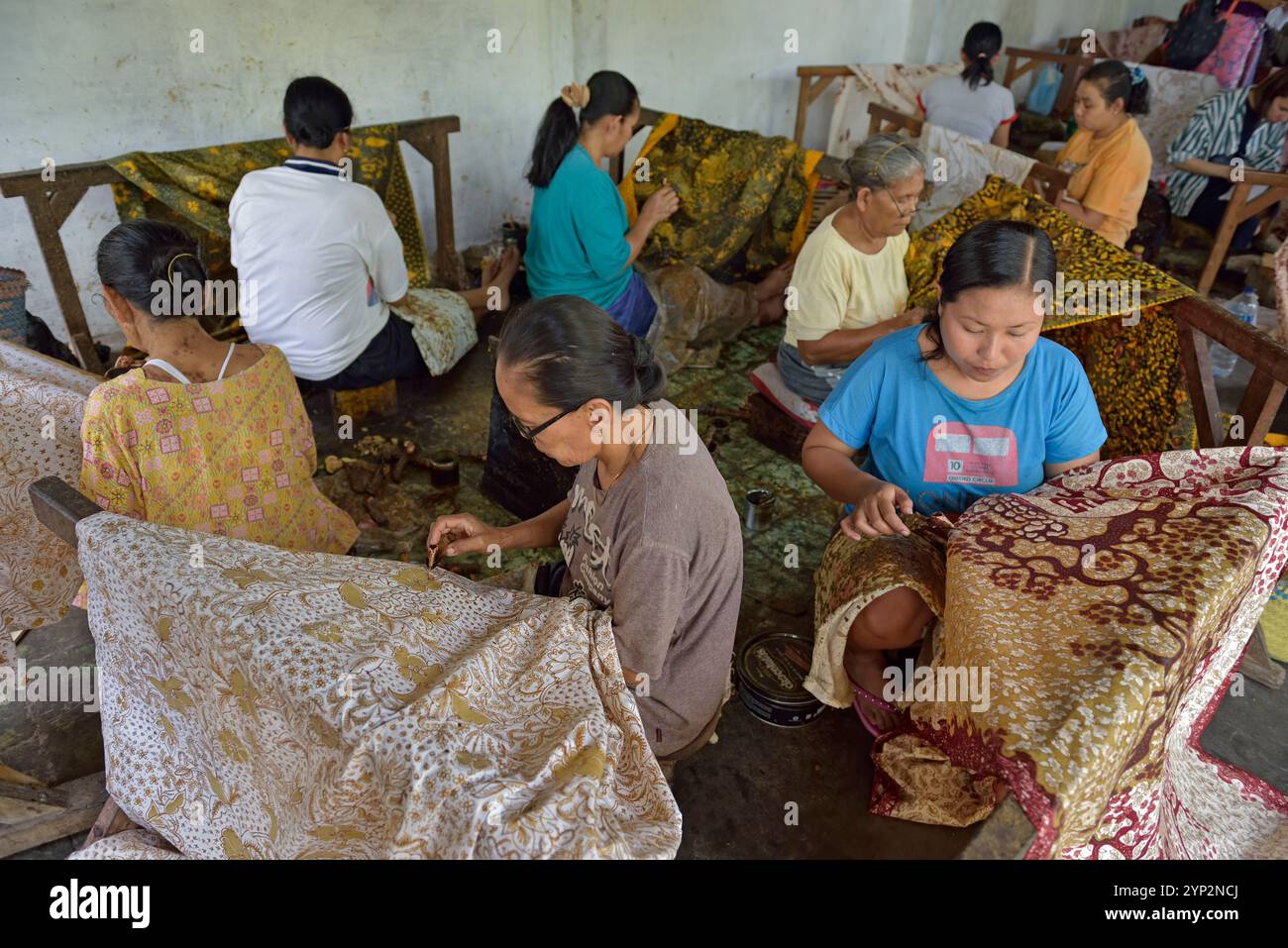 Women using a pen-like tool (canting), to apply liquid hot wax to create pattern on the fabric before dyeing, workshop of Kidang Mas Batik House Stock Photohttps://www.alamy.com/image-license-details/?v=1https://www.alamy.com/women-using-a-pen-like-tool-canting-to-apply-liquid-hot-wax-to-create-pattern-on-the-fabric-before-dyeing-workshop-of-kidang-mas-batik-house-image633156402.html
Women using a pen-like tool (canting), to apply liquid hot wax to create pattern on the fabric before dyeing, workshop of Kidang Mas Batik House Stock Photohttps://www.alamy.com/image-license-details/?v=1https://www.alamy.com/women-using-a-pen-like-tool-canting-to-apply-liquid-hot-wax-to-create-pattern-on-the-fabric-before-dyeing-workshop-of-kidang-mas-batik-house-image633156402.htmlRF2YP2NCJ–Women using a pen-like tool (canting), to apply liquid hot wax to create pattern on the fabric before dyeing, workshop of Kidang Mas Batik House
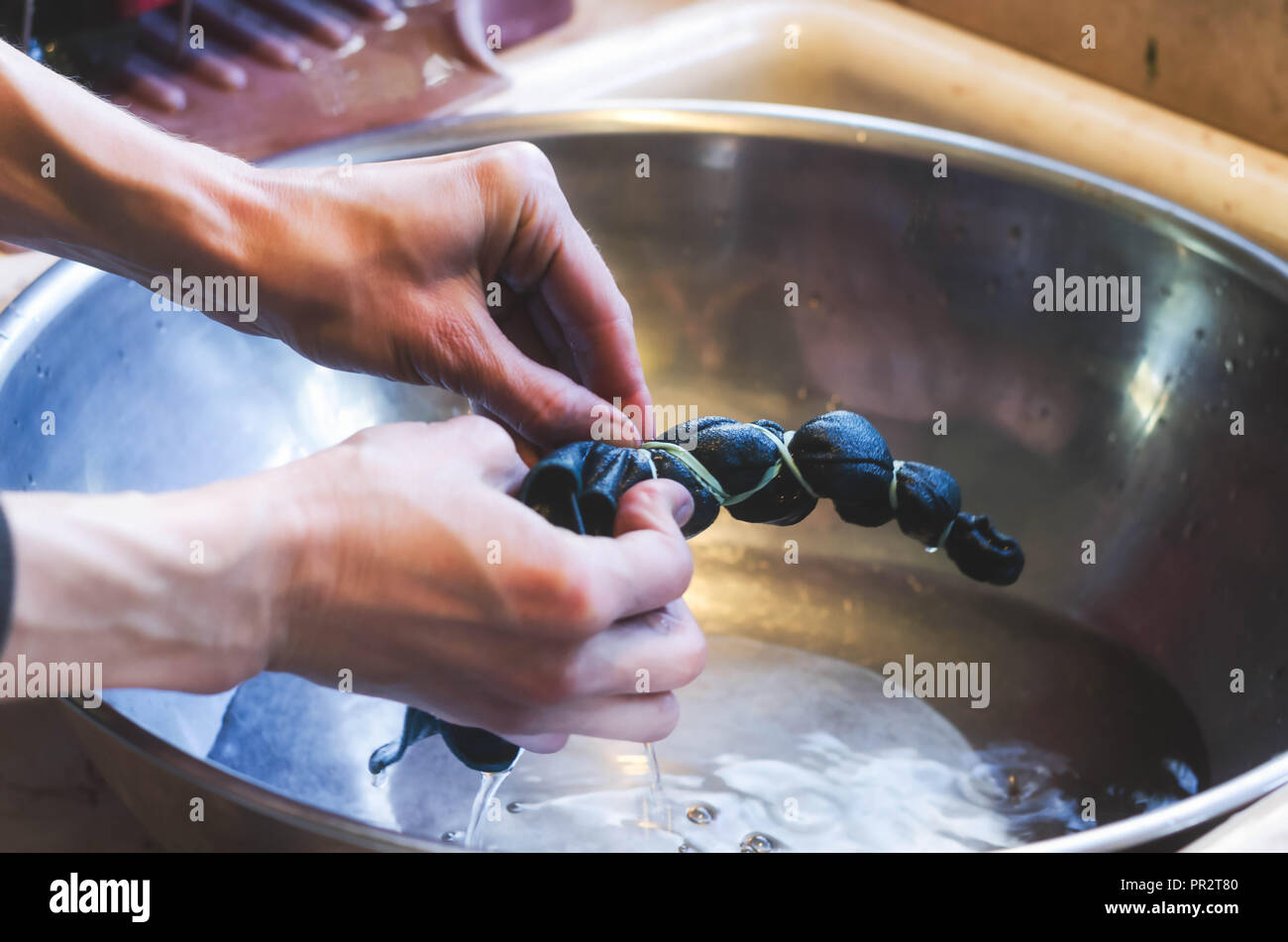 A woman removing the rubber band from clothes during the tie-dyeing process. Making handcrafted clothing art. Stock Photohttps://www.alamy.com/image-license-details/?v=1https://www.alamy.com/a-woman-removing-the-rubber-band-from-clothes-during-the-tie-dyeing-process-making-handcrafted-clothing-art-image220724448.html
A woman removing the rubber band from clothes during the tie-dyeing process. Making handcrafted clothing art. Stock Photohttps://www.alamy.com/image-license-details/?v=1https://www.alamy.com/a-woman-removing-the-rubber-band-from-clothes-during-the-tie-dyeing-process-making-handcrafted-clothing-art-image220724448.htmlRFPR2T80–A woman removing the rubber band from clothes during the tie-dyeing process. Making handcrafted clothing art.
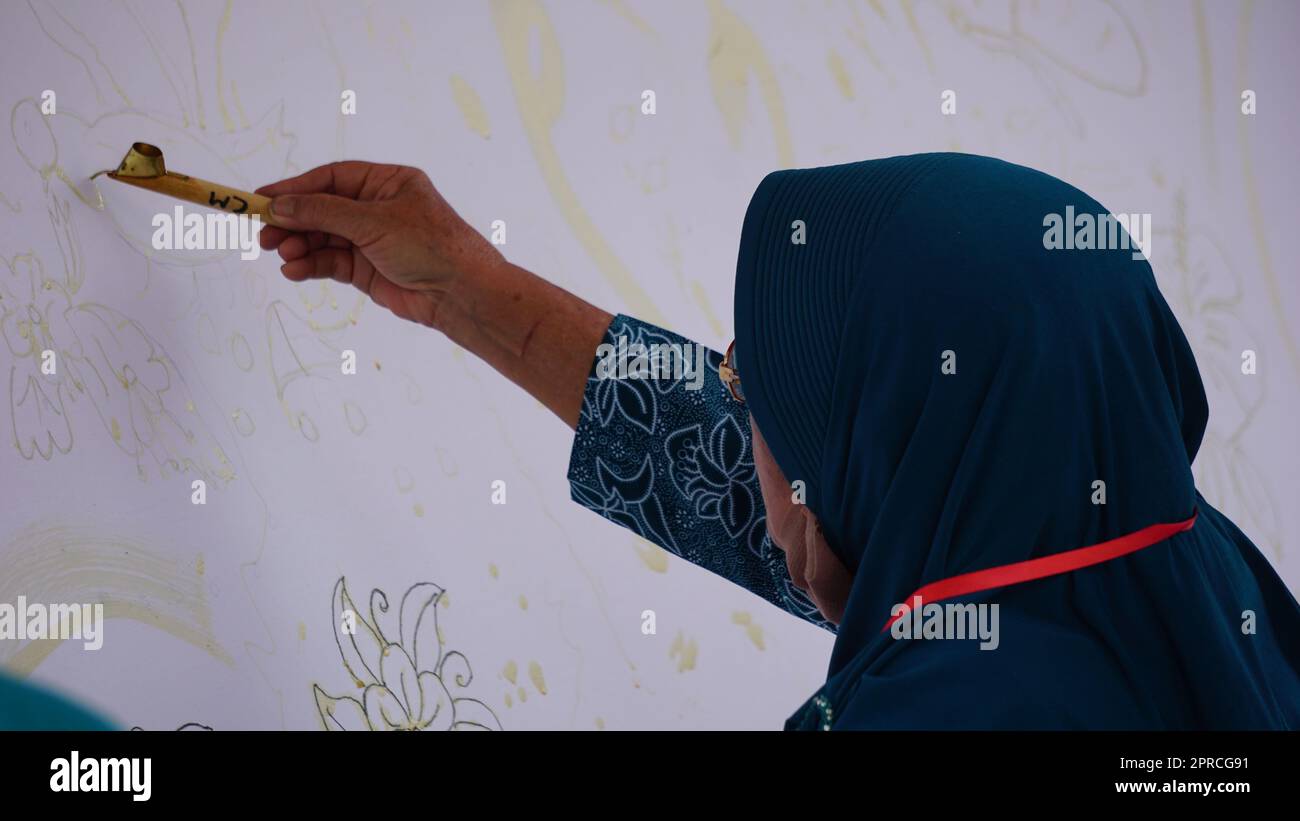 The process of making batik on Festival Batik Keren Blitar. Batik is a handmade ancient art from Indonesia. Produced by technique of wax-resist dyeing Stock Photohttps://www.alamy.com/image-license-details/?v=1https://www.alamy.com/the-process-of-making-batik-on-festival-batik-keren-blitar-batik-is-a-handmade-ancient-art-from-indonesia-produced-by-technique-of-wax-resist-dyeing-image547934717.html
The process of making batik on Festival Batik Keren Blitar. Batik is a handmade ancient art from Indonesia. Produced by technique of wax-resist dyeing Stock Photohttps://www.alamy.com/image-license-details/?v=1https://www.alamy.com/the-process-of-making-batik-on-festival-batik-keren-blitar-batik-is-a-handmade-ancient-art-from-indonesia-produced-by-technique-of-wax-resist-dyeing-image547934717.htmlRF2PRCG91–The process of making batik on Festival Batik Keren Blitar. Batik is a handmade ancient art from Indonesia. Produced by technique of wax-resist dyeing
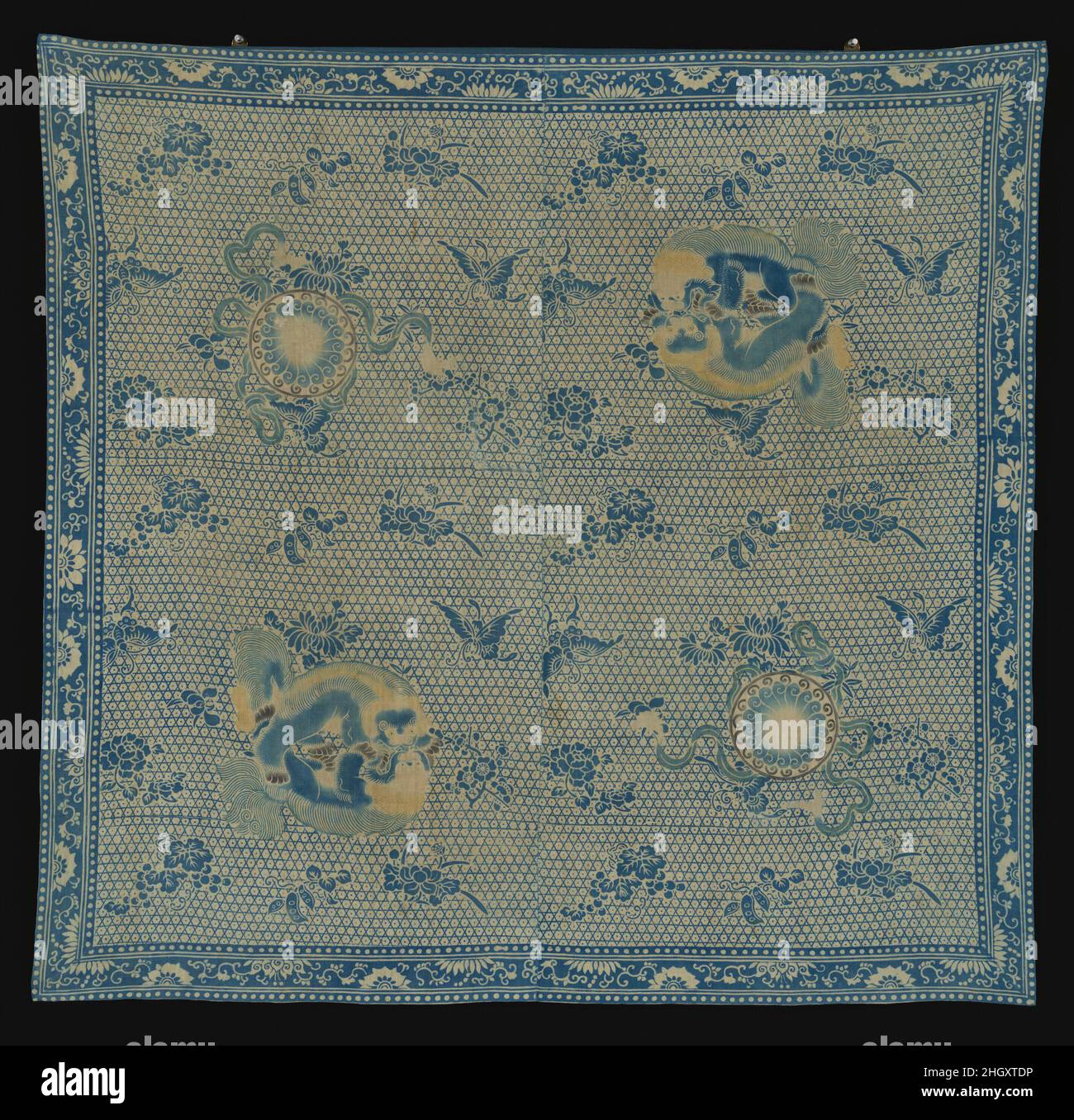 Wrapping cloth 19th century China Wrapping cloth was used to bundle material for carrying and was popular in East Asia before the introduction of the modern backpack. Resist- and stencil-dyed patterns of two pairs of stylized badgers hugging each other appear on opposite corners. The Chinese word for “badger” (huan) is pronounced the same as the word for “happiness.” Two badgers, therefore, symbolize double happiness, a common pun in Chinese art.. Wrapping cloth. China. 19th century. Cotton with resist and stencil dyeing. Qing dynasty (1644–1911). Textiles-Painted and Printed Stock Photohttps://www.alamy.com/image-license-details/?v=1https://www.alamy.com/wrapping-cloth-19th-century-china-wrapping-cloth-was-used-to-bundle-material-for-carrying-and-was-popular-in-east-asia-before-the-introduction-of-the-modern-backpack-resist-and-stencil-dyed-patterns-of-two-pairs-of-stylized-badgers-hugging-each-other-appear-on-opposite-corners-the-chinese-word-for-badger-huan-is-pronounced-the-same-as-the-word-for-happiness-two-badgers-therefore-symbolize-double-happiness-a-common-pun-in-chinese-art-wrapping-cloth-china-19th-century-cotton-with-resist-and-stencil-dyeing-qing-dynasty-16441911-textiles-painted-and-printed-image457894018.html
Wrapping cloth 19th century China Wrapping cloth was used to bundle material for carrying and was popular in East Asia before the introduction of the modern backpack. Resist- and stencil-dyed patterns of two pairs of stylized badgers hugging each other appear on opposite corners. The Chinese word for “badger” (huan) is pronounced the same as the word for “happiness.” Two badgers, therefore, symbolize double happiness, a common pun in Chinese art.. Wrapping cloth. China. 19th century. Cotton with resist and stencil dyeing. Qing dynasty (1644–1911). Textiles-Painted and Printed Stock Photohttps://www.alamy.com/image-license-details/?v=1https://www.alamy.com/wrapping-cloth-19th-century-china-wrapping-cloth-was-used-to-bundle-material-for-carrying-and-was-popular-in-east-asia-before-the-introduction-of-the-modern-backpack-resist-and-stencil-dyed-patterns-of-two-pairs-of-stylized-badgers-hugging-each-other-appear-on-opposite-corners-the-chinese-word-for-badger-huan-is-pronounced-the-same-as-the-word-for-happiness-two-badgers-therefore-symbolize-double-happiness-a-common-pun-in-chinese-art-wrapping-cloth-china-19th-century-cotton-with-resist-and-stencil-dyeing-qing-dynasty-16441911-textiles-painted-and-printed-image457894018.htmlRM2HGXTDP–Wrapping cloth 19th century China Wrapping cloth was used to bundle material for carrying and was popular in East Asia before the introduction of the modern backpack. Resist- and stencil-dyed patterns of two pairs of stylized badgers hugging each other appear on opposite corners. The Chinese word for “badger” (huan) is pronounced the same as the word for “happiness.” Two badgers, therefore, symbolize double happiness, a common pun in Chinese art.. Wrapping cloth. China. 19th century. Cotton with resist and stencil dyeing. Qing dynasty (1644–1911). Textiles-Painted and Printed
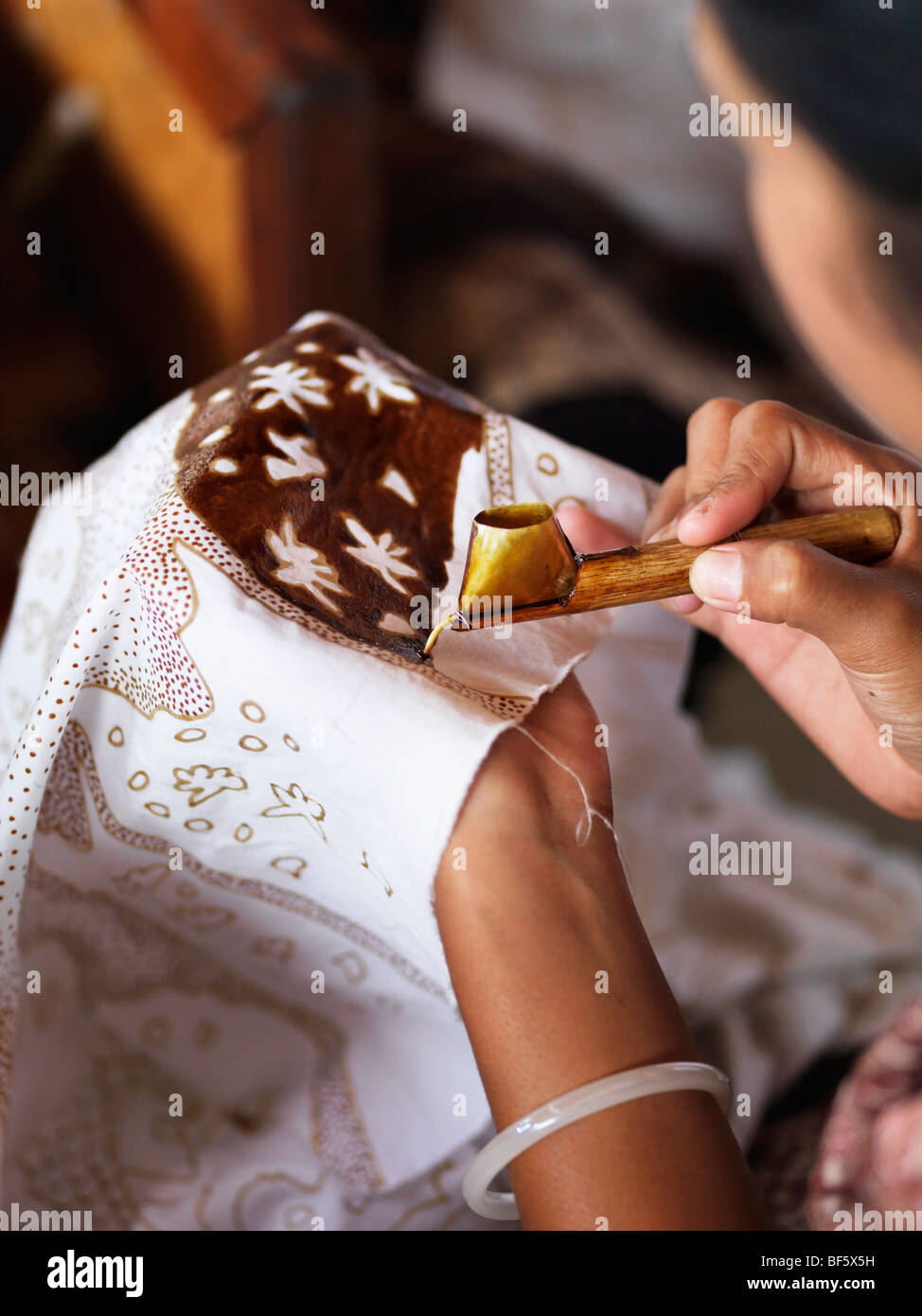 A woman using a wax-resist dyeing technique used on textile, to create a batik print. Stock Photohttps://www.alamy.com/image-license-details/?v=1https://www.alamy.com/stock-photo-a-woman-using-a-wax-resist-dyeing-technique-used-on-textile-to-create-26560509.html
A woman using a wax-resist dyeing technique used on textile, to create a batik print. Stock Photohttps://www.alamy.com/image-license-details/?v=1https://www.alamy.com/stock-photo-a-woman-using-a-wax-resist-dyeing-technique-used-on-textile-to-create-26560509.htmlRMBF5X5H–A woman using a wax-resist dyeing technique used on textile, to create a batik print.
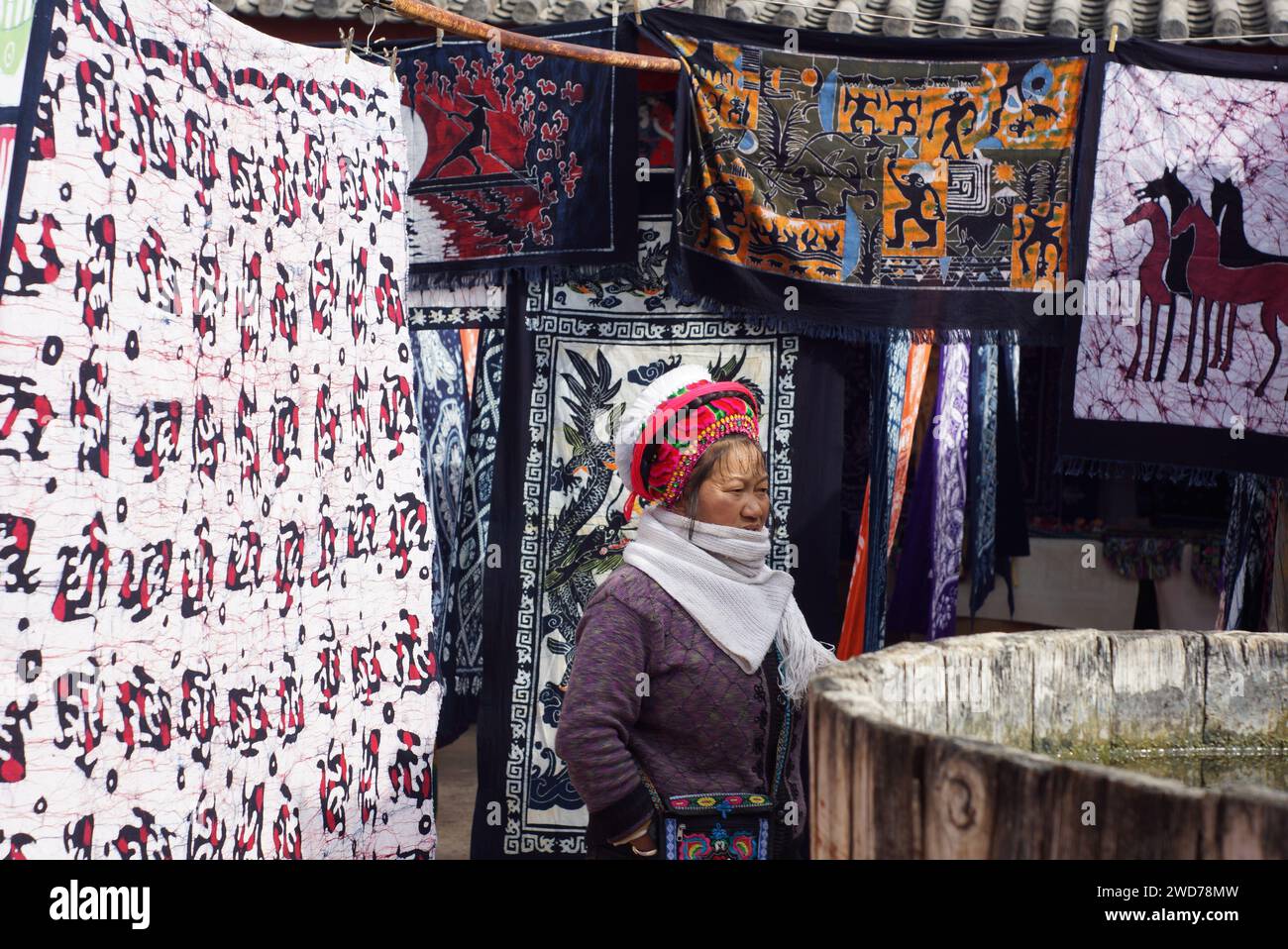 dyeing factory in the Shuhe area. one of traditional culture in yunnan Stock Photohttps://www.alamy.com/image-license-details/?v=1https://www.alamy.com/dyeing-factory-in-the-shuhe-area-one-of-traditional-culture-in-yunnan-image593303561.html
dyeing factory in the Shuhe area. one of traditional culture in yunnan Stock Photohttps://www.alamy.com/image-license-details/?v=1https://www.alamy.com/dyeing-factory-in-the-shuhe-area-one-of-traditional-culture-in-yunnan-image593303561.htmlRF2WD78MW–dyeing factory in the Shuhe area. one of traditional culture in yunnan
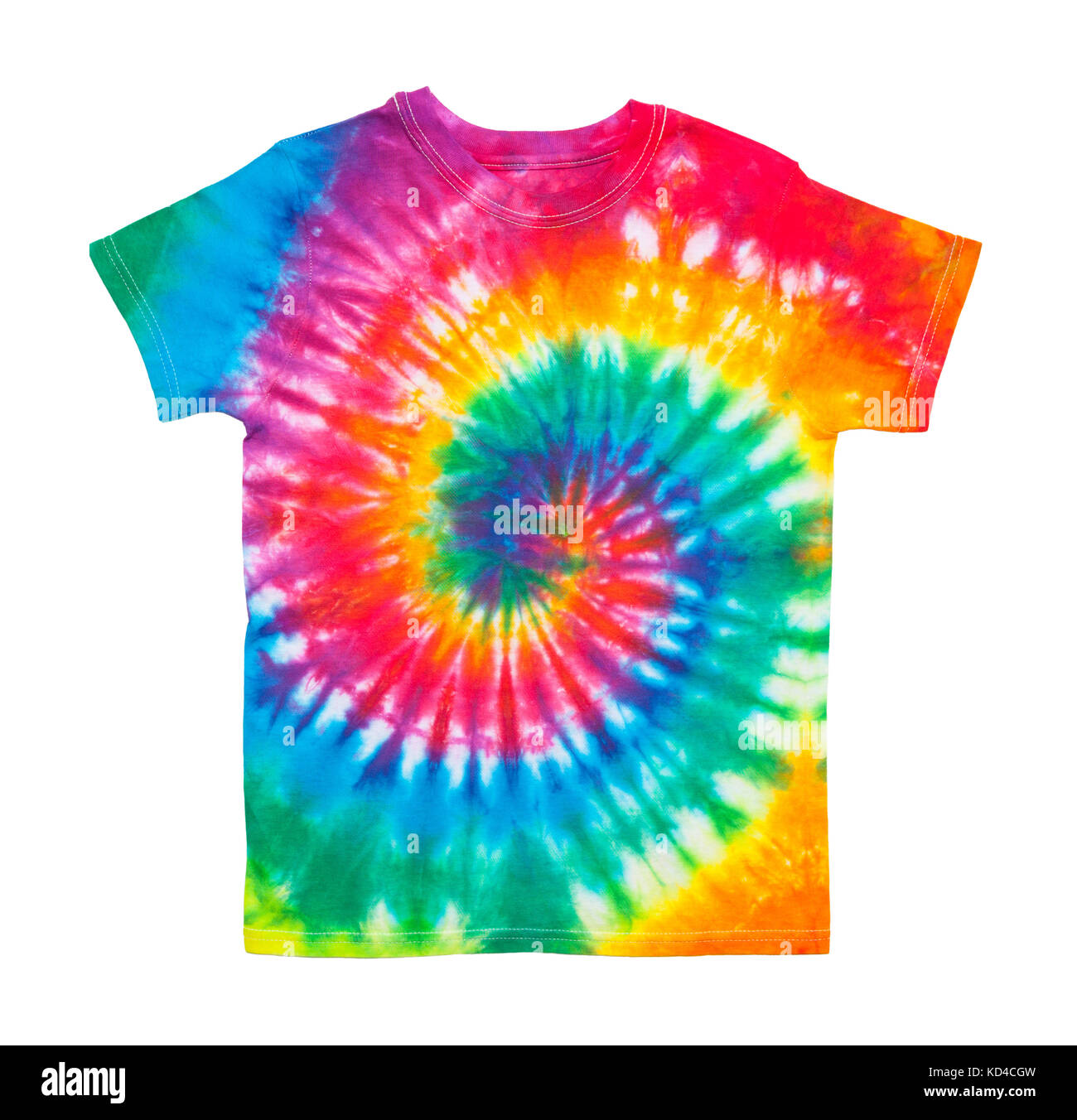 Spiral Tie Dye Shirt Isolated on White Background. Stock Photohttps://www.alamy.com/image-license-details/?v=1https://www.alamy.com/stock-image-spiral-tie-dye-shirt-isolated-on-white-background-162981529.html
Spiral Tie Dye Shirt Isolated on White Background. Stock Photohttps://www.alamy.com/image-license-details/?v=1https://www.alamy.com/stock-image-spiral-tie-dye-shirt-isolated-on-white-background-162981529.htmlRFKD4CGW–Spiral Tie Dye Shirt Isolated on White Background.
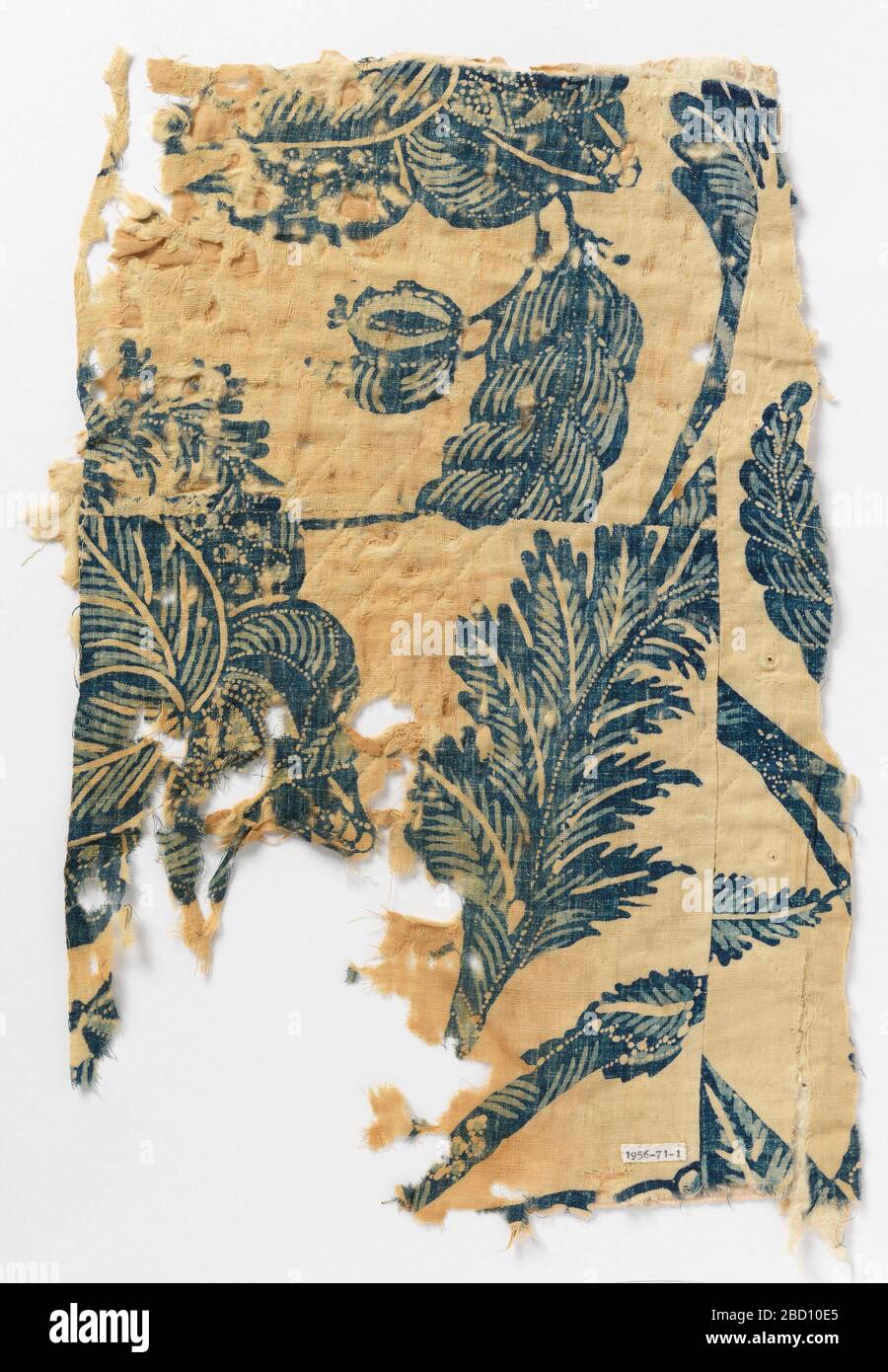 Fragment. Research in ProgressFragment of a quilted textile. Woven cotton textile resist-dyed in two shades of blue on white background showing pattern of leaves and fruit. Fragment Stock Photohttps://www.alamy.com/image-license-details/?v=1https://www.alamy.com/fragment-research-in-progressfragment-of-a-quilted-textile-woven-cotton-textile-resist-dyed-in-two-shades-of-blue-on-white-background-showing-pattern-of-leaves-and-fruit-fragment-image352220237.html
Fragment. Research in ProgressFragment of a quilted textile. Woven cotton textile resist-dyed in two shades of blue on white background showing pattern of leaves and fruit. Fragment Stock Photohttps://www.alamy.com/image-license-details/?v=1https://www.alamy.com/fragment-research-in-progressfragment-of-a-quilted-textile-woven-cotton-textile-resist-dyed-in-two-shades-of-blue-on-white-background-showing-pattern-of-leaves-and-fruit-fragment-image352220237.htmlRM2BD10E5–Fragment. Research in ProgressFragment of a quilted textile. Woven cotton textile resist-dyed in two shades of blue on white background showing pattern of leaves and fruit. Fragment
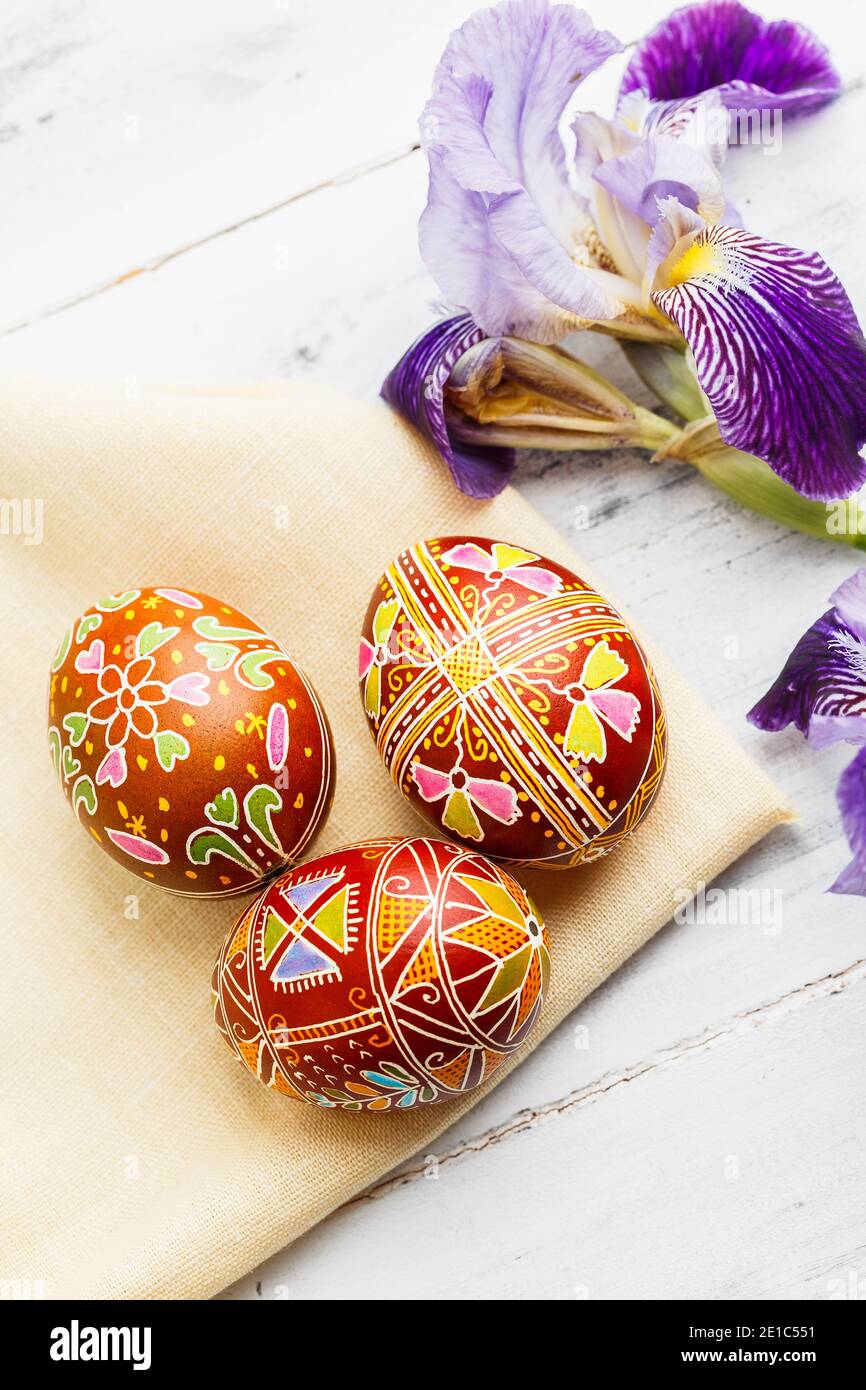 Three handmade Easter eggs decorated with wax-resist dyeing technique. Ukrainian pysanky on the table. Vertical composition Stock Photohttps://www.alamy.com/image-license-details/?v=1https://www.alamy.com/three-handmade-easter-eggs-decorated-with-wax-resist-dyeing-technique-ukrainian-pysanky-on-the-table-vertical-composition-image396720605.html
Three handmade Easter eggs decorated with wax-resist dyeing technique. Ukrainian pysanky on the table. Vertical composition Stock Photohttps://www.alamy.com/image-license-details/?v=1https://www.alamy.com/three-handmade-easter-eggs-decorated-with-wax-resist-dyeing-technique-ukrainian-pysanky-on-the-table-vertical-composition-image396720605.htmlRF2E1C551–Three handmade Easter eggs decorated with wax-resist dyeing technique. Ukrainian pysanky on the table. Vertical composition
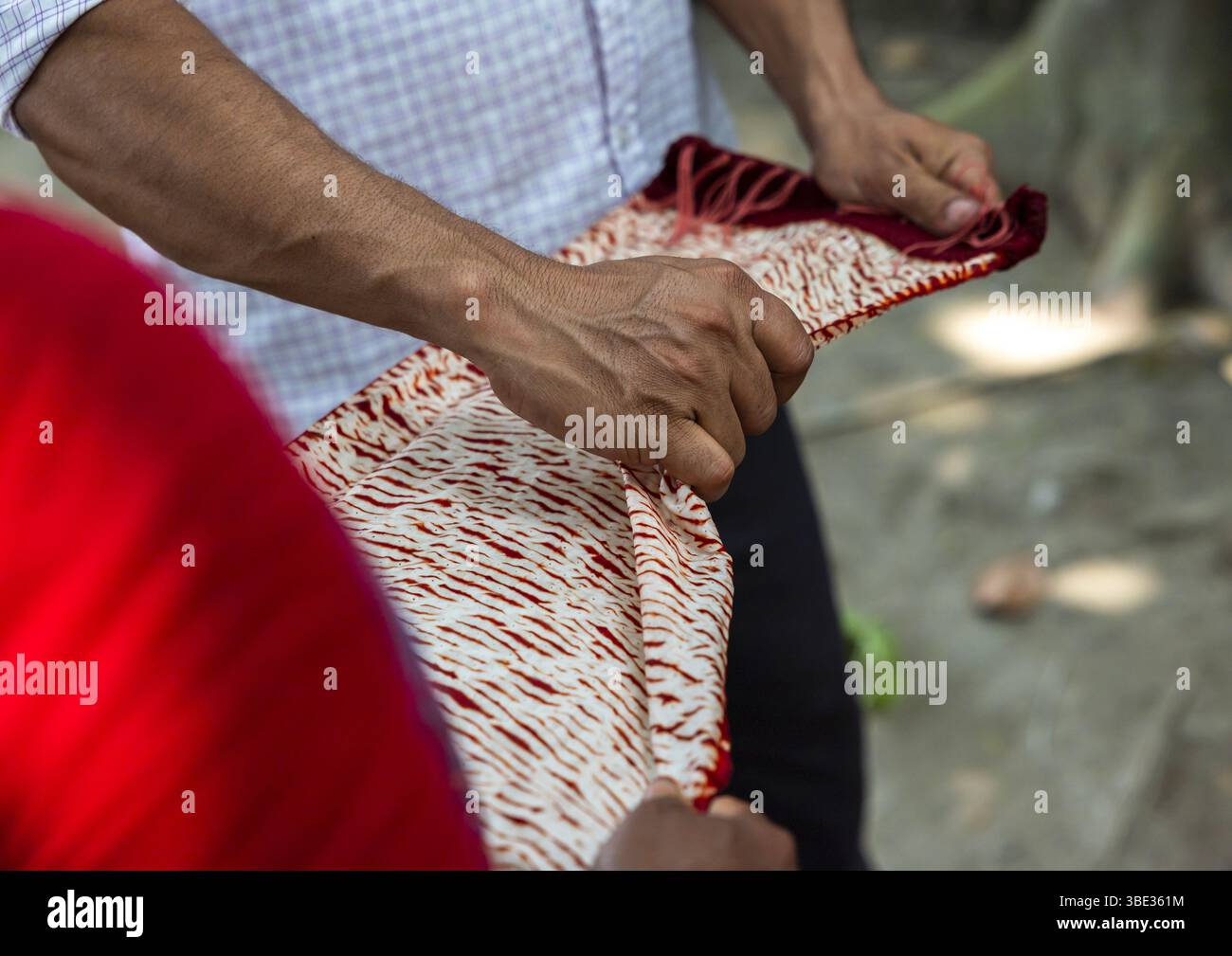 Shawl made with red tie-dye resist dyeing technique in Living Blue, Rangpur Division, Goalpara, Bangladesh Stock Photohttps://www.alamy.com/image-license-details/?v=1https://www.alamy.com/shawl-made-with-red-tie-dye-resist-dyeing-technique-in-living-blue-rangpur-division-goalpara-bangladesh-image679880144.html
Shawl made with red tie-dye resist dyeing technique in Living Blue, Rangpur Division, Goalpara, Bangladesh Stock Photohttps://www.alamy.com/image-license-details/?v=1https://www.alamy.com/shawl-made-with-red-tie-dye-resist-dyeing-technique-in-living-blue-rangpur-division-goalpara-bangladesh-image679880144.htmlRM3BE361M–Shawl made with red tie-dye resist dyeing technique in Living Blue, Rangpur Division, Goalpara, Bangladesh
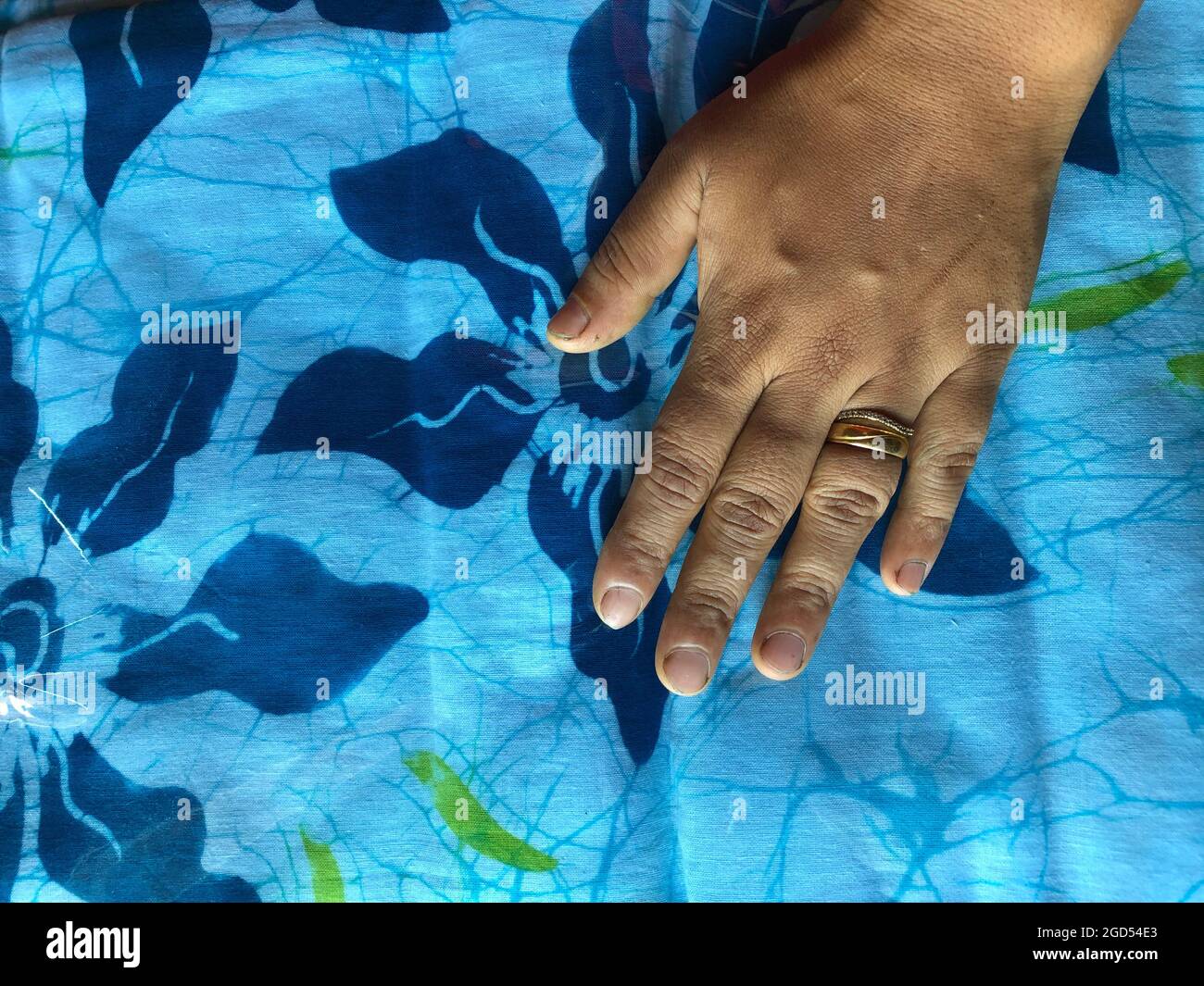 how batik applied fabric, closeup view of fabric painting art with batik technique Stock Photohttps://www.alamy.com/image-license-details/?v=1https://www.alamy.com/how-batik-applied-fabric-closeup-view-of-fabric-painting-art-with-batik-technique-image438363019.html
how batik applied fabric, closeup view of fabric painting art with batik technique Stock Photohttps://www.alamy.com/image-license-details/?v=1https://www.alamy.com/how-batik-applied-fabric-closeup-view-of-fabric-painting-art-with-batik-technique-image438363019.htmlRF2GD54E3–how batik applied fabric, closeup view of fabric painting art with batik technique
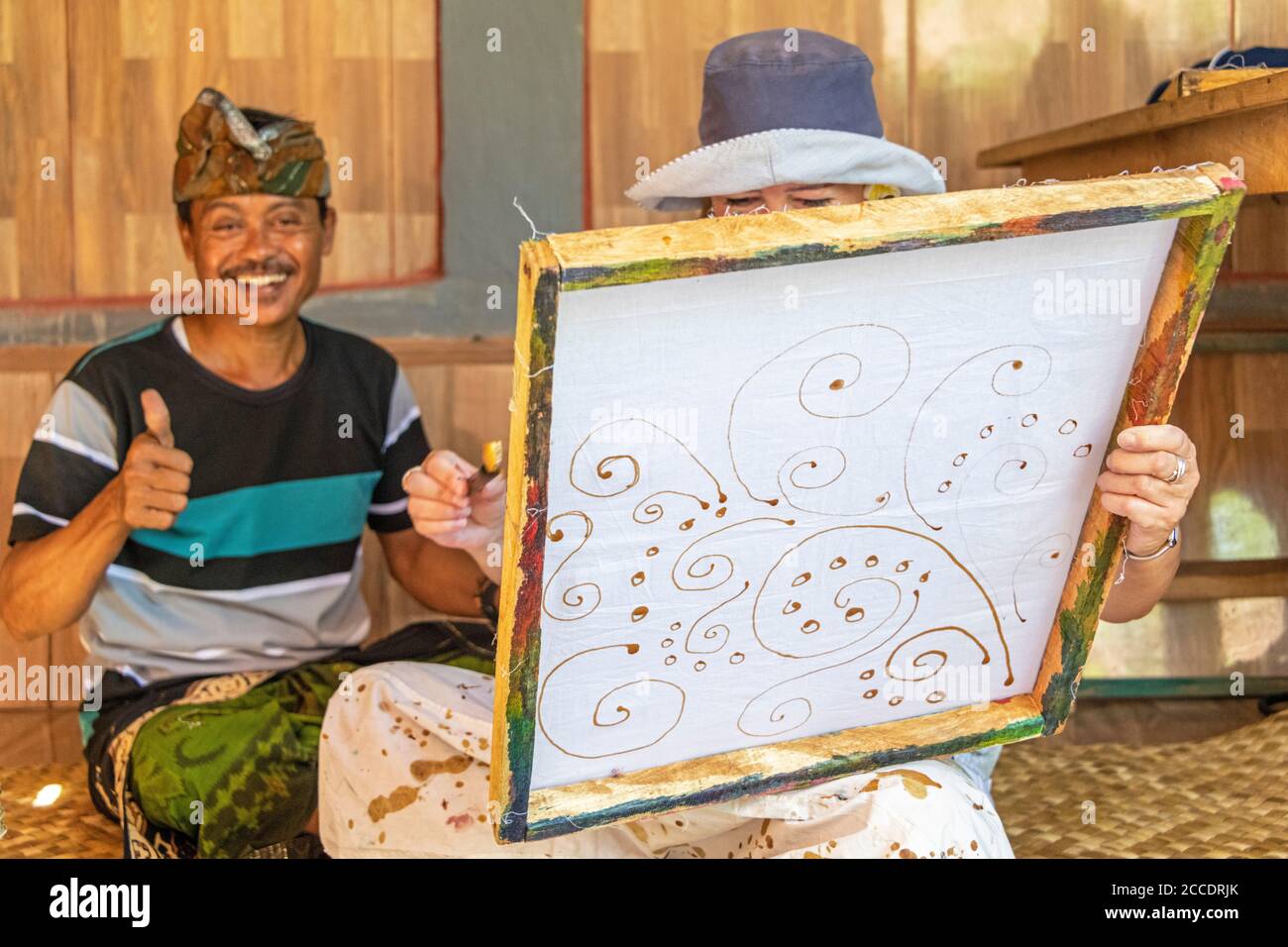 Batik is an traditional Balinese art technique of wax-resist dyeing applied to whole cloth. This technique originated from Java but has become popular Stock Photohttps://www.alamy.com/image-license-details/?v=1https://www.alamy.com/batik-is-an-traditional-balinese-art-technique-of-wax-resist-dyeing-applied-to-whole-cloth-this-technique-originated-from-java-but-has-become-popular-image369097531.html
Batik is an traditional Balinese art technique of wax-resist dyeing applied to whole cloth. This technique originated from Java but has become popular Stock Photohttps://www.alamy.com/image-license-details/?v=1https://www.alamy.com/batik-is-an-traditional-balinese-art-technique-of-wax-resist-dyeing-applied-to-whole-cloth-this-technique-originated-from-java-but-has-become-popular-image369097531.htmlRF2CCDRJK–Batik is an traditional Balinese art technique of wax-resist dyeing applied to whole cloth. This technique originated from Java but has become popular
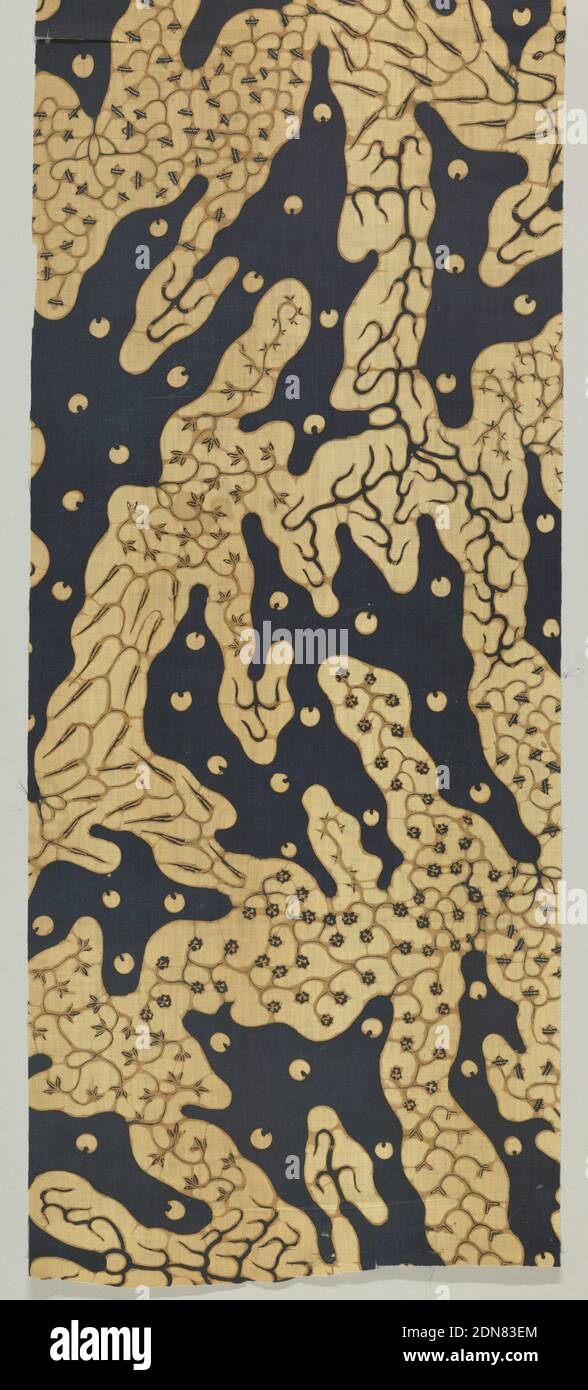 Textile, Medium: cotton Technique: wax resist dyeing (batik) on plain weave, Off-white organic forms on dark blue ground filled with creeping vines in tan showing different, dark blue, leaf and floral designs at the ends. Interspersed off-white dots with indent throughout ground., Indonesia, 19th century, printed, dyed & painted textiles, Textile Stock Photohttps://www.alamy.com/image-license-details/?v=1https://www.alamy.com/textile-medium-cotton-technique-wax-resist-dyeing-batik-on-plain-weave-off-white-organic-forms-on-dark-blue-ground-filled-with-creeping-vines-in-tan-showing-different-dark-blue-leaf-and-floral-designs-at-the-ends-interspersed-off-white-dots-with-indent-throughout-ground-indonesia-19th-century-printed-dyed-painted-textiles-textile-image391714252.html
Textile, Medium: cotton Technique: wax resist dyeing (batik) on plain weave, Off-white organic forms on dark blue ground filled with creeping vines in tan showing different, dark blue, leaf and floral designs at the ends. Interspersed off-white dots with indent throughout ground., Indonesia, 19th century, printed, dyed & painted textiles, Textile Stock Photohttps://www.alamy.com/image-license-details/?v=1https://www.alamy.com/textile-medium-cotton-technique-wax-resist-dyeing-batik-on-plain-weave-off-white-organic-forms-on-dark-blue-ground-filled-with-creeping-vines-in-tan-showing-different-dark-blue-leaf-and-floral-designs-at-the-ends-interspersed-off-white-dots-with-indent-throughout-ground-indonesia-19th-century-printed-dyed-painted-textiles-textile-image391714252.htmlRM2DN83EM–Textile, Medium: cotton Technique: wax resist dyeing (batik) on plain weave, Off-white organic forms on dark blue ground filled with creeping vines in tan showing different, dark blue, leaf and floral designs at the ends. Interspersed off-white dots with indent throughout ground., Indonesia, 19th century, printed, dyed & painted textiles, Textile
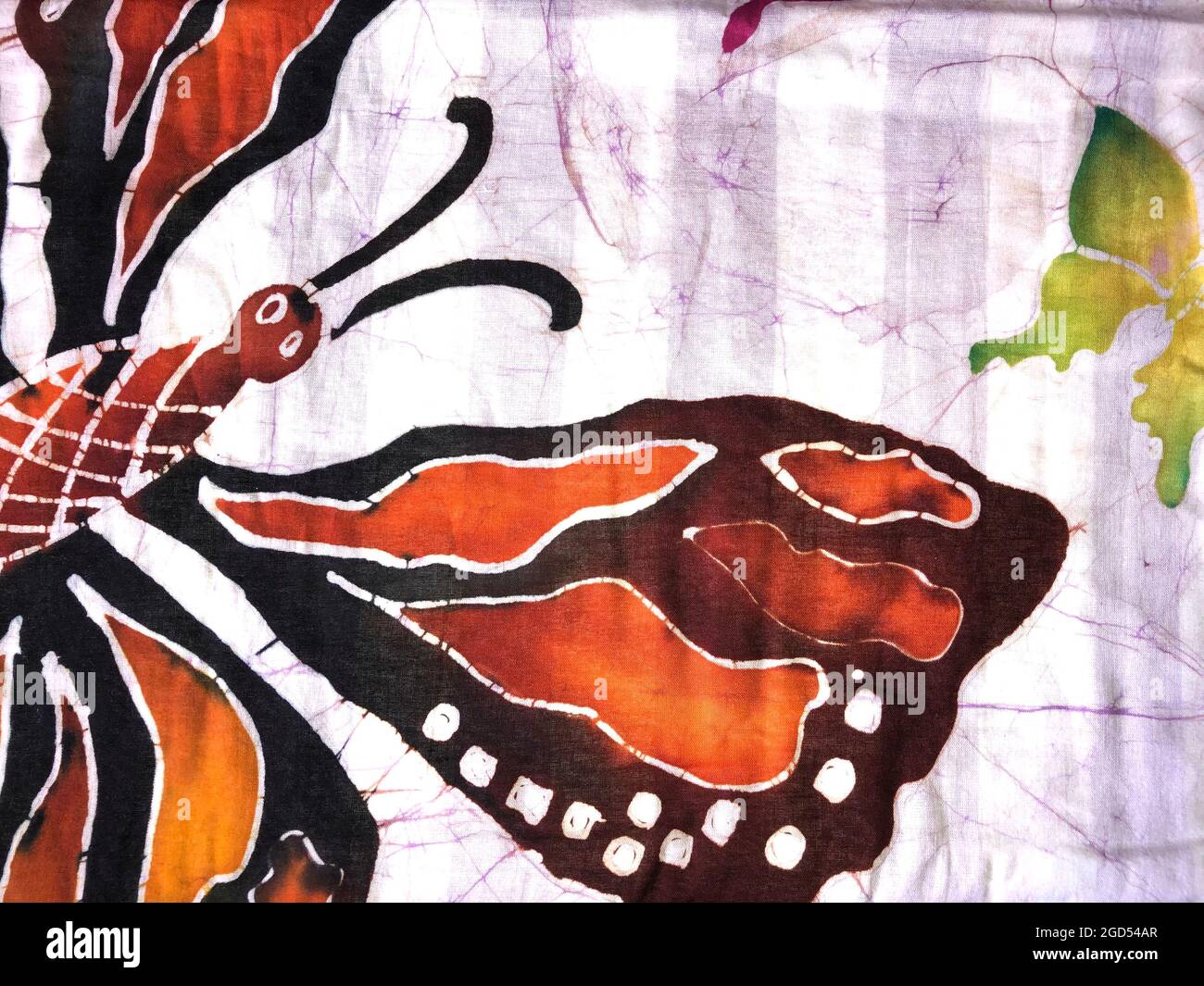 how batik applied fabric, closeup view of fabric painting art with batik technique Stock Photohttps://www.alamy.com/image-license-details/?v=1https://www.alamy.com/how-batik-applied-fabric-closeup-view-of-fabric-painting-art-with-batik-technique-image438362927.html
how batik applied fabric, closeup view of fabric painting art with batik technique Stock Photohttps://www.alamy.com/image-license-details/?v=1https://www.alamy.com/how-batik-applied-fabric-closeup-view-of-fabric-painting-art-with-batik-technique-image438362927.htmlRF2GD54AR–how batik applied fabric, closeup view of fabric painting art with batik technique
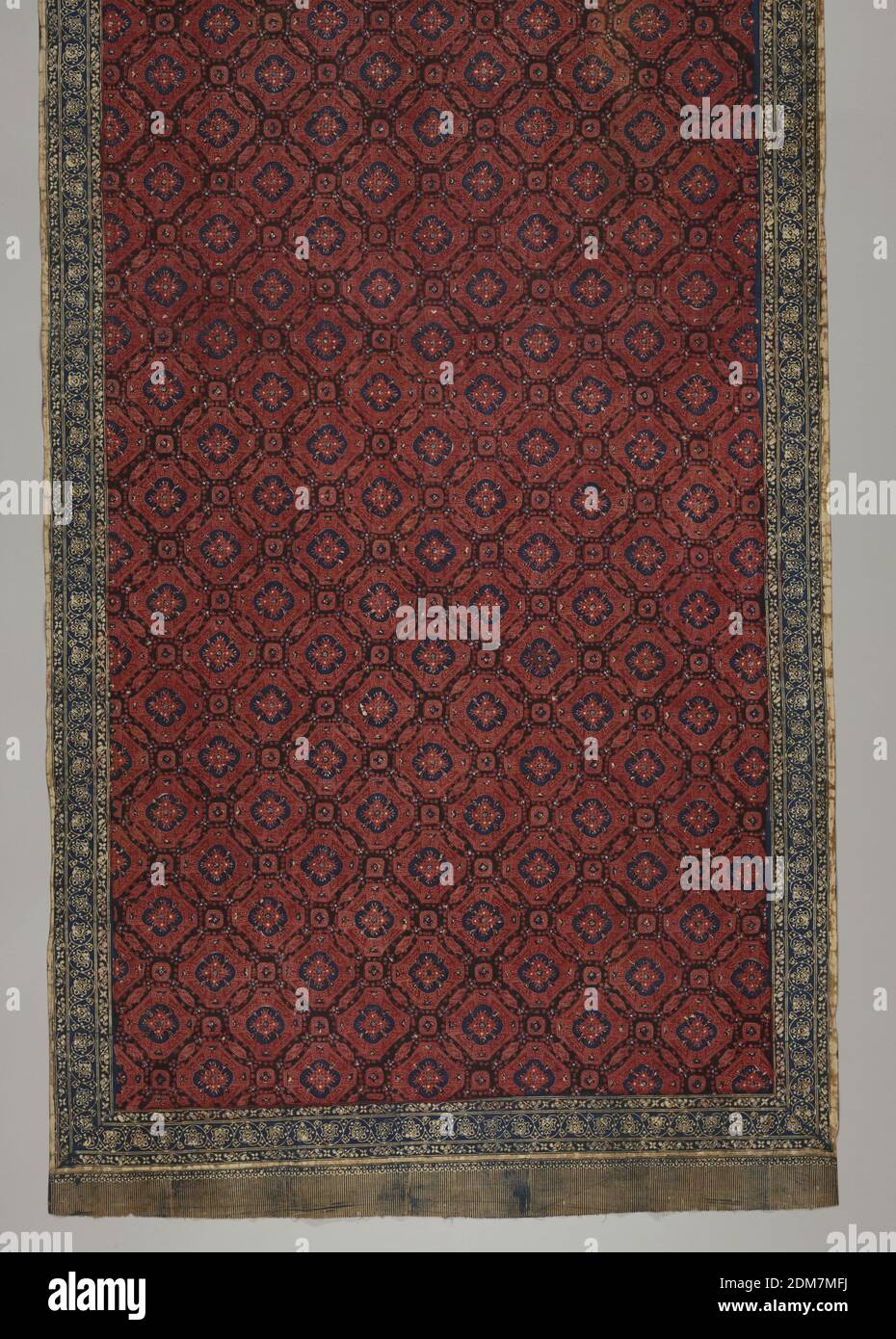 Sarong, Medium: cotton Technique: wax resist dyeing (batik) on plain weave, Red and blue batik sarong. Shows 'ceplokkan' pattern: flowers or blossoms, symmetrically distributed over surface, stylized, star-like,and contained within a geometric shape. Borders show batiked on fringe., Palembang, South Sumatra, Indonesia, 19th century, printed, dyed & painted textiles, Sarong Stock Photohttps://www.alamy.com/image-license-details/?v=1https://www.alamy.com/sarong-medium-cotton-technique-wax-resist-dyeing-batik-on-plain-weave-red-and-blue-batik-sarong-shows-ceplokkan-pattern-flowers-or-blossoms-symmetrically-distributed-over-surface-stylized-star-likeand-contained-within-a-geometric-shape-borders-show-batiked-on-fringe-palembang-south-sumatra-indonesia-19th-century-printed-dyed-painted-textiles-sarong-image391090998.html
Sarong, Medium: cotton Technique: wax resist dyeing (batik) on plain weave, Red and blue batik sarong. Shows 'ceplokkan' pattern: flowers or blossoms, symmetrically distributed over surface, stylized, star-like,and contained within a geometric shape. Borders show batiked on fringe., Palembang, South Sumatra, Indonesia, 19th century, printed, dyed & painted textiles, Sarong Stock Photohttps://www.alamy.com/image-license-details/?v=1https://www.alamy.com/sarong-medium-cotton-technique-wax-resist-dyeing-batik-on-plain-weave-red-and-blue-batik-sarong-shows-ceplokkan-pattern-flowers-or-blossoms-symmetrically-distributed-over-surface-stylized-star-likeand-contained-within-a-geometric-shape-borders-show-batiked-on-fringe-palembang-south-sumatra-indonesia-19th-century-printed-dyed-painted-textiles-sarong-image391090998.htmlRM2DM7MFJ–Sarong, Medium: cotton Technique: wax resist dyeing (batik) on plain weave, Red and blue batik sarong. Shows 'ceplokkan' pattern: flowers or blossoms, symmetrically distributed over surface, stylized, star-like,and contained within a geometric shape. Borders show batiked on fringe., Palembang, South Sumatra, Indonesia, 19th century, printed, dyed & painted textiles, Sarong
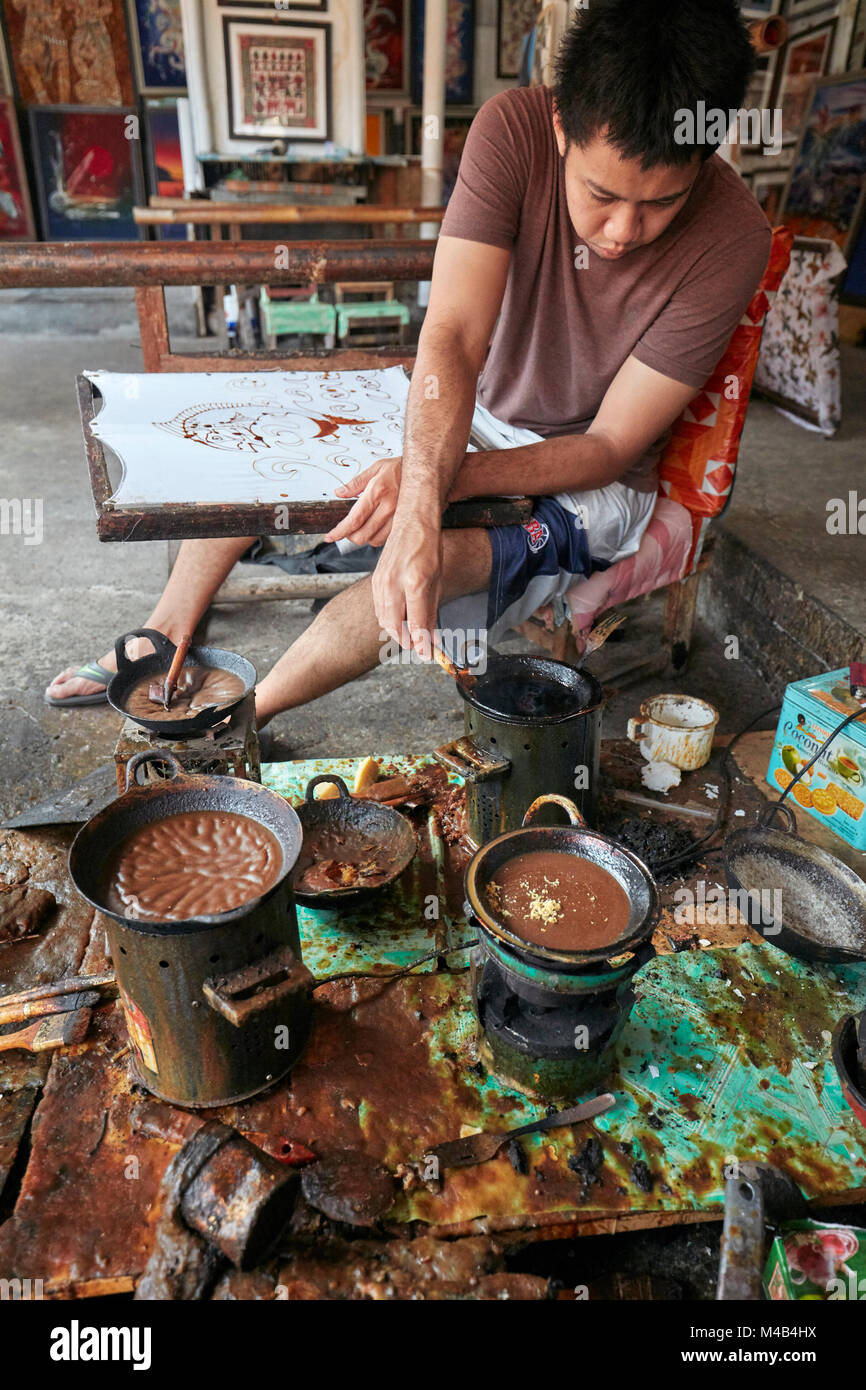 A batik maker works in his workshop at Batik Seno, a gallery in Yogyakarta, Java, Indonesia. Stock Photohttps://www.alamy.com/image-license-details/?v=1https://www.alamy.com/stock-photo-a-batik-maker-works-in-his-workshop-at-batik-seno-a-gallery-in-yogyakarta-174807414.html
A batik maker works in his workshop at Batik Seno, a gallery in Yogyakarta, Java, Indonesia. Stock Photohttps://www.alamy.com/image-license-details/?v=1https://www.alamy.com/stock-photo-a-batik-maker-works-in-his-workshop-at-batik-seno-a-gallery-in-yogyakarta-174807414.htmlRMM4B4HX–A batik maker works in his workshop at Batik Seno, a gallery in Yogyakarta, Java, Indonesia.
 Textile, Medium: silk Technique: cut loops of supplementary warp pile (velvet) in a plain weave foundation; tied-resist dyeing in the warp (ikat) Label: silk cut velvet, warp-dyed (ikat), Small piece of woven velvet with a checkerboard pattern of alternating deep red and gold squares., Central Asia, 19th century, printed, dyed & painted textiles, Textile Stock Photohttps://www.alamy.com/image-license-details/?v=1https://www.alamy.com/textile-medium-silk-technique-cut-loops-of-supplementary-warp-pile-velvet-in-a-plain-weave-foundation-tied-resist-dyeing-in-the-warp-ikat-label-silk-cut-velvet-warp-dyed-ikat-small-piece-of-woven-velvet-with-a-checkerboard-pattern-of-alternating-deep-red-and-gold-squares-central-asia-19th-century-printed-dyed-painted-textiles-textile-image391326329.html
Textile, Medium: silk Technique: cut loops of supplementary warp pile (velvet) in a plain weave foundation; tied-resist dyeing in the warp (ikat) Label: silk cut velvet, warp-dyed (ikat), Small piece of woven velvet with a checkerboard pattern of alternating deep red and gold squares., Central Asia, 19th century, printed, dyed & painted textiles, Textile Stock Photohttps://www.alamy.com/image-license-details/?v=1https://www.alamy.com/textile-medium-silk-technique-cut-loops-of-supplementary-warp-pile-velvet-in-a-plain-weave-foundation-tied-resist-dyeing-in-the-warp-ikat-label-silk-cut-velvet-warp-dyed-ikat-small-piece-of-woven-velvet-with-a-checkerboard-pattern-of-alternating-deep-red-and-gold-squares-central-asia-19th-century-printed-dyed-painted-textiles-textile-image391326329.htmlRM2DMJCM9–Textile, Medium: silk Technique: cut loops of supplementary warp pile (velvet) in a plain weave foundation; tied-resist dyeing in the warp (ikat) Label: silk cut velvet, warp-dyed (ikat), Small piece of woven velvet with a checkerboard pattern of alternating deep red and gold squares., Central Asia, 19th century, printed, dyed & painted textiles, Textile
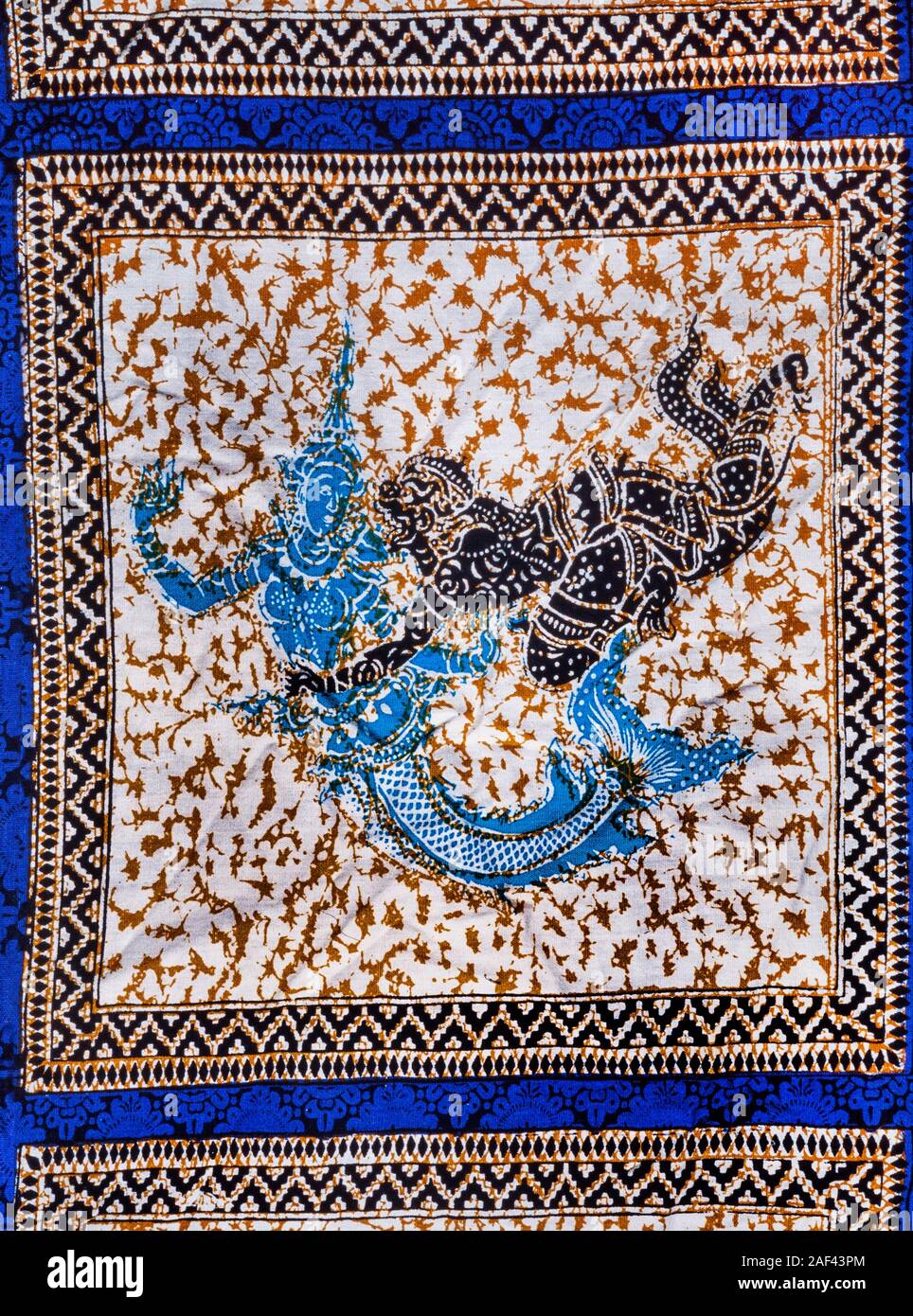 Batik designs, Malaysia Stock Photohttps://www.alamy.com/image-license-details/?v=1https://www.alamy.com/batik-designs-malaysia-image336307628.html
Batik designs, Malaysia Stock Photohttps://www.alamy.com/image-license-details/?v=1https://www.alamy.com/batik-designs-malaysia-image336307628.htmlRM2AF43PM–Batik designs, Malaysia
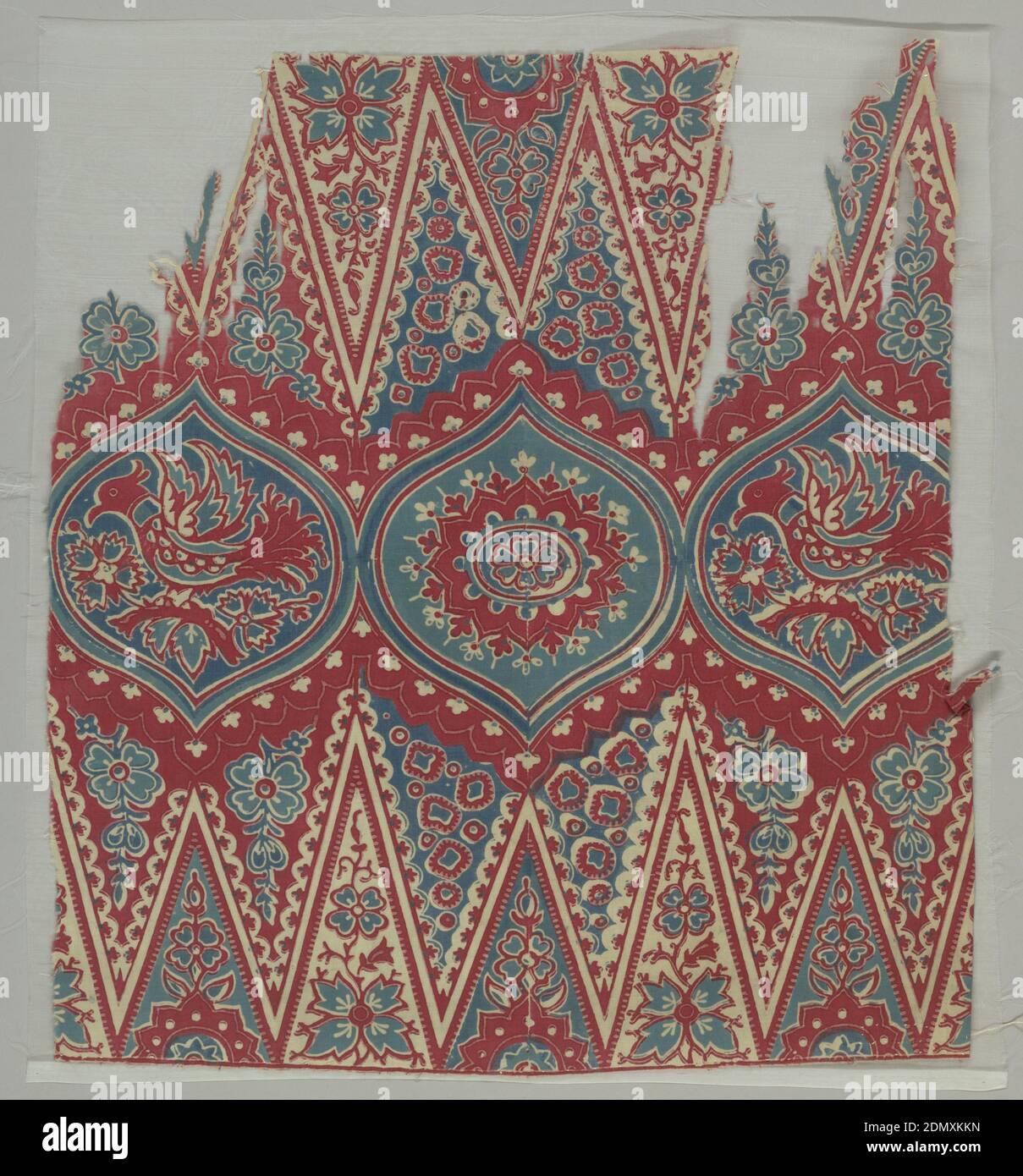 Textile, Medium: cotton Technique: wax resist dyeing (batik) on plain weave, Row of three ogival medallions: middle one with rosette, outer two with crested bird and flowers as well as remnants of deep toothed zigzag border on either side. Much filling decoration. In reds and blues on very fine white cotton ground., Indonesia, 18th–19th century, printed, dyed & painted textiles, Textile Stock Photohttps://www.alamy.com/image-license-details/?v=1https://www.alamy.com/textile-medium-cotton-technique-wax-resist-dyeing-batik-on-plain-weave-row-of-three-ogival-medallions-middle-one-with-rosette-outer-two-with-crested-bird-and-flowers-as-well-as-remnants-of-deep-toothed-zigzag-border-on-either-side-much-filling-decoration-in-reds-and-blues-on-very-fine-white-cotton-ground-indonesia-18th19th-century-printed-dyed-painted-textiles-textile-image391507417.html
Textile, Medium: cotton Technique: wax resist dyeing (batik) on plain weave, Row of three ogival medallions: middle one with rosette, outer two with crested bird and flowers as well as remnants of deep toothed zigzag border on either side. Much filling decoration. In reds and blues on very fine white cotton ground., Indonesia, 18th–19th century, printed, dyed & painted textiles, Textile Stock Photohttps://www.alamy.com/image-license-details/?v=1https://www.alamy.com/textile-medium-cotton-technique-wax-resist-dyeing-batik-on-plain-weave-row-of-three-ogival-medallions-middle-one-with-rosette-outer-two-with-crested-bird-and-flowers-as-well-as-remnants-of-deep-toothed-zigzag-border-on-either-side-much-filling-decoration-in-reds-and-blues-on-very-fine-white-cotton-ground-indonesia-18th19th-century-printed-dyed-painted-textiles-textile-image391507417.htmlRM2DMXKKN–Textile, Medium: cotton Technique: wax resist dyeing (batik) on plain weave, Row of three ogival medallions: middle one with rosette, outer two with crested bird and flowers as well as remnants of deep toothed zigzag border on either side. Much filling decoration. In reds and blues on very fine white cotton ground., Indonesia, 18th–19th century, printed, dyed & painted textiles, Textile
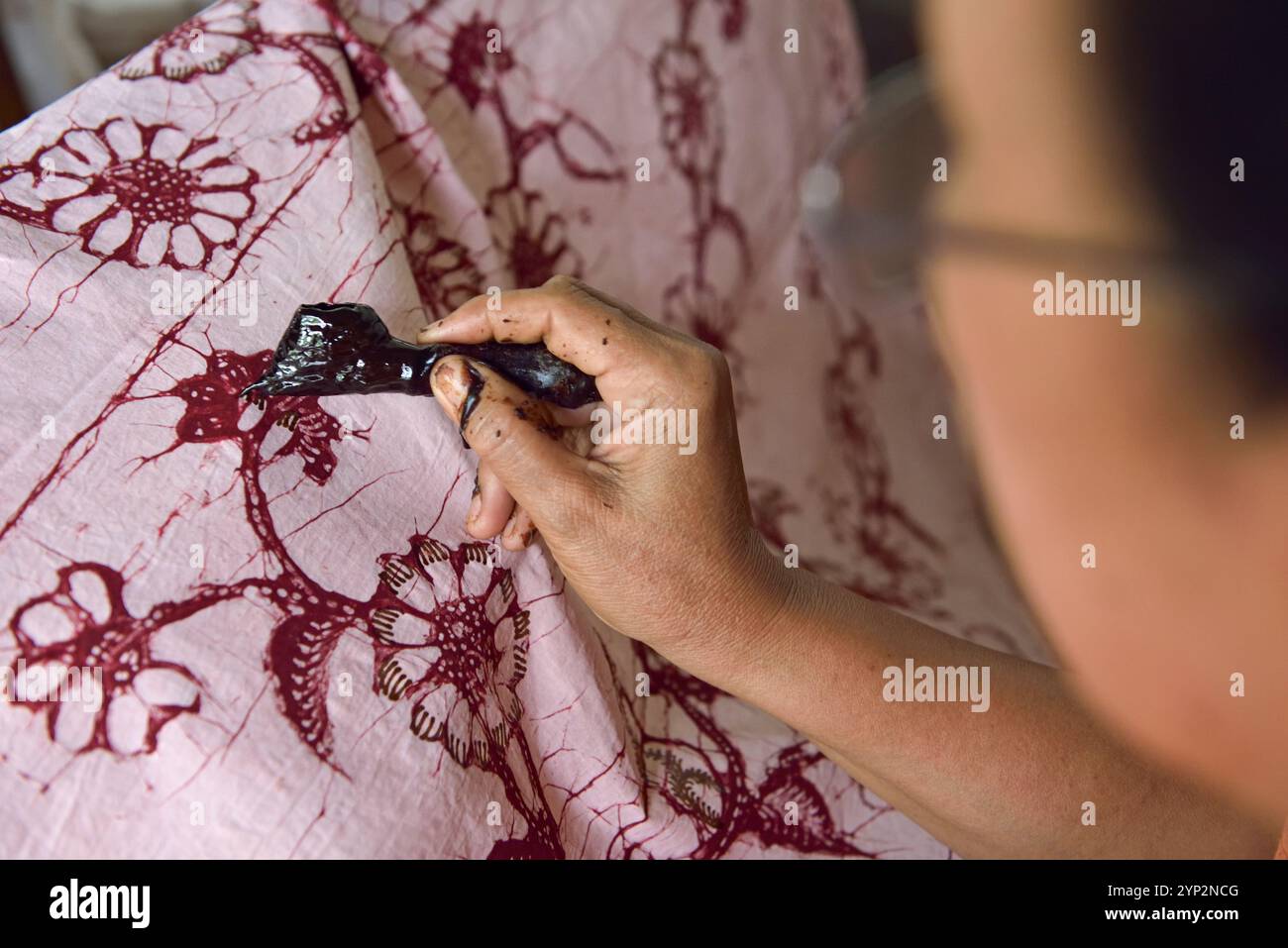 Woman using a pen-like tool (canting) to apply liquid hot wax to create pattern on the fabric before dyeing, workshop of Kidang Mas Batik House, Lasem Stock Photohttps://www.alamy.com/image-license-details/?v=1https://www.alamy.com/woman-using-a-pen-like-tool-canting-to-apply-liquid-hot-wax-to-create-pattern-on-the-fabric-before-dyeing-workshop-of-kidang-mas-batik-house-lasem-image633156400.html
Woman using a pen-like tool (canting) to apply liquid hot wax to create pattern on the fabric before dyeing, workshop of Kidang Mas Batik House, Lasem Stock Photohttps://www.alamy.com/image-license-details/?v=1https://www.alamy.com/woman-using-a-pen-like-tool-canting-to-apply-liquid-hot-wax-to-create-pattern-on-the-fabric-before-dyeing-workshop-of-kidang-mas-batik-house-lasem-image633156400.htmlRF2YP2NCG–Woman using a pen-like tool (canting) to apply liquid hot wax to create pattern on the fabric before dyeing, workshop of Kidang Mas Batik House, Lasem
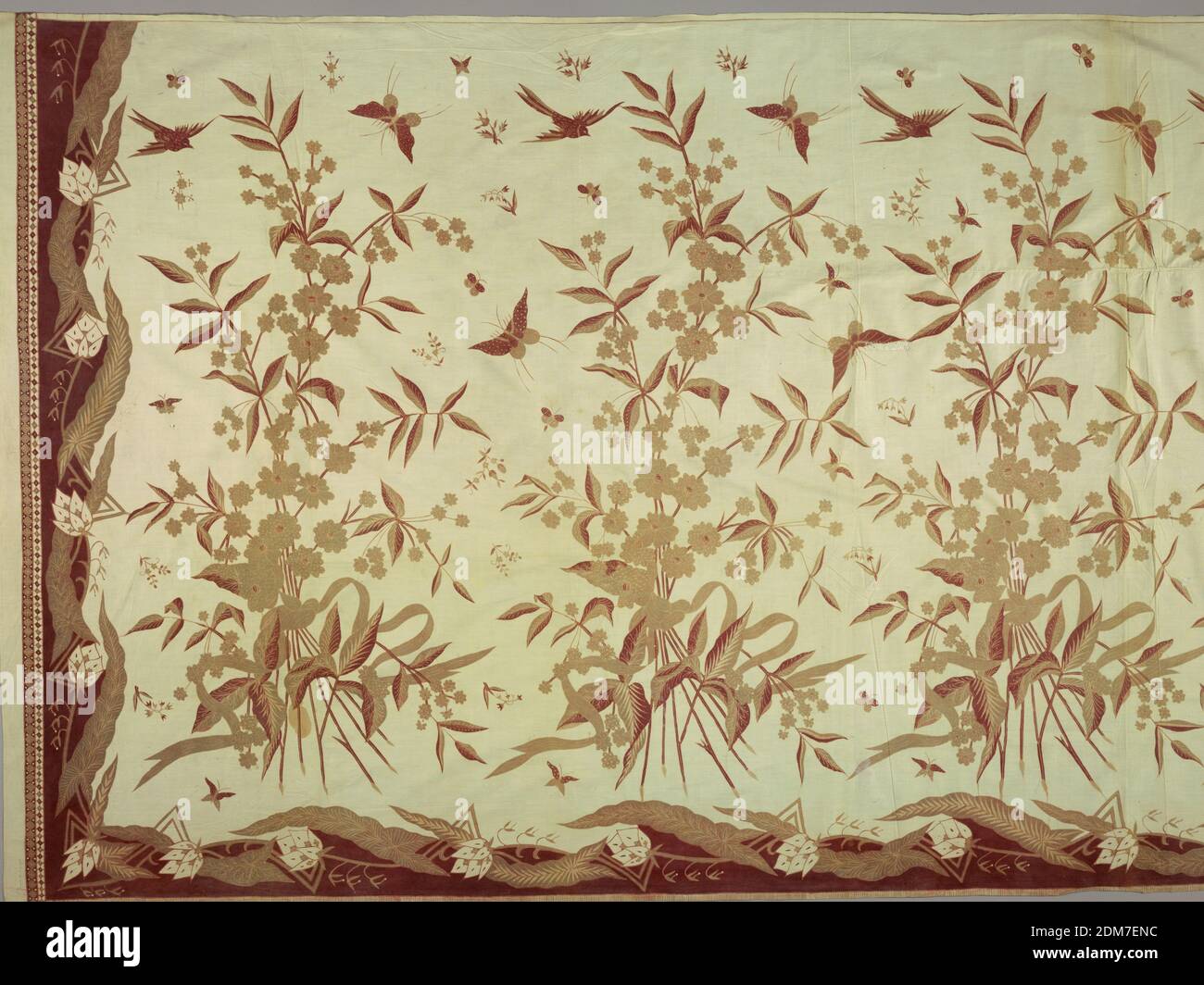 Sarong, Medium: cotton Technique: wax resist dyeing (batik) on plain weave, Cotton batik sarong in white, dark brown, and green. All-over large scale floral pattern and butterflies ('buketan' motif). Scalloped floral borders (a North Javanese batik innovation). Noticable Western influence in pattern, which is typical of batik from the north coast of Java., Indonesia, 19th century, printed, dyed & painted textiles, Sarong Stock Photohttps://www.alamy.com/image-license-details/?v=1https://www.alamy.com/sarong-medium-cotton-technique-wax-resist-dyeing-batik-on-plain-weave-cotton-batik-sarong-in-white-dark-brown-and-green-all-over-large-scale-floral-pattern-and-butterflies-buketan-motif-scalloped-floral-borders-a-north-javanese-batik-innovation-noticable-western-influence-in-pattern-which-is-typical-of-batik-from-the-north-coast-of-java-indonesia-19th-century-printed-dyed-painted-textiles-sarong-image391086456.html
Sarong, Medium: cotton Technique: wax resist dyeing (batik) on plain weave, Cotton batik sarong in white, dark brown, and green. All-over large scale floral pattern and butterflies ('buketan' motif). Scalloped floral borders (a North Javanese batik innovation). Noticable Western influence in pattern, which is typical of batik from the north coast of Java., Indonesia, 19th century, printed, dyed & painted textiles, Sarong Stock Photohttps://www.alamy.com/image-license-details/?v=1https://www.alamy.com/sarong-medium-cotton-technique-wax-resist-dyeing-batik-on-plain-weave-cotton-batik-sarong-in-white-dark-brown-and-green-all-over-large-scale-floral-pattern-and-butterflies-buketan-motif-scalloped-floral-borders-a-north-javanese-batik-innovation-noticable-western-influence-in-pattern-which-is-typical-of-batik-from-the-north-coast-of-java-indonesia-19th-century-printed-dyed-painted-textiles-sarong-image391086456.htmlRM2DM7ENC–Sarong, Medium: cotton Technique: wax resist dyeing (batik) on plain weave, Cotton batik sarong in white, dark brown, and green. All-over large scale floral pattern and butterflies ('buketan' motif). Scalloped floral borders (a North Javanese batik innovation). Noticable Western influence in pattern, which is typical of batik from the north coast of Java., Indonesia, 19th century, printed, dyed & painted textiles, Sarong
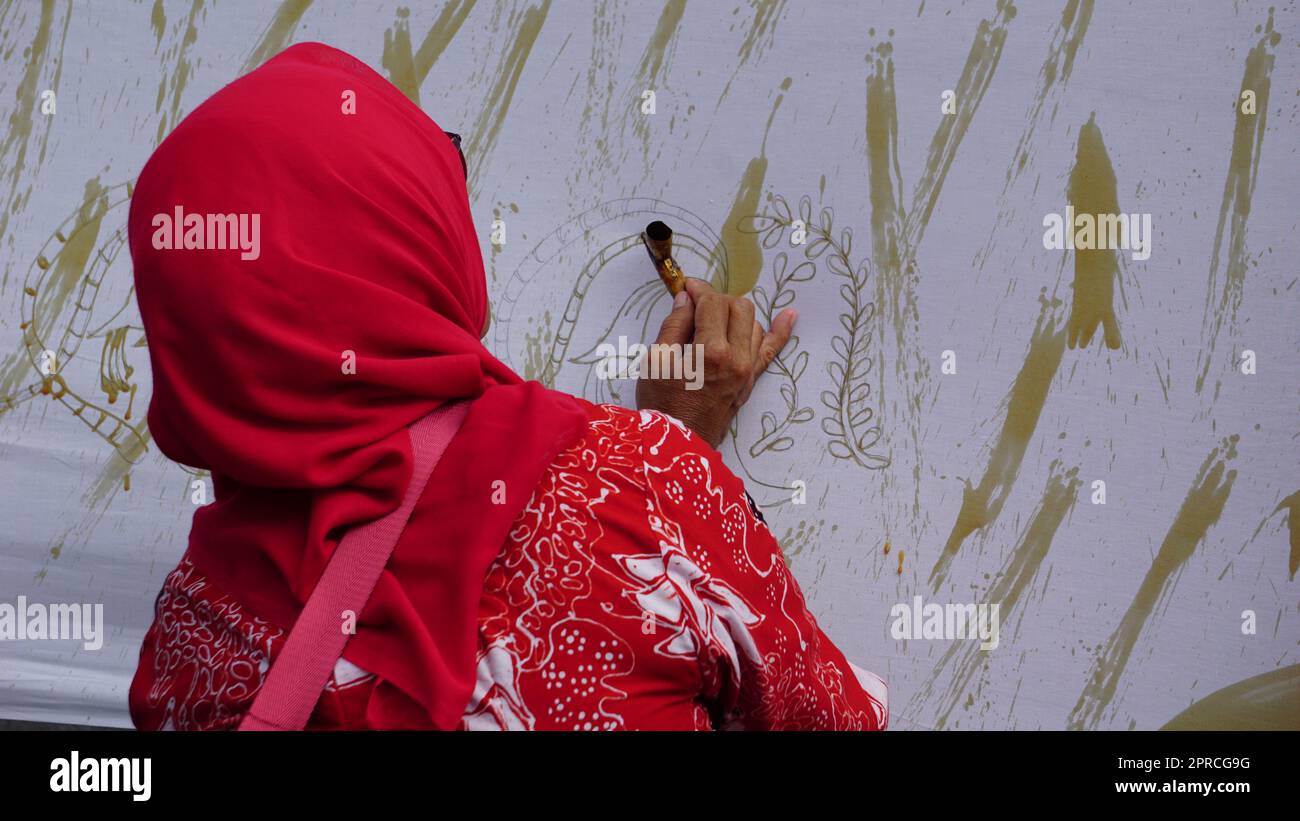 The process of making batik on Festival Batik Keren Blitar. Batik is a handmade ancient art from Indonesia. Produced by technique of wax-resist dyeing Stock Photohttps://www.alamy.com/image-license-details/?v=1https://www.alamy.com/the-process-of-making-batik-on-festival-batik-keren-blitar-batik-is-a-handmade-ancient-art-from-indonesia-produced-by-technique-of-wax-resist-dyeing-image547934732.html
The process of making batik on Festival Batik Keren Blitar. Batik is a handmade ancient art from Indonesia. Produced by technique of wax-resist dyeing Stock Photohttps://www.alamy.com/image-license-details/?v=1https://www.alamy.com/the-process-of-making-batik-on-festival-batik-keren-blitar-batik-is-a-handmade-ancient-art-from-indonesia-produced-by-technique-of-wax-resist-dyeing-image547934732.htmlRF2PRCG9G–The process of making batik on Festival Batik Keren Blitar. Batik is a handmade ancient art from Indonesia. Produced by technique of wax-resist dyeing
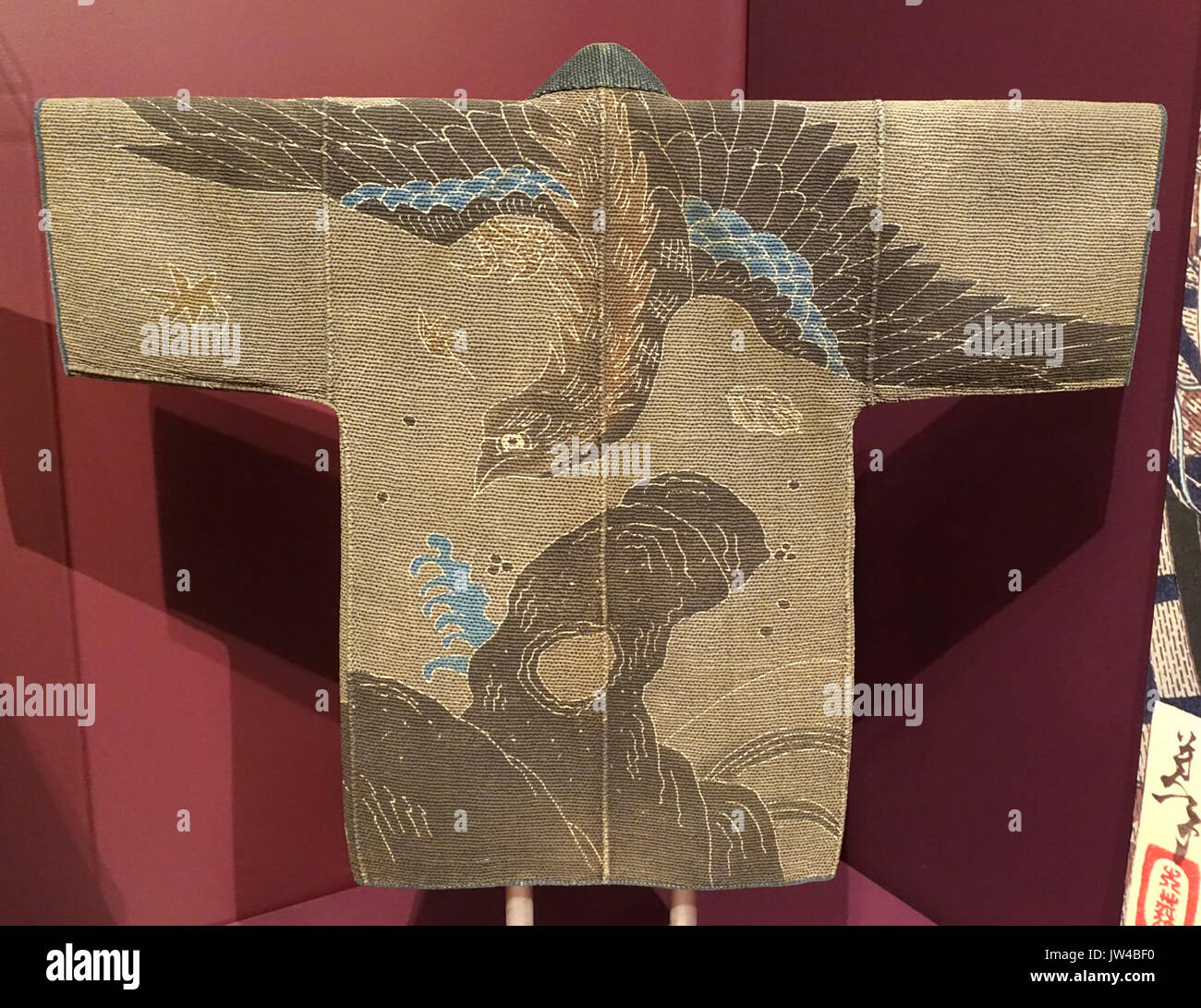 This fireman's coat, originating from Japan during the Late Edo period (1800-1850 AD), features intricate paste resist dyeing techniques. The garment provides insight into the textile craftsmanship and cultural practices of the era. Stock Photohttps://www.alamy.com/image-license-details/?v=1https://www.alamy.com/this-firemans-coat-originating-from-japan-during-the-late-edo-period-image153146196.html
This fireman's coat, originating from Japan during the Late Edo period (1800-1850 AD), features intricate paste resist dyeing techniques. The garment provides insight into the textile craftsmanship and cultural practices of the era. Stock Photohttps://www.alamy.com/image-license-details/?v=1https://www.alamy.com/this-firemans-coat-originating-from-japan-during-the-late-edo-period-image153146196.htmlRMJW4BF0–This fireman's coat, originating from Japan during the Late Edo period (1800-1850 AD), features intricate paste resist dyeing techniques. The garment provides insight into the textile craftsmanship and cultural practices of the era.
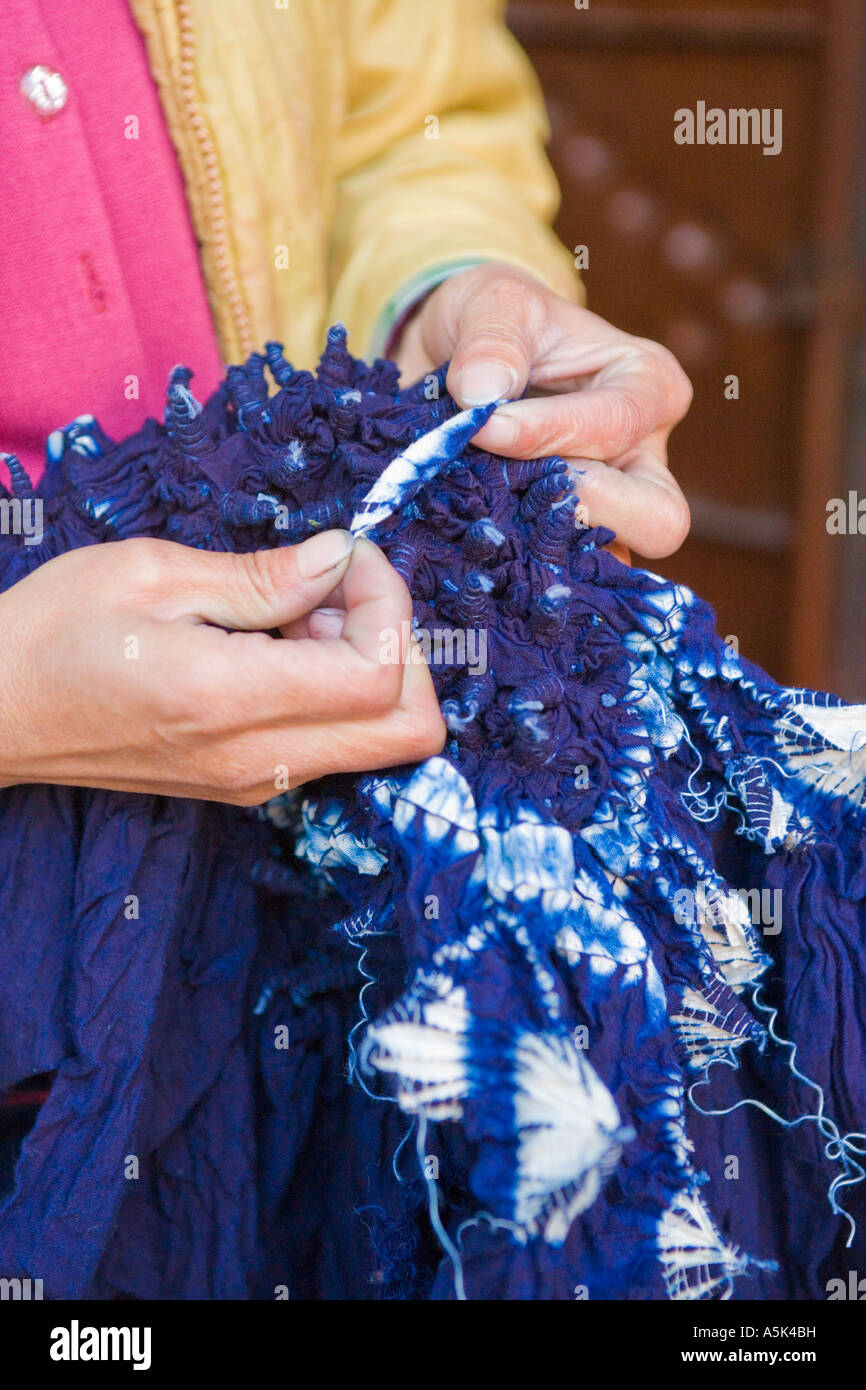 Close up at tie dyeing factory showing indigo dyed item still stitched to resist dyeing JMH2301 Stock Photohttps://www.alamy.com/image-license-details/?v=1https://www.alamy.com/stock-photo-close-up-at-tie-dyeing-factory-showing-indigo-dyed-item-still-stitched-11331844.html
Close up at tie dyeing factory showing indigo dyed item still stitched to resist dyeing JMH2301 Stock Photohttps://www.alamy.com/image-license-details/?v=1https://www.alamy.com/stock-photo-close-up-at-tie-dyeing-factory-showing-indigo-dyed-item-still-stitched-11331844.htmlRMA5K4BH–Close up at tie dyeing factory showing indigo dyed item still stitched to resist dyeing JMH2301
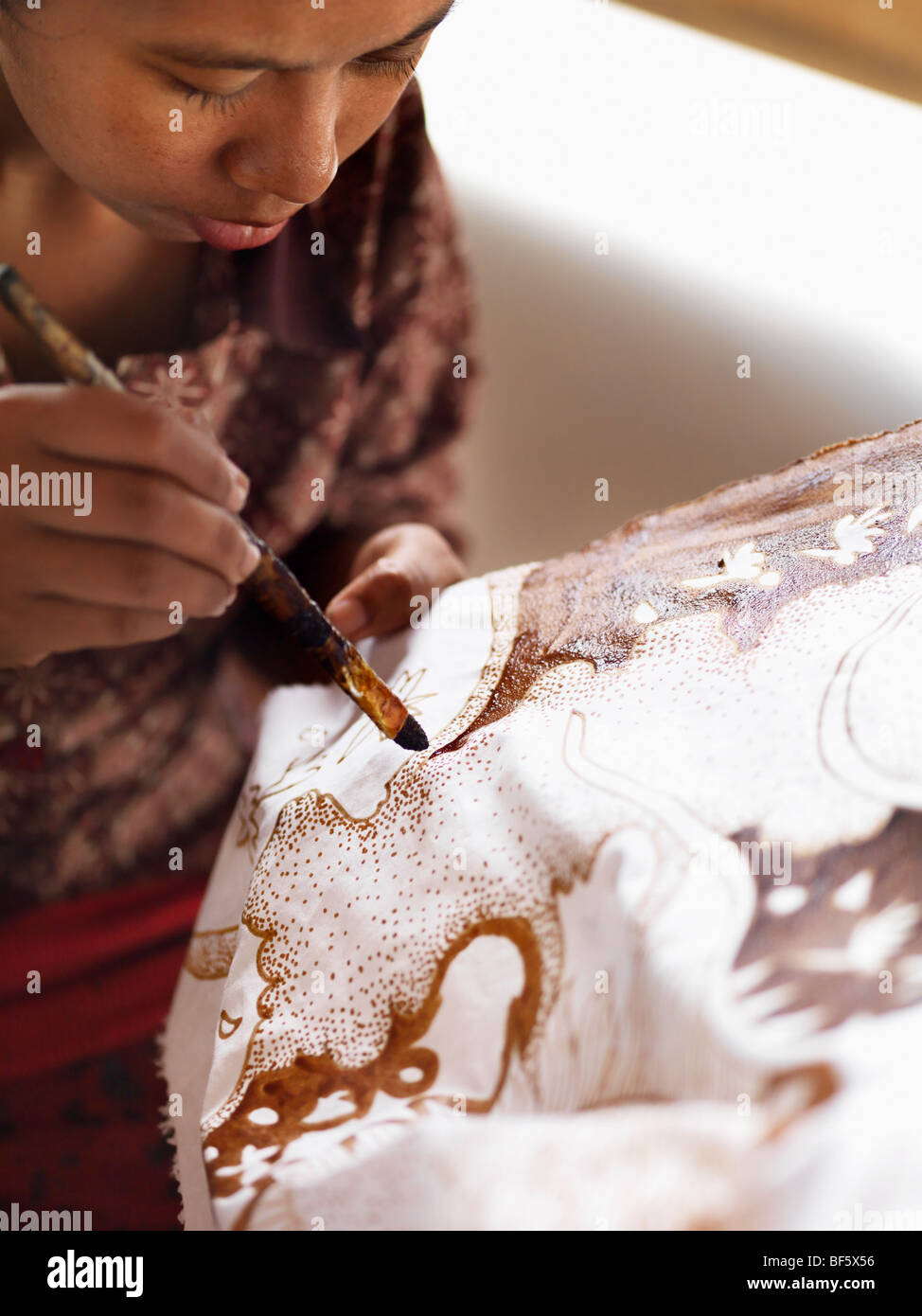 A woman using a wax-resist dyeing technique used on textile, to create a batik print. Stock Photohttps://www.alamy.com/image-license-details/?v=1https://www.alamy.com/stock-photo-a-woman-using-a-wax-resist-dyeing-technique-used-on-textile-to-create-26560498.html
A woman using a wax-resist dyeing technique used on textile, to create a batik print. Stock Photohttps://www.alamy.com/image-license-details/?v=1https://www.alamy.com/stock-photo-a-woman-using-a-wax-resist-dyeing-technique-used-on-textile-to-create-26560498.htmlRMBF5X56–A woman using a wax-resist dyeing technique used on textile, to create a batik print.
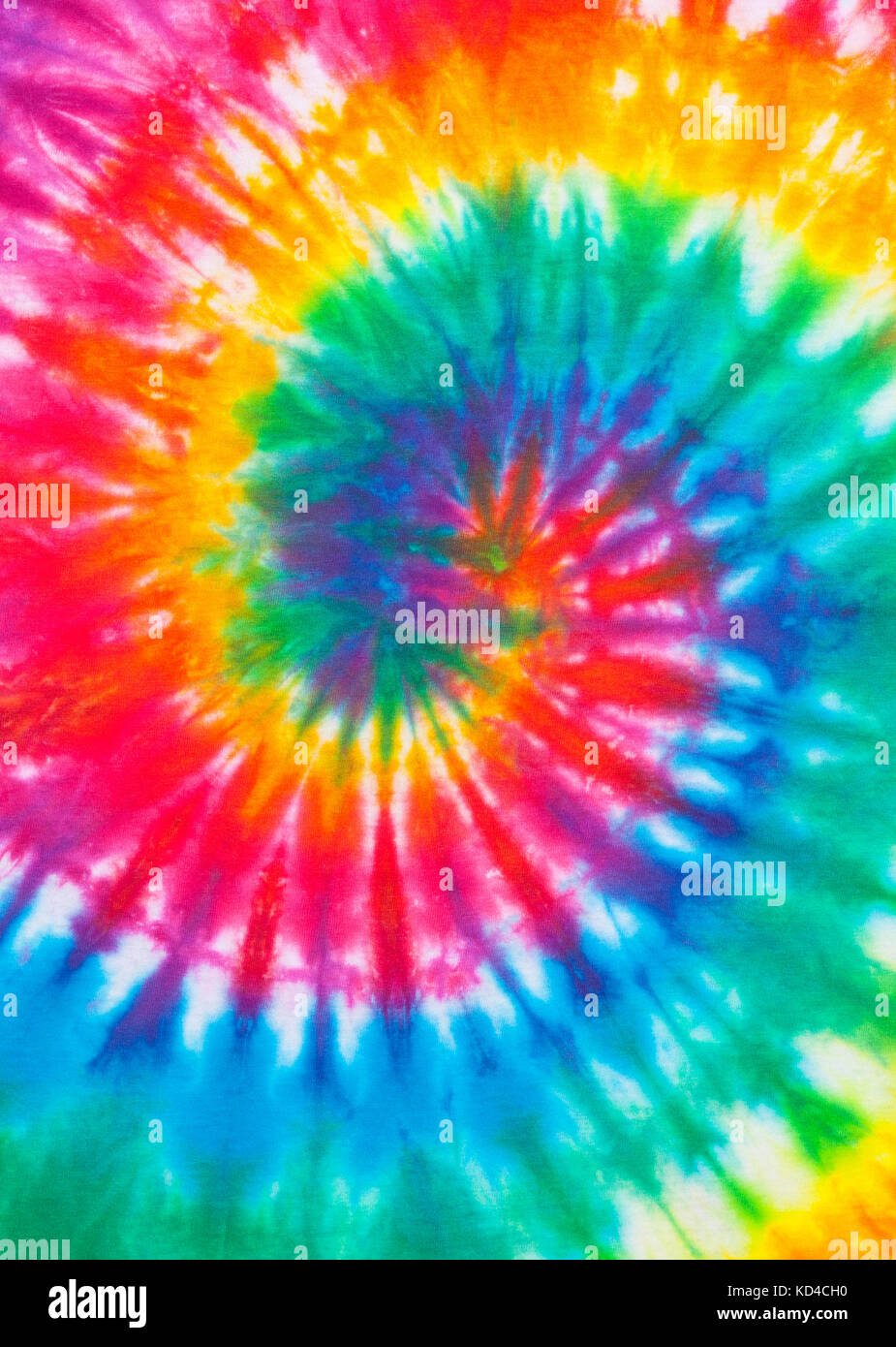 Tie Dye Rainbow Spiral Pattern Close Up. Stock Photohttps://www.alamy.com/image-license-details/?v=1https://www.alamy.com/stock-image-tie-dye-rainbow-spiral-pattern-close-up-162981532.html
Tie Dye Rainbow Spiral Pattern Close Up. Stock Photohttps://www.alamy.com/image-license-details/?v=1https://www.alamy.com/stock-image-tie-dye-rainbow-spiral-pattern-close-up-162981532.htmlRFKD4CH0–Tie Dye Rainbow Spiral Pattern Close Up.
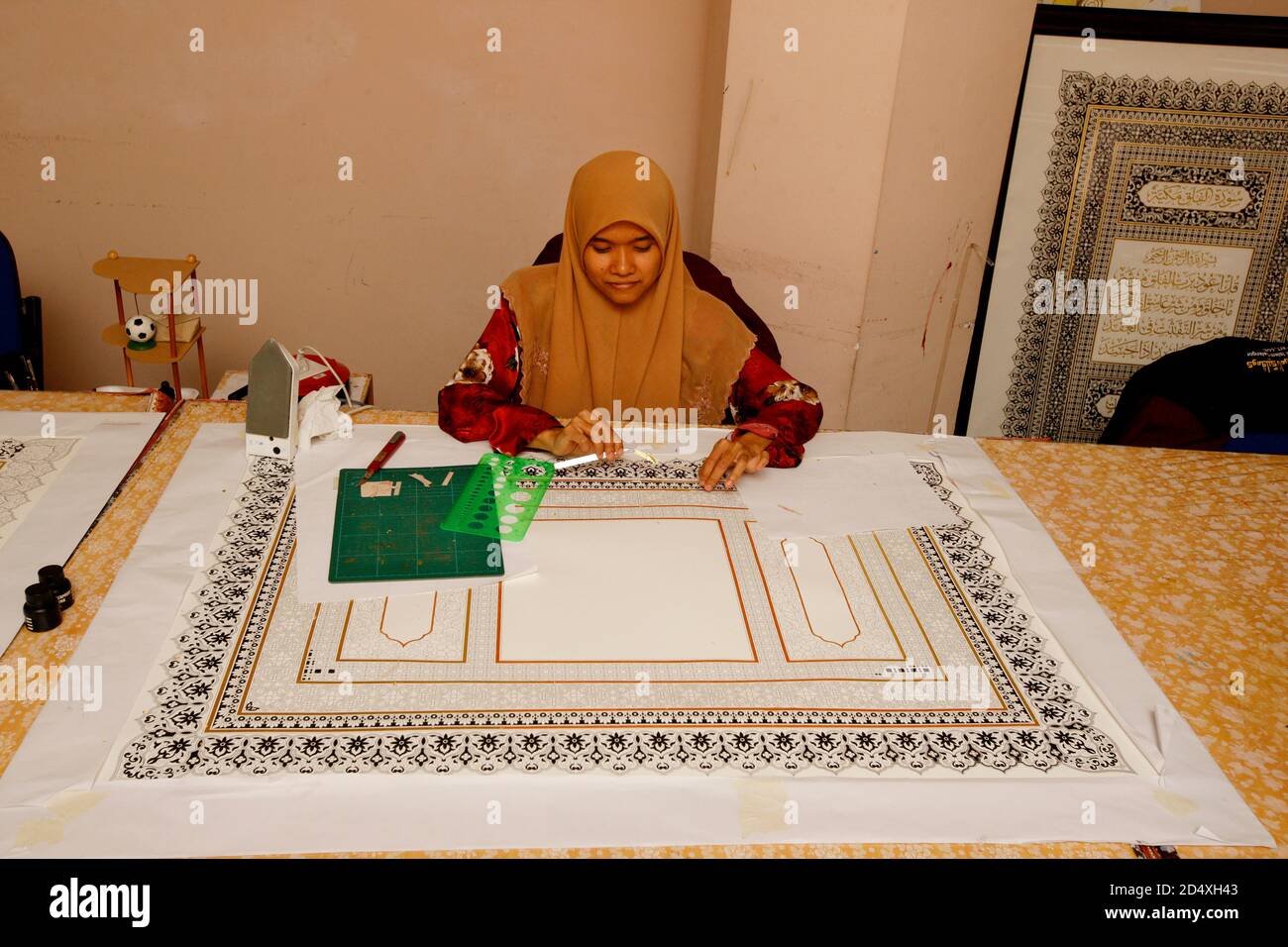 Malaysia Stock Photohttps://www.alamy.com/image-license-details/?v=1https://www.alamy.com/malaysia-image381670915.html
Malaysia Stock Photohttps://www.alamy.com/image-license-details/?v=1https://www.alamy.com/malaysia-image381670915.htmlRM2D4XH43–Malaysia
 Red and black handmade Easter Pysanka eggs. Ukrainian pysanky decorated with wax-resist dyeing technique. White wooden background Stock Photohttps://www.alamy.com/image-license-details/?v=1https://www.alamy.com/red-and-black-handmade-easter-pysanka-eggs-ukrainian-pysanky-decorated-with-wax-resist-dyeing-technique-white-wooden-background-image396720607.html
Red and black handmade Easter Pysanka eggs. Ukrainian pysanky decorated with wax-resist dyeing technique. White wooden background Stock Photohttps://www.alamy.com/image-license-details/?v=1https://www.alamy.com/red-and-black-handmade-easter-pysanka-eggs-ukrainian-pysanky-decorated-with-wax-resist-dyeing-technique-white-wooden-background-image396720607.htmlRF2E1C553–Red and black handmade Easter Pysanka eggs. Ukrainian pysanky decorated with wax-resist dyeing technique. White wooden background
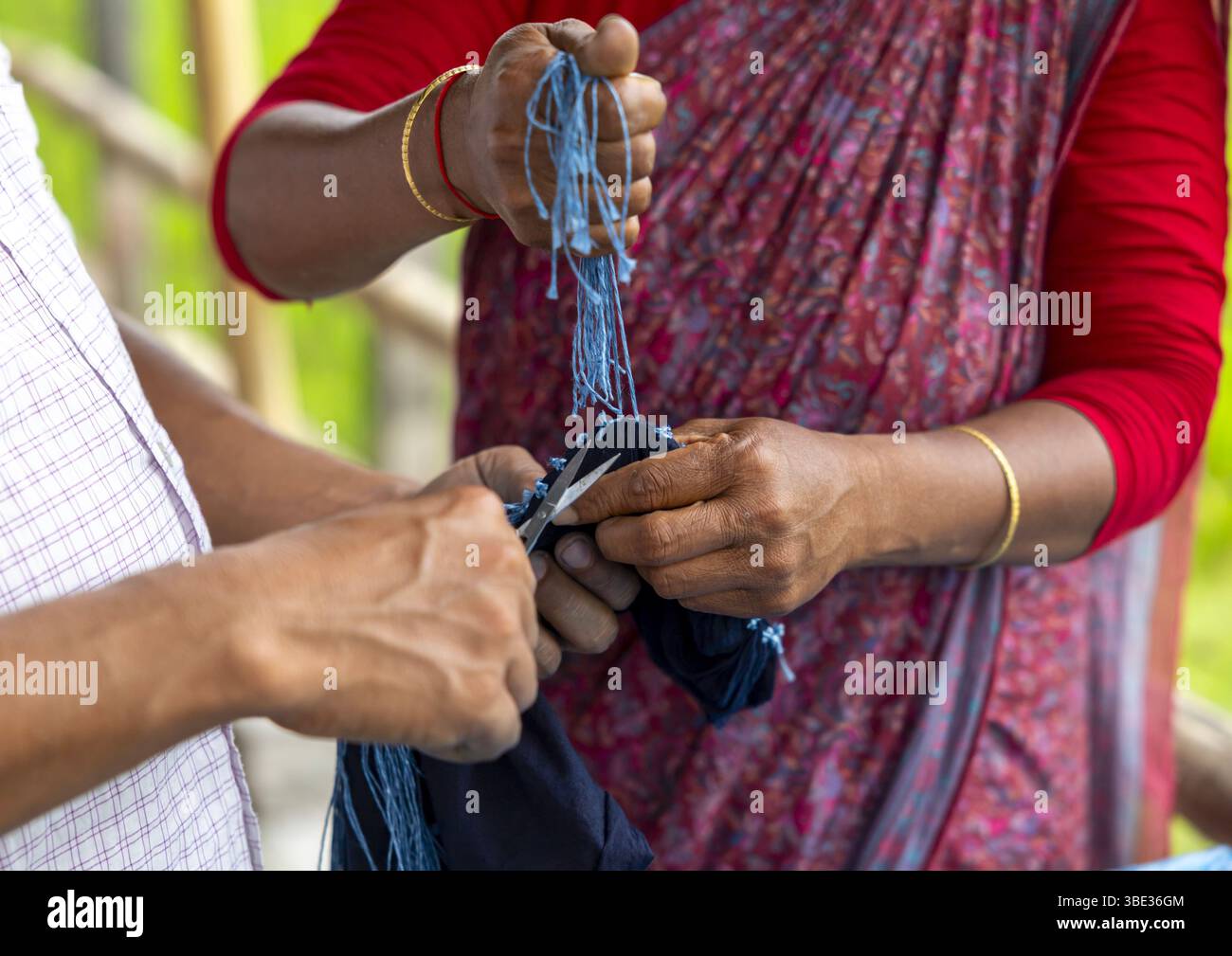 Shawl made with indigo tie-dye resist dyeing technique in Living Blue, Rangpur Division, Goalpara, Bangladesh Stock Photohttps://www.alamy.com/image-license-details/?v=1https://www.alamy.com/shawl-made-with-indigo-tie-dye-resist-dyeing-technique-in-living-blue-rangpur-division-goalpara-bangladesh-image679880564.html
Shawl made with indigo tie-dye resist dyeing technique in Living Blue, Rangpur Division, Goalpara, Bangladesh Stock Photohttps://www.alamy.com/image-license-details/?v=1https://www.alamy.com/shawl-made-with-indigo-tie-dye-resist-dyeing-technique-in-living-blue-rangpur-division-goalpara-bangladesh-image679880564.htmlRM3BE36GM–Shawl made with indigo tie-dye resist dyeing technique in Living Blue, Rangpur Division, Goalpara, Bangladesh
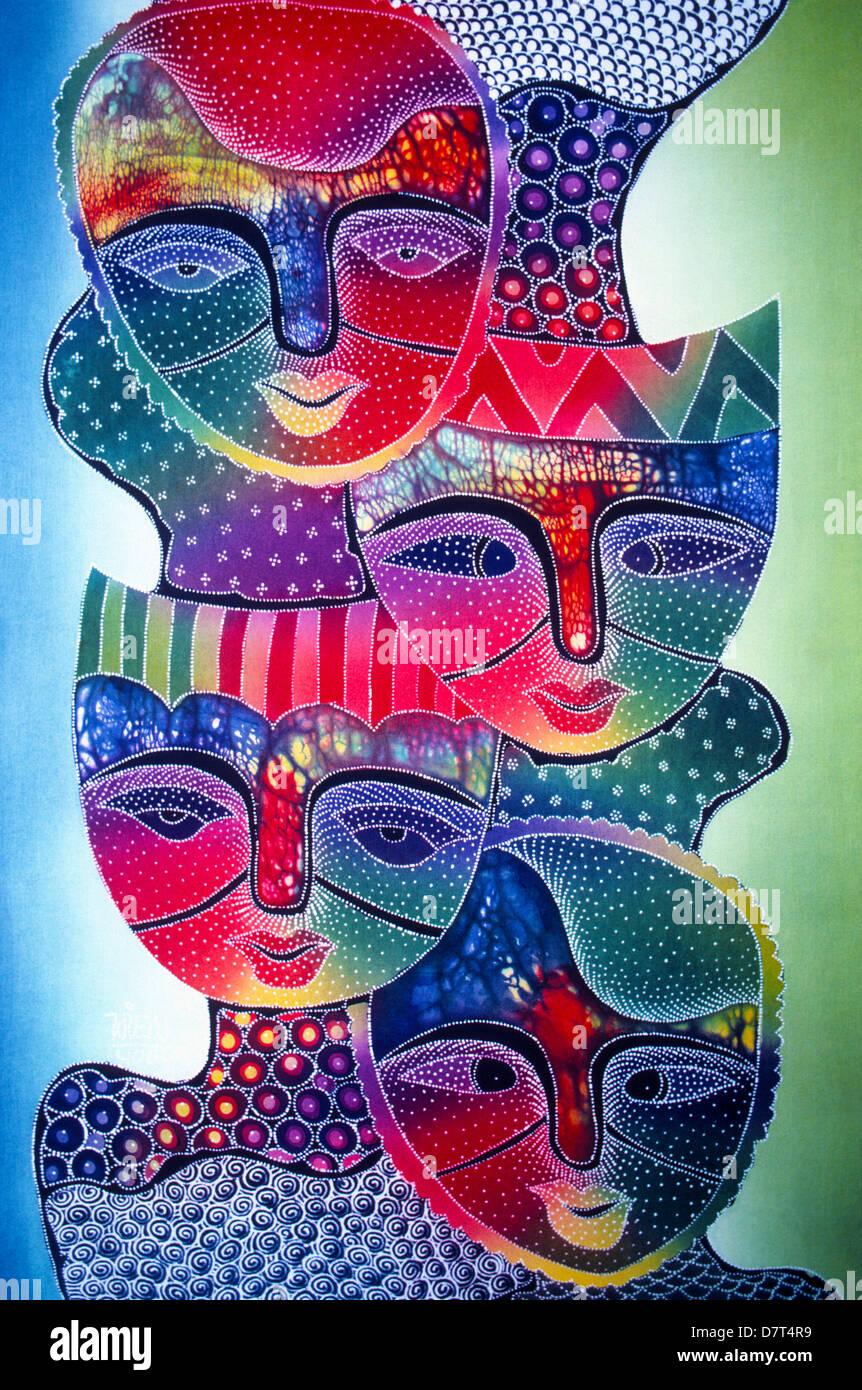 Indonesian artists use the Javanese wax-resist dyeing technique to create batik textiles with modern designs and vivid colors. Stock Photohttps://www.alamy.com/image-license-details/?v=1https://www.alamy.com/stock-photo-indonesian-artists-use-the-javanese-wax-resist-dyeing-technique-to-56464333.html
Indonesian artists use the Javanese wax-resist dyeing technique to create batik textiles with modern designs and vivid colors. Stock Photohttps://www.alamy.com/image-license-details/?v=1https://www.alamy.com/stock-photo-indonesian-artists-use-the-javanese-wax-resist-dyeing-technique-to-56464333.htmlRMD7T4R9–Indonesian artists use the Javanese wax-resist dyeing technique to create batik textiles with modern designs and vivid colors.